
WORLD
ENERGY
TRANSITIONS
OUTLOOK
1. 5° C PATHWAY

2
WORLD ENERGY
TRANSITIONS OUTLOOK
2
WORLD ENERGY
TRANSITIONS OUTLOOK
ABOUT IRENA
The International Renewable Energy Agency (IRENA) serves as the principal platform
for international co-operation, a centre of excellence, a repository of policy, technology,
resource and financial knowledge, and a driver of action on the ground to advance the
transformation of the global energy system. A global intergovernmental organisation
established in 2011, IRENA promotes the widespread adoption and sustainable use of all
forms of renewable energy, including bioenergy, geothermal, hydropower, ocean, solar and
wind energy, in the pursuit of sustainable development, energy access, energy security, and
low-carbon economic growth and prosperity. www.irena.org
© IRENA 2021
Unless otherwise stated, material in this publication may be freely used, shared, copied,
reproduced, printed and/or stored, provided that appropriate acknowledgement is given of IRENA
as the source and copyright holder. Material in this publication that is attributed to third parties
may be subject to separate terms of use and restrictions, and appropriate permissions from these
third parties may need to be secured before any use of such material.
ISBN: 978-92-9260-334-2
CITATION
IRENA (2021), World Energy Transitions Outlook: 1.5°C Pathway, International Renewable Energy
Agency, Abu Dhabi.
Available for download: www.irena.org/publications
For further information or to provide feedback: info@irena.org
DISCLAIMER
This publication and the material herein are provided “as is”. All reasonable precautions have been
taken by IRENA to verify the reliability of the material in this publication. However, neither IRENA
nor any of its officials, agents, data or other third-party content providers provides a warranty
of any kind, either expressed or implied, and they accept no responsibility or liability for any
consequence of use of the publication or material herein.
The information contained herein does not necessarily represent the views of all Members of
IRENA. The mention of specific companies or certain projects or products does not imply that they
are endorsed or recommended by IRENA in preference to others of a similar nature that are not
mentioned. The designations employed, and the presentation of material herein, do not imply the
expression of any opinion on the part of IRENA concerning the legal status of any region, country,
territory, city or area or of its authorities, or concerning the delimitation of frontiers or boundaries.

WORLD
ENERGY
TRANSITIONS
OUTLOOK
3
ACKNOWLEDGEMENTS
This publication was prepared by IRENA’s Renewable Energy Roadmap (REmap), Policy, Finance
and Socio-economics teams. The 1.5°C Scenario including a technology pathway and investment
needs, was developed by Dolf Gielen, Ricardo Gorini, Rodrigo Leme and Gayathri Prakash, with
significant support and contributions from Nicholas Wagner, Luis Janeiro, Maisarah Abdul Kadir,
Sean Collins and Elisa Asmelash. The finance, policy and socio-economic analyses were developed
by Rabia Ferroukhi, Diala Hawila, Divyam Nagpal, Costanza Strinati, Ulrike Lehr, and Xavier Garcia
Casals. This publication benefited from insights and contributions by Elizabeth Press who also
developed the Executive Summary.
Valuable input, support and comments were provided by IRENA experts: Paul Durrant, Seungwoo
Kang, Karan Kochhar, Martina Lyons, Trish Mkutchwa, Carlos Ruiz (end-use and bioenergy),
Emanuele Taibi, Herib Blanco , Raul Miranda, Carlos Fernandez (power system transformation and
hydrogen), Francisco Boshell, Arina Anise, Elena Ocenic (innovation and technology standards),
Roland Roesch, Gabriel Castellanos, Gayathri Nair, Barbara Jinks (grid integration, greening the gas
and shipping), Asami Miketa, Pablo Carvajal (power sector investment planning), Michael Taylor
(renewable energy cost status and outlook), Simon Benmarraze, Paula Nardone, Josefine Axelsson
(Renewable Energy Markets and Technology), Sandra Lozo and Kingsmill Bond (renewable
energy finance), Emanuele Bianco (hydrogen policy), Sara Pizzinato (power sector restructuring),
Jinlei Feng (end-use policy), Stephanie Weckend and Kelly Tai (community energy and circular
economy), Sufyan Diab (targets and NDCs), Michael Renner, Celia García-Baños and Bishal Parajuli
(labour markets and socio-economics), Samah Elsayed (education and skills), Anastasia Kefalidou,
Kathleen Daniel, Claire Kiss and Waiman Tsang (planning and programme).
Modelling of the funding structure of the energy transition was developed with the support of the
Boston Consulting Group (BCG). Macro-econometric modelling (E3ME) results benefited from the
support of Cambridge Econometrics (CE).
IRENA appreciates the insights and comments provided by Michael Hackethal, Ann-Katrin Siekemeier
and Linus Herzig from the German Federal Ministry of Economics and Technology (BMWi), Ruud
Kempener, European Commission Directorate General for Energy (ENER) and Deger Saygin (consultant).
Valuable support and inputs were also provided by Laura Secada Daly. The publication,
communications and editorial support were provided by Stephanie Clarke, Daria Gazzola, Nicole
Bockstaller, Manuela Stefanides and Abdullah Abou Ali. The report was copy-edited by Steven B.
Kennedy. The graphic design was done by weeks.de Werbeagentur GmbH.
IRENA is grateful for the generous support of the Federal Ministry for Economic Affairs and
Energy of Germany, which made the publication of this document a reality.

4
WORLD ENERGY
TRANSITIONS OUTLOOK
We have no time. The window is closing and the pathway to a net zero future is narrowing. This was
the message I delivered plainly and unambiguously when we released the World Energy Transitions
Outlook preview at the Berlin Energy Transitions Dialogue earlier this year. Science is clear: 45% of
global greenhouse gas emissions from 2010 levels must be reduced by 2030. Unfortunately, the
recent trends show that the gap between where we are and where we should be is widening. We are
on the wrong path, and we need to change the course now.
The choices we make in the coming years will have a far-reaching impact. They could bring us on a path
toward the goals we set out in 2015 when we adopted the highly consequential international agreements
on sustainable development and climate change. Or they could take us in the opposite direction to
further warming, with profound and irreversible economic and humanitarian consequences.
It is unwise to make predictions or pre-empt outcomes at uncertain times. But several trends are
shaping an unfolding energy transition and giving an indication of its direction. First, the costs of
renewable technologies have plummeted to the point that new fossil-based electricity is no longer
an attractive option. Second, the progress in the power sector is spilling over to end uses, allowing
a re-imagining of possibilities with the abundance of renewable options at hand. Third, a consensus
has formed that an energy transition grounded in renewable sources of energy and efficient
technologies is the only way to give us a fighting chance of limiting global warming by 2050 to 1.5°C.
Only a few years ago, the renewables-centred approach espoused by IRENA was considered too
progressive, idealistic or even unrealistic. Today, our vision has become mainstream, and accepted
as the only realistic option for a climate-safe world. And this is reflected in the growing number of
commitments to net zero strategies by countries in all corners of the world, creating unprecedented
political momentum for a transformative change.
IRENA’s World Energy Transitions Outlook outlines the avenues to take us out of the climate crisis
toward a resilient and more equitable world. It clearly shows the options we have today and what
gaps need to be filled. The analysis and options presented prioritise existing emission-reduction
solutions and those with the highest chance to become viable in the coming years. It does not bet on
unproven technologies or pending inventions but encourages much-needed innovation to perfect
and advance the fastest path to emission reduction.
The Outlook offers a compelling path for decarbonising all energy uses, with electrification and
energy efficiency as primary drivers, enabled by renewables, green hydrogen and sustainable
modern bioenergy. But a scenario and its assumptions, however rigorous and comprehensive,
are only an instrument to inform policy making. To translate this vision of the energy future into
reality, we need to transcend the limits of the existing infrastructure created for the fuels of the
past. And these decisions are not made in a vacuum. Economic and human development goals,
environmental concerns, and financial avenues must all be reconciled.
FOREWORD

5
It is in this context that IRENA brings its unique value.
The Outlook shows that, when we look beyond the narrow confines of energy supply, a renewables-
based transition unlocks a range of valuable benefits. The Outlook thus presents the policy
frameworks necessary to advance a transition that is just and inclusive. It provides an improved
understanding of structural changes and offers a quantitative framework for impacts such as gross
domestic product (GDP), employment and welfare. The report also examines funding structures to
show the necessary shift in capital markets.
And this knowledge provides the basis for IRENA to support countries in realising their priorities and
turning their strategies into action. With our 164 Members, we see how collective action can drive
progress worldwide and where overarching needs and gaps may exist.
This global reach is what gives the Agency the credibility - and privilege - to support international
co-operation across the gamut of energy transition issues to help countries learn from each other
and tap into the vast expertise of the Agency. And we are actively working with partners, including
the private sector, to provide a dynamic platform that drives action, foresighted planning, holistic
policy making and investment at scale.
The demands of our time are great and full of uncertainty. We are entering a new era of change,
one in which energy transformation will drive economic transformation. This change is bringing
unprecedented new possibilities to revitalise economies and lift people out of poverty. But the task
ahead is daunting. I hope that this Outlook provides a fresh view on how to turn today’s energy
problems into tomorrow’s solutions.
Our shared future will only be bright if we move together, taking everyone along towards a more
resilient, equal, and just world.
Francesco La Camera
Director-General, IRENA

6
WORLD ENERGY
TRANSITIONS OUTLOOK
TABLE OF CONTENTS
Acknowledgements .........03
Foreword .................04
Executive Summary ..........16
A Way Forward ............250
References ................ 252
ANNEX A
Sector-specific transition
strategies .................260
References Annex A ........ 295
ANNEX B
Socio-economic footprint
of the transition ...........297
LEVERAGING THE COMPETITIVENESS
OF RENEWABLES TO HASTEN THE
ENERGY TRANSITION AND MINIMISE
CLIMATE CHANGE ...............38
1.1
Energy transition trends .......40
1.2
The evolving policy landscape ..47
1.3
Renewable energy investments ..48
1.4
Jobs ........................54
1.5
Outlook for achieving
the 1.5°C goal ................57
1.6
Conclusion .................. 61
TECHNOLOGICAL AVENUES
TO CLIMATE TARGETS
............64
2.1
Contextualising the
1.5°C climate pathway .........66
2.2
Achieving climate targets
under the 1.5°C Scenario ......72
2.3
Comparison of energy
scenarios .................... 91
2.4
Conclusion ..................94
01
02

7
INVESTMENT NEEDS AND FINANCING
FOR THE ENERGY TRANSITION ....96
3.1
New investment priorities in
the 1.5°C Scenario ............99
3.2
Funding structures for a
climate safe 1.5°C future ......106
3.3
The impact of the energy
transition on financing risks
and capital pools ............ 122
3.4
Conclusion ................. 127
COMPREHENSIVE POLICY
FRAMEWORK FOR THE ENERGY
TRANSITION
................... 128
4.1
Cross-cutting policies enabling
the energy transition ........ 133
4.2
Policies to support the
technological avenues of the
energy transition ............149
4.3
Policies for structural change
and a just transition .........180
4.4
Holistic global policy
framework ..................194
4.5
Conclusion ................. 197
SOCIO-ECONOMIC IMPACTS OF THE
ENERGY TRANSITION
............ 198
5.1
The climate policy basket .....201
5.2
Socio-economic footprint
results .....................207
5.3
Conclusion .................248
0503
04

8
WORLD ENERGY
TRANSITIONS OUTLOOK
LIST OF FIGURES
FIGURE S.1 Share of new electricity capacity, 2001-2020 ................................. 18
FIGURE S.2
Global renewable energy employment, by technology, 2012-2019 ............... 19
FIGURE S.3
The WETO theory of change ...............................................22
FIGURE S.4
Carbon emissions abatements under the 1.5°C Scenario (%) ....................23
FIGURE S.5
Evolution of emissions with phaseouts of coal and oil, 2021-2050 ...............25
FIGURE S.6
Total average yearly investment by source and type of financing as of 2019,
PES and 1.5°C Scenario (2021-2030 and 2031-2050) ...........................29
FIGURE S.7
Cumulative dierence between costs and savings of 1.5°C Scenario compared
to the PES, 2021-2050 .....................................................30
FIGURE S.8
Energy sector jobs by technology under the PES and 1.5°C Scenario (million),
global results ................................................................32
FIGURE S.9
Energy sector jobs, by segment of value chain, in the 1.5°C Scenario and PES
(excluding vehicles) .......................................................32
FIGURE S.10
Jobs in renewable energy, by technology, in the 1.5°C Scenario and PES (million) ...33
FIGURE S.11
Structure of jobs in the 1.5°C Scenario by 2050 for a subset of renewable technologies
by technology, segment of value chain and occupational requirements ............33
FIGURE S.12
Structure of IRENA's Energy Transition Welfare Index ..........................34
FIGURE S.13
Enabling policy framework for a just and inclusive energy transition .............37
FIGURE 1.1
Global LCOE of newly commissioned utility-scale renewable power generation
technologies, 2010 and 2020 ...............................................41
FIGURE 1.2
Share of new electricity capacity, 2001-2020 . . . . . . . . . . . . . . . . . . . . . . . . . . . . . . . . . . 42
FIGURE 1.3
New energy vs. old energy: S&P Global Clean Energy and Energy Indices,
24 May 2016 to 24 May 2021 ................................................44
FIGURE 1.4
Global investment in energy transition technologies, 2005-2020 ................46
FIGURE 1.5
Global annual renewable energy investments by technology, 2005-2019 .........49
FIGURE 1.6
Global annual renewable energy investments by location, 2005-2019 ............50
FIGURE 1.7
Annual commitments to o-grid renewable energy by region, 2008-2019 ........ 51
FIGURE 1.8
Public annual renewable energy investments in emerging and developing
countries by technology, 2005-2019 .........................................53
FIGURE 1.9
Global renewable energy employment by technology, 2012-2019 ................55
FIGURE 1.10
Projected trends in global CO
2
emissions under three scenarios, 2020-2050 ......58
FIGURE 1.11
Primary supply of fossil fuels (exajoules), 2018 to 2050, under the 1.5°C Scenario ....60

9
FIGURE 2.1 Carbon emissions abatements under the 1.5°C Scenario (%) ....................66
FIGURE 2.2
Renewable and non-renewable share of total primary energy supply in
2018 and 2050, PES and the 1.5°C Scenario (EJ/year) ..........................67
FIGURE 2.3
Energy intensity improvement rate and contributions, by category,
historical and under the 1.5°C Scenario, 2018–2050 ...........................70
FIGURE 2.4
Breakdown of total final energy consumption (TFEC) by energy carrier
in 2018 and 2050 (EJ) in the 1.5°C Scenario .................................. 71
FIGURE 2.5
Electricity generation and capacity by source, 2018 and 2050
(TWh/yr and GW) in the 1.5°C Scenario ......................................73
FIGURE 2.6
Emerging innovations that support the integration of VRE .....................75
FIGURE 2.7
TFEC split by direct electricity and the use of green hydrogen and its
derivative fuels, 2018 and 2050, in PES and the 1.5°C Scenario (EJ/yr) ...........79
FIGURE 2.8
Electricity consumption by sector, 2018, 2030 and 2050 (TWh/yr) in the
1.5°C Scenario ............................................................80
FIGURE 2.9
Hydrogen production costs resulting from low and high electricity
cost assumptions .......................................................... 81
FIGURE 2.10
CO
2
emissions abatement options in the 1.5°C Scenario compared to
PES in the industry, transport and building sectors .............................84
FIGURE 2.11
Primary bioenergy demand in 2018 and 1.5°C Scenario 2050 (EJ/yr) ............86
FIGURE 2.12
Amount of CO
2
(GtCO
2
) yet to be removed in the 1.5°C Scenario ................89
FIGURE 2.13
Shares of renewables in total primary energy in 2018 and 2050 in various
energy scenarios ..........................................................92
FIGURE 2.14
CO
2
emissions versus electrification rates in various energy scenarios ............93
FIGURE 3.1
Total investment by technology: PES and 1.5°C Scenario (2021-2050). . . . . . . . . . . 100
FIGURE 3.2
Annual average investments in power and end uses, historical (2017-2019)
and needed to meet 1.5°C Scenario (USD billion/year) ........................102
FIGURE 3.3
Energy transition technologies and their development stage ...................111
FIGURE 3.4
Total average yearly investment by source and type of financing as of 2019,
PES and 1.5°C Scenario (2021-2030 and 2031-2050) ...........................113
FIGURE 3.5
Number of renewable energy project transactions involving institutional
investors by technology, 2009 - Q2 2019 .....................................114
FIGURE 3.6
Annual global green bond issuance by region, 2014-2019 ......................121

10
WORLD ENERGY
TRANSITIONS OUTLOOK
FIGURE 4.1 Enabling policy framework for a just and inclusive energy transition ............130
FIGURE 4.2
Renewable energy components of NDCs, as of the first quarter of 2021 .........136
FIGURE 4.3
Global installed capacity of renewable power: historical trends and future
projections based on targets .............................................. 137
FIGURE 4.4
Solutions and enabling infrastructure for the energy transition in heating
and cooling ............................................................. 138
FIGURE 4.5
Phase-out of coal in Germany by 2038. . . . . . . . . . . . . . . . . . . . . . . . . . . . . . . . . . . . . . .141
FIGURE 4.6
Share of households unable to keep home adequately warm,
by income level, in selected countries, 2019 (%) .............................. 145
FIGURE 4.7
Roles of municipal governments in the energy transition ......................153
FIGURE 4.8
Auction design for objectives beyond price discovery ........................156
FIGURE 4.9
Unequal advance in dierent transition layers, with organisational
structures lagging behind .................................................160
FIGURE 4.10
Misalignments in marginal pricing allocation mechanisms:
Missing money and cannibalisation eects ..................................163
FIGURE 4.11
Global energy use for space cooling covered by MEPS in selected
jurisdictions, 2018 ........................................................ 167
FIGURE 4.12
Cities with bus rapid transit systems, per year and cumulative, 1968-2020 .......169
FIGURE 4.13
Green hydrogen value chain ............................................... 173
FIGURE 4.14
Government hydrogen-related initiatives announced between
June 2018 and February 2021 .............................................. 175
FIGURE 4.15
Guarantees of origin and life-cycle emissions ................................ 177
FIGURE 4.16
Distribution of material and human resource requirements for the
development of a 50 MW wind farm. . . . . . . . . . . . . . . . . . . . . . . . . . . . . . . . . . . . . . . . 185
FIGURE 4.17
Human resource requirements in the solar PV and wind industries .............188
FIGURE 4.18
Human resource requirements for the manufacturing and installation of
solar water heaters ....................................................... 189
FIGURE 4.19
Overview of EU PV recycling operations, by year and by country, 2019 .......... 192

11
FIGURE 5.1 Cumulative dierence between costs and savings of 1.5°C Scenario compared
to the PES, 2021-2050 ....................................................209
FIGURE 5.2
GDP dierence between the 1.5°C Scenario and PES, with GDP drivers .......... 212
FIGURE 5.3
Dierences in economic output between 1.5°C Scenario and PES, by sector ..... 215
FIGURE 5.4
Eects of climate damages on global GDP under the 1.5°C Scenario and PES,
for each scenario (left) and for the dierence between both scenarios (right) ... 217
FIGURE 5.5
Employment dierence between the 1.5°C Scenario and PES, by driver .........220
FIGURE 5.6
Employment dierence by sector between the baseline and 1.5°C Scenario
(thousands of jobs) ...................................................... 221
FIGURE 5.7
Energy sector jobs by technology (left) and segment of value chain (right) under
the PES and 1.5°C Scenario, global results (millions of jobs) ...................223
FIGURE 5.8
Evolution of energy sector jobs by technology under the PES and 1.5°C Scenario,
including vehicles and associated recharging infrastructure ...................225
FIGURE 5.9
Jobs in renewable energy, by technology, in the 1.5°C Scenario
and PES (million) .........................................................228
FIGURE 5.10
Renewable energy jobs, by segment of value chain, in the 1.5°C Scenario
and PES .................................................................229
FIGURE 5.11
Evolution of the distribution of jobs in the energy sector,
by education level, in the PES and 1.5°C Scenario ............................ 231
FIGURE 5.12
Structure of jobs in the 1.5°C Scenario by 2050 for a subset of renewable technologies,
by technology, segment of value chain and occupational requirements ...........233
FIGURE 5.13
Structure of IRENA’s Energy Transition Welfare Index .........................234
FIGURE 5.14
Overall welfare (centre) and dimensional (blades) indices for the PES and
1.5°C Scenario by 2050, global results, multi-dimensional representation ........235
FIGURE 5.15
Overall Energy Transition Welfare Index and dimensional
contributions of the PES and 1.5°C Scenario by 2050, global results,
unidimensional representation .............................................236
FIGURE 5.16
Relative improvement of the Energy Transition Welfare Index and
its dimensional contributions by 2050, global results .........................237
FIGURE 5.17
Economic index under the 1.5°C Scenario and PES by 2050,
by indicator, global results ................................................238
FIGURE 5.18
Social index under the 1.5°C Scenario and PES by 2050,
by indicator, global results. . . . . . . . . . . . . . . . . . . . . . . . . . . . . . . . . . . . . . . . . . . . . . . . . .240
FIGURE 5.19
Environmental index under the 1.5°C Scenario and PES by 2050,
by indicator, global results ................................................ 241
FIGURE 5.20
Distributional index under the 1.5°C Scenario and PES Average
2021-2050, by indicator, global results ......................................242
FIGURE 5.21
Contributions to two access index indicators under the 1.5°C Scenario
and PES by 2050, global results ...........................................246
FIGURE 5.22
Ecosystem needs for supporting livelihoods with distributed
renewable energy solutions ...............................................247

12
WORLD ENERGY
TRANSITIONS OUTLOOK
TABLE S.1 Overview of cross-cutting policies to enable the energy transition ..............27
TABLE S.2
Overview of policies to support energy transition solutions .....................36
TABLE 3.1
Key investment risks and financial risk-mitigation tools to address them ........109
TABLE 3.2
TCFD recommendations regarding ‘decision-useful’ climate-related disclosure ....119
TABLE 4.1
Overview of cross-cutting policies to enable the energy transition .............134
TABLE 4.2
Jurisdictions with net zero targets as of the first quarter of 2021 ............... 135
TABLE 4.3
Results of auctions for coal plant phase-out in Germany ......................142
TABLE 4.4
Overview of policies to support energy transition solutions ....................150
TABLE 4.5
A dual approach to the procurement of electricity ........................... 165
TABLE 4.6
Overview of structural change and just transition policies ......................181
TABLE 5.1
Elements included in the modelling of government fiscal balances
(% of global cumulative fiscal balances 2021-2050) ..........................203
TABLE 5.2
Key economic and demographic trends of the PES (
compound annual growth rates) ............................................. 210
TABLE 5.3
Global improvement in jobs in the 1.5°C Scenario over the PES,
in relative and absolute terms ............................................. 219
TABLE 5.4
Global renewable energy jobs in the 1.5°C Scenario and
dierences with the PES ..................................................227
LIST OF TABLES

13
BOX 2.1 Scenario comparison ......................................................92
BOX 3.1
De-risking investments in the energy transition ..............................108
BOX 3.2
Funding sources at each stage of a technology revolution ......................110
BOX 3.3
Institutional investors and the energy transition ...............................114
BOX 3.4
Green taxonomy and climate-related risk disclosure ...........................118
BOX 3.5
Green bonds ............................................................120
BOX 4.1
Integrating innovation in buildings with district energy networks in
the European Union ......................................................139
BOX 4.2
Germany’s tender for coal being phased out by 2038 as part of its green
recovery plan .............................................................141
BOX 4.3
Addressing energy poverty ................................................144
BOX 4.4
The role of cities in the energy transition in end uses ......................... 153
BOX 4.5
Auction design to support policy objectives beyond price ..................... 156
BOX 4.6
Policies for o-grid renewable energy solutions .............................. 157
BOX 4.7
Definitions of power system organisational structure and misalignments .........161
BOX 4.8
Policies supporting the supply of green hydrogen ............................ 178
BOX 4.9
Policies and measures for the sustainable use of bioenergy. . . . . . . . . . . . . . . . . . . . 179
BOX 4.10
Fostering women’s employment at the Ethiopian Electric Utility ...............190
BOX 4.11
Energy access skills .......................................................191
BOX 4.12
European Waste Electrical and Electronic Equipment Directive (WEEE) for
end-of-life management of PV .............................................192
BOX 5.1
Socio-economic footprint of the 1.5°C Scenario, 2030 and 2050: A snapshot ....200
BOX 5.2
Carbon pricing in IRENA’s modelling exercise ................................204
BOX 5.3
Transition cost-benefit analyses ............................................208
BOX 5.4
The energy transition’s implications for jobs in road transport .................224
BOX 5.5
The hydrogen supply chain ................................................226
BOX 5.6
Evolution of education levels necessary to support the energy transition ........230
BOX 5.7
Linking energy supply with livelihood services ...............................247
LIST OF BOXES

14
WORLD ENERGY
TRANSITIONS OUTLOOK
TABLE OF CONTENTS
|
ANNEX
ANNEX A Sector-specific transition strategies ........................................260
REFERENCES Annex A ................................................................295
ANNEX B Socio-economic footprint of the transition ..................................297
FIGURE A.1 Total energy consumption and CO
2
emissions in transport .....................267
FIGURE A.2
Emission reductions in transport in 2050 ....................................273
FIGURE A.3
Total energy consumption and CO
2
emissions in industry .......................276
FIGURE A.4
Emission reductions in industry in 2050. . . . . . . . . . . . . . . . . . . . . . . . . . . . . . . . . . . . .284
FIGURE A.5
Total final energy consumption and CO
2
emissions in buildings ................286
FIGURE A.6
Emission reductions in buildings in 2050 ....................................294
FIGURE B.1
Potential transition implications of sub-optimal carbon pricing ................297
TABLE A.1 Energy Sector: Indicators of progress – status in 2018 and targets for
2030 and 2050 ..........................................................262
TABLE A.2a
Transport: Indicators of progress – status in 2018 and targets for
2030 and 2050 ..........................................................268
TABLE A.2b
Transport: Energy transition investments ....................................269
TABLE A.3a
Industry: Indicators of progress – status in 2018 and targets for
2030 and 2050 ..........................................................278
TABLE A.3b
Industry: Energy transition investments .....................................280
TABLE A.4a
Buildings: Indicators of progress – status in 2018 and targets for
2030 and 2050 ..........................................................288
TABLE A.4b
Buildings: Energy transition investments ....................................290
TABLE B.1
Goalposts for the indicators in IRENA’s Energy Transition Welfare Index. . . . . . . . .302

15
TABLE OF CONTENTS
|
ANNEX
DATA TABLES | EMPLOYMENT
TABLE B.2 Energy sector jobs for the 1.5°C Scenario and dierences with PES over time,
global results ............................................................304
TABLE B.3 Renewable energy jobs by technology in the 1.5°C Scenario and dierences
with the PES, global results ..............................................305
TABLE B.4 Renewable energy jobs by segment of value chain in the 1.5°C Scenario
and dierences with the PES, global results .................................306
TABLE B.5 Energy sector jobs by educational requirement in the 1.5°C Scenario
and dierences with the PES, global results .................................306
DATA TABLES | WELFARE
TABLE B.6 Welfare and dimensional indexes for 1.5-S and PES, as well as the relative
dierence between both, for 2030 and 2050, global results ..................307
TABLE B.7 Economic index and its indicator’s indexes for 1.5°C Scenario and PES,
for 2030 and 2050, global results .........................................308
TABLE B.8 Social index and its indicators’ indexes for 1.5°C Scenario and PES,
for 2030 and 2050, global results .........................................309
TABLE B.9 Environmental index and its indicators’ indexes for 1.5°C Scenario and PES,
for 2030 and 2050, global results ..........................................310
TABLE B.10 Distributional index and its indicators’ indexes for 1.5°C Scenario and PES,
average 2021-2050, global results ...........................................311
TABLE B.11 Access index indicator’s contributions for 1.5S and PES by 2050, global results ....311
BOX A.1 Status of battery technology ..............................................272

EXECUTIVE SUMMARY

17
Where are we in the energy transition?
The energy sector, known for its slow pace of change, is undergoing a dynamic transition. The
imperatives of climate change, energy poverty and energy security to underpin development and
industrial strategy have made the widespread adoption of renewables and related technologies an
essential solution. Policy drivers, technology developments and international co-operation have
moved these technologies from niche to mainstream, especially in the past decade. Even in the
face of the turmoil caused by the COVID-19 pandemic, renewables-based systems demonstrated
remarkable resilience, showing technical reliability of renewables-based electricity system with
high share of solar and wind.
A consensus has formed that an energy transition grounded in renewable sources and
technologies that increases efficiency and conservation is the only way to give us a fighting
chance of limiting global warming to 1.5°C by 2050. Only a few years ago, the renewables-
centred approach espoused by IRENA was considered idealistic. Today, even some of the most
conservative energy players have realised it as the only realistic option for a climate-safe world.
Such a profound and pervasive shift of views is rooted in undeniable evidence, not only of the
world’s grave problems, but also of trends in technology, policy and markets that have been
reshaping the energy sector for over a decade.
For the past seven years, more renewable power was added to the grid annually than fossil
fuels and nuclear combined. Renewable power technologies now dominate the global market
for new electricity generation capacity, as they have become the cheapest sources of electricity
in many markets. A record level of 260 gigawatts (GW) of renewables-based generation
capacity was added globally in 2020, more than four times the capacity added from other sources
(IRENA, 2021a). This a promising trajectory for rapid decarbonisation of the power sector.
EXECUTIVE SUMMARY
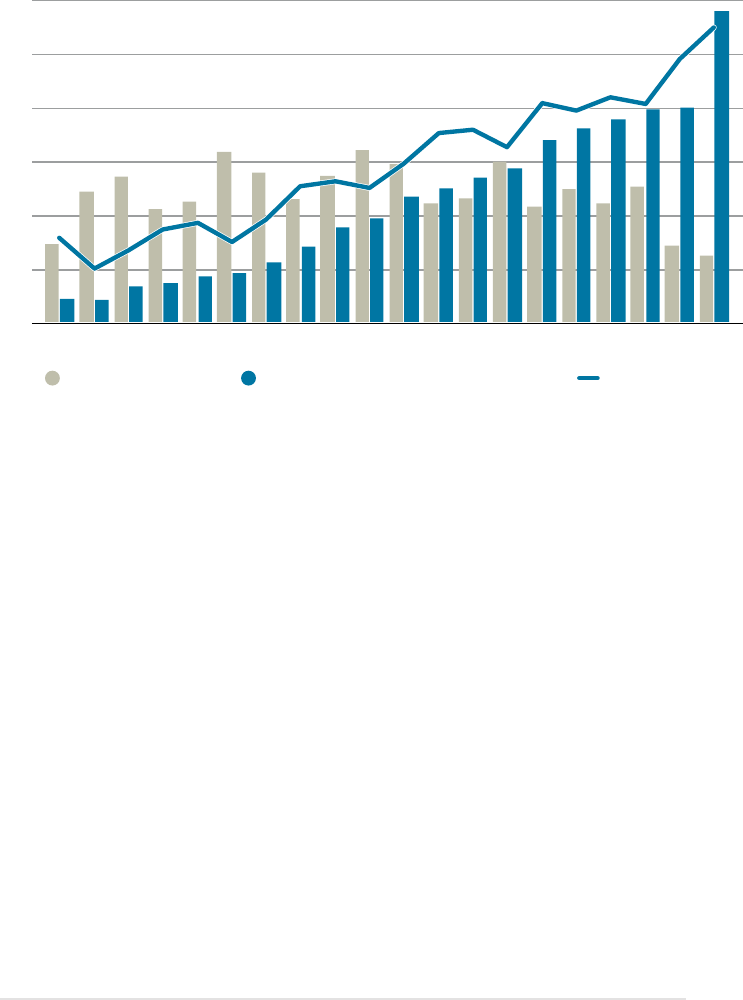
18
WORLD ENERGY
TRANSITIONS OUTLOOK
FIGURE S.1 Share of capacity, 2001-2020
15
30
45
60
75
45
90
135
180
225
New capacity
non-renewables (GW)
New capacity
renewables (GW)
0
Annual capacity installations (GW/yr)
20132001 20152009 201720052003 20112007 2020
90
0
270
Share of new electricity generating capacity (%)
Renewable share (%)
Based on IRENA’s renewable energy statistics.
Innovative solutions are reshaping the energy system and opening new possibilities for a
decarbonised future much faster than expected. Innovations in technology, policy and markets are
being implemented worldwide (IRENA, 2019a). Significant progress has been made in electric mobility,
battery storage, digital technologies and artificial intelligence, among others. These shifts are also
drawing greater attention to the need for sustainable exploitation and management of rare earths
and other minerals, and investment in the circular economy. New and smart grids, ranging from mini-
to super grids, bolstered by facilitative policies and markets, are enhancing the power sector’s ability
to cope with the variability of renewables. Direct uses of renewables – including bioenergy – and
green hydrogen are bringing much-needed solutions in transport, buildings and industry.
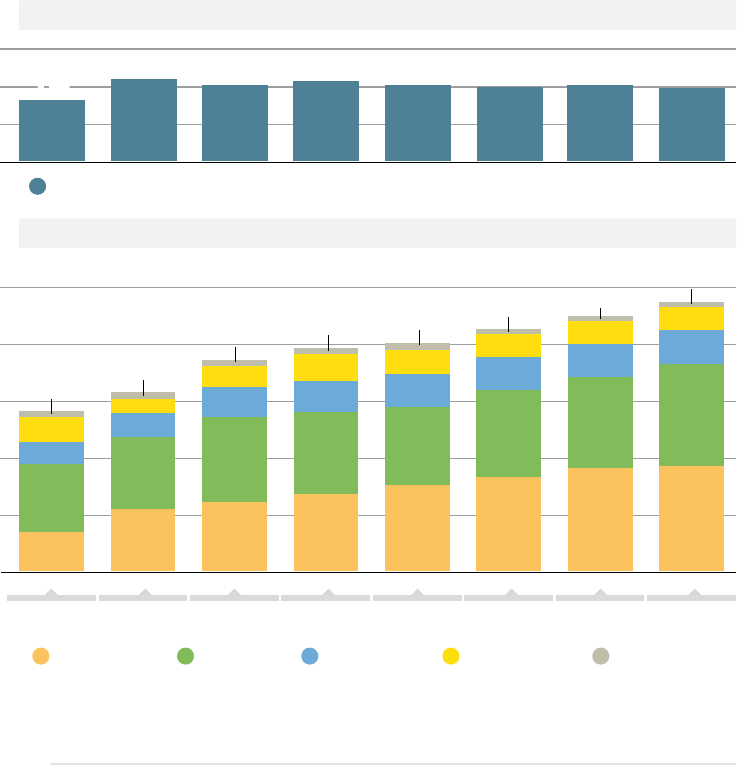
19
EXECUTIVE SUMMARY
FIGURE S.2 Global renewable energy employment by technology, 2012-2019
TotalTotalTotal
SubtotalSubtotalSubtotal
Hydropower (direct jobs only)
Solar
photovoltaics
Bioenergy Wind energy Solar heating
and cooling
Others
0
2
4
6
8
10
2012 2013 2014 2015 2016 2017 2018 2019
Million
jobs
3
2
1
0
1.961.96
11.4611.4611.46
2.052.05
10.9810.9810.98
1.991.99
10.5310.5310.53
2.062.06
10.1310.1310.13
2.162.16
10.0410.0410.04
2.042.04
9.509.509.50
2.212.21
8.558.558.557.287.287.28
9.59.59.59.09.09.08.58.58.58.18.18.17.97.97.97.57.57.56.36.36.35.65.65.6
1.661.66
1.361.361.36
2.272.272.27
2.492.492.49
2.992.992.99
1.031.031.03
0.760.760.76
0.940.940.94
0.200.200.20
1.081.081.08
2.882.882.88
2.772.772.77
3.093.093.09 3.373.373.37
3.683.683.68 3.753.753.75
3.583.583.58
3.183.183.18
3.053.053.05
2.742.742.74
1.161.161.16
1.151.151.15
1.161.161.16
0.800.800.80
0.180.180.18
0.810.810.81
0.160.160.16
0.830.830.83
0.240.240.24
1.171.171.17
0.820.820.82
0.180.180.18
0.190.190.19
2.502.502.50
0.830.830.83
0.500.500.50
0.230.230.23
2.402.402.40
0.750.750.75
0.890.890.89
0.220.220.22
Of the 58 million energy jobs worldwide in 2019, some 20% were in the renewable sector. The
change in global employment patterns reflects new trends in energy deployment. Employment
grew from 7.3million in 2012, when IRENA began monitoring jobs in renewables, to 11.5million in
2019. During the same period, energy jobs were decreasing owing to growing automation, lack of
competitiveness of some fuels and changing market dynamics. There is also growing evidence of
the wider impacts of the shift toward renewables. Notably, the rise of renewables has improved
the gender balance in the energy sector, with women accounting for 32% of jobs in renewables,
compared with 22% in the oil and gas.
Source: IRENA, 2020a.

20
WORLD ENERGY
TRANSITIONS OUTLOOK
The growing number of countries committing to net zero carbon strategies indicates a major
shift in the global climate discourse. Similar trends are observed at all levels of government
and in the private sector, including in hard to abate and oil and gas sectors. As much of the world
grapples with the economic downturn, investment in the energy transition can help align short-
term priorities with medium- and long-term development and climate objectives. This is a unique
opportunity to instigate a lasting shift with foresighted and targeted investment in energy, most
immediately in infrastructure, efficiency and renewables (IRENA, 2020b). Indeed, several countries
have made significant commitments to appropriate public funds for these purposes and to support
solutions such as electric mobility and clean hydrogen.
No less than 80% of the world’s people live in countries that are net importers of fossil fuels.
By contrast, every nation possesses some renewable potential that can be harnessed for greater
energy security and independence, increasingly at least cost (IRENA, 2019b). A transformation
of the global energy system aligned with the 1.5°C climate goal can become a great equaliser in a
world that must become more resilient, just and inclusive. Such an energy system requires the rapid
development and deployment of resilient technologies and investments in people and institutions.
Progress has been significant but uneven across geographies and communities. The longest
strides have been made in a handful of countries and regions. In other areas, widespread energy
poverty continues to hold back economic progress and social wellbeing. In 2020, Europe, U.S.
and China accounted for the largest share of new renewable capacity, while Africa accounted for
only 1% of the global total of new renewable capacity. This is even though the continent has the
largest needs for expanded access to modern forms of energy and a renewable potential that far
exceeds projected needs. Only USD1billion was invested in off-grid renewables between 2008
and 2019, despite being a major avenue for expanding access. Uneven deployment patterns are
also mirrored in the concentration of jobs and industries, leaving behind large parts of the world.
Current plans fall woefully short of a 1.5°C goal. Based on existing government energy plans and
targets, including the first round of Nationally Determined Contributions (NDCs) under the Paris
Agreement, the policies in place will do no more than stabilise global emissions, with a slight drop
as 2050 approaches. Despite clear evidence of human-caused climate change, widespread support
for the Paris Agreement, and the prevalence of clean, economical, and sustainable energy options,
energy-related CO
2
emissions increased by 1.3% annually, on average, between 2014 and 2019.

1.5-SPES
21
EXECUTIVE SUMMARY
The 1.5°C Scenario (1.5-S) describes an
energy transition pathway aligned with
the 1.5°C climate ambition – that is, to
limit global average temperature increase
by the end of the present century to
1.5°C, relative to pre-industrial levels. It
prioritises readily available technology
solutions, which can be scaled up at the
necessary pace for the 1.5°C goal.
Time is of the essence, and a rapid decline in emissions must begin now to preserve a fighting
chance to hold the line at 1.5°C. In alignment with the Intergovernmental Panel on Climate
Change’s (IPCC) report on limiting global warming to 1.5°C by 2050, coal and oil should already have
peaked, with natural gas peaking in 2025. The resources and technologies needed to accelerate
the energy transition are available now. IRENA plots the way to a steep and continuous downward
trajectory towards a 45% decline in carbon dioxide (CO
2
) emissions from 2010 levels by 2030, and
net zero by 2050, in line with IPCC’s schedule.
IRENA’s World Energy Transitions Outlook is a unique 1.5°C-compatible pathway that also
examines full socio-economic and policy implications, and provides insights on the structural
changes and finance. Technologies for rapid decarbonisation are increasingly available, but
thinking related to the energy transition should not be confined within the energy silo. Realising
the transition’s far-reaching potential requires systemic innovation that considers technologies
and enabling frameworks in tandem. Renewables-based energy systems will instigate profound
changes that will reverberate across economies and societies. Only by understanding these deep
currents can we achieve optimal results from the transition process. This inaugural edition of the
World Energy Transitions Outlook marshals IRENA’s extensive knowledge to make this possible –
by providing policy makers with insights, tools and advice to chart the path ahead.
IRENA’s 1.5°C Scenario
The Planned Energy Scenario (PES)
is the primary reference case for this
study, providing a perspective on
energy system developments based
on governments’ current energy plans
and other planned targets and policies,
including Nationally Determined
Contributions (NDCs) under the Paris
Agreement.

22
WORLD ENERGY
TRANSITIONS OUTLOOK
The time imperative requires careful investment and policy choices in the coming decade. The
window of opportunity to achieve the 2030 emission milestone set out by the IPCC is small, and the
choices made in the coming years will determine whether a 1.5°C future remains within reach. This
Outlook is guided by the UN’s Agenda for Sustainable Development and the Paris Agreement on
Climate Change. Several prerequisites underpin the theory of change behind IRENA’s 1.5°C Pathway:
• Pursuing the path that is most likely to drive down energy emissions in the coming decade and
put the world on a 1.5°C trajectory.
• Supporting emerging technologies most likely to become competitive in the short-term and
most effective in achieving emissions reductions in the long-term.
• Limiting investments in oil and gas to facilitating a swift decline and a managed transition.
• Reserving carbon capture and storage technologies for economies heavily dependent on oil
and gas and as a transitional solution where no other options exist
• Phasing out coal and fossil fuel subsidies.
• Adapting market structures for the new energy era.
• Investing in a set of policies to promote resilience, inclusion, and equity and protect workers
and communities affected by the energy transition.
• Ensuring all countries and regions have an opportunity to participate in and realise the benefits
of the global energy transition.
FIGURE S.3 Guiding framework of WETO theory of change
Pursue the path that is most likely
to drive down energy emissions
in the coming decade.
Invest in a set of policies for
resilience, inclusion, and equity
and protect workers and communities.
Support emerging technologies
most likely to become competi-
tive in the short-term and most
eective in the long-term.
Reserve CCS for econo-
mies heavily dependent
on oil and gas and as a
transitional solution.
Adapt market structures
for the new energy era.
Phase out coal and
fossil fuel subsidies.
Limit investments in oil
and gas to facilitating
a swift decline and a
managed transition.
Ensure all countries and regions
have an opportunity to realise the
benefits of the transition.
1.5°C
PEOPLE
PLANET
PROSPERITY
WORLD
ENERGY
TRANSITIONS
OUTLOOK

23
EXECUTIVE SUMMARY
FIGURE S.4 Carbon emissions abatements under the 1.5°C Scenario (%)
Abatements 2050
6 %
Renewables
(power and direct uses)
Energy conservation
and eciency*
Electrification in end use sectors
(direct)
BECCS and other carbon
removal measures
Hydrogen and its derivatives*
CCS and CCU industry
20 %
10 %
25 %
25 %
14 %
-36.9
GtCO
2
/yr
-36.9
GtCO
2
/yr
Technological avenues to climate targets
IRENA’s analysis shows that over 90% of the solutions shaping a successful outcome in 2050
involve renewable energy through direct supply, electrification, energy efficiency, green
hydrogen and bioenergy combined with carbon capture and storage (BECCS). The technological
avenues leading to a decarbonised energy system have crystalised, dominated by solutions that
can be deployed rapidly and at scale. Technologies, markets, and business models are continuously
evolving, but there is no need to wait for new solutions. Considerable advancement can be achieved
with existing options. But taking the energy transition technologies to the necessary levels, and
at a speed compatible with a 1.5°C goal, requires targeted policies and measures.

24
WORLD ENERGY
TRANSITIONS OUTLOOK
By 2050, electricity will be the main energy carrier, increasing from a 21% share of total final
energy consumption in 2018 to over 50% in 2050. Sectoral boundaries are shifting, with the
electrification of end-use applications in transport and heating. This increase is mostly driven by
the use of renewable electricity in place of fossil fuels in end-use applications. As this shift occurs,
the annual growth rate of renewable technologies will see an eightfold increase. Electrification of
end-uses will also reshape several sectors, most notably transport, with electric vehicles coming to
account for 80% of all road activity in 2050.
The annual energy intensity improvement rate needs to rise to 2.9%, nearly two and a half
times the historical trend. With this rise, the energy intensity of the global economy will fall more
than 60% by 2050. Energy efficiency technologies and measures are “ready-to-go" solutions,
available for significant scale-up now. Policies and measures to increase energy conservation and
efficiency will be crucial to reduce total final energy consumption from 378 exajoule (EJ) in 2018
to 348 EJ in 2050. An important contribution will also come from structural and behavioural
changes, which will account for about a tenth of the improvement in efficiency.
Hydrogen and derivatives will account for 12% of final energy use by 2050. They will play an
important role in hard-to-decarbonise, energy-intensive sectors like steel, chemicals, long-haul
transport, shipping and aviation. Hydrogen will also help balance renewable electricity supply and
demand and serve as long-term seasonal storage. Some 5 000GW of electrolyser capacity will be
needed by 2050, up from 0.3GW today. This scale of growth accentuates the importance of low-
carbon hydrogen from the outset. In 2050, two-thirds of the total hydrogen will be green – produced
with renewable electricity – and one-third blue, produced by natural gas coupled with carbon
capture and storage (CCS).
Bioenergy will represent 18% of total final energy consumption in 2050. Increasing sustainable
production and use of biomass is needed across the energy system. In some sectors, it plays
a significant role – particularly as feedstock and fuel in the chemicals sectors and as fuel in the
aviation sector. In others, it helps to address gaps that other options cannot fully resolve, such
as replacing natural gas with biomethane in buildings that cannot be renovated. Additionally,
biomass coupled with CCS (BECCS) in the power sector and some industrial sectors will deliver the
negative emissions needed to achieve the net zero goal.
In residual use of fossil fuels and some industrial processes, decarbonisation efforts may
require CCS and CO
2
removal technologies and measures. In the 1.5°C Scenario, some emissions
persist in 2050 from residual uses of fossil fuels and some industrial processes. Therefore, the
remaining CO
2
will have to be captured and sequestered. CCS is limited mainly to process-related
CO
2
emissions in cement, iron and steel, and blue hydrogen production. CO
2
removal includes
nature-based measures such as reforestation and BECCS, direct carbon capture and storage,
and other approaches that are still experimental.

25
EXECUTIVE SUMMARY
FIGURE S.5 Evolution of emissions with phaseouts of coal and oil, 2021-2050
Note: RE = renewable energy; VRE = variable renewable energy; CBAM = carbon border adjustment mechanism;
ICE = internal combustion engine; GW = gigawatt; Gt = gigatonne; CCS = carbon capture and storage; BECCS =
bioenergy combined with carbon capture and storage; CCU = carbon capture and utilisation.
Emissions (GtCO
2
)Emission reductions (GtCO
2
)
Coal
Oil
Natural gas
Electrification of end
uses (direct)
Hydrogen and its
derivatives
CCS and CCU
in industry
BECCS and other carbon
removal measures
Renewables
(power and direct uses)
Energy conservation
and eciency
Process and
non-energy
40
30
20
10
0
-10
-20
-30
-40
2018 20502030
2018 20502030
Rapid phaseout
of coal power and
expansion of
renewable power
Rapid phaseout of
oil for transport
and feedstock
2021-2030 2031-2050
•
RE power addition rate
triples
•
Systemic flexibility
policies worldwide
enable VRE integration
•
Carbon pricing (with CBAM)
is suciently high worldwide
(> USD 75/tonne)
•
Rapid decline in ICE car
sales worldwide
•
Ramp up clean hydrogen
production
•
CCS in industry >1 Gt
•
Building eciency renovation
rate triples in North
•
Governments accelerate grid
and hydrogen infrastructure
investments
•
Supply of sustainable
minerals and metals
ramps up
•
28 000 GW RE power
installed (x10),
90% RE power
•
5 000 GW electrolysers
installed
•
Biomass reaches 18%
of final consumption
•
Cars and trucks are
mostly electrified
•
Heat pumps play a
crucial role in space
heating
•
BECCS is deployed in
power and industry to
compensate remaining
fossil fuel emissions
•
Electrification and
renewables drive
eciency gains
•
Clean energy financing rises
to USD 4.4 trillion/year

26
WORLD ENERGY
TRANSITIONS OUTLOOK
By 2030, renewable power should reach 10 700 GW globally, almost quadrupling the current
capacity. Rapid scale-up deployment in the coming decade is necessary to set the stage for
decarbonisation of the power system and electrification of end-use by 2050. This level of deployment
is also a key recommendation of the Energy Transitions Theme Report, developed by IRENA, UNEP,
and UN ESCAP for the United Nations High-Level Energy Dialogue. The abundance of cost-effective
renewable potentials worldwide makes them a scalable option. For many countries, this translates
a technical and economic challenge into a set of investment, regulatory and societal opportunities.
Infrastructure upgrade, modernisation and expansion is a high priority in the coming decade.
Updating ailing infrastructure or investing in expansion is an integral part of the energy transition
and an enabler of modern technologies. This will be particularly important in the coming decade
as the share of renewables grows, requiring system flexibility and modern grids. Infrastructure
developments must be aligned with long-term plans and reflective of broader strategies, including
regional market integration.
The necessary deployment levels will be reached by 2030 only with policies to support these
technological avenues. Deployment policies support market creation, thus facilitating scale-up,
reducing technology costs and increasing investment levels aligned with energy transition needs.
Given the large amounts of public finance being injected into economies as part of the recovery
measures, such policies will shape the direction of the energy transition and set the stage for the
significant increase in the private sector investment required until 2050.

27
EXECUTIVE SUMMARY
TABLE S.1 Overview of policies to support energy transition solutions
TECHNO-
LOGICAL
AVENUE
OBJECTIVE RECOMMENDATIONS
Renewables
(power and
direct uses)
Deploy renewable energy
in end uses
These policies include regulatory measures that
create a market, as well as fiscal and financial
incentives to make them more affordable and
increase their cost competitiveness compared to
fossil-fuel-based solutions.
Deploy renewable energy
in the power sector
The choice of instrument and its design should
consider the nature of the solution (e.g., utility
scale, distributed, off-grid), the sector’s level of
development, the power system’s organisational
structure and broader policy objectives.
Energy
conservation
and efficiency
Increase energy
conservation and efficiency
in heating and cooling
Energy efficiency policies such as strict building
codes, support for building retrofits and
appliance standards are critical for the energy
transition in buildings and industrial processes.
Increase energy
conservation in transport
Decarbonising the transport sector, among other
measures, requires a shift from energy-intensive
modes to low-carbon modes.
Electrification
of end uses
Electrify heating and
cooling
Targets for renewable power should consider
the rising demand from the electrification of
end uses, in line with long-term decarbonisation
objectives. Moreover, policies and power system
design are needed to support electrification
in achieving its potential for providing system
flexibility.
Electrify transport
Green
hydrogen
Support the development
of green hydrogen
An enabling policy framework should consider
four key pillars: a national green hydrogen
strategy, priority setting, guarantees of origin
and enabling policies.
Sustainable
bioenergy
Ensure the sustainable use
of bioenergy
Renewable energy is not exempt from
sustainability concerns. Some of these concerns
include greenhouse gas emissions related to
land-use change, and impacts on air and water
quality and biodiversity.

28
WORLD ENERGY
TRANSITIONS OUTLOOK
Financing the energy transition
USD 131 trillion will need to flow into an energy system over the period to 2050 that prioritises
technology avenues compatible with a 1.5°C Pathway. While the annual funding requirement
averaging at USD4.4trillion is large, it represents 20% of the Gross Fixed Capital Formation in 2019,
equivalent to about 5% of global Gross Domestic Product (GDP). Between now and 2050, over 80%
of the USD 131 trillion total must be invested in energy-transition technologies, including efficiency,
renewables, end-use electrification, power grids, flexibility, hydrogen, and innovations designed to
help emerging and niche solutions become economically viable.
Current government strategies already envisage significant investment in energy amounting
to USD 98 trillion by 2050. Collectively referred to in this Outlook as the Planned Energy Scenario
(PES), they imply a near doubling of annual energy investment, which in 2019 amounted to
USD 2.1 trillion. Substantial funds will flow towards modernisation of ailing infrastructure and
meeting growing energy demand. But the breakdown of financing for technology under the 1.5°C
Scenario differs greatly from current plans: USD24trillion of planned investments will have to be
redirected from fossil fuels to energy transition technologies between now and 2050.
Funding structures in the 1.5°C Scenario are markedly different in terms of capital sources
(public and private) and types of capital (equity and debt). In 2019, USD1.6trillion in energy
assets were financed by private sources, accounting for 80% of total energy sector investment.
That share would grow dramatically under the 1.5°C Scenario. The share of debt capital has to
increase from 44% in 2019 to 57% in 2050, almost 20% more than under the PES (see Figure
S.6). Energy transition technologies should find it increasingly easy to obtain affordable long-
term debt financing, while “brown” assets will progressively be avoided by private financiers and
therefore forced to rely on equity financing from retained earnings and new equity issues. Capital-
intensive, more decentralised projects will influence investors’ risk perception, which in turn may
need targeted policy and capital market interventions.
Public funding will need to grow almost two-fold to catalyse private finance and ensure just and
inclusive unfolding of the energy transition. Public financing plays a crucial role in facilitating the
energy transition, as markets alone are not likely to move rapidly enough. In 2019, the public sector
provided some USD450 billion in the form of public equity and lending by development finance
institutions. In the 1.5°C Scenario, these investments will grow to some USD780billion. Public debt
financing will be an important facilitator for other lenders, especially in developing markets with high
real or perceived risks. In some instances, this may include grants to reduce the cost of financing.
Public funds are also needed to create an enabling environment for the transition and ensure that it
occurs fast enough and with optimal socio-economic outcomes.
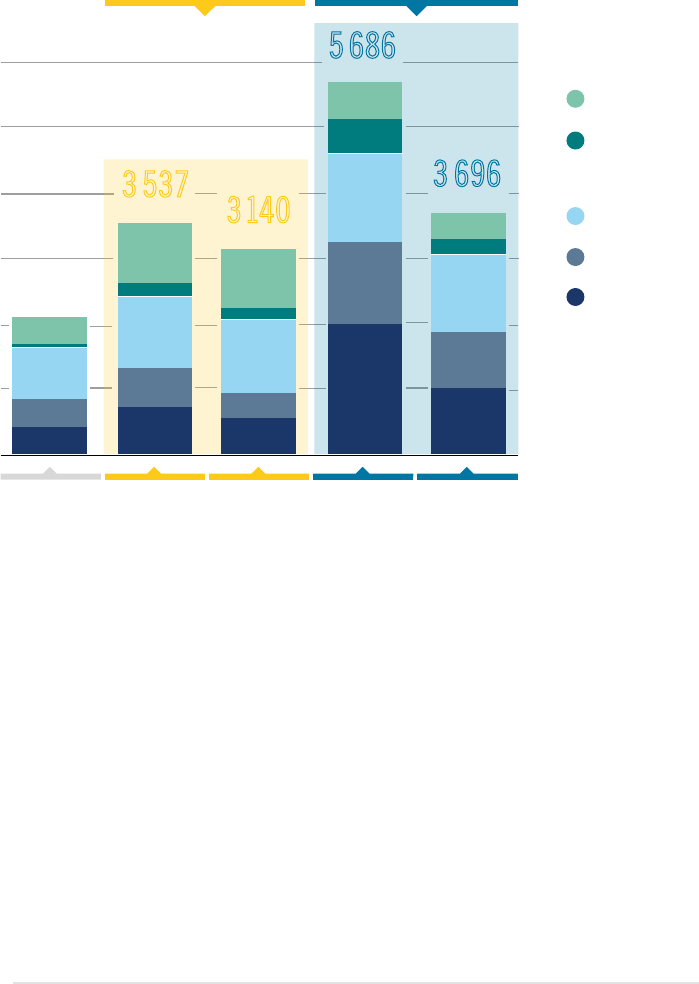
29
EXECUTIVE SUMMARY
FIGURE S.6 Total average yearly investment by source and type of financing:
2019, PES and 1.5°C Scenario (2021-2030 and 2031-2050)
Sources: For 2019 investment: source and type of financing BNEF (2021a), IEA (2020a), IRENA and CPI (2020); for
PES and 1.5°C Scenario: IRENA and BCG analysis.
2 106
billion USD
2 106
billion USD
0
1 000
2 000
3 000
4 000
5 000
6 000
Lending (private)
Capital markets
Equity (public)
Equity (private)
Lending from
Development Finance
Institutions
2019 2021-2030 2031-2050 2031-20502021-2030
USD billion/year
19 %19 %19 %
26%26 %26%
29%29%29%
6 %6 %6 %
6 %6 %6 %
6%6%6%
32%32%
23%23%23%
28%28%28%
36%36%
12%12%12%
19%19%19%
35%35%35%
22%22%22%
24%24%
9%9%9%
10%10%10%
11%11%11%
31%31 %
16 %16 %16 %
21%21%21%
37 %37 %
20 %20 %20 %
21 %21 %21 %
Where we need to be (1.5-S)Where we are heading (PES)
3 537
billion USD
3140
billion USD
5 686
billion USD
3 696
billion USD
Measures to eliminate market distortions that favour fossil fuels, coupled with incentives for
energy transition solutions, will facilitate the necessary changes in funding structures. This
will involve phasing out fossil fuel subsidies and changing fiscal systems to reflect the negative
environmental, health and social costs of the fossil fuel-based energy system. Monetary and fiscal
policies, including carbon pricing policies, will enhance the competitiveness of transition-related
solutions. Such interventions should be accompanied by a careful assessment of the social and equity
dimensions to ensure that the situation of low-income populations is not worsened but improved.
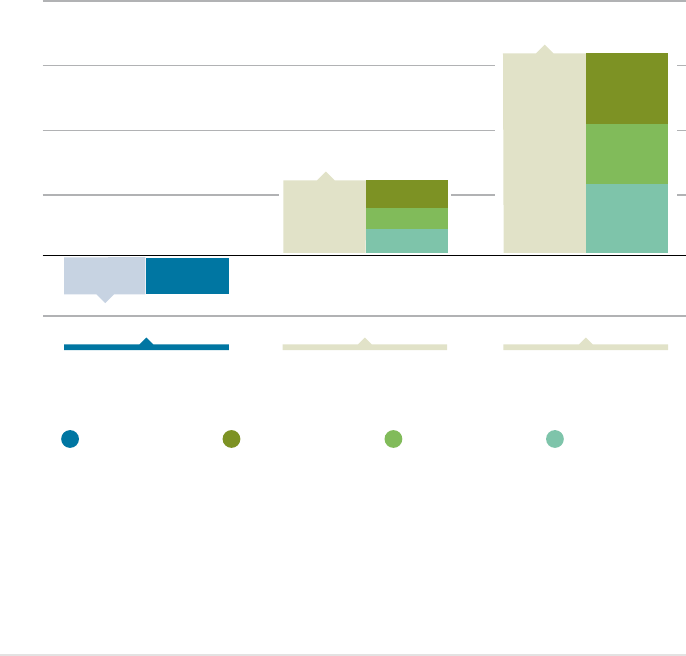
30
WORLD ENERGY
TRANSITIONS OUTLOOK
Socio-economic footprint of the energy transition
Investment in the 1.5°C Scenario will yield a cumulative payback of at least USD 61 trillion
by 2050. The overall balance from the energy transition is positive, with benefits greatly
exceeding costs. The costs for reducing emissions vary by technology and sector, but the
incremental costs are significantly lower than the savings achieved by cutting external costs.
IRENA estimates that, under the 1.5°C Scenario, every USD 1 spent on the energy transition
should yield benefits from reduced externalities from human health and the environment
valued at between USD 2 and USD 5.5. In cumulative terms, the additional USD 30 trillion
cost implied by the 1.5°C Scenario over the period to 2050 will result in a payback of between
USD61 and USD164trillion.
FIGURE S.7 Cumulative dierence between costs and savings of 1.5°C Scenario
compared to the PES, 2021-2050
58
58
49
49
57
57
Up to
5.5x
savings
Up to
5.5x
savings
2424
1717
2020
Up to
2x
savings
Up to
2x
savings
-30-30
CostsCosts
Savings from reduced
externalities (high)
Savings from reduced
externalities (low)
Costs – 1.5-S
0
50
100
150
200
Incremental
energy system
cost
Reduced
externalities -
climate change
Reduced
externalities -
outdoor air
pollution
Reduced
externalities -
indoor air
pollution
-50
USD trillion
2015

31
EXECUTIVE SUMMARY
The energy transition goes well beyond technology and brings deep structural changes
that will greatly affect economies and societies. IRENA continues to capture an increasingly
comprehensive picture of the socio-economic impacts of the energy transition. Results presented
in this Outlook demonstrate that steps towards a decarbonised energy future will positively affect
economic activity, jobs and welfare, provided a holistic policy framework is in place. Within the
analysis, countries’ existing policies are complemented with climate policies to reach energy
transition targets while addressing distributional challenges for just and inclusive outcomes.
The 1.5°C Pathway provides a boost in GDP that is 2.4% greater (on average) than that of the
PES over the next decade, aligned with the needs of a post-COVID recovery. Over the transition
period to 2050, the average improvement of GDP is estimated at 1.2% over the PES. Additional GDP
growth will be spurred by investment across the many dimensions of the energy transition, leading
to multiple adjustments between interdependent economic sectors. The reduced demand for fossil
fuels leads to lower revenues for mining and fuel refining industries, as well as for governments
(because of lower fossil fuel royalties), thus resulting in negative impacts on GDP in some countries.
This reality highlights the need for a holistic policy framework that addresses structural changes
caused by reduced fossil fuel dependency.
Throughout the transition period, economy-wide employment is 0.9% higher on average under
the 1.5°C Scenario than under the PES. One of the main positive impacts on employment comes
from investment in energy transition solutions, including renewables, grid enhancement and energy
efficiency. Shifting investment from fossil fuels (extraction and power generation) and other sectors
towards the energy transition decreases labour demand in fossil fuel and non-energy sectors and
along their value chains.

32
WORLD ENERGY
TRANSITIONS OUTLOOK
A transformed energy sector will have 122 million jobs in 2050. Qualifications, skills and
occupations under the ambitious 1.5°C Scenario are increasingly concentrated in manufacturing,
followed by fuel supply. Training for such occupations is relatively easy and offers opportunities
for workers from the fossil-fuel industry. The educational requirements for the labour force evolve
during the transition, with a continuous increase of the share and number of workers with primary
education and a peak of workers with tertiary education by 2030.
FIGURE S.9 Energy sector jobs, by segment of
value chain, in the 1.5°C Scenario
and PES (excluding vehicles)
Hydrogen
Power grids and energy flexibility
Energy eciency and heat pumps
Renewables
Fossil fuels
Nuclear
Fuel supply
Operation and maintenance
Manufacturing
Construction and installation
2021 2030
PESPES 1.5-S
2050
PES 1.5-S
0
50
100
150
Jobs (million)
2021 2030
PESPES 1.5-S
2050
PES 1.5-S
0
50
100
150
Jobs (million)
FIGURE S.8 Energy sector jobs by technology
under the PES and 1.5°C Scenario
(million), global results
Based on IRENA's analysis. Based on IRENA's analysis.
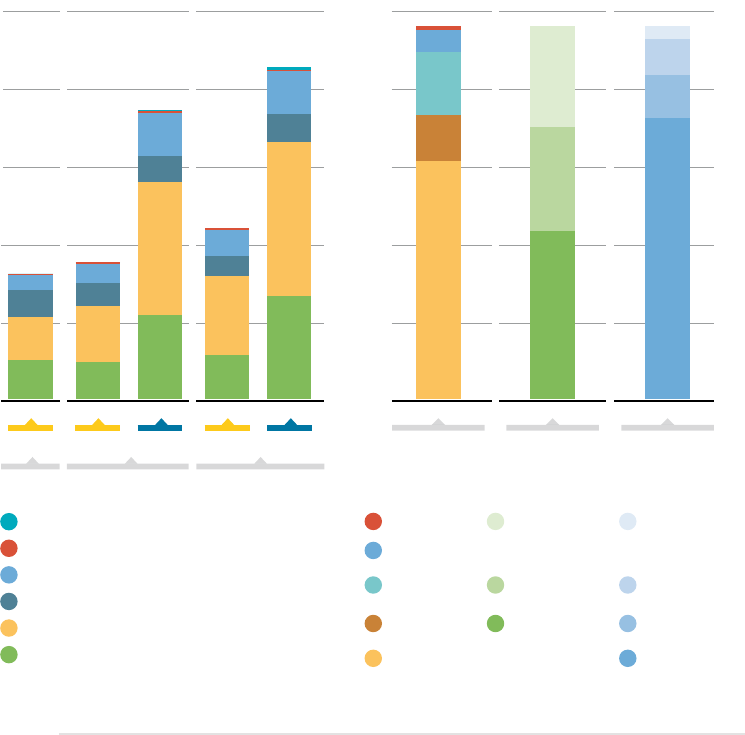
33
EXECUTIVE SUMMARY
Renewable energy jobs will increase to 43 million in 2050. In the PES, renewable energy jobs
increase 9% from 2021 values to reach 18 million jobs by 2030 and 23 million by 2050. By contrast,
the 1.5°C Scenario leads to a much larger gain by 2030, with renewables jobs more than tripling
to 38 million over the coming decade. Solar photovoltaic (PV) accounts for the largest share,
followed by bioenergy, wind and hydropower. Construction, installation and manufacturing
boost renewable jobs during the following decade, with operation and maintenance gaining
relative weight as the transition advances under the 1.5°C Scenario.
FIGURE S.10 Jobs in renewable energy, by
technology, in the 1.5°C Scenario
and PES (million)
FIGURE S.11 Structure of jobs in the 1.5°C
Scenario by 2050 for a subset of
renewable technologies by
technology, segment of value chain
and occupational requirements
Based on IRENA analysis.
Tidal/Wave
Geothermal
Wind
Hydro
Solar
Bioenergy
Experts
Engineers and
higher degrees
Marketing and
administrative
personnel
Workers and
technicians
Manufacturing
Operations
and
maintenance
Construction
and
installation
Solar water
heater
Onshore
wind
Oshore
wind
Geothermal
Solar PV
Jobs by
technology
Segment of
the value
chain
Occupational
pattern
2021 2030
PESPES 1.5-S
2050
PES 1.5-S
50
40
30
20
10
0
25
20
15
10
5
0
Jobs (million) Jobs (million)

34
WORLD ENERGY
TRANSITIONS OUTLOOK
IRENA’s Energy Transition Welfare Index captures economic, social, environmental,
distributional and energy access dimensions. For the first time, the Index reports distributional
and energy access dimensions that are often overlooked in other analyses. Measuring the impact
of the transition across these dimensions provides a quantitative basis for roadmaps designed
to reap the transition’s full socio-economic and environmental benefits.
FIGURE S.12 Structure of IRENA's Energy Transition Welfare Index
Environmental Distributional AccessEconomic Social
E
c
o
n
o
m
i
c
S
o
c
i
a
l
E
n
v
i
r
o
n
-
m
e
n
t
a
l
I
n
d
e
x
I
n
d
e
x
I
n
d
e
x
I
n
d
e
x
I
n
d
e
x
D
i
s
t
r
i
-
b
u
t
i
o
n
a
l
A
c
c
e
s
s
Welfare
Index
CO
2
emissions
Within
country/region
Social
expenditure
Health impact
(pollution)
Materials
consumption
Across
countries/regions
Suciency
Basic energy
access
Consumption
and investment
Dimensions
Indicators
Employment

35
EXECUTIVE SUMMARY
The 1.5°C Scenario performs better than the PES along all welfare dimensions, yielding an
11% improvement over the PES by 2050.
• The economic dimension is similar for both scenarios reflecting the energy sector’s relatively
small share in the overall global economy and labour force.
• The environmental dimension sees a 30% improvement over PES with significantly lower
emissions under the 1.5°C Scenario, although increased materials consumption poses
sustainability challenges.
• The social dimension improves 23% under the 1.5°C Scenario largely due to improved health
outcomes from lower outdoor and indoor air pollution. Social expenditures contribute a much
smaller role.
• The distributional dimension improves 37% over PES; however, the index remains low in an
absolute sense, indicating potential equity barriers. In fact, both social and distributional
dimensions bring down the overall Energy Transition Welfare Index – and these realities deserve
more policy attention.
• The energy access dimension grows 7% under the 1.5°C Scenario compared to PES as universal
energy access and sufficiently levels are reached.
Socio-economic impacts vary at the regional and country level. Global aggregates mask
important differences in how the energy transition affects regions and countries and how benefits
are distributed. What is clear is that the energy transition roadmaps and their resulting socio-
economic implications are closely linked with the policy framework, with those links becoming
stronger as ambitions align with the 1.5°C Pathway. Governments’ involvement in the transition
should be accompanied by international co-operation to ensure that the benefits and burdens of the
transition are equitably shared.

36
WORLD ENERGY
TRANSITIONS OUTLOOK
TABLE S.2 Overview of structural change and just transition policies
OBJECTIVE RECOMMENDATIONS
Address potential misalignments in
labour markets
Ensuring a just and fair transition will require measures
to overcome temporal, geographic and skills-related
imbalances.
Develop local value chains Enhancing and leveraging domestic capabilities requires
carefully crafted incentives and rules, business incubation
initiatives, supplier-development programmes, support
for small and medium enterprises and promotion of key
industrial clusters.
Provide education and build
capacity
Early exposure to renewable-energy-related topics and
careers is vital for sparking young people’s interests in
pursuing a career in the sector, and also to increase social
acceptance by a knowledgeable citizenry.
Support a circular economy Policies and measures are needed to ensure the
sustainability of energy transition-related solutions and
their smooth integration in existing ecosystems in terms
of sustainability, circular economy principles and reduced
environmental impacts.
Support community and citizen
engagement
Community energy can play an important role in
accelerating renewables deployment while generating
local socio-economic benefits and increasing public
support for local energy transitions.
A comprehensive policy framework for the energy
transition
Policy measures and investments in energy transitions can drive a wider structural shift
towards resilient economies and societies. The energy sector must be viewed as an integral
part of the broader economy to fully understand the impact of the transition and ensure that it is
timely and just. Regions and countries have varied starting points, socio-economic priorities and
resources, all of which shape the scope and pace of their energy transition. Energy transitions
trigger structural changes that bring benefits as well as challenges, with those challenges
appearing in the form of misalignments in finance, labour markets, power systems and the energy
sector itself. These misalignments, if not well managed, risk inequitable outcomes and a slowdown
in the energy transition. Just and integrated policies – implemented by strong institutions – are
imperative to realise the full potential of the energy transition.
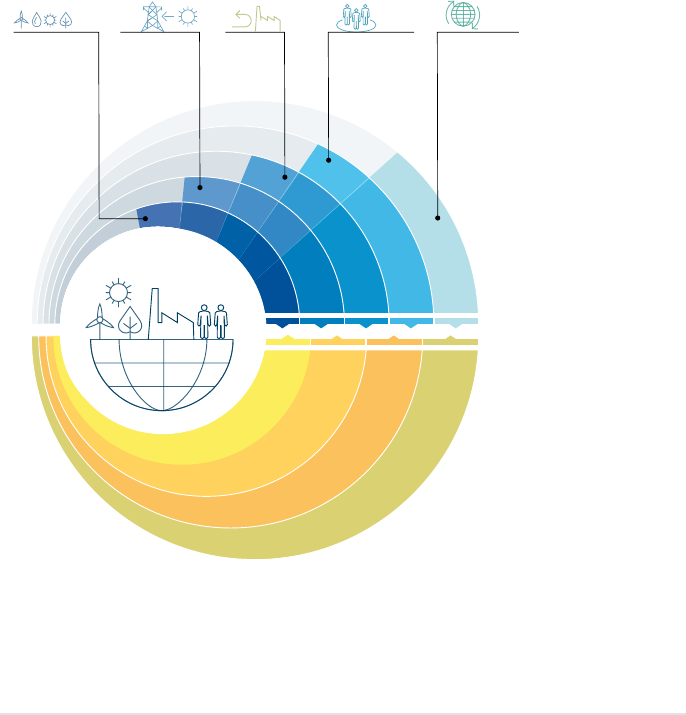
37
EXECUTIVE SUMMARY
International co-operation is an essential piece of the global energy transition. A holistic
global policy framework is needed to bring countries together to commit to a just transition that
leaves no one behind and strengthens the international flow of finance, capacity and technologies.
Climate policies represent a crucial element in such a framework. Other measures should include
fiscal policies (such as adequate carbon pricing covering emissions across sectors) and public
funding to implement policies to foster deployment, create enabling conditions and ensure a just
and stable transition. Elements of the latter imperative include industrial development, education
and training, and social protection. The necessary financial resources will not always be available
domestically. International co-operation will be needed to provide such support, particularly to the
least-developed countries and small island developing states.
FIGURE S.13 Enabling policy framework for a just and inclusive energy transition
DEPLOYMENT
POLICIES
INTEGRATING
POLICIES
ENABLING
POLICIES
STRUCTURAL
CHANGE
AND JUST
TRANSITION
POLICIES
HOLISTIC
GLOBAL
POLICY
FRAMEWORK
ECONOMY
ENERGY
SOCIETY
PLANET

01 LEVERAGING THE
COMPETITIVENESS OF
RENEWABLES TO HASTEN
THE ENERGY TRANSITION AND
MINIMISE CLIMATE CHANGE

39
Traditionally slow to change, the energy sector has experienced unprecedented dynamism
in recent years, quite unlike any other time in history. This is in large part due to the advent of
renewables. While the share of renewables in the overall energy mix remains limited at a global
scale, technologies used to harness the sun and wind are reshaping the energy systems of the past,
with wide-ranging and outsized implications. Meanwhile, policy priorities such as climate change,
energy security, energy access and air pollution have placed a renewables-based energy transition
at the forefront of the national, regional and global discourse.
In the turmoil caused by the COVID-19 pandemic, renewables showed remarkable resilience. This
further cemented their role in decarbonising economies worldwide and, through their potential
to create jobs, in supporting economic recovery. Combined, these developments are shifting
renewables from niche to mainstream, as even the most traditional players come to embrace their
immense promise. Importantly, renewables-based solutions are necessary to policy makers in their
quest to limit the global temperature rise to 1.5°C by 2050, with net zero emissions. Such solutions
increasing adoption sends an important message regarding the urgency of combating climate
change (Lederman and Chow, 2021). The strong financial performance of green investments has
attracted the interest of the financial community in supporting the climate cause and is likely to
encourage a new trend in investments.
This chapter presents a brief overview of the most relevant recent developments in the energy
transition. It outlines key trends at a moment in time when over 100 nations are at different stages
of operationalising their net zero carbon targets for 2050. Even as each country considers how to
accomplish this in light of its own circumstances, endowments, abilities and needs, all countries are
on the cusp of transforming their energy sectors. The chapter thus introduces a pathway towards
maintaining the 1.5°C limit, here called the 1.5°C Scenario. As it clarifies key assumptions underlying
the scenario, and outlines its parameters, the chapter sets the stage for a more detailed discussion
of climate scenarios in the ensuing chapters.
CHAPTER 1
The energy sector has
experienced unprecedented
dynamism in recent years largely
due to the advent of renewables.

40
ENERGY TRANSITION
TRENDS
1.1
WORLD ENERGY
TRANSITIONS OUTLOOK
Renewables are increasingly the lowest-cost sources of electricity in many markets. It
has been a remarkable decade of change for renewable electricity generation, and solar
photovoltaic (PV) and wind power technologies in particular. Among newly commissioned
projects, the global weighted average levelised cost of energy (LCOE) of utility-scale
solar PV fell by 85% between 2010 and 2020, from USD 0.381/kilowatt hour (kWh) to
USD0.057/kWh (Figure 1.1). This is a precipitous decline. At one time more than double
the cost of the most expensive fossil-fuel-fired power generation option, utility-scale solar
PV can now compete with the cheapest new fossil-fuel-fired capacity.
1
Between 2010 and
2020, the global weighted-average cost of electricity from onshore wind projects fell by
56%, from USD0.089/kWh to USD0.039/kWh. Over the same period, the global weighted
average cost of electricity from concentrating solar power fell from USD 0.340/kWh
to USD 0.108/kWh. This 68% decline in the cost of electricity from this technology
– which now falls in the middle of the range of new fossil-fuel capacity – remains a
remarkable achievement. For offshore wind, the global weighted average LCOE of
newly commissioned projects declined from USD0.162/kWh in 2010 to USD0.084/kWh
in 2020, a reduction of 42% in ten years (IRENA, 2021b). Falling technology costs
continue to affect auctions, where new record-low prices continued to emerge even
amid the global pandemic. For example, in 2020, Abu Dhabi saw a USc 1.35/kWh bid
for solar PV (Ombello, 2020), followed by an even lower bid in a Portuguese auction
in July (Bellini, 2020).
1 The cost of fossil-fuel-fired power generation varies by country and fuel in an estimated range between
USD 0.055/kWh and USD 0.148/kWh. The lower bound represents new, coal-fired plants in China.
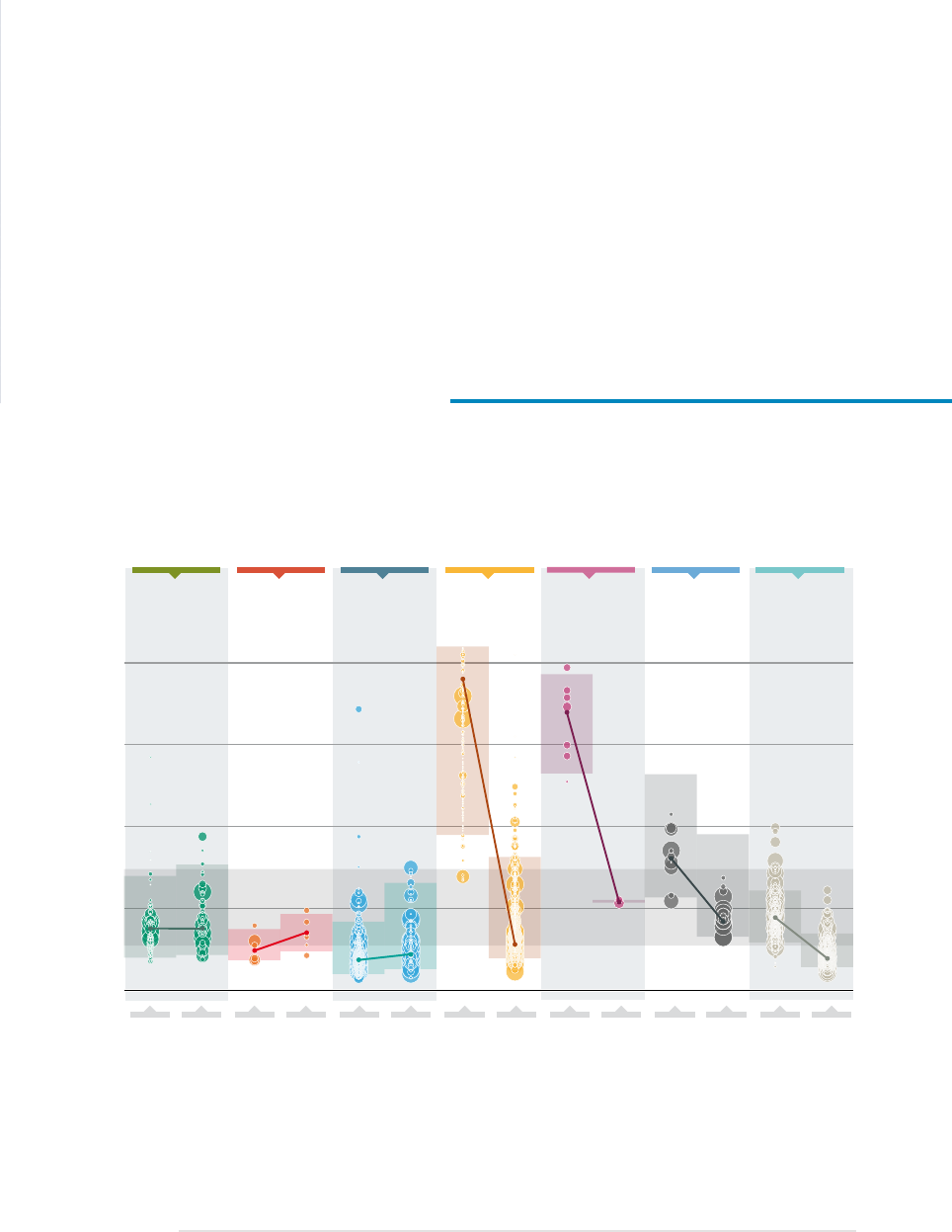
41
CHAPTER 1
FIGURE 1.1 Global LCOE of newly commissioned utility-scale renewable power generation
technologies, 2010 and 2020
Fossilfuel
costrange
0
0.1
0.4
0.2
0.3
Biomass Geothermal Hydropower Solar
photovoltaic
Concentrating
solar power
Oshore
wind
Onshore
wind
th
percentile
th
percentile
Capacity (MW)
100≤ 1 200 ≥ 300
2010 2020 2010 20202010 2020 2010 20202010 2020 2010 20202010 2020
2020 USD/kWh
Source: (IRENA, 2021b)
The costs of renewable energy have
continued to decline. Solar PV and
wind are increasingly the cheapest
sources of electricity in many markets.
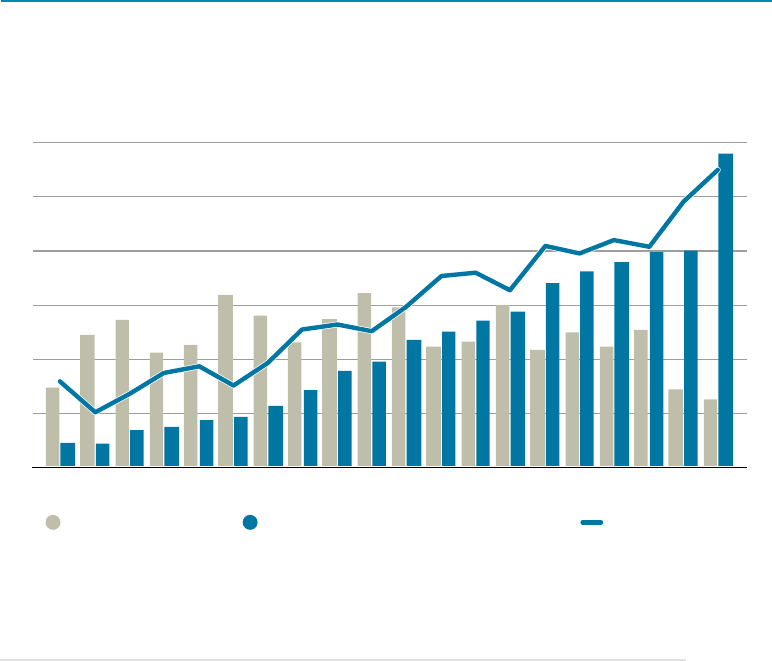
42
WORLD ENERGY
TRANSITIONS OUTLOOK
More renewable power capacity was added to the grid annually than all fossil fuels and nuclear
combined in the seven years between 2013 and 2020. The share of renewable energy in electricity
generation also increased steadily. Renewable power technologies now dominate the global market
for new electricity generation capacity. Despite the pandemic’s detrimental effects on most global
supply chains, more than 260gigawatts (GW) of renewable generation capacity – a record level
– was added globally in 2020 (Figure 1.2). This is more than four times the capacity added from
other sources and nearly 50% more than the 2019 addition (IRENA, 2021a). The upward trend in
these shares reflects not only the rapid and increasing growth in the use of renewables but also a
a decline in the growth of non-renewable capacity, following net decommissioning across many
years in some regions. The impact of the pandemic on wind and solar PV has been much smaller
than anticipated and both sources have continued dominating new capacity installations, showing
the resilience and momentum of the renewables industry. A total of 111GW of wind power were
installed in 2020, compared to 60GW in 2019; solar PV additions reached 127GW in 2020 (IRENA,
2021a). As renewable electricity generation capacity increases so does the share of renewables
in electricity generation, which increased from 20% to nearly 28% in the years 2010-2020 (IEA,
2020b). This capacity growth is concentrated in a limited number of countries and regions.
FIGURE 1.2 Share of new electricity capacity, 2001-2020
15
30
45
60
75
45
90
135
180
225
New capacity
non-renewables (GW)
New capacity
renewables (GW)
0
Annual capacity installations (GW/yr)
20132001 20152009 201720052003 20112007 2020
90
0
270
Share of new electricity generating capacity (%)
Renewable share (%)
Based on IRENA’s renewable energy statistics.
Note: GW = gigawatt.

43
CHAPTER 1
A record level of more than 260 GW
of renewable generation capacity was
added globally in 2020. This is more
than four times the capacity added
from other sources and nearly
50% more than the 2019 addition.
Growing shares of variable renewable energy (VRE), such as solar and wind in power systems,
complicate the balancing of supply and demand, raising system requirements. To effectively
manage large VRE shares, a wide range of innovations are being implemented around the
world (IRENA, 2019a). Significant progress has been made in battery storage, digital technologies
(i.e., Internet of Things, artificial intelligence, big data), as well as new and smart grids (mini-grids
and super grids), contributing to better management of a power sector that is seeing the increasing
integration of variable renewables. On the business and regulatory side, new and innovative
models (i.e., aggregators, pay-as-you-go and community ownership), as well as market regulations
are empowering consumers while also helping manage the greater shares of VRE generation.
Aggregators’ business models are picking up, as well. The global market for virtual power plants
is projected to grow from less than USD1billion in 2019 to around USD2.85billion by 2027, with
a compound annual growth rate of 27.2% (FBI, 2020).
Capital is increasingly moving to take advantage of the most attractive investment opportunities
at this time of transition. Anticipating that demand for fossil fuels will soon peak as new energy
technologies continue their rapid growth, financial markets are allocating capital in new ways. After
the shock induced by the COVID-19 pandemic in March 2020, investors became enthusiastic about
the opportunity presented by renewables, which resulted in a spike in the value of clean energy
stocks (Figure 1.3). Although the S&P Global Clean Energy Index followed a downward trend from
the beginning of 2021, in the five years from May 2016 to May 2021, the index was up by 22%, while
the fossil-fuel-heavy S&P 500 Energy Index was down by 4%, suggesting an emerging trend in
financial markets towards cleaner energy assets.
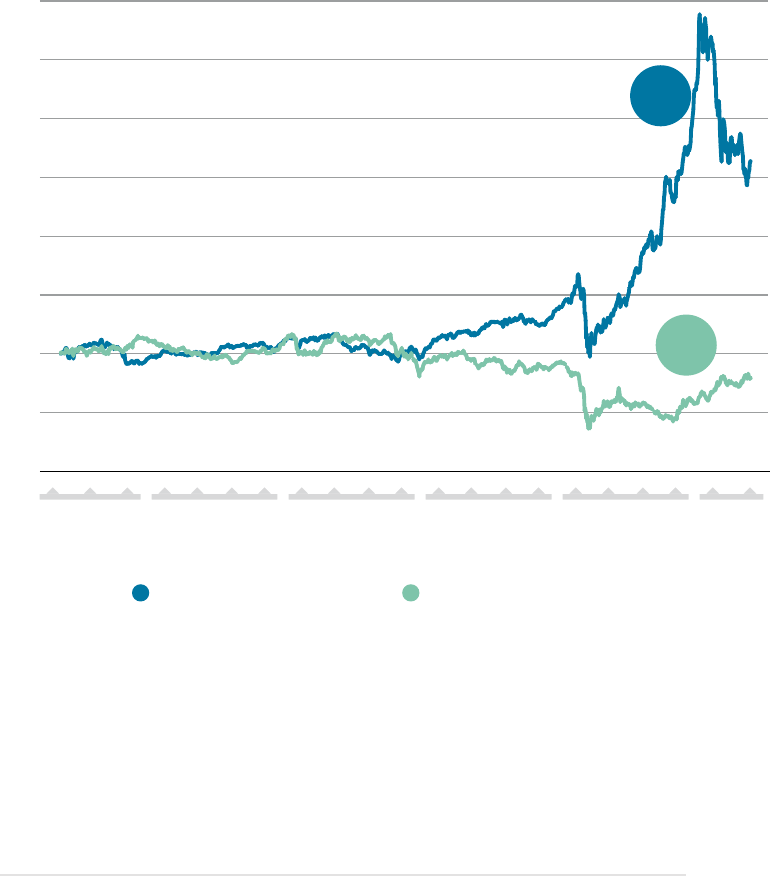
44
WORLD ENERGY
TRANSITIONS OUTLOOK
FIGURE 1.3 New energy vs. old energy: S&P Global Clean Energy and Energy Indices,
24 May 2016 to 24 May 2021
0
50
100
150
200
250
300
350
400
May
2021
Feb
2021
Nov
2020
Aug
2020
May
2020
Feb
2020
Nov
2019
Aug
2019
May
2019
Feb
2019
Nov
2018
Aug
2018
May
2018
Feb
2018
Nov
2017
Aug
2017
May
2017
Feb
2017
Nov
2016
Aug
2016
May
2016
+22%
-4%
S&P Global Clean Energy Index S&P 500 Energy Index
Rebased to 24 May 2021
Source: S&P Dow Jones Indices LLC, 2021.

45
CHAPTER 1
In 2020, investment in the global energy transition hit a record high of USD524billion, having grown
steadily for over 15years (Figure 1.4) (BNEF, 2021a).
2
Renewable energy technologies dominated
these investment flows, though their share decreased over time (from almost 90% in 2005-2009
to 70% in 2016-2020) as other energy transition technologies attracted increasing volumes of
capital. In addition, investments in energy efficiency averaged just above USD250billion during
2014-2019 (IEA, 2020a).
Investments in electrified transport are also on the rise, as policies supporting the electrification
of transport gain importance. In 2017, at least 60 countries and 40 jurisdictions at the sub-national
level had set objectives for the deployment of electric vehicles (REN21, 2018). By the end of 2019,
at least 13 jurisdictions had introduced financial incentives to support their deployment (REN21,
2020). Policies to support electric vehicles – including public procurement, public support for
charging infrastructure, congestion charging, free parking and preferred access – have supported
a surge in uptake. All of the top markets for electric vehicles to date (e.g., China, Norway and the
United States) have introduced such policies.
Investments in electric heat have also increased in the past couple of years as more countries
adopted financial incentives for their installation such as grants, rebates, tax incentives and loan
programmes. In 2019, France, Germany and Lithuania implemented instruments to support the
phase-out of inefficient fossil fuel boilers and the adoption of heat pumps.
2 This figure measures investments in renewables (excluding large hydropower), electrified heat, electrified
transport, energy storage, hydrogen and carbon capture and storage (CCS). Including investments in energy
eciency, the total rises to almost USD 800 billion.
Investors and financial markets are
anticipating the energy transition and
already allocating capital away from
fossil fuels and towards energy transition
technologies, such as renewables.
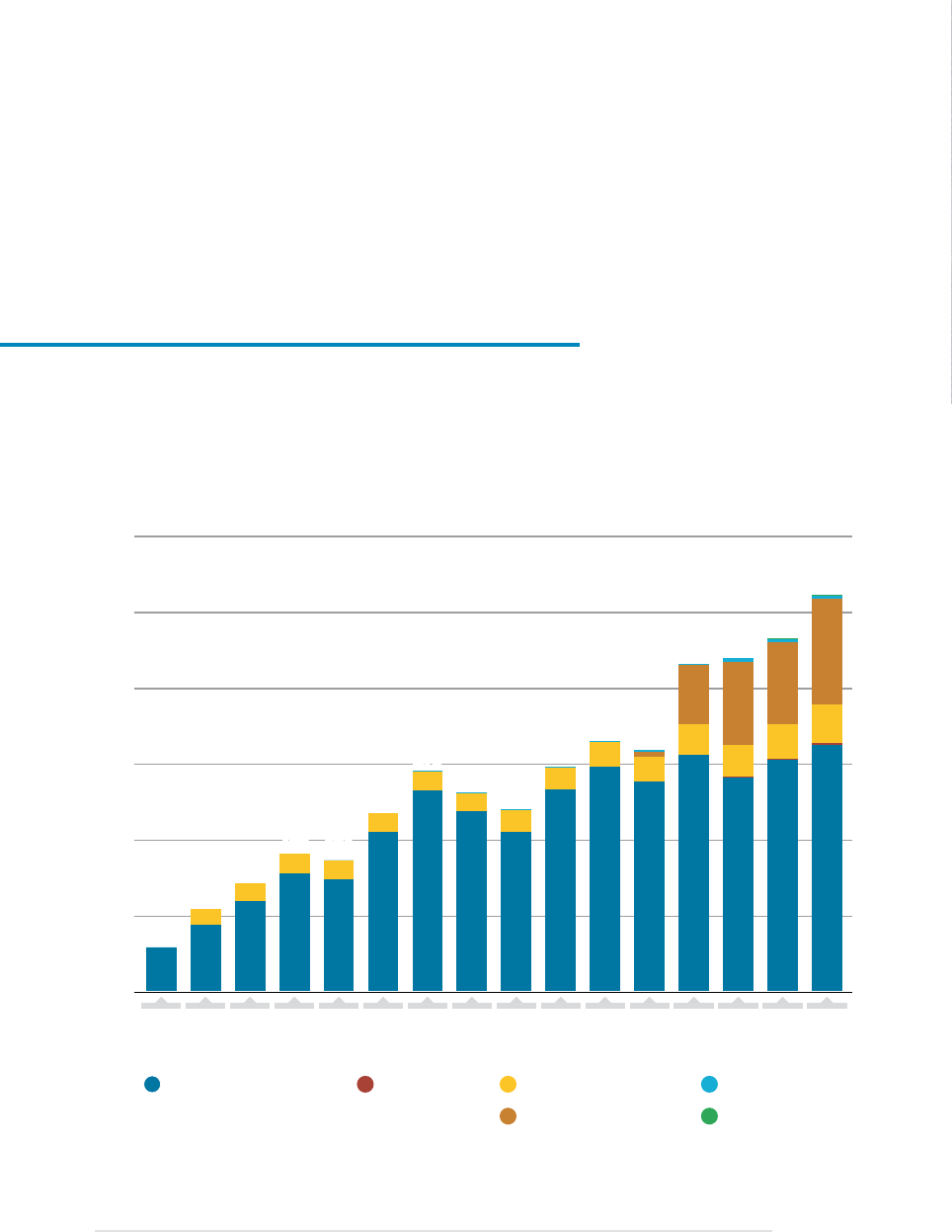
46
WORLD ENERGY
TRANSITIONS OUTLOOK
6060
110
110
143
143
183
183
174
174
236
236
291
291
263
263
241
241
297
297
331
331
319
319
433
433
441
441
467
467
524
524
Renewable energy
(excluding large
hydopower)
CCS Electrified heat
Electrified transport
Energy storage
Hydrogen
1.
2.
3.
4.
5.
6.
Renewables
Energy conservation and eciency
Electrification in the end-use sectors
Hydrogen and its derivatives
CCS and CCU
BECCS and other carbon removal measures
2005 2006 2007 2008 2009 2010 2011 2012 2013 2014 2015 2016 2017 2018 2019 2020
0
100
200
300
400
500
600
USD billion
87
%
90
%
90
%
88
%
91
%
91
%
89
%
86
%
86
%
84
%
82
%
100
%
72
%
64
%
66
%
62
%
10
%
10
%
9
%
9
%
27
%
23
%
25
%
18
%
10
%
9
%
10
%
12
%
9
%
9
%
10
%
14
%
14
%
16
%
18
%
FIGURE 1.4 Global investment in energy transition technologies, 2005-2020
Source: BNEF 2021a.
Note: BNEF data exclude investments in large hydropower (i.e., greater than 50 MW), estimated at USD 28 billion on average per
year between 2015 and 2019. CCS = carbon capture and storage.
Despite the COVID-19 pandemic, investment
in energy transition technologies reached an
all-time high of USD 524 billion in 2020 – up
to almost USD 800 billion if energy efficiency
measures are considered.

47
The number of countries with renewable energy policies has grown significantly. In 2019,
143 countries had policies for renewables in the power sector compared with 117 in 2014 (REN21,
2020). As market conditions evolve alongside the maturity and competitiveness of technologies,
the preferred policy instruments have adapted over time. For instance, competitively set pricing
mechanisms for renewable power are replacing administratively determined tariffs. The number
of countries adopting renewable energy auction schemes have increased from 16 in 2010 to 109
in 2020. During this period, the weighted global average price of contracted solar energy fell
from USD250/megawatt hours (MWh) to USD56/MWh and that of onshore wind decreased from
USD 75/MWh to USD 48/MWh (IRENA, 2019c). As the share of renewable electricity has grown,
integration, flexibility and power market design have also come to the fore in policy design and
implementation.
Policies to promote the use of renewable energy in end-use sectors have received less attention. In
2019, 61countries had introduced heating and cooling policies (IRENA, 2020c). Financial policies,
such as investment subsidies, grants, rebates and tax credits are more common than regulatory
policies such as renewable heating mandates. Given the context-specific and decentralised
nature of heating and cooling needs, local governments also play a key role. At least 110cities and
municipalities are targeting 100% renewable heating and cooling. In the transport sector, 70countries
have introduced renewable energy policies largely focused on road transport and the use of liquid
and gaseous biofuels.
It is abundantly clear that accelerating the pace and depth of the energy transition will require a
continuing focus on the power sector, along with much greater policy efforts in electrification, as well
as the heating and cooling and transport sectors.
Also, countries are increasingly adopting policies dedicated to off-grid renewables. Tailored
regulations for mini-grids have been adopted in countries such as Nigeria, Tanzania, Uganda, Mali,
Senegal, India and Indonesia, driving investments in these technologies. The regulations usually
address aspects related to licensing and legal provisions, tariff setting, the implications of main-grid
arrival and public financing support.
THE EVOLVING
POLICY LANDSCAPE
1.2
WORLD ENERGY
TRANSITIONS OUTLOOK

48
RENEWABLE ENERGY
INVESTMENTS
1. 3
WORLD ENERGY
TRANSITIONS OUTLOOK
With falling costs, renewable energy investments grew steadily over the past 15 years,
from USD70billion in 2005 to just over USD300billion in 2019. In 2020, despite the
dramatic impacts of the COVID-19 pandemic, investments in renewables reached over
USD 320 billion (BNEF, 2021a). Solar and wind technologies have consolidated their
dominance over time, having attracted combined shares of total investments above
90% since 2014 (Frankfurt School-UNEP Centre and BNEF, 2020; BNEF, 2021a; IRENA
and CPI, 2020) (Figure1.5).
Despite their steady growth overall, renewable energy investments remained
concentrated in a handful of regions and countries. The Asia-Oceania region, led
by China, regularly attracts the largest share of renewable energy investments (on
average, 55% during 2005-2019). Europe and the United States follow, with average
shares of 20% and 16%, respectively, during 2005-2019. Regions dominated by developing
and emerging economies remained consistently under-represented, attracting only
about 15% of global investments in renewables (Frankfurt School-UNEP Centre and
BNEF, 2020; IRENA and CPI, 2020) (Figure 1.6).
Global annual renewable energy
investments increased almost five
fold between 2005 and 2020, with
solar and wind technologies recently
accounting for about 90% annually.
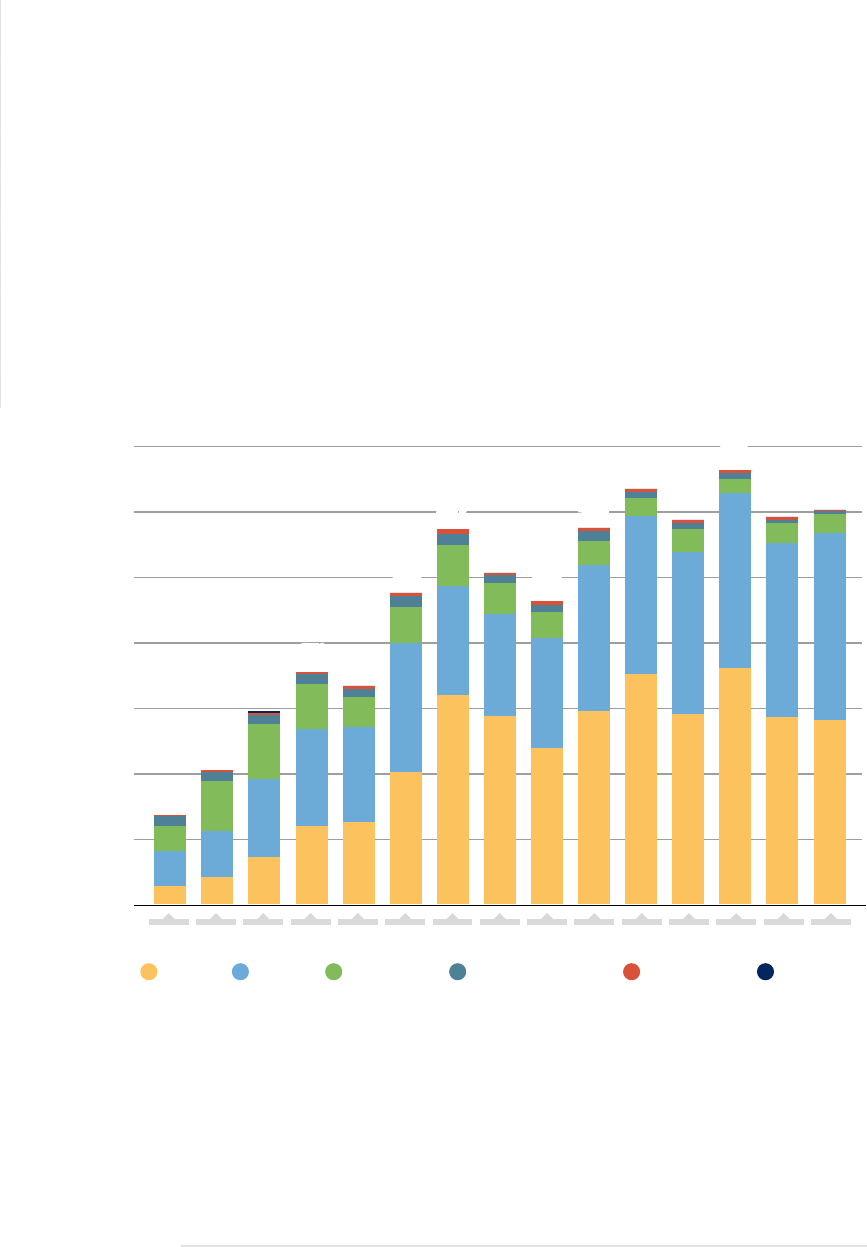
49
CHAPTER 1
69
326
302
296
331
331
294
317
288
288
232
232
254
287
287
239
239
168
178
178
147
103
Solar Wind Bioenergy Small hydropower Geothermal Marine
0
50
100
150
200
250
300
350
USD billion
2005 2006 2007 2008 2009 2010 2011 2012 2013 2014 2015 2016 2017 2018 2019
2020
21
%
22
%
38
%
28
%
34
%
37
%
25
%
40
%
29
%
34
%
42
%
19
%
38
%
43
%
14
%
43
%
41
%
11
%
56
%
29
%
11
%
57
%
31
%
9
%
52
%
36
%
9
%
51
%
39
%
6
%
56
%
38
%
4
%
50
%
42
%
6
%
55
%
40
%
48
%
45
%
5
%
47
%
47
%
5
%
51
%
46
%
3
%
FIGURE 1.5 Global annual renewable energy investments by technology, 2005-2019
Source: Frankfurt School-UNEP Centre and BNEF 2020.
Note: BNEF data excludes investments in large hydropower (i.e., greater than 50 MW), estimated at USD 28 billion on
average per year between 2015 and 2019.
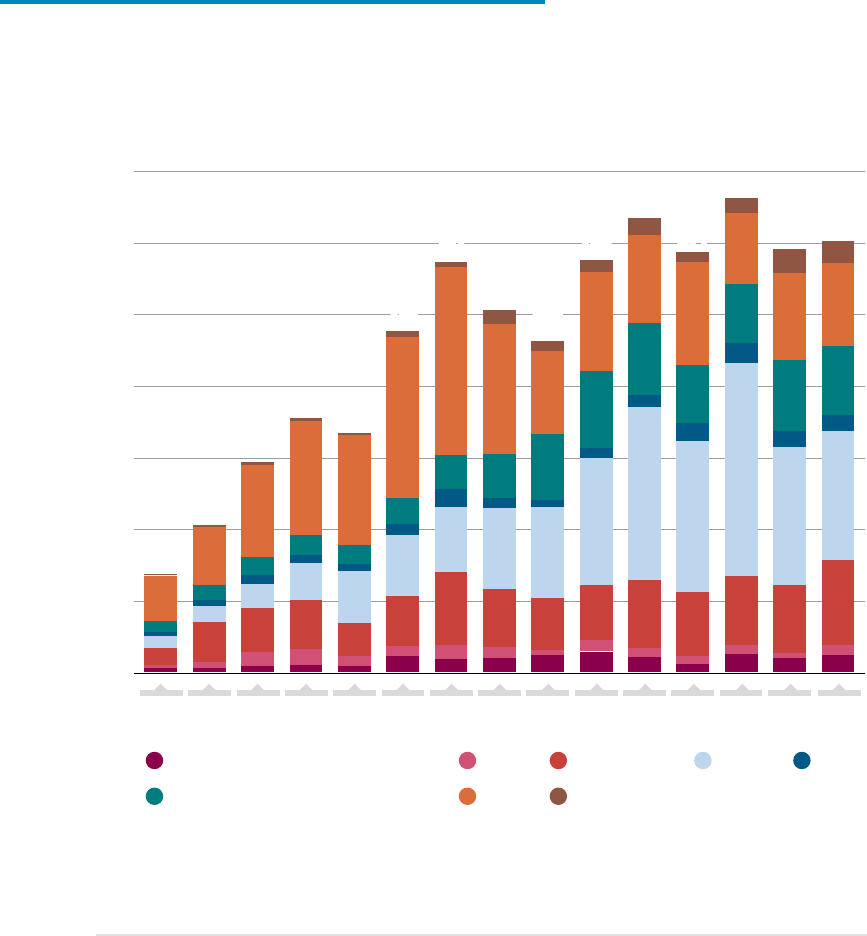
50
WORLD ENERGY
TRANSITIONS OUTLOOK
6969
103
103
147
147
178
178
168
168
239
239
287
287
254
254
232
232
288
288
317
317
294
294
331
331
296
296
302
302
Americas (excl. United States and Brazil)
Asia-Oceania (excl. China and India)
China India
2005 2006 2007 2008 2009 2010 2011 2012 2013 2014 2015 2016 2017 2018 2019
0
50
100
150
200
250
300
Europe Middle East and Africa
Brazil United States
350
USD billion
46
%
39
%
28
%
21
%
12
%
44
%
44
%
46
%
46
%
36
%
25
%
24
%
24
%
15
%
21
%
19
%
19
%
47
%
15
%
22
%
18
%
16
%
22
%
27
%
31
%
38
%
36
%
45
%
32
%
30
%
20
%
14
%
15
%
18
%
16
%
16
%
13
%
15
%
15
%
15
%
16
%
20
%
FIGURE 1.6 Global annual renewable energy investments by location, 2005-2019
Source: Frankfurt School-UNEP Centre and BNEF 2020.
Note: BNEF data excludes investments in large hydropower (i.e., greater than 50 MW), estimated at USD 28 billion on
average per year between 2015 and 2019.
Annual investments in renewables remain
concentrated in a handful of countries,
with developing and emerging markets
still attracting low levels of investments.
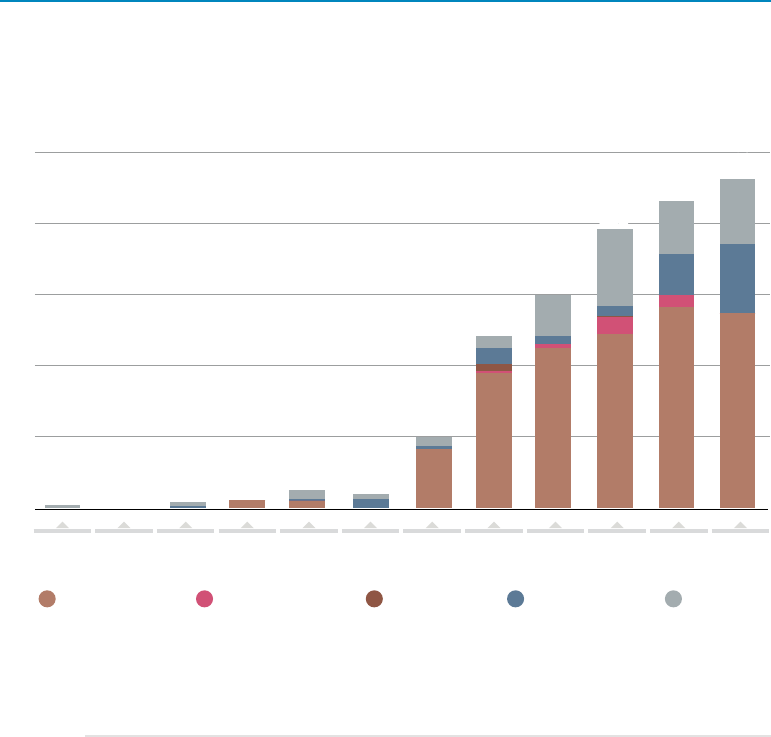
51
CHAPTER 1
Annual financial commitments to off-grid renewables supporting energy access in emerging
and developing countries reached USD460million in 2019, up from just USD6million in 2008.
Investments remained very low until 2014 and have since grown at remarkable rates (Figure 1.7).
Yet off-grid renewables still represent only 1% of the overall finance for projects to expand energy
access in access-deficit countries. The majority of financing went to Sub-Saharan Africa, where
570million people still lack access to electricity (IEA et al., 2021). The region attracted 65% of
cumulative investments over 2008-2019 (or USD1.3billion). While over half of this was directed
towards East African countries, West Africa has picked up more in recent years. Solar home
systems for residential use attracted the majority of investments during this period, though there
is recent growth in the share of capital going to renewable energy solutions for commercial and
industrial purposes (mainly mini-grids). This focus on productive uses is essential to accelerate
economic growth, especially in rural areas.
66
1
1
10
10
13
13
27
27
21
21
101
101
243
243
300
300
391
391
429
429
460
460
MultipleMiddle East South and
Southeast Asia
Sub-Saharan
Africa
Latin America
and Caribbean
USD million
0
100
200
300
400
500
2008 2009 2010 2011 2012 2013 2014 2015 2016 2017 2018 2019
59
%
21
%
13
%
9
%
66
%
62
%
75
%
78
%
83
%
20
%
17
%
27
%
19
%
FIGURE 1.7 Annual commitments to o-grid renewable energy by region, 2008-2019
Source: IRENA analysis based on Wood Mackenzie (2020).

52
WORLD ENERGY
TRANSITIONS OUTLOOK
The lion’s share of renewable energy financing is provided by the private sector, which accounted
for 86% of investments in 2013-2018. Private capital came mainly from project developers (46%) and
commercial financial institutions (22%). Institutional investors (including pension funds, insurance
companies, sovereign wealth funds, and endowments and foundations), which represent a key
capital pool for accelerating the energy transition, provided only a small share of total investment –
2% of total private capital in 2017-2018 (IRENA and CPI, 2020).
Globally, public finance accounts for only 14% of total direct investments in renewable energy assets.
Most of this flows via development finance institutions. In addition to direct public investment
in projects, considerable public resources are spent to create an enabling environment for the
deployment of renewable energy through the promulgation of regulatory instruments, fiscal
incentives, and other policies and measures. IRENA estimated that in Western Europe, government
expenditure on measures to support renewables in 2015 was almost five times higher than direct
investment in renewable energy projects (USD 66 billion as compared to USD 14 billion). When
this additional expenditure is considered, the share of public financing spikes to over 55% of total
renewable energy investment in 2015 in the region, compared to less than 20% if only direct public
investment is considered (IRENA and CPI, 2018).
Public resources are crucial to lower risks, overcome initial barriers, attract private investors and
bring new markets to maturity. As such, they play an especially vital role in emerging and developing
countries where, aggravated by the COVID-19 crisis, investors’ risk perception is comparatively high.
As shown in Figure 1.8, public financing from development finance institutions and government
agencies in these countries jumped from around USD 3billion in 2005-2008 to USD 18 billion in
2009, and has since fluctuated, reaching a record-high USD 25 billion in 2017 before dipping in
2018 and 2019. Since 2010, public support for renewable energy in developing countries has been
progressively directed away from hydropower towards less established technologies, such as solar
and wind, as well as enabling infrastructure including grids and energy storage.
While providing, on average, only 14%
of annual investments, the public sector
remains key to lower risks, overcome
initial barriers, attract private investors
and bring new markets to maturity.
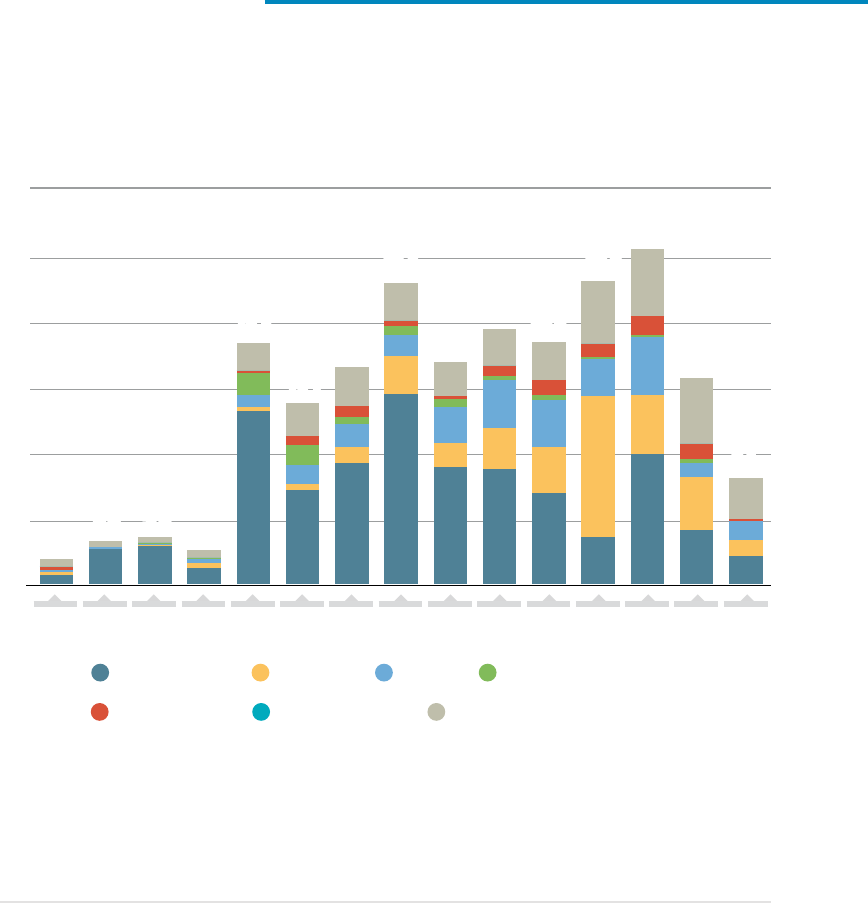
53
CHAPTER 1
BioenergyHydropower Solar Wind
Geothermal Marine energy Multiple/other renewables
2005 2006 2007 2008 2009 2010 2011 2012 2013 2014 2015 2016 2017 2018 2019
USD billion
30
25
20
15
10
5
0
20
%
32
%
39
%
21
%
15
%
14
%
15
%
13
%
1.91.9
3.3
3.3
3.6
3.6
2.7
2.7
18.3
18.3
16.4
16.4
22.8
22.8
16.8
16.8
19.3
19.3
18.3
18.3
22.9
22.9
25.3
25.3
15.6
15.6
8.1
8.1
13.7
13.7
18
%
18
%
12
%
81
%
81
%
48
%
72
%
53
%
56
%
63
%
13
%
7
%
11
%
16
%
19
%
46
%
18
%
26
%
15
%
18
%
17
%
12
%
19
%
19
%
16
%
10
%
10
%
53
%
45
%
38
%
16
%
39
%
26
%
27
%
FIGURE 1.8 Public annual renewable energy investments in emerging and developing
countries by technology, 2005-2019
Source: IRENA, 2021c.
Beyond direct investments in projects,
considerable public resources are employed
for the implementation of regulatory
instruments, fiscal incentives and other policies
and measures in support of renewables.

54
JOBS1. 4
WORLD ENERGY
TRANSITIONS OUTLOOK
According to the most recent available estimates in 2019, the renewable energy
sector worldwide employed at least 11.5 million people, directly and indirectly.
The progress achieved in deploying renewable energy has yielded impressive socio-
economic benefits over the past several years, including employment along the value
chain. Worldwide renewable energy employment has steadily grown since 2012, when
IRENA first undertook its annual assessment. That year, an estimated 7.3million persons
were employed in the sector. Figure 1.9 shows the evolution of IRENA’s employment
estimates, which indicate that the solar PV industry is the single-largest employer in
the sector, followed by bioenergy, hydropower and wind power.
Jobs are concentrated in a number of countries that are the leading markets for the
installation and manufacture of renewables-related equipment. Beyond this, jobs are
being created in construction and in operations and maintenance across a wide range
of countries. As countries work to leverage their domestic industries and capabilities,
they may be able to generate additional employment in value-added activities in
manufacturing and services.
Women comprise only 32% of the renewable energy workforce. While this is significantly
higher than the 22% seen in the energy sector overall, it is evident women represent a
pool of talent yet to be fully utilised.
Renewable energy
deployment has created
growing employment
along the value chain.

55
CHAPTER 1
TotalTotalTotal
SubtotalSubtotalSubtotal
Hydropower (direct jobs only)
Solar
photovoltaics
Bioenergy Wind energy Solar heating
and cooling
Others
0
2
4
6
8
10
2012 2013 2014 2015 2016 2017 2018 2019
Million
jobs
3
2
1
0
1.961.96
11.4611.4611.46
2.052.05
10.9810.9810.98
1.991.99
10.5310.5310.53
2.062.06
10.1310.1310.13
2.162.16
10.0410.0410.04
2.042.04
9.509.509.50
2.212.21
8.558.558.557.287.287.28
9.59.59.59.09.09.08.58.58.58.18.18.17.97.97.97.57.57.56.36.36.35.65.65.6
1.661.66
1.361.361.36
2.272.272.27
2.492.492.49
2.992.992.99
1.031.031.03
0.760.760.76
0.940.940.94
0.200.200.20
1.081.081.08
2.882.882.88
2.772.772.77
3.093.093.09 3.373.373.37
3.683.683.68 3.753.753.75
3.583.583.58
3.183.183.18
3.053.053.05
2.742.742.74
1.161.161.16
1.151.151.15
1.161.161.16
0.800.800.80
0.180.180.18
0.810.810.81
0.160.160.16
0.830.830.83
0.240.240.24
1.171.171.17
0.820.820.82
0.180.180.18
0.190.190.19
2.502.502.50
0.830.830.83
0.500.500.50
0.230.230.23
2.402.402.40
0.750.750.75
0.890.890.89
0.220.220.22
FIGURE 1.9 Global renewable energy employment by technology, 2012-2019
Source: IRENA, 2020a.

56
WORLD ENERGY
TRANSITIONS OUTLOOK
The full impact of the COVID-19 pandemic on employment in renewable energy is not yet known
but jobs were affected by repeated lockdowns and other restrictions which put pressure on supply
chains and constrained many economic activities. The ability of companies and industries to cope
with lockdowns and supply chain disruptions differs enormously, as does their ability to switch to
remote working arrangements. Renewable energy fared well compared with conventional energy,
but uncertainties and disruptions dotted the way and employment impacts varied by country,
renewable energy technology, segment of the renewables value chain and end-use sector. Broadly
speaking, in many countries, a cycle of delays in spring 2020 was followed by great surges of
activity later in the year.
Finally, indications are that employment in off-grid renewables suffered, given that capacity
additions during 2020 were at a considerably lower level than in 2019, and sales of solar home
systems and other solar products were at the lowest level since 2015.
These impacts reinforce the importance of a comprehensive policy framework to align short-term
recovery needs with long-term decarbonisation pathways, and to ensure steady socio-economic
benefits and a just transition. Deployment policies, together with enabling and integrating policies,
remain essential to provide an enabling environment in which the energy transition can unfold.
Paired with such measures are a set of structural policies to address challenges like fossil fuel
dependence and a variety of other commodity and technological dependencies. In addition, a
just transition package (including education and skill training, labour market measures, social
protection, regional development efforts) can help overcome potential misalignments between
job losses and gains, generate decent jobs and ensure that the energy industry workforce of the
future is reflective of diversity in society offering opportunities for women, youth and minorities.
Though renewables jobs were
affected by COVID-19 as well,
the sector fared better than
conventional energy.

57
While the energy transition has been remarkable to date, progress falls woefully short of what
is needed to limit the global temperature rise to 1.5°C by 2050. Trends to date have shown the
way towards a decarbonised sector in 2050 and offered some insight into potential socio-economic
impacts. But they have had little or no effect on rising emissions. Despite clear evidence of human-
caused climate change, widespread support for the Paris Agreement, and the prevalence of
clean, economical and sustainable energy options, energy-related carbon dioxide (CO
2
) emissions
increased 1.3% annually, on average, over the period 2014 to 2019. While 2020 was an outlier due to
the pandemic – energy-related CO
2
emissions declined by 5.8% – a rebound looks very likely, at least
in the short term (IEA, 2021a).
Holding the line at 1.5°C means both reaching net zero emissions by 2050 and ensuring a rapid
decline in emissions, beginning now (Figure 1.10).
Under IRENA’s 1.5°C Scenario, process- and energy-related cumulative CO
2
emissions from 2021
to 2050 would result in nearly 500 gigatonnes of carbon dioxide (GtCO
2
). In alignment with the
Intergovernmental Panel on Climate Change’s report on limiting global warming to 1.5°C by 2050
(IPCC, 2018), IRENA plots the way to a steep and continuous downward trajectory towards a
45% decline in carbon dioxide (CO
2
) emissions by 2030 and net zero by 2050. To get there, it is
imperative that land-use-related emissions decline and then go negative in the years leading up
to 2050 so that the overall burden on the remaining carbon budget is at least neutral.
For the moment, however, the speed of the energy transition is far from what is needed to stay in
line with the Paris Agreement. Policies presently in place
3
– referred to here as the Planned Energy
Scenario – would merely stabilise global emissions, with a slight drop towards 2050. Overall,
the pace of future projections indicated in the Planned Energy Scenario falls far short of what is
needed for a 1.5°C limit. The time dimension is crucial, and a radical shift is required, starting today,
based largely on readily available renewable energy and energy efficiency technologies that
can be scaled up now.
OUTLOOK FOR ACHIEVING
THE 1.5°C GOAL
1.5
WORLD ENERGY
TRANSITIONS OUTLOOK
3 Based on governments’ current energy plans and other planned targets and policies, including the first round of
Nationally Determined Contributions under the Paris Agreement (as of 2019).
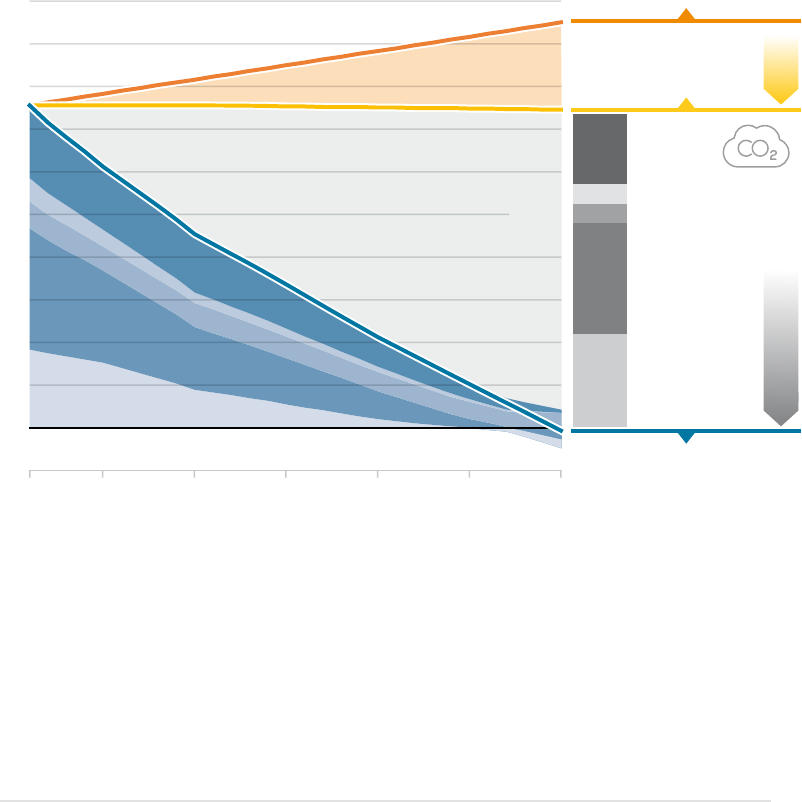
58
WORLD ENERGY
TRANSITIONS OUTLOOK
50
45
40
35
30
25
20
15
10
5
0
-5
2021 2025 2030 2035 2040 2045 2050
Removals
Net annual CO
2
emissions (GtCO/yr) 2050
-11.0 GtCO-11.0 GtCO
-13.0 GtCO-13.0 GtCO
-2.2 GtCO-2.2 GtCO
-2.3 GtCO-2.3 GtCO
-8.4 GtCO-8.4 GtCO
Planned Energy Scenario
36.5 GtCO
Baseline Energy Scenario
46.5 GtCO
1.5°C Scenario
-0.4 GtCO
Reductions
in sectors
in 2050
from PES
to 1.5-S
Buildings
Buildings
Transport
Transport
Other
Other
Power and heat plants
Power and heat plants
Industry
Industry
FIGURE 1.10 Projected trends in global CO
2
emissions under three scenarios, 2020-2050
Based on IRENA’s analysis.
Note: The blue shaded areas in the figure represent the remaining net CO
2
emissions in corresponding sectors in
the 1.5°C Scenario and the grey area represents the reductions in CO
2
emissions in the 1.5°C Scenario compared
to the PES. Industry includes energy and process-related CO
2
emissions. International bunkers are included in
transport emissions. Others include emissions from non-energy uses and other sectors such as agriculture, forestry,
etc. Emissions in industry and power and heat generation plants include CO
2
emissions captured by carbon removal
measures such as bioenergy with carbon capture and storage. As a result, towards 2050, these two sectors become
net negative, i.e., the CO
2
captured more than compensates remaining CO
2
emissions in those sectors. Overall, the net
CO
2
emissions in the 1.5°C Scenario in 2050 would reach -0.4 Gt. GtCO
2
/yr = gigatonnes of carbon dioxide per year;
PES = Planned Energy Scenario.

59
Under the Planned Energy Scenario, annual emissions reach 36.5 GtCO
2
in 2050. To achieve the
1.5°C Scenario, emissions would have to drop to net zero in all sectors. Additional efforts in
sectors such as power, heat and industry would be needed, with negative emissions delivering the
necessary additional carbon reductions.
Aligned with the IPCC’s special report on limiting global warming to no more than 1.5°C by 2050
(IPCC, 2018), IRENA’s 1.5°C Scenario starts with the goal of reducing global CO
2
emissions by
following a steep and accelerated downward trajectory from now to 2030 and a continuous
downward trajectory thereafter, reaching net zero by 2050. Because the energy sector is currently
responsible for around 80% of anthropogenic CO
2
emissions, it has a central role to play in delivering
the required decarbonisation.
This is achievable but extremely challenging, requiring urgent action on multiple fronts. Fossil fuel
use would have to decline by more than 75% by 2050 (Figure1.11). Fossil fuels would still have roles
to play, mainly in power and to an extent in industry, providing 19% of the primary energy supply in
2050. Oil and coal would drop the fastest, while natural gas would peak around 2025 and decline
thereafter. The global production of oil in 2050 is expected to be 85% lower than today. Most of it
would be used in industry for petrochemicals (non-energy uses, close to 40%), and in aviation and
shipping. Coal production would decline even more drastically, from around 5 750 million tonnes
in 2018 (160 exajoules [EJ]) to 240 million tonnes per year (7 EJ) in 2050. In the power sector,
coal generation would be cut in half by 2030, in half again by 2040 and phased out by 2050. The
remaining coal demand would be largely restricted to industry, mostly for steel production (coupled
with carbon capture and storage) and to a certain extent in chemicals production.
Natural gas would be the largest remaining source of fossil fuel in 2050, making up 70% of total
fossil fuel supply and 13% of total primary energy supply (down from 26% in 2018). In 2050, natural
gas would primarily be used in industrial processes, blue hydrogen production (coupled with
carbon capture and storage) and power plants.
CHAPTER 1
In the Planned Energy Scenario annual
emissions reach 36.5 GtCO
2
in 2050.
For the 1.5°C Scenario, emissions need
to drop to net zero by 2050.
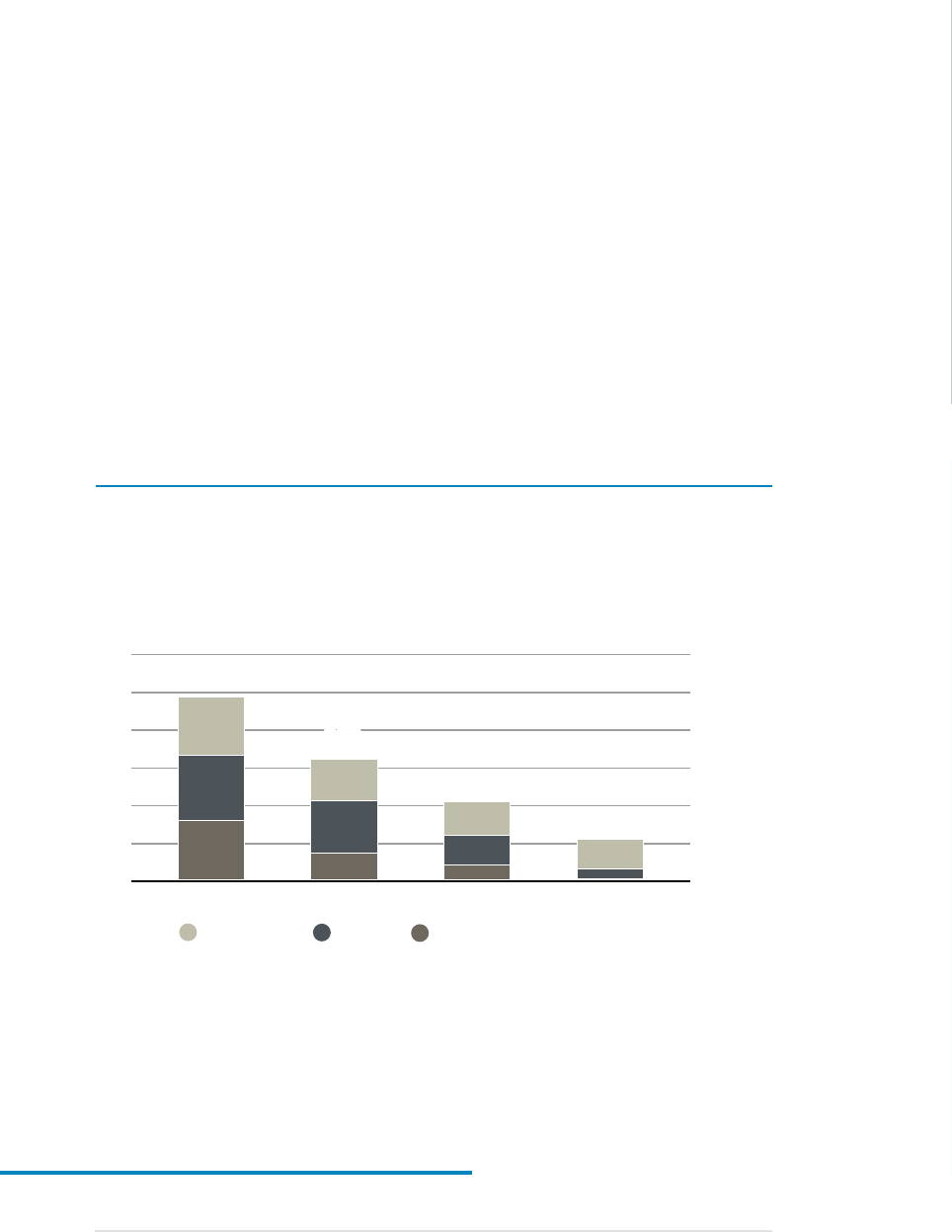
60
Fossil fuel companies could more speedily shift to investing in clean energy technologies as part of
their business models. Staying under 1.5°C implies that current fossil fuel investment must be halved
in the coming years and decades. Planning must begin now to minimise the impact of significantly
lower fossil fuel demand on the sector and related services. Indicating the importance of urgent
action, IRENA (2019d) estimates that, in a pathway towards a 2°C limit, the value of assets stranded
in the upstream fossil fuel sector would total USD3.3trillion by 2050. Delaying action could cause
this value to rise to an alarming USD6.5trillion by 2050 – almost double. Planning in advance also
supports a just transition, assisting in the reallocation and creation of jobs and services.
With accelerated uptake of renewables, fossil fuel use would drop significantly from almost
487EJ in 2018 to 112EJ in 2050. This implies that only a quarter of today’s fossil fuel demand would
remain by 2050.
WORLD ENERGY
TRANSITIONS OUTLOOK
100
200
300
400
500
600
Natural Gas
Coal
Oil
Fossil fuels primary supply (EJ)
0
487487
323
323
210
210
112
112
2018 2030 2040 2050
FIGURE 1.11 Primary supply of fossil fuels (exajoules), 2018 to 2050,
under the 1.5°C Scenario
Based on IRENA’s analysis.
Fossil fuel use would have to
decline by more than 75% by 2050.

61
Climate change, energy security, energy access and air pollution have placed a renewables-
based energy transition at the forefront of the national, regional and global discourse. Addressing
those problems using renewables will be indispensable if policy makers are to limit the global
temperature rise to 1.5°C by 2050, with net zero CO
2
emissions. Fortunately, renewables are
increasingly the lowest-cost source of electricity in many markets, capping a remarkable
decade of change for renewables-based generation of electricity, during which the cost of
utility-scale solar PV, for example, fell by 85%. The momentum of renewable energy is further
demonstrated by its resilience in the face of the COVID-19 pandemic.
Falling costs have prompted a substantial rise in capacity, to the point where renewable
power technologies now dominate the global market for new generation capacity. To meet the
challenges posed by greater shares of solar and wind energy in the power mix, rapid advances
have been made in digital technologies, battery storage, and new business models.
Policy instruments have evolved apace, with competitive pricing quickly overtaking
administratively determined tariffs. The number of countries adopting renewable energy
auction schemes increased from 16 in 2010 to 109 in 2020, driving down the average price of
solar energy. The number of countries with renewable energy policies has grown as well.
In 2019, 143 countries had policies for renewables in the power sector compared with 117 in 2014.
CONCLUSION1.6
WORLD ENERGY
TRANSITIONS OUTLOOK

62
In 2020, investment in the global energy transition hit a record high. Investments in electrified
transport are also on the rise, as policies supporting the electrification of transport gain traction.
Policies for the use of renewables in heating and cooling have received less attention, though signs
of progress are abundant.
Despite their growth overall, renewable energy investments remained concentrated in a few
regions and countries. The Asia-Oceania region, led by China, regularly attracts the largest share of
renewable energy investment (on average, 55% during 2005-2019). Europe and the United States
follow, with average shares of 20% and 16%, respectively, during 2005-2019. Regions dominated
by developing and emerging economies remained consistently under-represented, attracting
only about 15% of global investments. Yet, annual financial commitments to off-grid renewables
supporting energy access in emerging and developing countries reached USD 460 million in
2019, up from only USD6million in 2008.
Overall, most renewable energy financing is provided by the private sector – 86% in 2013-2018.
Private capital came mainly from project developers (46%) and commercial financial institutions
(22%). To date, conservative institutional investors have provided only a small share of financing,
though this is expected to change as the perceived risks of investment in renewables fall.
Although public finance accounts for only 14% of total direct investments in renewable energy
assets, considerable public resources are spent to create an enabling environment for the
deployment of renewable energy through the promulgation of regulatory instruments, fiscal
incentives, and other policies and measures. Public financing resources are crucial to lower risks,
overcome initial barriers, attract private investors and bring new markets to maturity. As such,
they play an especially vital role in emerging and developing countries where, aggravated by the
COVID-19 crisis, investors’ risk perception is comparatively high.
WORLD ENERGY
TRANSITIONS OUTLOOK
Climate change, energy security,
energy access and air pollution
have placed the energy transition
at the forefront of the national,
regional and global discourse.

63
The progress achieved in deploying renewable energy has yielded impressive socio-economic
benefits over the past several years, notably job gains all along the value chain. Most of the new
jobs are found in the countries that are the leading markets for the installation and manufacture
of renewables-related equipment. But employment is also being created in construction and in
operations and maintenance across a wide range of countries.
The full impact of the COVID-19 pandemic on employment in renewable energy is not yet known,
but renewable energy fared well compared with conventional energy. In many countries, a cycle
of delays in spring 2020 was followed by great surges of activity later in the year. These impacts
reinforce the importance of a comprehensive policy framework to align short-term recovery needs
with long-term decarbonisation pathways and to ensure steady socio-economic benefits and a just
transition.
Trends to date have shown the way towards a decarbonised sector in 2050 but they have had little
or no effect on rising emissions. Indeed, progress still falls woefully short of what is needed to hold
the rise in global temperature to 1.5°C by 2050. The time dimension is crucial and a radical shift
is required based on readily available renewable energy and energy efficiency technologies that
can be scaled up now. IRENA’s 1.5°C Scenario starts with the goal of reducing global CO
2
emissions
by following a steep and accelerated downward trajectory from now to 2030 and a continuous
downward trajectory thereafter, reaching net zero by 2050. This is achievable but extremely
challenging, requiring urgent action on multiple fronts, as explored in detail in Chapter 2.
CHAPTER 1
The time dimension is crucial and
a radical shift is required based on
readily available renewable energy
and energy efficiency technologies
that can be scaled up now.

02 TECHNOLOGICAL
AVENUES TO CLIMATE
TARGETS

The Paris Agreement sets out a global framework to avoid dangerous climate change by keeping
global warming below 2°C by 2050, while pursuing efforts to limit it to 1.5°C. Taking the agreement
as a starting point, IRENA performed an in-depth analysis to identify six components of an energy
transition robust enough to meet the 1.5°C climate goal, one that is in line with other energy scenarios
and studies. These components form the heart of this inaugural edition of the World Energy
Transitions Outlook.
Most of the technologies needed for an energy system producing net zero emissions of carbon
dioxide are already available. Although their costs must be further reduced, their deployment can
be accelerated through innovations – and it is imperative to ramp up deployment now. Over 90%
of the solutions required to meet the 2050 goal involve renewable energy through direct supply,
electrification, energy efficiency, green hydrogen, and bioenergy combined with carbon capture and
storage (BECCS).
Section 2.1 provides an overview of the 1.5°C Scenario, which represents IRENA’s suggested pathway
toward the Paris targets. Section 2.2 highlights solutions in key technological avenues to achieve
the 1.5°C climate future. Section 2.3 presents a comparison of energy scenarios from several
organisations that have put forward visions of a Paris-complaint energy future.
65
CHAPTER 2
Most of the technologies needed to reach
net zero carbon emissions globally by 2050
are available today. Renewable power,
green hydrogen and modern bioenergy will
dominate the world of energy in the future.

WETO outlines how carbon dioxide (CO
2
) emissions abatements would be allocated across
energy sources, practices, and uses (Figure 2.1) under the 1.5°C Scenario.
FIGURE 2.1 Carbon emissions abatements under the 1.5°C Scenario (%)
Note: Abatement estimates include energy and process-related CO
2
emissions along with emissions
from non-energy use. Renewables include renewable electricity generation sources and direct use
of renewable heat and biomass. Energy eciency includes measures related to reduced demand and
eciency improvements. Structural changes (e.g., relocation of steel production with direct reduced iron)
and circular economy practices are part of energy eciency. Electrification includes direct use of clean
electricity in transport and heat applications. Hydrogen and its derivatives include synthetic fuels and
feedstocks. CCS describes carbon capture and storage from point-source fossil-fuel-based and other
emitting processes, mainly in industry. BECCS and other carbon removal measures include bioenergy
coupled with CCS in electricity, heat generation, and industry.
CCS = carbon capture and storage; BECCS = bioenergy with carbon capture and storage; CCU = carbon
capture and utilisation; GtCO
2
= gigatonnes of carbon dioxide.
Abatements 2050
6 %
Renewables
(power and direct uses)
Energy conservation
and eciency*
Electrification in end use sectors
(direct)
BECCS and other carbon
removal measures
Hydrogen and its derivatives*
CCS and CCU industry
20 %
10 %
25 %
25 %
14 %
-36.9
GtCO
2
/yr
-36.9
GtCO
2
/yr
66
CONTEXTUALISING
THE 1.5°C
CLIMATE PATHWAY
2 .1
WORLD ENERGY
TRANSITIONS OUTLOOK

FIGURE 2.2 Renewable and non-renewable share of total primary energy supply in 2018 and
2050, PES and the 1.5°C Scenario (EJ/yr)
Note: Data include international bunkers and non-energy use of fuels for the production of chemicals and polymers.
1.5-S = 1.5°C Scenario; EJ/yr = exajoules per year; PES = Planned Energy Scenario; TPES = total primary energy supply.
Renewables, electrification and energy efficiency are the main pillars of the energy transition.
The global energy transition features the synergy of two important actions: (1) the increasing use of
low-cost renewable power technologies and (2) the wider adoption of electricity to power end-use
applications in transport and heat. Electrification allows for the use of carbon-free electricity in place
of fossil fuels in end-use applications, and significantly improves the overall efficiency of energy
service supply. Electric vehicles, for instance, are more efficient than internal combustion engines.
Hydropower generation, as well, is more efficient than natural gas generation. This is important as
reductions in energy intensity need to be accelerated.
TPES (EJ/yr)
Renewable Non-renewable
0
100
200
300
400
500
600
700
900
800
TPES increases
31% by 2050
under current
policies
TPES increases
31% by 2050
under current
policies
Accelerated
deployment
of renewables,
electrification and
energy eciency
results in over
22% reduction
Accelerated
deployment
of renewables,
electrification and
energy eciency
results in over
22% reduction
14%14%
86%86%
74%74%
23%23%
77%77%
26%26%
2018 2050
Where we need to be
(1.5-S)
2050
Where we are heading
(PES)
-22%-22%
+
31%
+
31%
67
CHAPTER 2
Renewable energy plays a key role in the
decarbonisation effort. Over 90% of the
solutions in 2050 involve renewable energy
through direct supply, electrification, energy
efficiency, green hydrogen and bioenergy
with carbon capture and storage.

Energy efficiency must be scaled up rapidly and substantially to meet the 1.5°C target.
The historical energy intensity improvement rate
1
is far below what is needed. For most of the
past decade, energy intensity decreased by about 1.2%/year. In the 1.5°C Scenario, the rate of energy
intensity improvement needs to increase to 2.9% per year, nearly two and a half times the historical
trend. The energy intensity of the global economy would decline by over 60% as a result.
Energy efficiency technologies and measures are “ready-to-go” solutions, available for significant
scale-up now. Energy intensity improvement can be driven by a wide range of technologies and
approaches, including electrification, adoption of renewable energy generation such as solar and
wind, technical efficiency improvements, and structural and behavioural changes.
A key step is the deployment of energy efficiency measures that improve technical efficiency, such
as more efficient boilers, air conditions, motors and appliances. These would contribute about 38%
of the reductions needed in the 1.5°C Scenario to meet the energy intensity improvement goal
(corresponding to 0.65 pp per year out of the 1.7 pp per year increase needed to bring the current
1.2%/year up to 2.9%/year).
Electrifying end-use sectors using renewable power leverages synergies with energy efficiency
measures and brings additional energy intensity improvements. One reason is that solar, wind
and hydropower plants produce electricity that has minimal energy conversion losses (and energy
intensity is based on primary energy) compared to the use of fossil fuels for electricity generation.
Renewable energy’s share of the world’s
total primary energy supply grows from
14% in 2018 to 74% in 2050 under the 1.5°C
Scenario. This requires an eight fold increase
in annual growth. Primary supply stabilises
during this period due to increased energy
efficiency and the growth of renewables.
1 For this indicator, energy eciency is defined as the ratio between the primary consumption of energy and GDP.
The indicator is expressed as a change in the ratio in the compound annual growth rate of energy intensity of GDP
measured in purchasing power parity (PPP) terms.
68
WORLD ENERGY
TRANSITIONS OUTLOOK

Also, electric vehicles and heat pumps are much more efficient than comparable fossil-fuel-based
systems. Increased electrification reduces growth in overall primary energy use if supplied by
renewable power, and allows a given amount of renewable energy to yield a higher percentage
share in the energy system at the same time. This important synergy between renewable energy and
energy efficiency is often overlooked and can be leveraged to address dual mandates of increasing
efficiency while increasing renewable shares (IRENA, 2017).
Thus, a combination of the large-scale adoption of renewable energy technologies outlined in
the 1.5°C Scenario combined with high levels of electrification result in the largest increase in
the rate of energy intensity improvement. Just under 18% of the improvement (0.3 pp per year)
comes from the use of renewable energy technologies such as solar, wind and hydro to supply
energy for electricity and heat, as well as a shift from traditional uses of bioenergy to modern forms
of renewable energy. The largest improvement, making up over 40% (0.7 pp per year), comes from
electrification, such as electric vehicles in road transport and heat pumps for heating and cooling
applications. In total, the combination of renewable energy and electrification makes up just under
60% of the improvement needed to achieve the scenario’s energy intensity goal.
An important contribution will also come from structural and behavioural changes providing just
under 10% of the needed efficiency improvement (0.15 pp per year). Circular economy principles
will play an increasingly important role in forthcoming decades, furthering reductions in energy
consumption and increases in the efficiency of resource use, as well as improvements in material
efficiency in industry due to innovations. Advanced digital and communication technologies with
enhanced connectivity make it possible to optimise the transport of heavy goods (e.g., as efficiency
enhancements in traffic control reduce the overall energy consumed by freight). Technology shifts
can also lead to the relocation of industrial processes, for instance, the shift from traditional carbon
and energy-intensive steel production methods to green steel production methods with green
hydrogen. Electric arc furnaces could enable a wider relocation of the iron and steel sector to places
where relatively low-cost and abundant renewable electricity sources are available. Such shifts could
also have geopolitical and global economic implications.
Fossil fuels are still consumed in the 1.5°C Scenario, and the resulting CO
2
will need to be captured
and sequestered. This process is energy intensive, pushing up energy demand. This carbon capture
and storage (CCS) “penalty” reduces the energy intensity improvement by about 0.1 pp per year.
69
CHAPTER 2
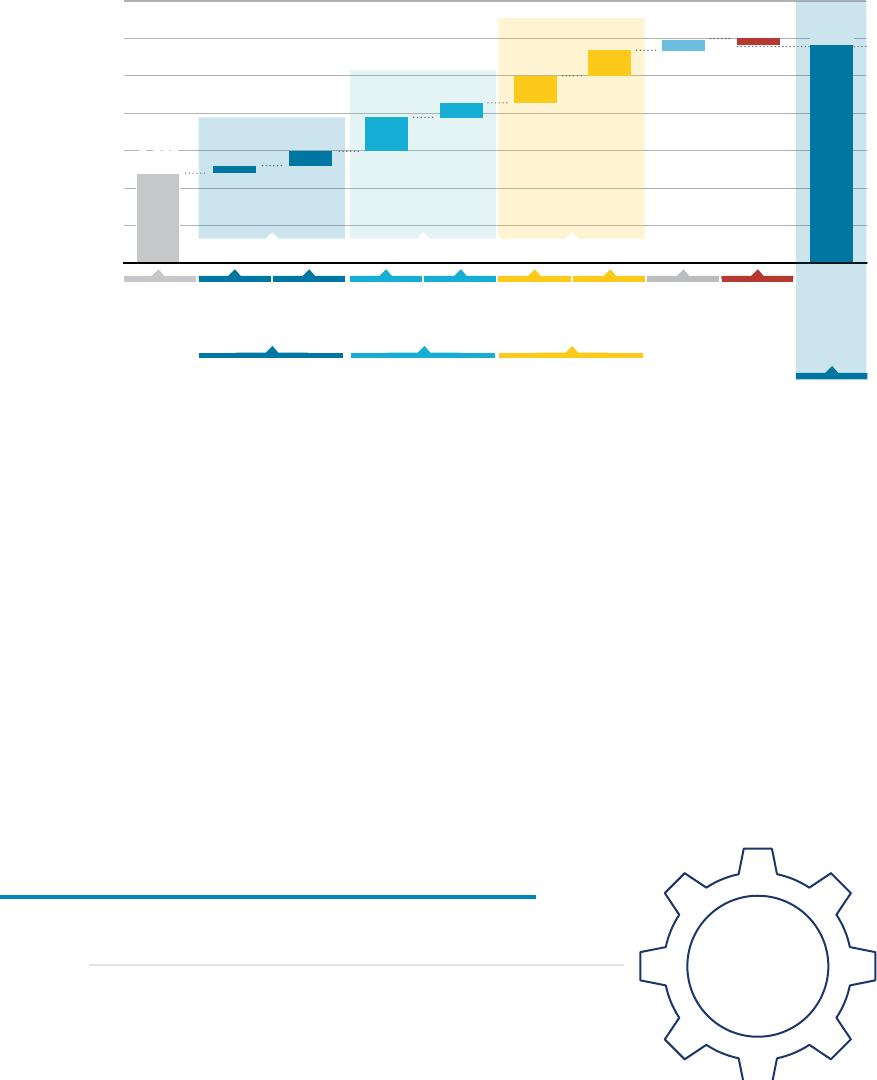
70
WORLD ENERGY
TRANSITIONS OUTLOOK
FIGURE 2.3 Energy intensity improvement rate and contributions, by category,
historical and under the 1.5°C Scenario, 2018 to 2050
Note: The categories listed represent aggregate sums of measures. “Renewables induced eciency gain” refers to
energy intensity improvements achieved through the deployment of renewable technologies in the power sector
(wind, solar PV, etc.) and in end-use direct applications (solar thermal, switching from traditional use of bioenergy
to modern renewables, etc.). “Technical eciency measures” include eciency measures deployed in industry,
buildings and transport sectors (e.g., improving insulation of buildings; more ecient appliances, motors, etc.).
“Electrification” denotes electrification of heat and transport applications such as through heat pumps and electric
vehicles. 1.5-S = 1.5°C Scenario; CCS = carbon capture and storage; RE = renewable energy.
In the 1.5°C Scenario, the rate of energy
intensity improvement needs to increase
to 2.9% per year, nearly two and a half
times the historical trend, causing the
energy intensity of the global economy
to fall over 60%.
1.2%1.2%
+0.1+0.1
+0.2+0.2
+0.2+0.2
+0.45+0.45
+0.35+0.35
+0.35+0.35
+0.15
+0.15
-0.1
-0.1
2.9%2.9%
Energy intensity improvements
(%/yr)
0
0.5
1.0
1.5
2.0
2.5
3.0
3.5
Heating/-
fuels
Shift to
RE power
gen.
Shift to RE
fuels/heat
gen.
Renewables induced
eciency gain
Technical
eciency
measures induced
Electrification
induced eciency
gain
Structural &
behavorial
changes
OtherTransport
ElectricityHistorical
average
Eciency
CCS
penalty
1.5-S
Eciency Electrification

FIGURE 2.4 Breakdown of total final energy consumption (TFEC) by energy carrier
in 2018 and 2050 (EJ) in the 1.5°C Scenario
Note: The figures above include only energy consumption, excluding non-energy uses. For electricity use, 25% in 2018
and 90% in 2050 are sourced from renewable sources; for district heating, these shares are 9% and 90%, respectively;
for hydrogen (direct use and e-fuels), the renewable energy shares (i.e., green hydrogen) would reach 66% by 2050.
The category “Hydrogen (direct use and e-fuels)” accounts for total hydrogen consumption (green and blue) and
other e-fuels (e-ammonia and e-methanol). Electricity (direct) includes all sources of generation: renewable, nuclear
and fossil fuel based. 1.5-S = 1.5°C Scenario; EJ = exajoule.
TFEC (%)
2018 2050 - Where we need to be (1.5-S)
378EJ Total Final Energy Consumption 348EJ Total Final Energy Consumption
3% District heat
5%
District
heat
21%
Electricity
(direct)
51%
Electricity
(direct)
Electricity
(Nuclear)
Electricity
(Natural gas)
3%
Modern biomass
8%
Traditional biomass
11%
Coal
16%
Natural gas
37%
Oil
Coal
Natural gas
18%
Modern biomass
12%
Hydrogen
(direct use
and e-fuels)*
4%
other
renewables
Oil
2%
4%
other renewables
Renewable share
in hydrogen:
66%
9%
90%
90%
Renewable share
in district heat:
Renewable share in electricity
25%
Renewable share in electricity
Renewable share
in district heat:
4%
0.5%
71
CHAPTER 4
By 2050, electricity would be the main energy
carrier with more than a 50% direct share of total
final energy consumption – up from 21% in 2018.
By 2050, 90% of total electricity needs would
be supplied by renewables followed by 6% from
natural gas and the remainder from nuclear.

ACHIEVING CLIMATE
TARGETS UNDER
THE 1.5°C SCENARIO
2.2
72
WORLD ENERGY
TRANSITIONS OUTLOOK
2.2.1 Renewable-powered electrification
Electricity generation must expand three fold by 2050, with renewables providing
90% of the total electricity supply.
To advance the energy transition at the pace and scale needed would require almost
complete decarbonisation of the electricity sector by 2050. The transition features an
important synergy between increasingly affordable renewable power technologies and the
wider adoption of electric technologies for end-use applications, especially in transport and
heat. Accelerated deployment of renewable power technologies driven by electrification
of end-use application alone would lead to almost 6 gigatonnes (Gt) of CO
2
emissions
mitigated in the 1.5°C Scenario compared to the Planned Energy Scenario (PES) in 2050.
In the 1.5°C Scenario, rapid electrification of end-use applications along with the rise
of green hydrogen production drive increased electricity demand. By 2050, electricity
generation triples compared to the 2018 level, and renewables supply 90% of total
electricity by 2050, up from 25% in 2018. Natural gas
2
(around 6%) and nuclear (around 4%)
provide the remainder. Wind and solar PV lead the transformation, supplying 63% of total
electricity needs by 2050; other mature renewable technologies (e.g., hydro, bioenergy,
geothermal) and emerging renewable technologies (e.g., concentrating solar power, ocean
energy) also play important roles to decarbonise the world’s electricity supply. This rise is
accelerated by declining costs: during their lifetime, three-quarters of onshore wind and
40% of utility-scale solar PV commissioned in 2019 produced electricity cheaper than any
fossil-fuel alternatives, while three-quarters to four-fifths of the onshore wind and utility-
scale solar PV commissioned in 2020 from auctions or tenders had prices lower than the
cheapest new fossil-fuel-fired option.
3
2 In the power sector, natural gas would have a role in managing demand fluctuations and providing
operational reserves.
3 Based on IRENA’s renewables cost database: www.irena.org/costs.
WORLD ENERGY
TRANSITIONS OUTLOOK

The installed generation capacity of renewable power will need to expand from over
2 800gigawatts (GW) in 2020
4
to over 27 700 GW in 2050, about a ten fold increase. In annual
terms, this requires more than 840GW of new renewable capacity additions every year, up from
around 264GW added in 2020. Solar PV and wind (onshore and offshore) would lead the way; the
installed capacity of solar PV power would reach over 14 000GW and of wind (onshore and offshore)
over 8 100GW by 2050. Hydropower, biomass, geothermal, concentrating solar power and ocean
technologies account for the remaining renewable energy expansion.
FIGURE 2.5 Electricity generation and capacity by source, 2018 and 2050 (TWh/yr and GW) in
the 1.5°C Scenario
Note: 1.5-S = 1.5°C Scenario; CSP = concentrating solar power; GW = gigawatts; PES = Planned Energy Scenario;
PV = photovoltaic; RE = renewable energy; TWh/yr = terawatt hours per year; VRE = variable renewable energy.
Electricity generation (TWh) Electricity capacity (GW)
2018
RE: 25%
VRE: 10%
2018
RE: 25%
VRE: 10%
2050
RE: 90%
VRE: 63%
2050
RE: 90%
VRE: 63%
2018
RE: 33%
VRE: 15%
2018
RE: 33%
VRE: 15%
2050
RE: 92%
VRE: 74%
2050
RE: 92%
VRE: 74%
2018 Where we need
to be (1.5-S)
2018 Where we need
to be (1.5-S)
0
15 000
30 000
45 000
60 000
75 000
90 000
0
5 000
10 000
15 000
20 000
25 000
30 000
35 000
Oil
Hydro
(excl. pumped)
Biogas
Wind oshore
Tidal/Wave
Natural Gas
Biomass
(solid)
Solar PV
Wind onshore
Hydrogen
Coal
Nuclear
Biomass
(waste)
CSP
Geothermal
73
CHAPTER 2
4 Based on IRENA's Statistics: www.irena.org/Statistics.

To meet the 1.5°C target, no additional new coal units should be built, and the phase-out of
existing ones must start now. Coal would have to be completely phased out by 2050. Nuclear power
is expected to remain at an equivalent level as today. Natural gas, owing to its dispatchability, would
retain a role in managing supply and demand fluctuations and in contributing to system adequacy,
where hydropower and hydrogen for electricity generation are not available. Integrated energy
planning and governance are key, involving system operators, energy planners, regulators, market
authorities and utilities. These stakeholders should adjust codes, regulations and strategies along
with needed resources. Financial markets and funds must increase shares of renewable energy in
their portfolios and divest from fossil fuel investments, since meeting a 1.5°C target will have drastic
implications for the business cases of these old technologies. Tax regimes, trade agreements and
financial regulation must be conducive to the rapid scale-up of investment in renewable energy and
energy efficiency.
Electricity generation must expand three fold by 2050, with
renewables providing 90% of the total electricity supply.
The flexibility of power systems is a key enabler for integrating very high shares of VRE – the
backbone of the electricity system of the future. By 2030, the VRE share in total electricity generation
would reach 42%. By 2050, 73% of the installed capacity and 63% of all electricity generation would
come from variable resources (solar PV and wind), up from 15% of installed capacity and 7% of
electricity generation in 2018. Such a level is manageable with current technologies leveraged by
further innovations.
Electricity generation would grow three fold in 2050
and the share of renewables would rise to 90%. The
remaining 10% of total electricity generation would
be supplied by natural gas (6%) and nuclear (4%).
Following a sharp decrease in coal generation over
the current decade, by 2040 coal generation would
be a quarter of today’s level and eventually would be
phased out by 2050.
74
WORLD ENERGY
TRANSITIONS OUTLOOK

Several countries offer lessons in VRE integration. In 2019, VRE’s share of the electricity generation
mix in Denmark was over 50% (47% wind and 3% solar PV) (Business Day, 2020); it was over 40%
in Lithuania and 34% in Germany (23% wind and 11% solar PV) (Renew Economy, 2019). Systemic
innovations are needed that go beyond enabling technologies to encompass business models,
markets and regulations, and system operations.
IRENA has identified 30 flexibility options that may be combined into comprehensive solutions, taking
into account the specifics of national and regional power systems.
5
Moreover, IRENA has been analysing
how power systems’ organisational structures (including markets) can be redesigned to foster and
support renewable-based energy (IRENA, 2020d). As more countries adopt ambitious policy targets
of very high or 100% renewables, adopting such a systemic approach to innovation will become more
important. The future smart power system, largely based on variable renewables such as solar PV and
wind, will require significant investments in power grids and flexibility measures (e.g., storage).
FIGURE 2.6 Emerging innovations that support the integration of VRE
Based on IRENA (2019a).
5 The innovation toolbox was developed in IRENA’s (2019a) study, Innovation Landscape for a Renewable-Powered
Future: Solutions to Integrate Variable Renewables.
Operation of a
decentralised
system
Value
complementaries
in renewable
generation
Encourage
flexibility
Empowering
consumers
Value spatial
complementarities Aggregators
Electrification
of end-use
sectors
Peer-to-peer
electricity trading
Electric
vehicles
Energy as
a service
Storage
Digitalisation
Blockchain
Hydrogen
Emerging
innovations
for the integration
of solar and
wind power
ENABLING
TECHNOLOGIES
SYSTEM OPERATION
MARKET DESIGN
BUSINESS MODELS
75
CHAPTER 2

On a technology level, both long- and short-term storage will be important for adding flexibility.
The amount of stationary battery storage (which excludes electric vehicles) would need to expand
from around 5 gigawatt hours (GWh) in 2018 to over 16 000 GWh by 2050. When the battery
storage available to the grid from electric vehicle fleets is included (assuming an approximate
availability factor for arbitrage), this value will increase by over 25 000 GWh to about 42 000 GWh.
The production of a very large volume of hydrogen from renewable power in combination with
hydrogen storage can help provide long-term seasonal flexibility starting from 2030 onwards and
would provide an estimated storage capacity of 2 000 TWh by 2050). Flexibility will also be provided
through additional measures, including grid expansion and operational measures, demand-side
flexibility, power-to-heat and other sector coupling. Smart solutions, such as smart charging of
electric vehicles, can greatly facilitate the integration of VRE by leveraging storage capacity and the
flexibility potential of the demand side. Such solutions may include the following.
• Electricity storage technologies are a critical enabler for integrating large shares of VRE into
power systems, facilitating the acceleration of the energy transition through rapid and scalable
deployment and efficient provision of ancillary services, with the ability to be located virtually
anywhere in the grid. Storage solutions include those offered by hydrogen, pumped hydro and
batteries (including the use of electric vehicle batteries at the end of their useful lives) along with
hydro, biomass and concentrating solar power thermal storage. These may be supported by
digitalisation, smart communication and pricing solutions. Regulatory innovation is also essential
to accommodate higher shares of VRE using storage, such as in the design and implementation of
novel market mechanisms to appropriately value the essential services they provide to the system.
IRENA has identified 30 innovations that support
the integration of wind and solar PV in power
systems. Innovations need to be combined as
there is no “one-size-fits-all” solution and these
need to be tailored to specific power systems.
76
WORLD ENERGY
TRANSITIONS OUTLOOK

For example, as an alternative to physical upgrades to the infrastructure needed for the grid
integration of VRE sources (e.g., solar and wind), non-wire alternatives, such as utility-scale
batteries connected at electricity transmission systems (also called virtual power lines) are being
rolled out in several parts of the world. To make these economically attractive, market design
should enable them to provide and be rewarded for a range of services including storage to reduce
congestion, which would help to defer network investment, as well as ancillary and balancing
services, such as frequency and voltage regulation that would support the reliable operation of
the system (IRENA, 2020e).
• Managing the loads from end-use sectors and promoting self-consumption, via distributed
renewable energy sources, would help in enhancing demand-side flexibility and minimising
the overall cost of system operation. Grid expansion and reinforcement would be needed; grid
codes need to be updated, and security criteria reviewed and enhanced to secure the better use of
the grid. One way to accomplish these tasks is through the more dynamic application of network
studies especially contingency analysis that can guarantee network security. It is crucial to expand
the application of solar PV distributed solutions, moving beyond rooftop solar to consider the
options of floating solar PV, embedded batteries and solar cells in appliances, buildings, street
lights and other innovative applications.
As the distinction between power-generating and power-consuming grid users blurs, it is
particularly important to specify technical requirements in grid codes (Inês et al., 2020), as well
as for battery storage, solar PV and battery combinations, micro combined heat and power
(CHP) generators, flywheels and any other combined consumer-producer connection. For
example, Germany’s guidelines for the low-voltage connections of distributed energy resources
distinguish among facilities for consumption, generation, storage and electric vehicle charging.
At medium- and higher-voltage levels, there is an additional category for mixed facilities that
combine assets of multiple types (VDE FNN, 2018). One type of storage and flexibility service that
deserves special mention is electric vehicle charging, because the actual storage units are not
permanently connected to the facility, and the implemented functionality does not necessarily
include discharging and exporting active power into the power system. This implies that grid
operators need to have the technical capacity to monitor and manage so many distributed system
elements.
• Another priority is to develop innovative and alternative ways to reduce material use and reuse
and recycle components such as PV panels, wind turbines, batteries and electrolysers at the end
of their lifetime (IRENA and IEA-PVPS, 2016).
• BECCS will also be necessary to offset the remaining emissions in power and other sectors,
even as renewable capacity expansion occurs over time and coal generation is eventually phased
out (by 2050).
• Beyond technologies, innovation is needed in policies, regulations, trade agreements and
business models. Attention needs to be focused on the creation of a new market niche – the
management of information and its security via smart devices – that is likely to attract investors.
An energy services approach would best support the scaling up of energy efficiency measures.
77
CHAPTER 2

Electricity generation must expand three fold by 2050, with
renewables providing 90% of the total electricity supply.
By 2050, electricity will become by far the most important energy carrier. Under the 1.5°C
Scenario, electricity consumption in end-use sectors would more than double compared to 2018,
reaching 50 000 TWh by 2050. Transport and hydrogen production will emerge as significant new
electricity markets. In addition, around 20 770 TWh would be needed to produce hydrogen by 2050.
The direct electrification share of final energy consumption (which includes direct use of electricity
but excludes indirect uses such as e-fuels) would reach 30% by 2030 and exceed 50% by 2050, up
from just over 21% in 2018. The use of green hydrogen and green-hydrogen-based carriers (such as
ammonia and methanol) as fuels, would reach almost 2% in 2030 and 7% in 2050 from negligible
levels today. In total, direct and indirect electrification would reach 58% of final demand.
The buildings sector would see the highest direct electrification rates, reaching 73% compared
to 32% in 2018. A rise would also be observed in the industry sector, where the direct electrification
rate would be 35% by 2050, up from 26% in 2018 (including indirect electrification, this would
approach 40% by 2050). For decarbonising some heat applications, the total number of heat
pumps would rise close to nine fold, exceeding 180 million by 2030 and close to 400 million by 2050
compared to around 20 million installed in 2018. More details on the technology components and
pathway to decarbonise the buildings sector can be found in the annex of this report.
78
WORLD ENERGY
TRANSITIONS OUTLOOK
Electricity dominates final energy
consumption either directly or indirectly,
in the form of hydrogen and other e-fuels
such as e-ammonia and e-methanol. Around
58% of final energy consumption in 2050 is
electricity, green hydrogen and its derivatives.
By 2050, electricity would be the main energy
carrier with over 50% direct share in total final
energy use, a rise from 21% today.

Transport would see the most accelerated electrification in the coming decades with the share
of electricity reaching 49% in 2050, up from just 1% in 2018. The stock of electric cars would rise
from 10 million in 2018 to over 380 million by 2030 and 1 780 million by 2050; the stock of electric
trucks would rise to 28 million by 2050. Electric vehicles would account for more than 80% of all road
transport activity by 2050 (88% of the light-duty vehicles stock and 70% of heavy-duty vehicles).
This massive electrification in transport will be driven by technological progress – markedly the
evolution of batteries and battery production processes – that has greatly improved the economic
case for electric vehicles in recent years and is quickly expanding the scope of application to a
broader set of road vehicle segments and types of services. If the ongoing cost reduction trends can
be sustained, by 2050, the bulk of global road transport services could be delivered cost-effectively
with electric technologies. More details on the technology components and pathway to decarbonise
the transport sector can be found in the annex of this report.
FIGURE 2.7 TFEC split by direct electricity and the use of green hydrogen and its
derivative fuels, 2018 and 2050, in PES and the 1.5°C Scenario (EJ/yr)
Note: “7%” in 2050 in the 1.5°C Scenario (1.5-S) corresponds to green hydrogen and its derivatives. In addition, around
11 EJ of green hydrogen would be needed for non-energy uses in 2050 (1.5-S), which is not represented in this figure.
EJ = exajoules; PES = Planned Energy Scenario; TFEC = total final energy consumption.
TFEC (EJ)
2018 2050
Where we need to be
(1.5-S)
2050
Where we are heading
(PES)
Green
hydrogen
and its
derivatives
Electricity
Others
0
100
200
300
400
500
600
79%79%
21%21%
1%1%
69%69%
30%30%
51%51%
42%42%
7%7%
58%
Electricity
(total)
58%
Electricity
(total)
31%
Electricity
(total)
31%
Electricity
(total)
79
CHAPTER 2

FIGURE 2.8 Electricity consumption by sector, 2018, 2030 and 2050 (TWh/yr)
in the 1.5°C Scenario
Note: Electricity use for green hydrogen is not included in the figure. By 2050, close to 21 000 TWh of electricity would
be needed for green hydrogen production. 1.5-S = 1.5°C Scenario; TWh = terawatt hours.
*Others includes electricity consumption via carbon capture and storage (CCS).
Electricity demand more than doubles in 2050
compared to 2018. The use of electricity in industry
and buildings double to over 12 800 TWh and
21 300 TWh, respectively and in transport it
grows from nearly zero to over 12 700 TWh.
Electricity consumption (TWh)
2018 2050
Where we need to be
(1.5-S)
2030
Where we need to be
(1.5-S)
Buildings
Transport
Industry
Others*
49 27549 275
31 070
31 070
22 315
22 315
1757 1757
10 807 10 807
9 362 9 362
1 932 1 932 2 363 2 363
21 30121 301
12 76512 765
12 84612 846
390 390
3 126 3 126
10 57510 575
15 437 15 437
0
10 000
20 000
30 000
40 000
50 000
60 000
80
WORLD ENERGY
TRANSITIONS OUTLOOK

2.2.2 Green hydrogen
Hydrogen and its derivatives will account for 12% of final energy use by 2050.
As global economies aim to become carbon neutral, competitive hydrogen and synthetic fuels
derived from hydrogen (such as ammonia, methanol and kerosene) emerge as key components
of the energy mix. Hydrogen can help to achieve net zero CO
2
emissions in energy-intensive, hard-
to-decarbonise sectors like steel, chemicals, long-haul transport, shipping and aviation. It can also
play fundamental roles in balancing renewable electricity supply and demand by absorbing short-
term variations as well as acting as an option for long-term storage to help balance renewable
variability across seasons. In IRENA’s 1.5°C Scenario, green and blue hydrogen production grows
from negligible levels today to over 74 exajoules (EJ) (614 million tonnes) in 2050. In this context,
hydrogen needs to be low carbon from the outset and ultimately green (produced by electrolysis
of water using renewable electricity). But production costs must be cut to make it economical for
countries world wide. Green hydrogen currently costs between two and three times more than blue
hydrogen, which is produced using fossil fuels in combination with CCS. Falling renewable power
costs and improving electrolyser technologies could make green hydrogen cost competitive by 2030.
By 2050, 30% of electricity use will be dedicated to green hydrogen production and hydrogen
and its derivatives such as e-ammonia and e-methanol. Hydrogen and its derivatives together
will account for about 12% of total final energy use. To produce this, almost 5 000 GW of hydrogen
electrolyser capacity will be needed by 2050, up from just 0.3 GW today.
FIGURE 2.9 Hydrogen production costs resulting from low and high electricity
cost assumptions
Based on IRENA (2020f).
Note: A combination of cost reductions in electricity and electrolysers, combined with increased eciency and
operating lifetime, can deliver 80% reduction in green hydrogen cost. kg = kilogramme; MWh = megawatt hour.
Hydrogen production
cost (USD/kg)
5.115.11
2.182.18
2020-2030
3.333.33
1.081.08
2040-2050
USD 65/MWh
Electricity cost
USD 20/MWh
0
1.0
2.0
3.0
4.0
5.0
6.0
81
CHAPTER 2

Hydrogen will offer a solution to industry and transport needs that are hard to meet through direct
electrification, mitigating close to 12% and 26% of CO
2
emissions, respectively, in the 1.5°C Scenario
compared to the PES. Today, around 120 metric tonnes (Mt) (14 EJ) of hydrogen are produced
annually but almost all of this comes from fossil fuels or from electricity generated by fossil fuels,
with a high carbon footprint – less than 1% is green hydrogen. As electrolyser costs fall, combined
with further reductions in renewable electricity costs, green hydrogen will be less expensive than
the estimated cost of blue hydrogen in many locations within the next 5 to 15 years (IRENA, 2020f).
In the 1.5°C Scenario, by 2050, there will be a demand for 613 Mt (74 EJ) of hydrogen, two-thirds
of which will be green hydrogen. The electricity demand to produce hydrogen will reach close
to 21 000 town by 2050, almost the level of global electricity consumption today. This requires
significant scale-up of electrolysers’ manufacturing and deployment. Around 160 GW of electrolysers
need to be installed annually on average up to 2050. The installation rate will start growing from a
few gigawatts added per annum in the coming years and eventually ramp up from 2030 onwards,
exceeding 400 GW per annum by 2050.
Priorities for technological innovation
At present, hydrogen is used at scale only in the industrial sector. Unlocking its potential across
the entire energy system will require demonstration before scaling up. Some pathways, like steel
production with pure hydrogen, require years of research before they reach the demonstration scale.
Some parts of the hydrogen value chain are not yet cost competitive but are already deployed on a
commercial scale. For instance, there are currently over 4 500 kilometres (km) of hydrogen pipelines,
over 35 000 forklifts and over 25 000 passenger and commercial vehicles. Furthermore, hydrogen
is already commonly used as industrial feedstock in chemical complexes and refineries. Some of the
pathways and technologies that need further research are:
• Electrolysis integration with ammonia and liquid synthesis. These processes are mature but
have been deployed separately so far; their integration remains to be demonstrated. Plant flexibility,
design optimisation and operation need to be studied further. NEOM, a 2 GW electrolyser project
in Saudi Arabia with a targeted start date in 2025, aims to demonstrate this concept.
Green hydrogen can be produced at costs
competitive with blue hydrogen by 2030,
using low-cost renewable electricity.
82
WORLD ENERGY
TRANSITIONS OUTLOOK

• Fuel cells for trucks.
6
Trucks have higher durability requirements (meaning more hours of
operation and cycles per year) than cars. This translates into more rare materials and a higher
cost. Research is needed to achieve that high performance and durability, while still maintaining
a low-cost premium for the fuel cell. This would require novel stack materials, such as catalysts,
membranes and electrodes.
• Direct reduction of steel. This pathway is at the pilot scale today; the most advanced project is
HYBRIT in Sweden aiming to have a demo plant by 2025 (HYBRIT, 2021). The direct reduction of
steel is already being accomplished today based on natural gas but further research is needed
to understand the operation of the shaft furnace with pure hydrogen (instead of syngas) and
the effect on physical (hydrogen embrittlement, tumble, fines) and metallurgical (reducibility,
metallisation, carbon) properties of the product (Ripke, 2017).
• Ammonia-fuelled ships. Ammonia could be used in either fuel cells or internal combustion
engines. MAN ES, the largest marine engine manufacturer in the world, plans to develop the
first ammonia-fuelled engine by 2024 (The Motorship, 2020). More than 50 research projects
are underway looking at ammonia use in reciprocating engines. Some of the challenges are
ammonia’s slow flame velocity, slow heat release and low flammability. Areas for innovation are
the pilot fuel requirement,
7
the use of dual-fuel engines and the reduction of nitrogen oxide (NO
x
)
emissions. Ammonia could also be used in fuel cells but these lack power density and load response
capability, are expensive (> EUR 1 500/kilowatt) and are at an early stage of development.
• Hydrogen ships. Hydrogen has been used in the fuel cells of ships in only a couple of
demonstration projects to date, mostly in ferries with up to 600 kW capacity. The current limit
for fuel cells is around 2 MW (Trellis et al., n.d.) which would be enough for a small bulk carrier,
but a large container ship can be up to 130 MW (IMO, 2015). Further innovation is needed to
scale fuel cells up for use in bunkering infrastructure (e.g., allowing more frequent refuelling
[Mao et al., 2020]), and to reduce cargo displacement due to fuel storage.
• High-temperature electrolysis. This technology promises high efficiency levels (> 90%) and
heat integration with exothermic processes characterised by high costs and fast degradation (i.e.,
short lifetimes). Some of the areas where further innovation is needed are the improvement of
electrolyte conductivity, optimisation of chemical and mechanical stability, matching the thermal
expansion coefficient to both electrodes and ensuring minimal reactant crossover (IRENA, 2020f).
• Direct air capture (DAC). CO
2
is needed for methanol and synthetic fuels and DAC is one of two
sustainable carbon sources (along with bioenergy). There are only 15 plants around the world
with a cumulative capacity of 9 000 tonnes/year (IEA, 2020c). DAC’s energy consumption and
cost need to come down, as they are currently in the order of 6–8 gigajoules per tonne of carbon
dioxide (GJ/tCO
2
) and several hundreds of US dollars per tCO
2
. This could be achieved through
new sorbent materials, an all-electric concept, hybrid designs for heat integration and widening
the operating window of the plant to encompass a flexible electricity input (ICEF, 2018)
6 Electrification is the main decarbonisation strategy for road freight (70% of activity), but fuel cell electric trucks are
still needed to cover part of the balance (13%) by 2050.
7 Ammonia has low flammability which makes the use of another fuel necessary. This could be hydrogen obtained
from the ammonia itself.
83
CHAPTER 2

FIGURE 2.10 CO
2
emissions abatement options in the 1.5°C Scenario compared to PES
in the industry, transport and building sectors.
Note: Industry includes emissions from energy, process and non-energy uses. International bunkers are included in
transport emissions. Renewables include direct use of renewables such as biomass, solar thermal and geothermal.
Energy eciency includes measures related to reduced demand and eciency improvements. Structural changes (e.g.,
relocation of steel production with direct reduced iron) and circular economy practices are part of energy eciency.
Electrification includes direct use of clean electricity. Hydrogen includes indirect use of clean electricity via synthetic
fuels and feedstocks (e.g., hydrogen and its derivates). CCS describes carbon capture and storage from point-source
fossil-fuel-based and other emitting processes mainly in industry and for blue hydrogen production. BECCS and
other carbon removal measures include bioenergy coupled with CCS and other measures such as reforestation and
other measures in industry. CCS = carbon capture and storage; BECCS = bioenergy with carbon capture and storage;
CCU = carbon capture and utilisation; GtCO
2
= gigatonnes of carbon dioxide; PES = Planned Energy Scenario.
2050
Where we are
heading (PES)
Renewables
Energy conservation
and eciency
Electrification in
end use sectors (direct)
BECCS and other carbon
removal measures
Hydrogen and its
derivatives
CCS and CCU industry
15 %
2 %
6 %
46 %
38 %
2050
Where we
need to be
(1.5-S)
-2.3
GtCO
2
/yr
-2.3
GtCO
2
/yr
2050
Where we
need to be
(1.5-S)
-11.9
GtCO
2
/yr
-11.9
GtCO
2
/yr
14 %
15 %
20 %
25 %
14 %
12 %
2050
Where we
need to be
(1.5-S)
-8.4
GtCO
2
/yr
-8.4
GtCO
2
/yr
41%
26 %
27 %
Buildings
Transport
Industry
84
WORLD ENERGY
TRANSITIONS OUTLOOK

Next to electricity, the direct use of renewables (bioenergy, solar thermal and geothermal)
would occupy a major share (22%) of total final energy demand by 2050.
Solar thermal, geothermal and bioenergy will be needed to provide heat in industrial processes,
cooking and space and water heating in buildings, and fuels for transport. In the 1.5°C Scenario the
direct use of renewable energy would need to grow to 77 EJ in 2050 compared to 44 EJ in 2018.
Bioenergy makes up a large share of renewable energy use today and will remain a significant source
of fuel, both in industry and transport. In the 1.5°C Scenario, the share of final energy met using
modern forms of bioenergy increases to 17% in 2050 from around 1.5% in 2018, requiring 153 EJ of
primary biomass supply. Priorities for bioenergy include the production of advanced biofuels for
aviation, road freight and shipping; the production and use of renewable fuels and feedstock for the
chemical industry, and some use for heating in specific industry sub-sectors. In addition, BECCS will
be used in power and heat production and some industrial processes (e.g., cement and chemical
production). IRENA’s analysis finds that, with care, the level of primary biomass can be harvested
sustainably without causing deforestation or other negative land-use changes (IRENA, 2014).
2.2.3 Modern bioenergy
Bioenergy, including solid biomass, biogas and biomethane, and liquid biofuels, would
represent 25% of total primary energy supply by 2050 in IRENA’s 1.5°C Scenario. That means
just over 150 EJ of biomass primary supply, a three fold increase compared to 2018 levels. Without
increasing biomass production and use, the 1.5°C climate goal is not achievable.
Biomass will be needed across the energy system. In some sectors it would play a major role
– particularly as feedstock and fuel in the chemicals sectors and as fuel in the aviation sector. In
many others it would help address gaps that other options cannot fully resolve, such as the need
for biomethane to replace natural gas in buildings that cannot be renovated. Additionally, the use of
biomass coupled with CCS in the power sector and some industrial sectors will be critical in delivering
much needed negative emissions to achieve the net zero goal.
85
CHAPTER 2
In transport, 67% of emission reductions
come from direct electrification and hydrogen.
In industry, hydrogen and electrification
combined contribute 27% of mitigation needs.
In buildings, the key solutions are electrification,
contributing close to half of the reduction
needed, followed by energy efficiency.

Given finite biomass resources, prioritisation and cross-sectoral planning will be important
to ensure that appropriate biomass feedstocks are available for the appropriate applications.
Innovation and scale are needed to reduce the costs and diversify the sources of supply and
broaden production. For example, there is a need to further develop conversion technologies to use
alternative feedstocks. However, the biggest challenges will be in scaling up production sustainably,
without causing social, environmental or economic harm. The growing examples of good practice in
biomass production suggest that this is possible, but regulating and managing its use such that that
society can be confident in its sustainability will be challenging.
FIGURE 2.11 Primary bioenergy demand in 2018 and 1.5°C Scenario 2050 (EJ/yr)
Note: * The decline in bioenergy use in the buildings sector from 2018 to 2030 is due to the phase-out of traditional
biomass uses in favour of modern bioenergy. EJ/yr = exajoules per year; NEU = Non-Energy Uses.
Others
(incl. NEU and losses
in transformation processes)
Transport
Industry
Buildings
Power
49 EJ
26 EJ
9 EJ
23 EJ
7 EJ
29 EJ
8 EJ
4 EJ
6 EJ
46 EJ
2018 1.5°C Scenario (2050)
54 EJ54 EJ
153 EJ153 EJ
86
WORLD ENERGY
TRANSITIONS OUTLOOK

Bioenergy makes up a large share of renewable energy use today and would remain a significant
source of fuel and feedstock in IRENA’s 1.5°C Scenario. Achieving the net zero goal will not
be possible with renewable electricity and energy efficiency alone; bioenergy will be needed to
provide heat in industrial processes, cooking and space and water heating in buildings and fuels
for transport. Biomass will also be needed as feedstock in the petrochemical industry to produce
chemicals and plastics.
In 2050 in the 1.5°C Scenario, the largest single use of biomass is in the power sector, but biomass
contributes only a modest share of electricity production (around 13% of the total primary energy
supply by 2050). The use of biomass in power is driven in part by the need for the negative emissions
that BECCS can provide, and around 60% of the biomass power production will have CCS installed.
BECCS will also be used in some heat plants and for some cement and chemical production.
Consistent with earlier IRENA analysis (IRENA, 2014), the required level of 153 EJ of primary biomass
in 2050 can in principle be supplied sustainably without causing negative land-use changes. This
is around three times the levels of supply in 2018 and at the higher end of the sustainable biomass
supply potential estimated by IRENA and other institutions for 2050 (IRENA, 2014, 2016a, 2016b;
Faaij, 2018). The challenge to scale up biomass production to those levels, while avoiding adverse
environmental or social consequences, is significant. Robust policy frameworks for regulation,
certification and monitoring, and responsible sourcing practices by industry actors need to be
put in place globally to ensure that biomass supply is environmentally, socially and economically
sustainable.
87
CHAPTER 2
Primary bioenergy demand would grow from around
54 EJ in 2018 to over 150 EJ by 2050. Liquid biofuels
consumption would reach 25% of total transport
fuel demand by 2050 from 3%. Bioenergy would
play an important role in electricity generation,
providing thermal energy in industry and in
aviation and marine energy supply by 2050.

Large untapped potential remains. Options include:
• Greater use of food crop and forestry residues (while maintaining sufficient residues to enrich the
soil and preserve biodiversity);
• Wood harvesting through sustainable forest management;
• The use of biogas from agricultural wastes such as manure and from municipal solid waste (which
could also reduce emissions of methane); and
• The use of marginal or contaminated lands on which food production is impractical.
These practices would also deliver economic and social benefits to other parts of the bio-economy.
The risk of poor practices remains, but evidence suggests that with sound policies, careful monitoring
and control, and further innovation in supply chains the levels of biomass needed can be feasibly and
sustainably produced.
Priorities for technological innovation include the following:
• Substantial scope remains to broaden the supply of sustainable feedstocks, refine conversion
technologies, decrease production costs and integrate biomass into traditionally fossil-fuel-
dominated processes.
• Sustainable feedstocks need to be investigated and validated, and waste-based feedstock
collection intensified. Sustainable options for growing oil-based energy crops as well as
lignocellulosic conversion pathways for advanced fuels need to be pursued. These might include
co-farming with other crops, seasonal (winter) farming, agro-forestry based on short-rotation
woody crops, growing on degraded lands, using land made available by more intensified
agriculture and using land freed up by reduced waste and losses in the food chain.
• Drop-in fuels are a key component of decarbonisation strategies for the transport sector
because ethanol and conventional biodiesel have limitations on the amount that can be mixed
with petroleum fuels. Innovation is needed to reduce the cost of advanced biofuels production,
especially for drop-in biofuels.
• Innovation is also needed in how bioenergy and biofuels are used, in particular, the exploration of
how bioenergy in CCS can be cost-effectively integrated into power and production processes.
• Beyond technological development, a systemic approach to innovation – one that pairs technology
with innovations in regulatory frameworks, business models and systems operation – is critical to
successfully scale up biomass use in the energy system.
88
WORLD ENERGY
TRANSITIONS OUTLOOK

2.2.4 Carbon capture and removal
Some emissions remain in 2050 from fossil fuel use and industrial processes. There will thus be
a need for both CCS technologies and also CO
2
removal (CDR) measures and technologies that,
combined with long-term storage, can remove CO
2
from the atmosphere, resulting in negative
emissions. CDR measures and technologies include nature-based measures such as reforestation
as well as BECCS, direct carbon capture and storage (DACCS) and some other approaches that are
currently experimental.
FIGURE 2.12 Amount of CO
2
(GtCO
2
) yet to be removed in the 1.5°C Scenario
Note: BECCS = bioenergy with CCS; GtCO
2
= gigatonnes of carbon dioxide.
Total cumulative CO
2
removals from 2021 to 2050
15 GtCO
2
45 GtCO
2
31 GtCO
2
36 GtCO
2
36 %
24 %
28 %
12 %
-
126
GtCO
2
-
126
GtCO
2
BECCS and other carbon
removal measures
and technologies |
power/heat plants
CCS - blue hydrogen
BECCS and other carbon
removal measures and
technologies | industry
CCU/CCS - cement, iron and
steel and chemicals for
process emissions
89
CHAPTER 2

In the 1.5°C Scenario, the role of CCS is limited, targeting process emissions from cement, iron
and steel, hydrogen and chemical production, with a limited deployment for waste incinerators.
CCS is not deployed for fossil-fuel-based power production, which would have only a marginal role
by 2050. CCU applied to fossil fuel or process emissions would have only a limited role, primarily
in the chemical sector. Together the use of CCS and CCU in industry and CCS for fossil-fuel-based
hydrogen production expand from 0.04Gt/year of captured CO
2
in 2020 to 2.7Gt/year in 2040 and
3.4Gt/year of CO
2
in 2050.
CCS & CCU technologies are in operational use, but, despite several decades of development,
deployment levels are still very low. As of early 2021, 24 commercial fossil-fuel-based CCS and CCU
facilities were in operation globally with an installed capacity to capture around 0.04 Gtpa of energy
and process-related CO
2
emissions. Focused effort will be needed to break from the lethargic pace
to date and rapidly ramp up deployments, particularly of BECCS. However CO
2
capture installations
are capital intensive and have long lead times to plan, finance and build and, away from the limited
existing facilities, securing support for and developing the necessary transportation and storage
infrastructure can be complex and slow. Even with strengthened political and commercial support
the cumulative impact of CCS & CCU this decade will likely therefore be relatively small and there is a
high risk CCS, CCU and BECCS deployments will fall significantly short of the levels needed by 2030.
CDR technologies, combined with long-term storage, can in principle remove CO
2
from the
atmosphere, resulting in negative emissions. BECCS is the most established option. Biomass absorbs
carbon from the atmosphere as it grows and the use of CCS prevents this carbon from being released
back to the atmosphere during final use, usually by storing it below ground. Provided the biomass is
sustainably sourced the net result is that CO
2
is removed from the atmosphere.
In the 1.5°C Scenario, the use of BECCS in power, co-generation plants and some industrial
processes (cement, chemicals, pulp mills and potentially others) would require rapid scale-
up leading to 2.9 Gt/year of CO
2
captured and stored in 2040 and 4.7 GtCO
2
per annum in
2050, compared to less than 2 million tonnes CO
2
captured in 2020 from three operational
commercial plants. Beyond BECCS, other potential CDR technologies (e.g., DACCS) are mostly
at an early experimental stage. Since their future potential is hard to quantify, their use is not
included in the 1.5°C Scenario. As a result of the use of BECCS, in the latter part of the 2040s the
power and industry sectors become net negative, i.e., the CO
2
captured more than compensates
the remaining CO
2
emissions in those sectors. Overall, the net CO
2
emissions in the 1.5°C Scenario
reach -0.4Gt/year in 2050.
BECCS and CCS are now established but not widely deployed or accepted technologies and the
pace of progress in their development and deployment in the past decade has been very slow,
much slower than many analysts predicted, with many plans falling by the wayside. If BECCS and
CCS are to play an appreciable role in reaching net zero, technical, economic and social acceptance
challenges will need to be addressed and the pace of development, validation and uptake will need
to be greatly accelerated.
90
WORLD ENERGY
TRANSITIONS OUTLOOK

Apart from IRENA’s energy scenarios various organisations have put forward visions for the
future. All of these energy scenarios, including IRENA’s, propose larger renewable energy shares
in primary supply compared to 2018, with nearly half of them showing lower primary supply, which
indicates greater energy efficiency. Also, all result in lower emissions (Box 2.1).
While IRENA’s 1.5°C Scenario as presented in this chapter sets a trajectory for the world to reach
1.5°C climate targets by reaching net zero emissions by mid-century, IRENA’s Transforming Energy
Scenario presents a pathway to stay well below the 2°C Paris climate target. Their solutions are
largely similar though with a variation in their rate of acceleration. That said, any reductions beyond
the 2°C ambition would need to consider factors such as high abatement costs (e.g., green hydrogen,
BECCS); the socio-economic impacts of industry relocation; the implementation of circular economy
principles and behavioural change; the availability of certain technologies at commercial scale (e.g.,
cement CCS, smelt reduction CCS, waste CCS, high-temperature heat pumps for industry >200°C);
and the need for complex changes in existing buildings and infrastructure.
The rate of change proposed in this scenario is daunting – much of today’s energy infrastructure
and capital stock would need to be replaced in the next three decades to translate this vision into a
reality. Ultimately, the speed and extent of the movement in this direction will determine the world’s
progress towards the goals of the Paris Agreement. The world needs to capitalise now on the renewed
commitments made by countries and maintain the momentum, taking immediate, collaborative and
concrete actions to meet the challenge of climate change (IRENA, 2021d).
COMPARISON OF
ENERGYSCENARIOS
2.3
WORLD ENERGY
TRANSITIONS OUTLOOK
91

92
WORLD ENERGY
TRANSITIONS OUTLOOK
Sources: Shell’s 2021 “Sky 1.5” scenario (Shell, 2021); BP’s “Rapid Scenario”(BP, 2020); the “Below 1.5°C” and “Above 1.5°C” scenario
from the Intergovernmental Panel on Climate Change (IPCC, 2018); Greenpeace’s 2015 “Advanced” scenario (Greenpeace, 2015);
Teske’s “Achieving the Paris Climate Agreement Goals” (Teske, 2019); Equinor’s “Rebalance scenario” (Equinor, 2020); DNV GL’s
Energy Transition Outlook 2020 (DNV GL, 2020) and IEA's Net Zero by 2050 (IEA, 2021b).
Note: The figure includes 2018 and 2050 projections from various energy scenarios aligned with Paris climate targets from dierent
institutions. IPCC’s (2018) special report on global warming of 1.5°C assessed several energy scenarios from dierent institutions
and aggregated them into two 2°C and three 1.5°C pathway classes. Of these, the assessed “below 1.5°C” and “1.5°C-low-overshoot”
pathways have a mean total primary energy supply equal to 553.23 EJ with a range between 289.02 EJ and 725.40 EJ (derived
from the IPCC’s SR15 2018 report, page 132, Table 2.6) in 2050. The mean share of renewables in total primary supply in those
pathways is 60.24% with a range between 38.03% and 87.89%. For the “1.5°C-high-overshoot” pathway, the mean primary supply
is 651.46 EJ (1012.50 EJ, 415.31 EJ) and the share of renewables in primary supply is 62.12% (86.26%, 28.47%). GtCO
2
= gigatonnes
of carbon dioxide; IPCC = Intergovernmental Panel on Climate Change; TPES = total primary energy supply.
BOX 2.1 Scenario comparison
Beyond IRENA’s 1.5°C Scenario, several other scenarios have been published to explore pathways
for the energy transition in the coming decades. Their variation reflects the complexity and
uncertainties of the energy transition and different approaches and assumptions regarding
the development of key components such as renewable energy and electrification as well as
differences in overall carbon budgets.
Two below-2°C scenarios, DNV GL and Equinor, predict a fast transformation of the global energy
sector. Though they reach similar electrification shares (35% for DNVGL and 37% for Equinor) by
2050, they have different global-energy-related CO
2
emissions, 17gigatonnes (Gt)/year for DNVGL
and 10.6 Gt/year for Equinor by 2050. Among those scenarios claiming compatibility with the
FIGURE 2.13 Shares of renewables in total primary energy in 2018 and 2050 in various energy scenarios
0%
TeskeTeske
IRENA-1.5-S
IRENA-1.5-S
Current levels (2018)
Current levels (2018)
Greenpeace-Advanced
Greenpeace-Advanced
BP - Rapid
BP - Rapid
IEA-NZ
IEA-NZ
IPCC - 1.5°C (high-overshoot)
IPCC - 1.5°C (high-overshoot)
BP - Net zero
BP - Net zero
IPCC - Below 1.5°C
(low-overshoot)
IPCC - Below 1.5°C
(low-overshoot)
Equinor - Rebalance
Equinor - Rebalance
DNV GL- ETO 2020
DNV GL- ETO 2020
Shell-Sky 1.5Shell-Sky 1.5
Renewable energy share in TPES (%)
500 700600 650 750 800400 550450 850
20%
60%
40%
80%
100%
TPES (EJ/yr)
1.5°C scenarios1.5°C scenarios
Current levels
(2018)
Current levels
(2018)
Below 2°C scenariosBelow 2°C scenarios
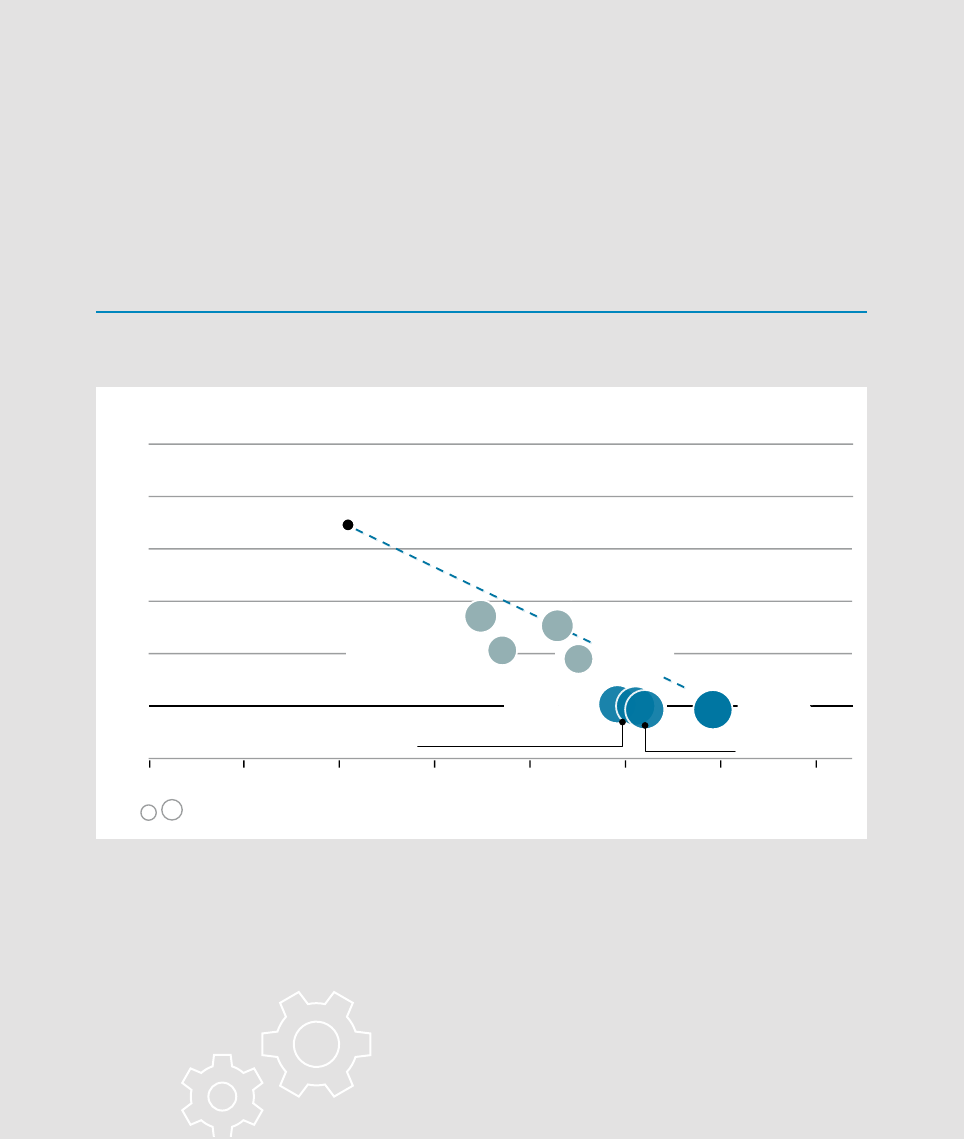
93
CHAPTER 2
Note: The size of the bubbles in the figure and the number indicated beside the scenario description reflect the share of renewables
in the power sector in various scenarios. 1.5-S = 1.5°C Scenario; CO
2
= carbon dioxide; Gt = gigatonne.
Paris climate target of staying under a 2°C temperature rise, the electrification share in 2050 varies
substantially as well, from 45% in BP’s “Rapid” scenario to 52% in the Greenpeace “Advanced” scenario.
There is however a broad consensus on the central role that renewables would play in electricity
generation with percentages ranging from 72% in Equinor's “Rebalance” scenario to 90% in IRENA's
“1.5-S” scenario. Despite the differences among the energy scenarios, there is a clear consensus on the
important role that electrification powered by renewable energy sources has in the decarbonisation
of the energy system. With a share of 51% of direct electrification and 58% if green hydrogen and its
derivates are included, coupled with 90% of renewables in the power sector in 2050, IRENA’s 1.5°C
Scenario shows a higher electrification rate than the other scenarios.
FIGURE 2.14 CO
2
emissions versus electrification rates in various energy scenarios
CO2 (Gt/year)
25% Current levels (2018)25% Current levels (2018)
DNV GL
DNV GL
Shell-Sky 1.5
Shell-Sky 1.5
IRENA-1.5-S
(incl. green
hydrogen)
IRENA-1.5-S
(incl. green
hydrogen)
IRENA-1.5-SIRENA-1.5-S
Equinor- Rebalance
Equinor- Rebalance
Greenpeace-Advanced
91%Greenpeace-Advanced 91%
IEA-NZ 88%IEA-NZ 88%
0% 10% 40%20% 30% 50% 60% 70%
Electrification rate %
40
30
20
10
-10
0
50
BP - Rapid
Scenario
BP - Rapid
Scenario
% Renewable energy in power sector% Renewable energy in power sector
78%78%
72%72%
77%77%
90%90%90%90%
74%74%

CONCLUSION2.4
WORLD ENERGY
TRANSITIONS OUTLOOK
94
A net zero carbon future by 2050 may seem a daunting challenge. But IRENA’s analysis
indicates that it is feasible. Achieving it will require a massive ramp-up of efforts on
seven fronts:
1.
The rate of decline in energy intensity must move from the 1.2% recorded in recent
years to 3%. Here, renewable power, electrification and circular economy principles
have key roles to play, as do conventional energy efficiency technologies.
2.
Annual growth in renewable energy’s share in the globe’s primary energy production
needs to accelerate eight fold from its share in recent years.
3.
Renewable power generation capacity must grow from over 2 800 GW today to
27 500 GW by 2050, or 840 GW per year and a four fold increase in the annual
capacity additions recorded in recent years.
4.
Electric vehicle sales must grow from 4% of all vehicle sales today to 100%, with
the stock of electric vehicles growing from 7million in 2020 to 1.8 billion in 2050.

95
CHAPTER 2
5.
Hydrogen demand must increase from 120Mt to 614Mt in 2050, a five fold increase. The share
of clean hydrogen in overall demand needs to grow from 2% to 100%. Two-thirds of demand
would be met by green hydrogen; one-third by blue. Meeting that goal will require the addition
of 160GW of electrolysers each year between now and 2050, from the 2020 base of 0.3GW
of installed capacity.
6.
The total primary supply of biomass needed to achieve net zero emissions by 2050 would be
just over 150EJ, a near tripling of primary biomass use in 2018. Based on a detailed assessment
of the potential supply of sustainable biomass, this appears feasible.
7.
Carbon capture and storage must grow from 0.04Gt captured in 2020 to 7-8Gt in 2050, with
BECCS accounting for half for the total amount captured and stored.
All of these challenging steps must be put in place simultaneously in order to stay within the
globe’s carbon budget. Such a profound transition entails accelerating the scale of energy
investments – starting today – and diverting investments away from fossil fuels towards energy
transition technologies such as renewables, energy efficiency and electrification of end uses – plus
associated infrastructure. These investment needs are analysed in Chapter 3.

03 INVESTMENT
NEEDS AND
FINANCING FOR THE
ENERGY TRANSITION

Funding the energy transition at the pace required to keep the world on a climate-safe pathway will
require a substantial increase in investments over their current level and over the level envisaged
in governments’ current plans. Fortunately, the necessary funding is available in today’s capital
pools. The climate-safe pathway will also require a reallocation of capital towards sustainable
solutions, an even greater activation of the private sector and expanded use of debt financing. The
required shifts are entirely achievable. However, policy support in the energy sector and beyond
remains crucial to keep the pace of the energy transition on track with global climate goals.
Government plans in place today (outlined in the Planned Energy Scenario, or PES) call for investing
almost USD98trillion in energy systems over the next three decades. IRENA’s 1.5°C Scenario could
be achieved by adding USD 33 trillion to the amounts already planned, for a total investment
of USD131trillion over the next 30 years. More than 80% of the total – USD116trillion through
2050 – needs to be invested in energy transition technologies (excluding fossil fuels and nuclear)
such as renewables, energy efficiency, end-use electrification, power grids, flexibility innovation
(hydrogen) and carbon removal measures. Cumulative investments of more than USD24trillion
should be redirected from fossil fuels to these energy transition technologies over the period
to 2050.
On average, USD 4.4 trillion would be needed annually over the period 2021-2050, more than
double the level of investment in 2019 (USD2.1 trillion) and a third more than the USD3.3 trillion
per year called for in the PES (BNEF, 2021a; IEA, 2020a; IRENA and CPI, 2020). While the amount
of funding needed is large, it represents only about 5% of global gross domestic product (GDP) in
2019 and is well within the current capacity of global financial markets, which reached a volume of
some USD200trillion in 2019 (World Bank, 2019a; SIFMA, 2020). Global institutional investors alone
manage about USD100 trillion in assets and have so far largely remained on the sidelines of the
energy transition (IRENA, 2020g).
Section 3.1 of this chapter details the investment needs, by technology, for a 1.5°C climate pathway,
comparing it with current plans (PES). Section 3.2 presents types of funding sources as the energy
transition goes through stages of the technology revolution. It describes the key changes in funding
structures to 2050 in terms of capital sources (public and private) and types of capital (equity and
debt), demonstrating that the financial capital needed for the 1.5°C Scenario is available and the
required shift in investments is achievable.
97
CHAPTER 3

Sections 3.1 and 3.2 suggest an important redistribution of investments by energy technology, as
investments pour into transition-related technologies. They also show a shift in funding sources
and financing structure, with private capital and debt financing playing an increasingly prominent
role. As returns from fossil fuel assets become increasingly uncertain and governments around
the world are announcing ambitious climate commitments and green recovery plans, investors'
appetite for fossil fuel assets is expected to continue to fall - and the cost of financing for these
technologies to increase. Larger shares of private capital can be expected to flow towards energy
transition technologies as they further grow and gain market shares with capital markets followed
by institutional capital playing a growing role.
Such changes are already underway as part of an ongoing technological revolution – but
the “natural” pace is not rapid enough. While the energy transition is gaining momentum, the
immediate climate emergency demands a faster pace of change. Past technology revolutions took
about fifty years and the affected technology and the available financial stock were far smaller
than today’s. Markets alone are not likely to move rapidly enough to take transition technologies
up the development curve at the pace needed. Moreover, they are likely to continue to drive
investment towards regions and countries where the transition has already taken off, while areas
with high real and perceived risks could be left behind. In addition, as the transition progresses,
new trends and challenges will arise. While these trends will vary significantly across countries and
technologies, they are likely to shape risk perception, thus affecting the availability and cost of
capital. These trends are discussed in Section 3.3.
To speed up the transition to the pace needed, to drive investments to countries and regions
where they would not typically flow or to overcome new challenges as the transition progresses,
government intervention remains crucial to hasten the energy transition along the curve of technology
development and to address the unique challenges the current transition brings. Chapter 4 describes
in detail a comprehensive set of policy measures that governments can deploy to support the energy
transition.
A climate-safe pathway requires
a large scale up of energy system
investments – which the world's
current capital markets can provide.
98
WORLD ENERGY
TRANSITIONS OUTLOOK

Ensuring a sustainable, climate-safe future calls for the scale-up of investment from the currently
planned USD 98 trillion between 2021 and 2050 (under PES) to USD 131 trillion (under the 1.5°C
Scenario) between now and 2050 – an incremental increase of 34%. The 1.5°C Scenario would
require an additional USD 1.1 trillion per year over the PES (Figure 3.1), plus the redirection of
investments from fossil fuels towards energy transition technologies (renewables, energy efficiency,
and electrification of heat and transport). High upfront investments are critical mainly to enable
the accelerated deployment of key renewable energy technologies in the power sector; a massive
scaling up of electrification of transport modes and heating applications, along with an expansion of
accommodative infrastructure; and large-scale green hydrogen projects.
NEW INVESTMENT
PRIORITIES IN THE
1.5°C SCENARIO
3 .1
WORLD ENERGY
TRANSITIONS OUTLOOK
99
For a climate-safe energy
future, energy investments
need to shift to low-carbon
energy transition solutions and
increase 34% overall compared
to planned investments.

FIGURE 3.1 Total investment by technology: PES and 1.5°C Scenario (2021-2050)
Fossil fuel
and nuclear
Renewables
(power and
direct use)
Energy eciency
Electrification of
heat and transport
and infrastructure
Innovation
Others
(carbon removals
and circular
economy)
Where we need
to be (1.5-S)
Where current
plans will take us (PES)
131
trillion USD
3.3
trillion USD
per year
3.3
trillion USD
per year
Total additional
33
trillion USD
Total additional
33
trillion USD
Annual
additional
Annual
additional
98
trillion USD
34%34%
12%12%
44%44%
10%10%
33%33%
22%22%
13%13%
26%26%
2021-20502021-2050
4.4
trillion USD
per year
4.4
trillion USD
per year
+
1.1
trillion USD
+
1.1
trillion USD
2.5%2.5%
3.5%3.5%
100
WORLD ENERGY
TRANSITIONS OUTLOOK

In the 1.5°C Scenario, markedly more funding would be channelled to energy transition
technologies compared with PES. Under the 1.5°C Scenario, renewable energy investments in both
power and end uses (such as transport and heating) would reach USD1.3trillion annually up to 2030,
and USD1trillion in the 2031-2050 period – more than triple the investments in 2019 and under PES.
At the same time, investment in fossil fuels and nuclear technologies would peak at USD970billion
per year up to 2030 before falling to USD290billion thereafter, as the ability of these technologies
to attract funding falls. Under PES, they continue to account for a large but shrinking share of annual
energy sector investment (USD1.7trillion in 2021-2030; USD1.3trillion in 2030-2050, respectively).
In the power sector, accelerated investment of USD1.7billion per year would account for 44% of
the total required energy transition investment over the period to 2050. Investments would be
directed towards additional renewable power generation capacity, grid extension and resiliency, and
other grid flexibility measures (from better renewable power generation forecasting to integrated
demand-side flexibility and stationary battery storage). Key generation technologies, such as solar
PV (rooftop and utility scale) would draw annual average investment of USD237billion per year;
onshore wind, USD212billion per year; and power grids, including energy flexibility measures, close
to USD733billion per year. Figure 3.2 shows the annual average investments in power and end uses,
both between 2017 and 2019, and as needed to fulfill the 1.5°C Scenario between 2021 and 2050.
101
CHAPTER 3
Accelerating the pace of the energy transition
and scaling up investments in energy transition
technologies in all sectors hinges on what the
world does between 2021 and 2030. Setting
the right investment priorities is key.
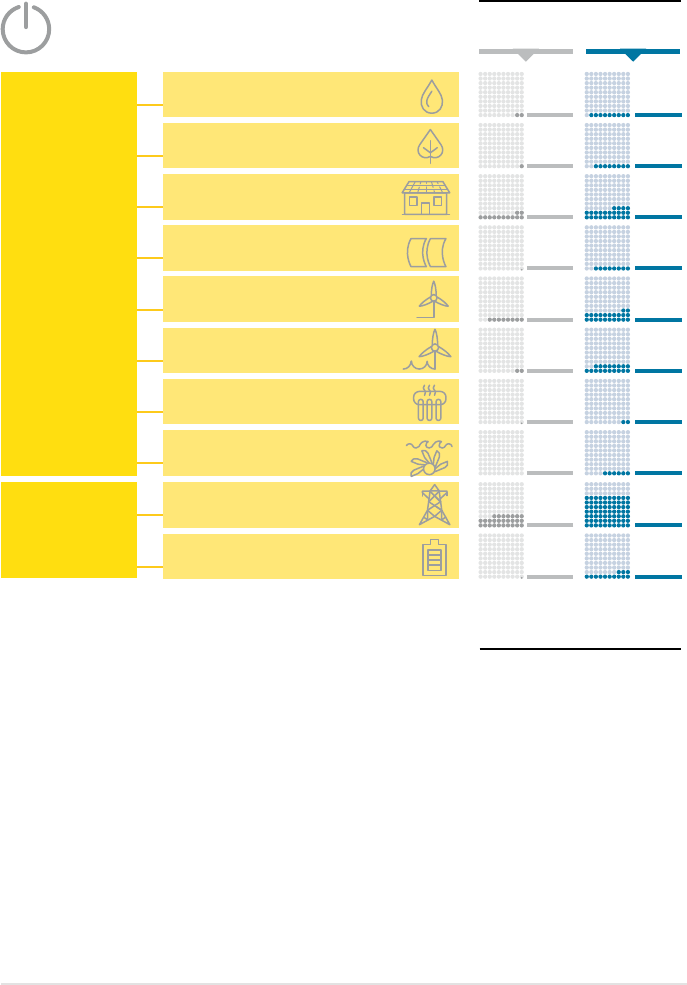
Note: Power generation capacity: Deployment of renewable technologies for power generation. Grids and flexibility:
Transmission and distribution networks, smart meters, pumped hydropower, decentralised and utility-scale stationary
battery storage (coupled mainly with decentralised PV systems) and hydrogen for seasonal storage. Renewables direct
uses and district heat: Renewables in direct end-use and district heat applications (e.g., solar thermal, modern bioenergy).
Energy eciency in industry: Improving process eciency, demand-side management solutions, highly ecient
energy and motor systems, and improved waste processes. Energy eciency in transport: All passenger and freight
transport modes, notably road, rail, aviation and shipping. Key eciency measures include light-weight materials, low-
friction designs, aerodynamic improvements, among others. Vehicle stock investments are excluded. Energy eciency
in buildings: Improving building thermal envelopes (insulation, windows, doors, etc.), deploying ecient lighting and
appliances, equipping smart homes with advanced control equipment, replacing less ecient buildings with energy-
ecient buildings. Hydrogen electrolyser and infrastructure: Electrolyser capacity (alkaline and polymer electrolyte
membrane) for the production of green hydrogen and infrastructure for the transport of hydrogen. Bio- and hydrogen-
based ammonia and methanol: Production of ammonia and methanol from biomass and hydrogen feedstocks. Carbon
removals: CCS deployment, mainly for process emissions in industry and blue hydrogen production. BECCS deployment
in cement and power and cogeneration plants. Circular economy: Material and chemicals recycling and bio-based
alternative products (e.g., bioplastics).
BECCS = bioenergy with CCS; CCS = carbon capture and storage; CSP = concentrated solar power.
102
WORLD ENERGY
TRANSITIONS OUTLOOK
FIGURE 3.2 Annual average investments in power and end uses, historical (2017-2019)
and needed to meet 1.5°C Scenario (USD billion/year)
PowerPower
Flexibility measures
(e.g. storage)
1334
Electricity network
600271
Marine
590
Geothermal
243
Wind oshore
17718
Wind onshore
21280
CSP
843
Historical
2017-19
Annual average investments
USD billion/yr
1.5°C Scenario
2021-50
End uses and
district heat
End uses and
district heat
Total average investments
(excluding fossil fuel and nuclear)
2017-2019
Total average investments
(excluding fossil fuel and nuclear)
2021-2050
Continues next page
Historical
2017-19
Annual average investments
USD billion/yr
1.5-S
2021-50
Bio-based ammonia
220
Recycling and
biobased products
250
Carbon removals
(CCS, BECCS)
650
Hydrogen - electrolysers and
infrastructure
1160
Heat pumps
10212
Industry
15765
Transport
35445
Buildings
963139
Renewables direct
uses and district heat
8431
824 3843
USD
billion/
year
USD
billion/
year
Bio-based methanol
120
Biomass (total)
6913
Solar PV
(utility and rooftop)
237115
Charging infrastructure
for electric vehicles
1312
Biofuels - supply
872
Hydrogen-based
ammonia and methanol
450
Power
generation
capacity
Grids
and
flexibility
Hydro - all (excl. pumped)
8522
Innovation
Electrification
Energy
eciency
Renewables
end uses and
district heat
Carbon
removals
Circular
economy
Oil
Hydro
(excl. pumped)
Biogas
Wind oshore
Tidal/Wave
Natural Gas
Biomass (solid)
Solar PV
Wind onshore
Hydrogen
Coal
Nuclear
Biomass (Waste)
CSP
Geothermal
Renewables Variable Renewables
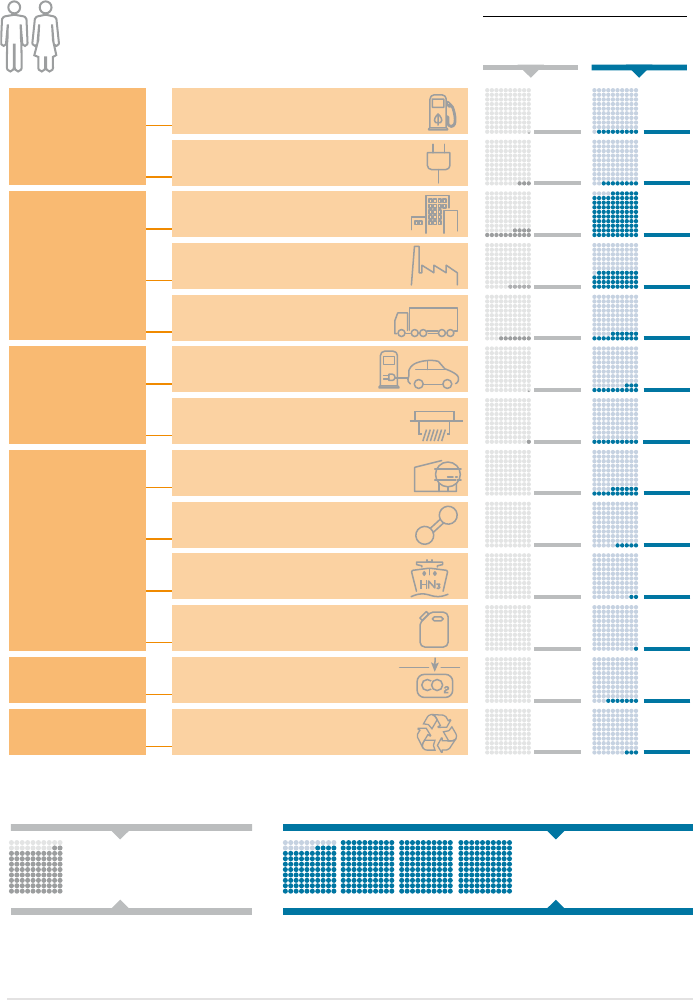
103
CHAPTER 3
PowerPower
Flexibility measures
(e.g. storage)
1334
Electricity network
600271
Marine
590
Geothermal
243
Wind oshore
17718
Wind onshore
21280
CSP
843
Historical
2017-19
Annual average investments
USD billion/yr
1.5°C Scenario
2021-50
End uses and
district heat
End uses and
district heat
Total average investments
(excluding fossil fuel and nuclear)
2017-2019
Total average investments
(excluding fossil fuel and nuclear)
2021-2050
Continues next page
Historical
2017-19
Annual average investments
USD billion/yr
1.5-S
2021-50
Bio-based ammonia
220
Recycling and
biobased products
250
Carbon removals
(CCS, BECCS)
650
Hydrogen - electrolysers and
infrastructure
1160
Heat pumps
10212
Industry
15765
Transport
35445
Buildings
963139
Renewables direct
uses and district heat
8431
824 3843
USD
billion/
year
USD
billion/
year
Bio-based methanol
120
Biomass (total)
6913
Solar PV
(utility and rooftop)
237115
Charging infrastructure
for electric vehicles
1312
Biofuels - supply
872
Hydrogen-based
ammonia and methanol
450
Power
generation
capacity
Grids
and
flexibility
Hydro - all (excl. pumped)
8522
Innovation
Electrification
Energy
eciency
Renewables
end uses and
district heat
Carbon
removals
Circular
economy
Oil
Hydro
(excl. pumped)
Biogas
Wind oshore
Tidal/Wave
Natural Gas
Biomass (solid)
Solar PV
Wind onshore
Hydrogen
Coal
Nuclear
Biomass (Waste)
CSP
Geothermal
Renewables Variable Renewables

Investment in energy transition
technologies needs to more than
quadruple in the 1.5°C Pathway
compared to the current and
business-as-usual levels.
104
WORLD ENERGY
TRANSITIONS OUTLOOK
Under the 1.5°C Scenario, the buildings sector would require investment in a wide range of renewable
and energy efficiency technologies. The solutions are varied, including LED lamps, more efficient
appliances, efficiency-oriented retrofits of building shells, heat pumps and smart home systems. The
average annual investment needed in the buildings sector (USD1.09trillion) is dominated by energy
efficiency investment (USD 0.96 trillion); the remainder going for heat pumps and uses of other
renewables, largely solar thermal. Overall, the buildings sector represents almost 28% of the total
energy transition investment over the period to 2050.
Transport investments would rise to USD 375 billion per year (10% of total transition-related
investment), excluding the incremental costs of electric vehicles. Energy efficiency measures would
account for almost 42% of the total. Charging infrastructure would represent 35%; biofuel supply,
23%. Vehicle charging stations, in particular, would enlarge their share of energy sector investments
to 2% up to 2030 and 4% in the period 2031-2050.
To realise the 1.5°C Scenario, it will be necessary to expand and broaden biomass supply chains
while ensuring their sustainability, and to enhance and scale up conversion technologies. Bioenergy
investments would rise to USD226billion per year (6% of total transition-related investment), most
of it to increase the biofuels supply, while USD69billion per year would be needed for the bioenergy-
based power generation capacity. The remaining USD 72 billion per year would be needed for
the direct use of bioenergy in end-use sectors (USD21billion), district heat generation, production
of ammonia and methanol from biomass (USD 36 billion), and deployment of bio-based plastics
and organic materials (USD13billion) as part of circular economy practices.

Innovations will be needed in the end-use sectors and for sector coupling. Investments in electrolysers
to produce green hydrogen, hydrogen supply infrastructure, and renewables-based hydrogen
feedstocks for chemical production would exceed USD 160 billion per year on average through 2050.
Because of the early stage of development of green hydrogen, supply chain investments of around
USD 5 billion per gigawatt of supply (representing around 15-20petajoules/year, enough to make
2 million tons of iron and steel or to heat half a million energy-efficient homes) would be required.
Today only 0.3GW of hydrogen electrolyser capacity is in place; manufacturing capacity is below
2GW per year.
In the 1.5°C Scenario, thanks to a supportive regulatory framework, new energy transition
technologies become competitive and reach scale, drawing in an increasingly large amount of new
investment. Heat pumps, smart meters, energy storage, hydrogen electrolyser and networks, carbon
capture and storage, bioenergy with carbon capture and storage (BECCS), and others (materials
recycling, bioplastics, etc.) would account for 8% of total energy sector investments during
2021-2030 and grow to 14% in the period 2031-2050, compared with 2.2% and 1.9%, respectively,
in the PES. Around USD 65 billion per year would be needed for the deployment of carbon capture
and storage, mainly in industrial processes, blue hydrogen production, and BECCS for power, heat
generation and industrial processes, along with infrastructure for transport and storage.
District heating and cooling systems offer the opportunity to integrate bioenergy, geothermal
and solar heat. This field of investment can be combined with building renovation. Investments
for deploying renewable technologies to produce district heat could be increased to around
USD8billion per year.
Supportive policies in the 1.5°C
Scenario enable the development
of new energy technologies which
under Planned Energy Scenario
remain relatively subdued.
105
CHAPTER 3

As described in Section 3.1, the 1.5°C Scenario requires an average annual investment
of USD 4.4 trillion over the period 2021-2050. While the level of funding needed is large,
it represents about 5% of the global 2019 GDP and is well within the current capacity
of global financial markets, which reached around USD 200 trillion in 2019 (World
Bank, 2019a; SIFMA, 2020). As well, global institutional investors alone manage about
USD100trilion of assets but have so far largely remained on the sidelines of the energy
transition (IRENA, 2020g). This pool of assets needs to be mobilised.
The rest of this chapter illustrates how the energy transition can be funded in terms of
capital sources (public and private) and types of capital (equity and debt). The model
used for this exercise is based on the energy industry’s current funding structure, a
deep understanding of financial markets, a set of assumptions about how financial
actors perceive the risks and returns, the evolution of their beliefs over time, and their
subsequent actions. This model represents one of many possible scenarios, but it is
evident that the financial capital needed for the energy transition is available and
the required shift in investments is achievable. Given a more proactive role of the
public sector – one in which it establishes the right policy framework, emphasises
and ensures long-term benefits from the energy transition, and supports and deploys
innovative financing methods and instruments to lower the cost of financing – one may
expect the speed of the transition and its associated costs to be even more beneficial.
FUNDING STRUCTURES
FORA CLIMATE SAFE
1.5°CFUTURE
3.2
106
WORLD ENERGY
TRANSITIONS OUTLOOK
WORLD ENERGY
TRANSITIONS OUTLOOK

3.2.1 Funding sources for the energy transition
To reach the investment levels required for the global energy transition, all sources of capital – private
and public, equity and debt – will need to be mobilised. To date, most has come from private sources,
a trend that is expected to intensify. Private sources include venture capital (typically investing in
opportunities posing a higher risk and offering a commensurately high return) and industrial capital
(project developers, corporations, and institutional investors). The latter are more likely to fund more
established ventures. Public capital – from government entities (e.g., sovereign states, municipalities,
state-owned enterprises) and development finance institutions (DFIs) – will continue to play an
important role in the energy transition. Public finance can be used to support relatively new solutions
and markets, to fund enabling infrastructure, to reduce risks and financing costs to attract private
investments, and to support the development of a pipeline of bankable projects. The measures that
DFIs in particular can take to increase the effectiveness of investment are described in Box 3.1.
As transition technologies mature, the capital structure of projects tends to move from early-stage
equity-dominant forms of financing towards low-cost, long-term debt to finance expansion, a trend
that is expected to intensify in the climate-safe scenario. It is also worth noting that the global debt
market is larger than the equity market: in addition to companies, governments, too, raise funding via
debt issuances. The global debt market was estimated at USD 106 trillion in 2019, exceeding equity
market assets estimated at USD 95 trillion (SIFMA, 2020). Debt can also be raised directly from
commercial banks and institutional investors, either as corporate-balance-sheet lending or project
finance. Debt from capital markets can take a variety of forms, but is most often structured as bonds.
1
In the recent past, new types of bonds whose proceeds fund green assets in particular have been
issued with great success, indicating that a change in global lending practices is already under way.
These are explored in Box 3.5.
The capital needed for the energy
transition is available and the necessary
shift in investments toward energy
transition technologies is feasible.
1 Bonds are tradable, fixed-income instruments with a defined maturity. They represent a loan made by an investor
to a borrower (typically corporations or governments).
107
CHAPTER 3

BOX 3.1 De-risking investments in the energy transition
Policy makers and public capital providers (such as development finance institutions, DFIs) can
help lower barriers to a greater scale up of investments in energy transition assets by taking
actions to de-risk projects and mobilise private capital via blended-finance initiatives.
De-risking energy transition projects is imperative if long-term funding is to be made
available at reasonable rates. High real or perceived risk is a frequent stumbling block for many
energy transition projects, especially in emerging and developing markets. Risks that need
to be allocated, mitigated or transferred include political risks in the host country (e.g., war,
expropriation), policy or regulatory risks (e.g., changes in policies, introduction of new taxes),
currency risks (e.g., volatile exchange rate), counterparty risks (e.g., default or non-payment by
off-takers), grid and transmission risks, and liquidity risks. Risk-mitigation instruments such as
guarantees, letters of comfort or intent, hedges against currency risks (e.g., forward contracts
and swaps
a
), letters of credit, and insurance products provide solutions for such risks but may
not be easily accessible or affordable to market participants (IRENA, 2020h). Guarantees are the
most effective leveraging instrument, being involved in 45% of all private capital mobilisation
while representing only 5% of DFIs’ commitments (OECD and Milken Institute, 2018). DFIs and
other providers of public capital would do well to devote more of their efforts (and funding) to
making such instruments widely accessible.
Table 3.1 summarises the types of risks encountered in many energy transition projects and the
instruments available to public capital providers to address them.
Blended finance mechanisms such as co-financing (e.g., public-private partnerships), on-
lending, subordinated debt, and convertible grants and loans encourage the pooling of capital
and the sharing of financial know-how, risks and returns among participating parties (IRENA,
2020g). Notably, the participation of DFIs through blended finance structures typically reduces
the perceived risk of third-party investors and lowers the overall cost of capital (CFLI, 2019).
Blended finance is therefore an essential leveraging tool that DFIs can deploy to magnify the
effect of their funding and crowd-in private sources of capital. Greater use of co-financing to
raise capital for green technologies and project finance
b
will encourage the sector’s shift away
from self-financing via balance sheets and towards greater access to global capital providers.
Such mechanisms can also be coupled with risk-mitigation instruments provided by DFIs for an
additional boost to risk-adjusted returns and bankability.
a. A forward contract is an agreement between two parties to buy or sell an asset at a pre-determined price at a
future date. It is used to hedge against price fluctuations. A currency swap is a transaction in which two parties
exchange an equivalent amount of money in dierent currencies at a certain date and agree to swap the same
amount of money in the future at the original exchange rate or another pre-agreed rate.
b. Project finance is a fairly complex financing mechanism whereby, instead of the project cost being met by
the project owners using their balance sheets, a separate legal entity is formed to own, manage and operate
the project (e.g., a power plant). Funding is typically provided by a group of financiers on a non-recourse basis
in which case lenders have recourse only to the project’s assets and not those of the sponsor. This structure is
typically deployed for projects with a strong stand-alone business case (IRENA, 2020g).
108
WORLD ENERGY
TRANSITIONS OUTLOOK

TABLE 3.1 Key investment risks and financial risk-mitigation tools to address them
RISK DEFINITION RISK MITIGATION TOOLS
Political risk Risks associated with political events that
adversely impact the value of investment (e.g.,
war, civil disturbance, currency inconvertibility,
breach of contract, expropriation, non-honouring
ofgovernment obligations).
Government guarantee, political
risk insurance, partial risk/
credit guarantee, export credit
guarantee
Policy or
regulatory
risk
Risks associated with changes in legal or regulatory
policies that have significant, adverse impacts
on project development or implementation (e.g.,
incentive programmes, taxes, interconnection
regulations, permitting processes).
Government guarantee,
potentially backed by partial
risk/credit guarantee, export
credit guarantee
Currency risk Risks associated with changing or volatile foreign
exchange rates that adversely impact the value of
investments and arises when there is a mismatch
between assets (revenues) and liabilities (debt
financing).
Government guarantee,
currency risk hedging (swap,
forward), loans in local currency
or covered in the power
purchase agreement (PPA)
Counter party
(power off-
taker risk)
Credit and default risk by a counter-party in
a financial transaction. For renewable energy
investments, it is related to the risk of default or
non-payment by the power off-taker, typically
theelectric utility.
Government guarantee, political
risk insurance, partial risk/credit
guarantee, export credit guaran-
tee, liquidity facility, put option/
termination clause in the PPA
Grid and
transmission
risk
Risks associated with limitations in interconnection,
grid management and transmission infrastructure
(including curtailment risk).
Government guarantee, partial
risk/credit guarantee
Resource risk Risks associated with uncertainties around the
availability, future price and/or supply of the
renewable energy resource (e.g., resource risks
related to geothermal projects).
Government guarantee/grant/
convertible grant, geothermal
exploration insurance
Technology
risk
Risks associated with use of nascent technology or
unexperienced labour deploying it.
Specialised insurance products
Liquidity risk Possibility of operational liquidity issues arising
from revenue shortfalls or mismatches between
thetiming of cash receipts and payments.
Government guarantee, letter
of credit, escrow account,
liquidity guarantee, put option
Re-financing
risk
Risk that a borrower is unable to re-finance the
outstanding loan during the life of the project due
to inadequate loan terms (high cost of borrowing,
the maturity of the loan is mismatched with the
lifetime of the asset).
Greater supply of capital
market instruments used for
re-financing (e.g., green bonds/
funds)
Natural
disasters
Risk that a natural disaster will impact the
ability ofacounter-party to fulfil its obligations
(e.g.,produce power, make payments).
Property and casualty
insurance
Source: Adapted from IRENA (2016a).
109
CHAPTER 3

Capital flows to areas of opportunity and higher risk-adjusted returns. As a new technology establishes
itself, investors put capital into companies leading the deployment of the new technology, while
pulling out of companies exploiting the old technology. This results in two feedback loops, further
driving technological change and new capital flows. New technologies generally experience positive
feedback loops. As capital flows into the new technology, the cost of capital falls, making it possible
for companies to raise financing to expand production. As production expands and economies of
scale are established, costs fall faster, and more capital is attracted into the new technology. At the
same time, old technologies experience negative feedback loops. As investors lose faith in the old
technology owing to its dimming prospects, capital exits rapidly, making it harder for incumbents to
raise capital at affordable rates. The consequent reduction in production leads to higher unit costs, as
total cost is spread over a smaller volume. This, in turn, forces incumbents to further curtail production,
leading to lower investor confidence, write-downs, lower share prices and a reduced market share.
Box 3.2 discusses how financing sources change at different stages of a technology revolution.
BOX 3.2 Funding sources at each stage of a technology revolution
Looking at the ongoing global energy transition as the current technology revolution can provide a good
indication of how capital is likely to flow to new technologies over time and help policy makers choose
the policies and enabling frameworks required to meet investors’ needs at each stage of technology
development, thus accelerating the energy transition.
a
In the very early stages of a technology revolution – the so called gestation phase (up to a market share
of approximately 1%) – various ideas and new technologies are tested. As private investors do not know
which technology will succeed, innovation is most often done by entrepreneurs. The public sector is also
an important source of financing at this stage, often funding demonstration projects or research and
development.
When a winning technology begins to emerge, the revolution enters an irruption phase (or spring phase),
where market share moves up to around 5%. This is the period when the new technology becomes cost
competitive and starts to grow rapidly and attract considerable capital. In financial markets, the first
movers will typically be venture capital and hedge funds that have a high tolerance for risk and are willing
to invest in equity shares of small-scale businesses with high growth potential.
In the frenzy (or summer) phase, more and more investors allocate their capital to the new technology,
and market share moves from 5% to around 25%. However, because capital moves faster than new
options are created, this period tends to end in bubbles. As the new technology gains competitiveness,
public sources of funding shrink as a share of total funding. Loans from commercial financial institutions
are most prevalent as technology approaches competitiveness. However, commercial loans plateau and
then begin to decrease once technology reaches competitiveness, as less costly ways to raise capital
emerge. Industry equity grows, as the technology can now provide a viable business model. Corporations
begin issuing bonds to raise capital earmarked for these technologies. Venture capital, on the other hand,
may shrink in volume as the market becomes too competitive to yield the high margins they seek.
a. The five technology revolutions highlighted by Perez (2002) are the industrial revolution (after 1771); the age of steam
and railways (after 1829); the age of steel, electricity and heavy engineering (from 1875); the age of oil, cars and mass
production (after 1908); and the age of information and telecoms (after 1971).
110
WORLD ENERGY
TRANSITIONS OUTLOOK
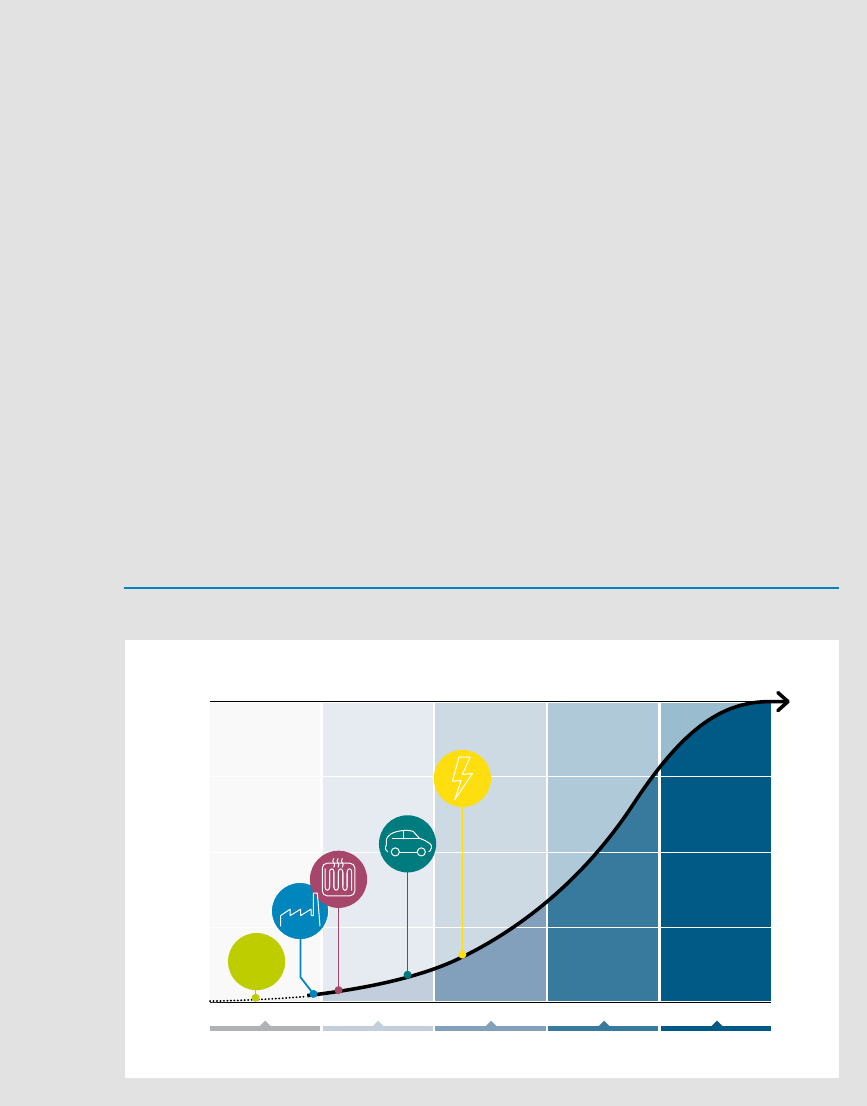
At the end of the period of frenzy, an event occurs to trigger a collapse of the financial bubble. This is
followed by a turning point, when regulatory changes are made to facilitate the further expansion of the new
technology. This synergy (or autumn) phase marks the full flourishing of the technology, with market share
moving from 25% to 75%. In this phase, investors understand the new technology and can make solid returns.
As the technology begins replacing incumbents to become the dominant technology, the kickstarting role of
public equity declines (though governments may choose for profit-making reasons to continue investing in the
form of state ownership). At the same time, venture capital and loans from development finance institutions
continue to decrease. In their place, industrial capital and financing raised through capital markets become
the main funding sources for dominant technologies, with developers and corporations owning assets,
and capital easily raised through bonds. Over time, however, bonds shrink slightly in volume as technology
gains more dominance, and there is less need to go through capital markets.
Finally, in the mature (or winter) phase, the new technology progressively loses its competitiveness
as a result of lower demand and higher costs. Capital then shifts away from such technology and onto
the new promising opportunities.
In the context of the global energy transition, the electricity sector has been leading the change, followed
by the transport sector (Figure 3.3). At the end of 2019, solar PV and wind represented 8% of global
electricity generation (growing at 24% and 13% per annum, respectively). Both were in the frenzy phase
of their development (IRENA, 2020i). Electric vehicles have recently irrupted; their market share in 2020
was 4% of sales. Other energy transition technologies (notably green hydrogen) are still in the gestation
phase. Harder-to-abate sectors of the economy such as industry are in the same phase, where it is not
yet clear which new carbon-free technology will be most successful. Each technology’s stage of technical
development and market penetration varies by country, depending on specific conditions.
FIGURE 3.3 Energy transition technologies and their development stage
0
50
75
25
100
Penetration level of new
energy technology (%/2019)
Time
0
50
75
25
100
Time
Penetration level of new
energy technology (%/2019)
Gestation Phase 1
Spring
Phase 2
Summer
Phase 3
Autumn
Phase 3
Winter
Gestation Phase 1
Spring
Phase 2
Summer
Phase 3
Autumn
Phase 4
Winter
Electricity
generation
Electric
vehicles
Building
heat
He avy
industry
H
2
Green
Hydrogen
111
CHAPTER 3

3.2.2 Key changes in funding structures to 2050
A climate-safe future as envisioned in the 1.5°C Scenario requires funding amounts, patterns of
technological distribution and capital structures that are markedly different from those of the base
year (2019) and the PES. Governments’ ambitions and the speed of implementation of the required
supportive measures will need to take hold decisively for the world to enact the 1.5°C Scenario.
In 2019, energy assets of all types were primarily financed by private sources, which contributed
some USD 1.6 trillion, or about 80% of total investment in the energy sector. The majority of private
funding came in the form of debt – either loans or bonds. The public sector, through DFI lending
and public equity, provided about USD 450 billion. Broken down by technology, most capital was
invested in fossil fuel supply (41%), followed by energy efficiency (22%), renewables (16%), power
grids and other energy flexibility measures (13%), and power generation from nuclear and fossil
fuels (8%). Investment in battery storage, hydrogen, and other technologies remained relatively
small (BNEF, 2021a; IEA, 2020a; IRENA and CPI, 2020). On-balance-sheet financing by utilities,
energy companies and developers accounted for two-thirds of the financing raised in 2019 for new
construction of utility-scale renewable energy projects (estimated at about USD 150 billion). The other
third came in the form of project finance structures (estimated at about USD 80 billion) (Frankfurt
School-UNEP Centre and BNEF, 2020).
Figure 3.4 tracks sources of funding from 2019 to 2030 and 2050 under the PES and the 1.5°C
Scenario. The public sources are public equity and loans from DFIs. The private sources are private
equity, lending from capital markets, and lending from commercial banks and institutional investors.
In the 1.5°C Scenario, the increase in aggregate funding needed (an increase that will be driven
largely by green technologies) would be covered by the private sector, as investors take decisive
action to limit their exposure to assets not aligned with global climate actions and channel funds to
green assets. Institutional investors, in particular, can contribute considerably to closing the financing
gap for the energy transition (Box 3.3). Public funding would continue to play a crucial role in
lowering risks and barriers for private capital, supporting the policy environment, and enabling
a just and inclusive energy transition (as described in Chapter 4 and Chapter 5). While direct public
funding in absolute numbers will grow through 2050, its share of total investments in the energy
transition will decline over time as green technologies continue to attract a growing share of private
capital.
112
WORLD ENERGY
TRANSITIONS OUTLOOK

FIGURE 3.4 Total average yearly investment by source and type of financing:
2019, PES and 1.5°C Scenario (2021-2030 and 2031-2050)
2 106
billion USD
2 106
billion USD
0
1 000
2 000
3 000
4 000
5 000
6 000
Lending (private)
Capital markets
Equity (public)
Equity (private)
Lending from
Development Finance
Institutions
2019 2021-2030 2031-2050 2031-20502021-2030
USD billion/year
19 %19 %19 %
26%26 %26%
29%29%29%
6 %6 %6 %
6 %6 %6 %
6%6%6%
32%32%
23%23%23%
28%28%28%
36%36%
12%12%12%
19%19%19%
35%35%35%
22%22%22%
24%24%
9%9%9%
10%10%10%
11%11%11%
31%31 %
16 %16 %16 %
21%21%21%
37 %37 %
20 %20 %20 %
21 %21 %21 %
Where we need to be (1.5-S)Where we are heading (PES)
3 537
billion USD
3140
billion USD
5 686
billion USD
3 696
billion USD
Sources: For 2019 investment: source and type of financing BNEF (2021a), IEA (2020a), IRENA and CPI (2020);
for PES and 1.5°C Scenario: IRENAand BCG analysis.
The additional capital needed for the
1.5°C Pathway would be largely covered by
the private sector, while public resources
would continue to be key to lower the
risk perception for investors.
113
CHAPTER 3
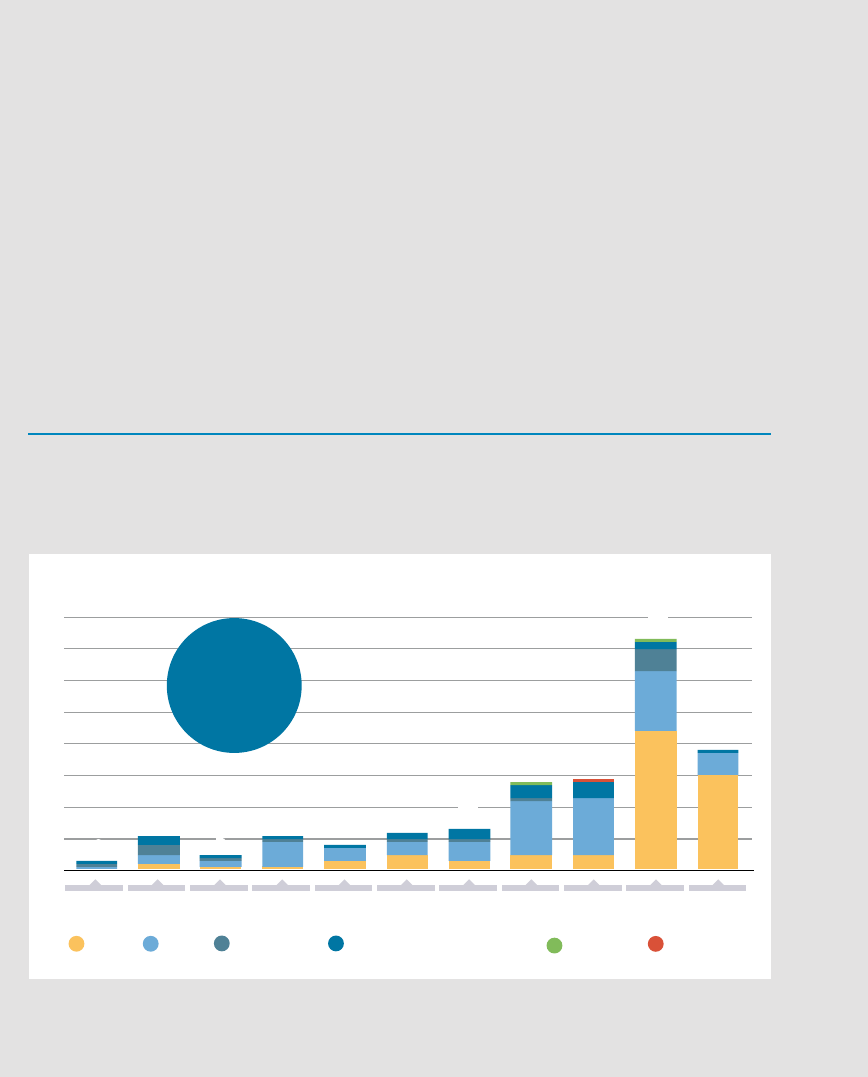
114
BOX 3.3 Institutional investors and the energy transition
Institutional investors represent one of the largest capital pools in the world, yet their
potential role in financing the energy transition has so far remained largely untapped. This
will have to change if the 1.5°C Scenario is to be realised.
IRENA investigated the investment behaviour of institutional investors in the renewable energy
sector by analysing a sample of 5 800 pension plans, insurance companies, sovereign wealth
funds, and endowments and foundations. By 2018-2019, this core group of institutional investors
managed about USD 87 trillion in assets, yet IRENA’s analysis shows that while their participation
in renewable energy transactions has increased in frequency over the past two decades, it
remains subdued (IRENA, 2020g). By 2018, a fifth of such investors had invested in renewable
energy funds, representing about USD 6 billion per year, whereas only 1% of such investors
had invested directly in renewable energy projects. While the number of direct investments in
renewables has grown over time, institutional investors still provided, on average, only 2% of
total renewable energy financing in 2018 (Figure 3.5) (IRENA and CPI, 2020).
Source: IRENA analysis based on Preqin data (2019).
Note: "Mixed renewable technologies" include more than one type of renewable energy technologies.
11
11
8
12
28
29
38
0
10
20
30
40
50
60
70
80
2009 2010 2011 2012 2013 2014 2015 2016 2017 2018 Q2 2019
2%
of global
investments in
renewable
projects
2%
of global
investments in
renewable
projects
Solar Wind Hydropower Mixed renewable technologies Bioenergy Geothermal
55
3
3
Number of transactions
7373
13
13
WORLD ENERGY
TRANSITIONS OUTLOOK
FIGURE 3.5 Number of renewable energy project transactions involving
institutional investors, by technology, 2009 – Q2 2019

115
Renewable energy represents only one of the energy transition solutions needed to achieve the
1.5°C Scenario. Institutional capital has the potential to bridge the investment gap in other areas
of the energy sector as well. But to activate this important capital pool, a range of co-ordinated
actions involving regulations, policy levers, capital market solutions and internal changes will be
required. These include:
• Internal capacity building on the part of institutional investors will be needed in some
markets to enhance skills in the financial, technical and legal structuring of energy transition
deals. In addition, investors also need to hone their skills in climate risk and energy sector
analysis and governance. The required skills transfers can be advanced by collaborating with
other institutional investors and development finance institutions to co-finance trades, and by
participating in institutional investors’ groups.
• Project pipelines must be built to make energy transition projects more bankable and
to increase their ticket size– both aimed at making them more attractive to institutional
investors. Solutions include greater provision of risk-mitigation instruments by public
financiers, standardisation of contractual agreements, aggregation of projects into larger
transaction blocks, and a wider deployment of blended finance initiatives between public
capital providers and institutional investors.
• Capital market solutions can help channel institutional capital into energy transition
technologies by enlarging the supply of green investment vehicles, created in accordance
with a green taxonomy aligned with global climate targets (Box 3.4). Such vehicles include
project bonds, project funds and green bonds; all can provide institutional investors with a
desirable scale, credit assurance (when rated) and liquidity (when listed on an exchange).
• Policy and regulatory actions can be a powerful lever to steer institutional capital towards green
assets. In addition to policies that help promote overall renewable energy deployment, these
include 1) review and revision of investment restrictions that may limit institutional investors’
investments in real assets like renewable projects; 2) adoption and development of sustainable
finance principles, including frameworks for calculation and disclosure of climate-related risks;
and 3) application of long-term sustainability mandates and green investment targets.
There are already signals in the market that institutional investors are re-evaluating their portfolios
and shifting their attention to sustainable assets, including renewables. Many institutional
investors – including Norway’s Government Pension Plan Global, Sweden’s Första AP-fonden,
the United Kingdom’s National Employment Savings Trust, and Dutch Robeco – have announced
their intention to divest from fossil fuel assets to reduce their exposure to sustainability-related
risks (Ambrose 2019; IEEFA, 2020a; IEEFA, 2020b; Tuck, 2020). Others have begun to make
net zero emissions pledges. These include the Ontario Teacher’s Pension Plan, the New York
State Common Retirement Fund, and a number of major British pension plans, to name a few
(Ceres, 2020; Jolly, 2021; OTPP, 2021).
Keeping the world on a climate-safe pathway will hinge on the participation of institutional
investors in the energy transition. The pace of the shift of institutional capital from fossil fuel
assets to green energy technologies, however, needs to quicken.
CHAPTER 3

In the 1.5°C Scenario, governments increase both their ambitions and their speed of
implementation. While still providing a sizable amount of funding to finance energy assets (their
financing in absolute terms increases from USD 460 billion in 2019 to USD 1.1 trillion in the next
decade and USD 630 billion in 2031-2050), direct public sector funding into the technological
avenues of the transition decreases over time from 22% of total spending in 2019 to 19% in the period
2021-2030 and 17% in the following decades. In the meantime, considerable public funding will be
needed for supportive policy measures and to create an enabling environment (Chapter 4). Private
lenders, sitting on plenty of capital, are increasingly aligned with climate targets and more reluctant
to provide loans to fossil fuels. They are expected to phase out fossil fuel investments relatively
quickly. Governments, too, are focusing on supporting transition-related technologies and will
play a key role in areas related to supportive policies, stricter regulation, targeted financial support
for new technologies, and infrastructure.
In the PES, there is an asymmetry of beliefs, whereby the private sector moves faster than the public
sector to exit brown technologies. In the 1.5°C Scenario, this asymmetry remains in some countries;
however, only a relatively minor shift occurs in the shares of private and public equity investment
in these technologies. Moreover, in the 1.5°C Scenario, this partial asymmetry would be resolved
in the period 2021-2030 as public and private stakeholders unite in taking equally decisive action
to shift assets towards technologies aligned with climate targets and actions. The share of public
investments (debt and equity) in fossil fuel supply, for example, drops from 51% in 2019 to 15% in
the 2031-2050 period in the 1.5°C Scenario as public investment in brown technologies falls. This
analysis is based on the perception that regulators around the world will put growing pressure on
financial actors to align their assets with climate targets. Box 3.4 provides an overview of recent
developments in the green taxonomy and climate-related risk disclosures that will help drive the
investment shift.
In absolute terms, as noted, the public sector is still projected to invest in the energy sector significantly
more on average annually over the 30 years from 2021 to 2050 (USD779billion) than it did in 2019
(USD461billion). An increase in public debt financing – from 7% in 2019 to 14% in 2021-2030 and
11% in the following two decades – will be an important facilitator for other lenders, especially in
developing markets. In energy efficiency for buildings, particularly, public debt plays an important
role (it is expected to make up 20% of the overall funding need for the sector in 2021-2050), given
that the business case for these measures remains difficult and requires government mandates
and public financing.
116
WORLD ENERGY
TRANSITIONS OUTLOOK

In 2021-2030, DFI lending is projected to grow from around USD 60 billion in 2019 to over
USD550billion per year under the 1.5°C Scenario – compared with USD 200 billion in PES – before
declining in the period between 2031 and 2050. The initial growth over the 2019 level represents
about 55% of the balance sheet of multilateral and regional DFIs, but this may be achievable, since
DFIs have a lending curve similar to governments and can increase their lending portfolio more easily
than commercial banks. Hence, while such investments are challenging, they should also be feasible.
In addition to direct lending, DFIs should boost the effectiveness of their interventions by focusing
on activities that mobilise private sources of funding, such as blended finance transactions (including
co-financing with private investors) and risk-mitigation instruments to make energy transactions
more bankable for private investors (see Box 3.1).
In the 1.5°C Pathway, private sector rapidly
redirects its capital towards transition
technologies, while governments speed up
implementation of supportive policies.
117
CHAPTER 3

118
WORLD ENERGY
TRANSITIONS OUTLOOK
BOX 3.4 Green taxonomy and climate-related risk disclosure
Policy makers can help channel global capital towards sustainable assets by adopting green
taxonomies aligned with climate targets and by requiring investors to disclose and reduce their
climate-related risks. Significant developments on both fronts are already underway but need to
be further strengthened and globally deployed.
The green taxonomy is the cornerstone of the sustainable finance movements that are
spreading rapidly in global capital markets. As investors increasingly seek green assets, and as
financial markets in turn offer more green securities, the question arises as to what assets are
to be considered green – with the risk of “greenwashing” looming large. To date, many different
definitions of green and sustainable have been used in the financial markets, with varying levels
of alignment with science-based climate targets. This is why the market has so eagerly awaited
the European Union’s Sustainable Finance Taxonomy, released in April 2021. The EU taxonomy
defines what constitutes sustainable activities and also requires providers of sustainable
investment products in the Union to disclose how aligned they are with the taxonomy (European
Commission, 2021a). Other states and regions are expected to take similar action, making it
easier for the growing pool of investors seeking sustainable assets to identify qualifying
opportunities. China, for example, has already announced changes in its green taxonomy that
bring it closer to the EU standard (Li and Yu, 2021).
Climate-related risk disclosure is another recent development in the capital markets with
potentially important effects on global investments. It would help move climate risk out of the
“non-traditional” financial risk category and well into the spotlight of global investors. Market
participants are already making significant inroads in this domain. These include organisations
that develop climate-risk calculation and reporting standards, such as the Task Force on Climate-
Related Financial Disclosures (TCFD); organisations that help align climate-risk disclosure with
global accounting standards, such as the Sustainability Accounting Standards Board and the
Climate Disclosure Standards Board; and a host of sustainable finance initiatives that promote
stakeholder co-operation and adoption of such standards. Table 3.2 for example, presents
TCFD’s recommendations regarding “decision-useful” climate-related disclosure.
In the end, it will be up to regulators to mandate climate-risk reporting and enforce such
mandates. Several countries are already taking such measures. The French Energy Transition
Law, adopted in 2015, requires French institutional investors (including asset managers and
banks) to disclose their greenhouse gas emissions and how climate risks will affect their assets
(Mazzacurati, 2017). More stringently, the British government announced that it would require all
listed companies and large asset owners to disclose climate-related information in line with TCFD
recommendations by 2022 (Government of the United Kingdom, 2019). Furthermore, in April
2021, New Zealand introduced legislation to require banks, insurers and investment managers to
report their climate-related risks and how such risks will be managed. If adopted, New Zealand’s
measure would be a world first (Reuters, 2021).

119
CHAPTER 3
Disclose the
organisation’s
governance around
climate-related risks
and opportunities
Disclose the actual and
potential impacts of
climate-related risks
and opportunities on
the organisation’s
businesses, strategy,
and financial planning
where such information
is material
Disclose how the
organisation identifies,
assesses, and manages
climate-related risks
Disclose the metrics
and targets used to
assess and manage
relevant climate-related
risks and opportunities
where such information
is material
a) Describe the
board’s oversight of
climate-related risks
and opportunities
a) Describe the
climate-related risks
and opportunities the
organisation has
identified over the
short, medium, and
long term
a) Describe the
organisation’s processes
for identifying and
assessing climate-
related risks
a) Disclose the metrics
used by the
organisation to assess
climate-related risks
and opportunities in
line with its strategy
and risk management
process
b) Describe
management’s role
in assessing and
managing climate-
related risks and
opportunities
b) Describe the impact
of climate-related risks
and opportunities on
the organisation’s
businesses, strategy,
and financial planning
b) Describe the
organisation’s processes
for managing
climaterelated risks
b) Disclose Scope 1,
Scope 2, and, if
appropriate, Scope 3
greenhouse gas (GHG)
emissions, and the
related risks
c) Describe the resilience
of the organisation’s
strategy, taking into
consideration dierent
climate-related
scenarios, including a
2°C or lower scenario
c) Describe how
processes for identifying,
assessing, and managing
climate-related risks are
integrated into the
organisation’s overall
risk management
c) Describe the
targets used by the
organisation to manage
climate-related risks
and opportunities and
performance against
targets
GOVERNANCE
STRATEGY
RISK MANAGEMENT
METRICS AND TARGETS
TABLE 3.2 TCFD recommendations regarding ‘decision-useful’ climate-related disclosure
Source: TCFD (2019).

Far more debt is incurred to fund energy assets (particularly green assets) in the 1.5°C Scenario
than in the PES, as greener assets are better able to attract low-cost long-term financing. Over
time, brown technologies have growing difficulty finding debt financing at affordable costs and must
rely on equity financing.
In the 1.5°C Scenario, debt would meet most of the increase in the funding needs driven by green
technologies. Debt’s share in the finance mix grows from 44% in 2019 to 66% in 2021-2030 and
57% in 2031-2050 (compared with 43% and 39%, respectively, in the PES). In absolute terms too,
debt issuances grow, experiencing a fourfold increase – from USD932billion in 2019 to an average
USD3.7trillion per year in 2021-2030, before declining to USD2.2trillion per year in the following
two decades. Technologies aligned with climate targets should have no difficulties in attracting
long-term debt financing under satisfactory terms, including in capital markets. Box 3.5 presents an
overview of the green bonds market and the trend of record issuances since 2014, highlighting the
massive potential for further growth in green debt. The shift toward higher shares of debt capital in
the 1.5°C Scenario reflects a reduction in the perceived risk of energy transition technologies.
Going forward, long-term climate commitments and growing pressure on financial institutions
to align their investment portfolios with the targets of the Paris Agreement are likely to make it
increasingly difficult for brown technologies to obtain commercial loans at reasonable rates. As
many lenders would be increasingly reluctant to back massive investments in fossil fuel assets, these
technologies would need to meet their funding needs by retaining earnings (less dividends) and
potentially issuing new stock. In the PES, where 44% of energy sector investments would still be
directed to fossil fuel and nuclear assets, the share of equity would grow from 56% in 2019 to 57%
up to 2030 and 64% in the period 2031-2050. Under the PES, equity would fund about 70% of the
additional investments in fossil fuel technologies (or USD 814 billion per year), the majority of which
(61%) would come from the public sector.
120
WORLD ENERGY
TRANSITIONS OUTLOOK
BOX 3.5 Green bonds
The rise of green bond issuances in the recent past indicates that a shift in lending behaviour is already
under way, as assets aligned with climate targets are attracting growing amounts of financial capital,
especially long-term debt. However, the potential for further growth remains enormous and can benefit
from active support from governments and market participants to help make the 1.5°C Scenario a reality.
Green bonds help issuers (governments, corporations) attract investors that have sustainability goals,
providing them with greater transparency over the use of proceeds than is typically the case with
traditional bonds. Green bond proceeds fund green projects in renewable energy, energy efficiency,
green buildings, clean transport, sustainable water management, waste and pollution control, and
nature-based assets, among others (CBI, 2019). Most green bonds fund multiple green categories.
IRENA’s analysis of more than 4 300 green bonds issued over the past decade shows that about 50%
(by volume, in USD) included renewable energy, while 16% were earmarked solely for renewable assets
(IRENA, 2020j).
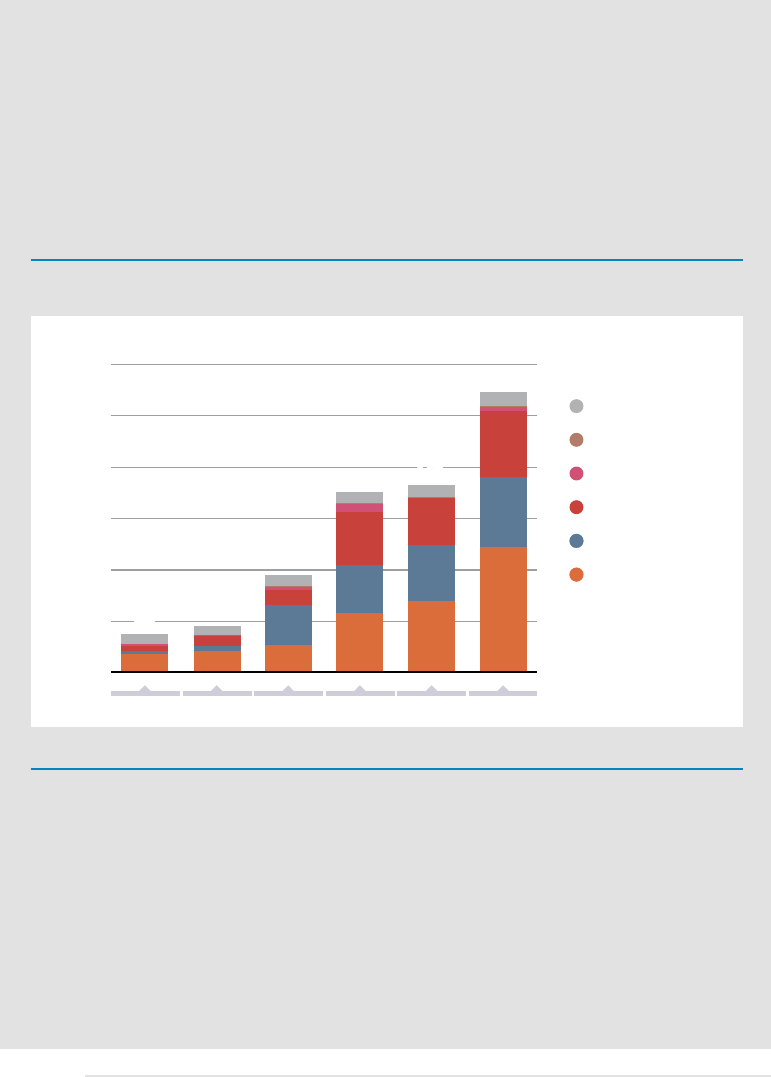
121
CHAPTER 3
The green bond market started about a decade ago with initial issuances from development finance
institutions such as the European Investment Bank in 2007 (for EUR 600 million) and the World Bank in
2008 (EIB, 2017; World Bank, 2019b). Since then the market has diversified away from DFIs to a variety
of issuers including local, state and federal governments, and a variety of issuing companies (financial
institutions, corporations). The green bond market has also grown rapidly, attracting about USD271billion
in issuances in 2019 (Figure 3.6) (IRENA, 2020j). Further, in 2020, despite the COVID-19 pandemic, the
market recorded record-high issuance of around USD 290 billion and reached the USD 1 trillion mark in
cumulative issuances (CBI, 2020). However, given that the global bond market as a whole is worth about
USD 100 trillion, the potential for further growth in the green bond market remains very large.
To realise this potential, several market barriers need to be lowered. These include lack of awareness of
the benefits of green bonds (and hence lack of investor demand); lack of regulatory clarity and mandates
surrounding the green taxonomy and green certification, bond issuance and reporting on use of
proceeds; and relatively high transaction costs. To lower these barriers, regulators can adopt issuance and
certification standards aligned with climate targets such as those offered by the Climate Bonds Initiative.
They can also provide economic incentives in co-operation with DFIs to fund demonstration issuances
and offer grants to offset transaction costs. Policy makers can co-operate with green bond leaders in
the financial industry to build financial skills needed to issue green bonds and other new instruments.
Finally, policy makers can create green mandates for crucially important capital holders such as
institutional investors, thereby ensuring steady demand for green financial instruments (IRENA, 2020j).
FIGURE 3.6 Annual global green bond issuance by region, 2014-2019
Source: IRENA, 2020g; based on data from the Environmental Finance (2020).
0
50
100
150
200
250
300
2014 2015 2016 2017 2018 2019
USD billion
Latin America
Asia-Pacific
Supranational
Europe
Africa
North America
17 20
26
56
68
121
15
51
45
63
38
46
54
67
44
93
173
271
36
36
179
179

While adequate funding for the energy transition is achievable, capital availability will
depend largely on investors’ assessment of risks and returns. Several trends are likely to
influence this perception – positively or negatively. Dedicated policies and capital market
interventions may be needed to mitigate risks in some contexts so as to increase the
availability of affordable capital and increase the speed of the transition.
Observed trends related to the inherent nature of energy transition technologies include
the broadening geographical distribution of investments (with more assets being built in
developing countries); the shift in financing structures from operations-intensive to capital-
intensive expenditures (resulting in a frontloading of investments); and fragmentation of
markets and proliferation of smaller projects (reducing transaction size for investors); and
the introduction of new technologies. Some of these trends may have a positive or mixed
effect on capital pools. Others will need to be managed via dedicated policies and capital
market interventions to mitigate risks and increase the availability of affordable capital.
Other trends in the enabling environment include those related to the shift of power systems
towards liberalised markets in some countries and the adoption of policies to keep the
world on a climate-safe pathway; the forced retirement of fossil fuel assets to accelerate the
transition; the wider adoption of policies that eliminate distortions and incentivise energy
transition solutions; larger public investments in supportive infrastructure; increased
awareness among consumers and citizens about the potential and benefits of transition-
related solutions; and support for innovation and the development of domestic value chains.
THE IMPACT OF THE
ENERGY TRANSITIONON
FINANCING RISKS
ANDCAPITAL POOLS
3.3
122
WORLD ENERGY
TRANSITIONS OUTLOOK

3.3.1 Observed trends related to the nature of
the energy transition and their impact on
investment risks
The broader geographical distribution of investments. As the global transition unfolds, the
geographical distribution of investments in energy assets is broadening. With an increasing number
of investments located in countries characterised by challenging political, technological and market
conditions, investors’ overall perception of risks is expected to increase. Public finance can be
particularly effective in supporting technologies and regions that private investors perceive as too
risky. This can be done through blended finance and risk mitigation (Box 3.1). In addition, activating
different types of investors with varying requirements in terms of size, location and risk–return profile
could help attenuate the increased perception of risks related to this trend. Creating investment
vehicles that open access to green projects in different countries can also help investors access new
opportunities abroad.
The shift from operations-intensive technologies to capital-intensive technologies. The
energy transition will entail a shift from financing fossil fuel technologies, which rely heavily on
operating expenditures (OPEX), to energy transition technologies, which generally have a more
capital-intensive profile (CAPEX). Depending on context, this trend affects the funding structure
differently with respect to preexisting perceived risks. A rise in CAPEX makes an investment more
sensitive to the reward that investors and lenders expect, which depends largely on the perceived
risk of the investment. Risk perception would thus have a much greater effect on the viability of
the investment. Therefore, it is easier for a CAPEX-intensive investment (e.g., solar and wind) to
compete with an OPEX-intensive investment (e.g., fossil fuels) in a low-risk environment than in a
high-risk environment. This explains why renewable energy projects have a much harder time
reaching financial closure in developing countries. There is also a temporal difference. The viability of
a CAPEX-intensive investment will depend on perceived risks over a short period - essentially around
the time of the financial closure, when interest rates and the financial model that predicts a certain
return on investment crystallise, on trade agreements, power systems structures, and contractual
clauses, among other factors. An investment in OPEX-heavy technologies or assets by contrast, will
be affected over its lifetime by fluctuations in the cost of the resource (coal, fuel or gas). DFIs can
play a key role in this context, by facilitating access to risk-mitigation instruments needed to lower
early-stage risks, both real and perceived.
123
CHAPTER 3

More fragmented markets and smaller projects. Several energy transition technologies (notably
rooftop solar PV and other individually adopted technologies) are distributed, which affects their
risk profile in a number of ways. On the one hand, some decentralised installations such as heat
pumps are only marginally affected by political risk, if at all, as the bulk of the support they receive
is typically provided during their installation. Moreover, counterparty risk is also generally reduced
as the investor and the off-taker are often the same entity, and revenues come mostly in the form
of reduced electricity costs (for power assets) or overall energy expenses (for energy efficiency
projects). However, the smaller ticket sizes of decentralised projects may reduce their attractiveness
in the eyes of traditional financiers (e.g., commercial banks) owing to the higher transaction costs
involved and the inability of some installers to provide guarantees to back their loans. In these
instances, contract standardisation and bundling of projects through securitisation can help to
reduce transaction costs by increasing the overall ticket size (IRENA, 2020g; IRENA and CPI, 2020).
Targeted regulations and public capital support are fundamental to help such projects become more
widespread and gain commercial momentum.
Innovation and introduction of new technologies. While some renewable energy technologies
such as solar PV and onshore wind have been widely deployed worldwide and are now relatively
mature, other technologies, such as green hydrogen, are still at early stages of development and
adoption. Those solutions still represent comparatively high-risk investments owing to uncertainties
related to the technology itself as well as the ecosystem supporting it. For instance, the supporting
infrastructure (e.g., distribution networks) may not be fully developed by the time green hydrogen is
ready to be deployed, and available support schemes may be unsuitable or adjusting too slowly to
the pace of innovation. While these conditions are attractive for some investors looking for higher
returns from riskier investments (such as venture capital providers, for example), traditional investors
may be reluctant to commit to these technologies and may want to wait until they reach a certain
level of maturity. Public sector financing may therefore be needed to provide the initial investment
injection.
Several observed trends related to
the energy transition are likely to
affect investors’ risk perception and
the availability and cost of capital
for energy-transition technologies.
124
WORLD ENERGY
TRANSITIONS OUTLOOK

3.3.2 Observed trends in power system structures
and enabling environments and their impact
on investment risks
Power structures transitioning to more liberalised systems. For power structures moving towards
more liberalised systems, power generation is remunerated in the wholesale market based on
clearing prices, which are typically determined according to the marginal cost of the most expensive
active generator in a certain time slot. As the share of renewables increases in the system, this
structure increases investors’ exposure to price and off-take risks, thus increasing their reluctance
to invest in variable renewable energy. Price risks arise from market price variations reflecting the
fundamental demand-supply balance and the clearing price, which declines with rising penetration
of low-marginal-cost renewable energy. Price risks can be mitigated through long-term off-take
agreements. But such agreements sometimes come with counterparty risks, including the risk of
payment delays, as the off-taker may not always be creditworthy. Because merchant markets risk
limiting the penetration of variable renewable energy into the power system, it remains unclear
whether this trend will continue in the future. A restructuring of power markets or a separation of
generation risks and balancing risks through new auction structures will be needed to ensure higher
penetration of renewables in the market (IRENA, 2020d) (see In Focus section in Chapter 4).
Increased implementation of policies to accelerate the retirement of fossil fuel assets To
accelerate the energy transition and achieve decarbonisation targets by 2050, many existing carbon-
intensive industries and assets will face early retirement and become stranded.
2
Implementing policies
to retire fossil fuel assets would give a strong signal to investors about governments’ commitment
to the energy transition and would reduce risks related to the political environment and the stability
of transition-related plans. However, the way early retirement is managed and compensated by
governments could negatively affect the risk perception of energy sector investors. Abrupt change,
in particular, before financial players have not had a chance to adjust their positions, could potentially
have negative ripple effects in the overall financial market and the economy, given that a large share
of pension funds’ assets, for example, are currently invested in fossil fuels. To reduce uncertainties
and risks for energy sector investors, the phase-out of fossil fuel assets should be carried out
with transparent and strategic planning, a clear timeline, and clear guidelines and mandates for
investors to redirect their assets towards industries aligned with climate targets. Governments could
compensate for some of the losses incurred when these changes result in excessive social harm – for
example, by developing programs for retraining and relocation of the workforce. This approach may
be less disruptive and contribute to the promotion of a just transition (see Section 5.3).
2 Stranded assets are defined as the remaining book value of assets substituted before the end of their anticipated
technical lifetime to achieve 2050 decarbonisation targets, without recovery of any remaining value (IRENA, 2017b).
125
CHAPTER 3

Wider adoption of policies that eliminate market distortions and incentivise energy transition
solutions. While many renewable energy technologies have achieved competitive cost structures,
some transition technologies such as electric vehicles and heat pumps have not yet reached that
point against fossil fuel alternatives in many contexts. As governments remove existing support
schemes for fossil fuels (Congressional Research Service, 2019) and introduce fiscal policies such as
carbon pricing (OECD, 2016), the ability of green solutions to compete against traditional solutions
is enhanced. While the impacts on investment risks will ultimately depend on the effectiveness,
stability and long-term continuity of such policies, recent pledges of carbon neutrality and other
ambitious climate goals made by governments around the world (see Chapter 4) suggest that the
risk of unfavourable retroactive policies is relatively low.
Increased public investments in supporting infrastructure. Supporting infrastructure, such as grid
enhancements and charging stations for electric vehicle, are a key enabler of the energy transition.
Public commitments to enabling infrastructure have a knock-on effect on investment, since having
the necessary infrastructure in place, coupled with supportive policies, can make it possible for new
technological solutions to scale up, thus boosting investors’ confidence in the viability of energy
transition technologies. In addition, public participation in the provision of infrastructure can improve
credit quality and the certainty of operational revenues, lowering investors’ risks along this dimension.
Increased consumer awareness of the benefits and reliability of energy transition solutions.
Energy users, from corporations to households, are increasingly demanding cleaner and more
efficient solutions for their energy needs. In some cases energy users have become “prosumers”,
producing energy through rooftop solar PV in combination with energy-storage technologies and
electric vehicles. In 2020, for example, non-energy corporations purchased a record-high level of
clean energy through corporate power purchase agreements (BNEF, 2021b). By creating demand
for energy transition technologies, this shift in consumer preferences will reduce investors’ risk
perception and push them to seek more such investment opportunities.
Increased adoption of policies and measures to support the development of domestic value
chains. The energy transition brings immense opportunity for the development of local supply
chains, creating value and jobs locally (Chapter 5). As more countries plan to seize this opportunity,
especially in the process of recovery from the COVID-19 crisis, more governments are weighing
support for the development of domestic supply chains. For renewable energy power plants, this
is often done through various policy mechanisms, such as mandating a minimum level of local
content in supply chains (e.g., as a prerequisite for accessing financing, qualifying for a feed-in
tariff or participating in an auction), or incorporating them as evaluation criteria (e.g., in an auction).
Instruments for the development of domestic value chains can lower risks related to supply chains,
which became evident during the COVID-19 crisis. However, localising supply chains may imply
higher costs for investors in the short term if the technology employed is not the lowest-cost option
available, and if local capabilities are not readily available.
126
WORLD ENERGY
TRANSITIONS OUTLOOK

CONCLUSION3.4
WORLD ENERGY
TRANSITIONS OUTLOOK
127
As renewables’ costs continue to fall, fossil fuel supply and fossil and nuclear power generation
technologies are abruptly losing their cost-competitiveness. Due to their superior risk-adjusted
returns, investments in renewables are increasingly outstripping those of brown technologies. In
2019, global investments in new renewable power exceeded investment in new fossil fuel power
by more than three times (Frankfurt School-UNEP Centre and BNEF, 2020). In 2020, in the midst
of the COVID-19 pandemic, the competitiveness of fossil fuel assets was further jeopardised as
their returns became uncertain and governments around the world announced ambitious climate
commitments and green recovery plans (IRENA, 2020b) (see Chapter 4). As these technologies are
gradually identified for phase-outs, investors’ appetite for them will drop, the cost of financing will
increase, and private capital will move increasingly to new energy technologies. A larger share of
private capital can be expected to flow towards energy transition technologies as the pressure to
advance the transition grows. Capital markets and institutional capital can be expected to play an
increasing role over the coming years as green technologies gain even more market share and provide
stable returns.
Although the energy transition is gaining momentum, the immediate nature of the climate emergency
and the global Sustainable Development Goals require a much faster pace of change. Markets alone
are not likely to move quickly enough to take transition technologies up the development curve at
the speed needed. Therefore, policy makers and public finance institutions remain key in ensuring
that the energy transition occurs in time and with optimal socio-economic effects. The next chapter
describes in detail a comprehensive set of policy measures that governments can use to support the
energy transition.

04 COMPREHENSIVE
POLICY FRAMEWORK
FOR THE ENERGY
TRANSITION

129
Governments have a crucial role to play in advancing a just energy transition and placing the world
on a trajectory toward limiting the global temperature rise to 1.5°C. The surrounding discourse
often defines governments’ main responsibility as creating an enabling environment for private
investments through predictable and stable policies and de-risking public financing tools. In fact, a
much broader set of policy measures is required to facilitate the adoption of the entire spectrum of
energy transition solutions needed to avoid a rise over 1.5°C and align short-term actions with longer-
term climate and socio-economic development objectives.
This chapter discusses the components of a comprehensive policy framework necessary to advance
an energy transition aligned with the 1.5°C Pathway, and focusing on accelerating the adoption of
technology solutions and ensuring a just and inclusive transition which maximises socio-economic
benefits for all. The broad policy framework for a just energy transition and its interaction with the
main system layers of energy, society, economy and planet is shown in Figure 4.1.
A host of cross-cutting enabling policies, often involving institutions outside the energy sector,
contribute to a conducive environment for the energy transition covering all its technological
avenues. These include policies that set ambitions and issue clear signals to stakeholders, eliminate
distortions, incentivise the uptake of solutions and facilitate access to affordable financing, among
others. These policies are described in Section 4.1. Deployment policies to support all the essential
technological avenues of the energy transition – namely, renewable energy for power and end
uses (heating and cooling and transport), energy efficiency, electrification, sustainable bioenergy
and green hydrogen – play a fundamental role in accelerating the adoption of related technologies.
Such policies support market creation, thus facilitating deployment, reducing technology costs and
increasing adoption at levels aligned with energy transition needs. They are described in Section
4.2, along with some of the integrating policies enable the integration of energy transition related
technologies into the energy system, the economy, society and planet.
It is essential to recognise that regions and countries face markedly different contexts with varied
starting points, socio-economic development priorities and resources. Regardless of starting
point or context, however, any structural change in an economy (including an energy transition)
will bring benefits, as well as challenges in the form of misalignments that may become evident in
finance, labour markets, power systems and the energy sector itself. These misalignments, if not well
managed, risk inequitable outcomes and a slower pace of the energy transition. Therefore, a set of
structural and just transition policies, along with the creation of strong institutions to ensure policy
co-ordination and cohesion, is required to manage potential misalignments. They are discussed in
Section 4.3.
CHAPTER 4
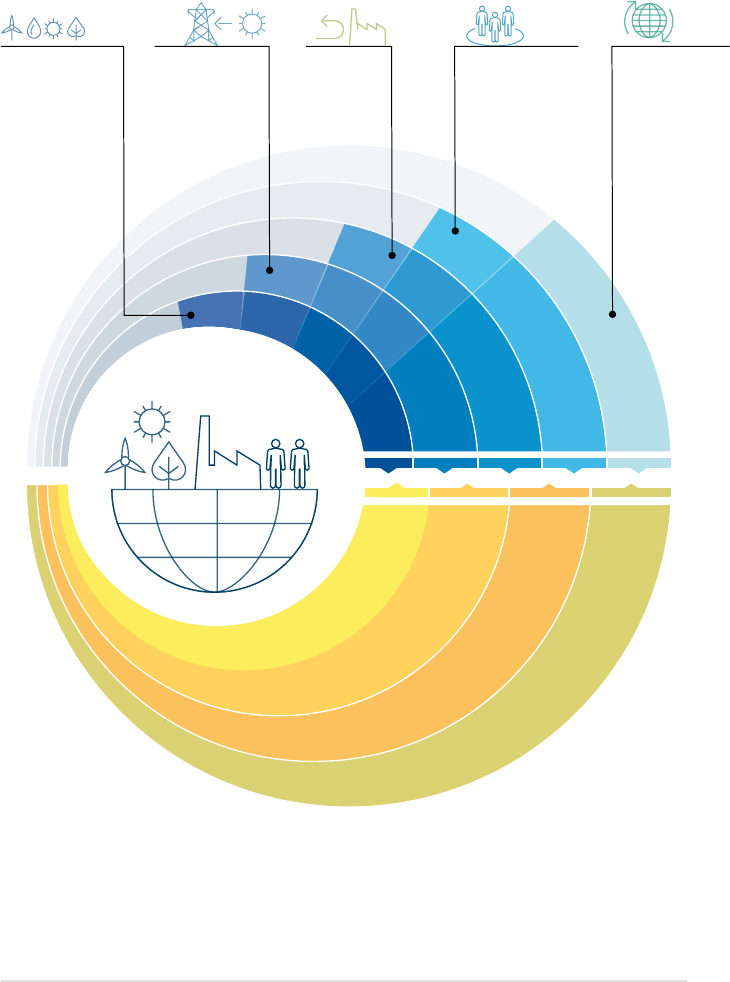
130
WORLD ENERGY
TRANSITIONS OUTLOOK
FIGURE 4.1 Enabling policy framework for a just and inclusive energy transition
DEPLOYMENT
POLICIES
INTEGRATING
POLICIES
ENABLING
POLICIES
STRUCTURAL
CHANGE
AND JUST
TRANSITION
POLICIES
HOLISTIC
GLOBAL
POLICY
FRAMEWORK
ECONOMY
ENERGY
SOCIETY
PLANET

131
CHAPTER 4
DEPLOYMENT
POLICIES
INTEGRATING
POLICIES
ENABLING
POLICIES
STRUCTURAL
CHANGE
AND JUST
TRANSITION
POLICIES
HOLISTIC
GLOBAL
POLICY
FRAMEWORK
ECONOMY
ENERGY
SOCIETY
PLANET
DEPLOYMENT
POLICIES
INTEGRATING
POLICIES
ENABLING
POLICIES
STRUCTURAL
CHANGE
AND JUST
TRANSITION
POLICIES
HOLISTIC
GLOBAL
POLICY
FRAMEWORK
ECONOMY
ENERGY
SOCIETY
PLANET
DEPLOYMENT POLICIES
For example:
Renewable energy
targets
Regulatory and pricing
policies (e.g. feed-in
tariffs and auctions)
Mandates and planned
replacement
Tradable certificates
Fiscal and financial
incentives
STRUCTURAL CHANGE
AND JUST AND
INCLUSIVE TRANSITION
POLICIES
For example:
Measures to adapt
socio-economic structure
to the energy transition
Labour market policies
and social protection (e.g
training and retraining)
Industrial policy
Trade policies
(e.g. trade agreements)
Environmental and
climate policies
INTEGRATING POLICIES
For example:
Measures to enhance
system flexibility
Policies for the
integration of off-grid
systems with main grid
Policies for sector
coupling, including
infrastructure
Alignment of energy
efficiency and renewable
energy policies
HOLISTIC GLOBAL
POLICY FRAMEWORK
For example:
Public investment for
structural transition
elements
International climate
finance based on equity
and fairness
Carbon pricing aligned
with climate goals
Progressive government
revenue recycling to
address inequalities
ENABLING POLICIES
For example:
Ambitious energy plans
Policies to level the
playing field (e.g. fossil
fuel reforms)
Policies to ensure the
reliability of technology
(e.g. quality and technical
standards, certificates)
RD&D and innovation
policies

132
WORLD ENERGY
TRANSITIONS OUTLOOK
The policies needed to advance the energy transition reinforce one another and have implications
for the energy system, economy, society and planet. An integrated policy approach is necessary
to account for feedback among policies and across systems to ensure a timely, just and inclusive
energy transition.
A holistic global policy framework would bring countries together to commit to a just transition that
leaves no one behind and strengthens the international flow of finance, capacity and technologies
in an equitable manner. Climate policies represent a crucial piece of such a framework. A portfolio of
relevant measures would include fiscal policies such as adequate carbon pricing covering emissions
across sectors and meeting public funding needs for the implementation of policies to foster
deployment and enabling conditions, and to address structural and just transition aspects including
industry creation, education and training, and social protection. The needed financial resources
will not always be available domestically; international collaboration and co-operation are needed
to channel them, particularly to least developed countries and small island developing states. The
holistic global policy framework is discussed in Section 4.4.
A broad set of policy measures is required
to facilitate the adoption of energy transition
solutions needed to align short-term actions
with longer-term climate and socio-economic
development objectives.

133
CROSS-CUTTING POLICIES
ENABLING THE ENERGY
TRANSITION
4 .1
WORLD ENERGY
TRANSITIONS OUTLOOK
A range of cross-cutting policies is necessary to provide enabling conditions for the accelerated
deployment of energy transition solutions in all technological avenues (summarised in Table 4.1).
Governments need to raise their energy transition ambitions while considering locally available
renewable energy resource potential and multiple socio-economic and climate objectives.
Ambitions should be accompanied by specific renewable energy targets and embedded within
long-term plans that include phasing out fossil fuel assets. Among other measures, a fiscal system
is needed that facilitates the adoption of energy transition solutions while disincentivising new
investments in fossil fuel technologies and supporting a phase-out aligned with the 1.5°C Pathway.
Policies and measures are also needed to facilitate access to finance, foster innovation and raise
awareness among consumers – and citizens in general – to support the uptake of transition-related
technologies.
Governments need to raise their energy
transition ambitions while considering
locally available renewable energy
resource potential and multiple socio-
economic and climate objectives.

134
WORLD ENERGY
TRANSITIONS OUTLOOK
TABLE 4.1 Overview of cross-cutting policies to enable the energy transition
OBJECTIVE EXAMPLES OF MEASURES COMMENTS
Raise ambition
in commitments
to the energy
transition
Net zero targets can be seen in
legislation in Denmark, France,
Hungary, New Zealand, Sweden
and the United Kingdom.
Targets should go beyond the power
sector to include the energy needed for
heating and cooling and transport, and
for specific solutions and technologies,
such as green hydrogen.
Phase out fossil
fuels
Many European countries
(e.g., Denmark, France, Finland,
Hungary, Italy, Portugal,
Slovenia, the United Kingdom)
have announced a plan to phase
out coal power plants by 2030.
A holistic policy framework is
necessary to address the issue of fossil
fuel as a stranded asset and its socio-
economic implications.
Eliminate
distortions and
incentivise energy
transition solutions
Sweden’s taxation of fossil fuels. Policies (that may include fiscal
policies such as carbon pricing)
should be implemented with careful
consideration of broader social and
equity issues, particularly for low-
income populations.
Facilitate access to
finance
The Brazilian Development
Bank offers a loan supporting
biomass co-generation
projects.
Public financing can facilitate the
adoption of energy transition solutions.
Interventions range from the public
ownership of transition-related
assets, to unlocking private sector
participation and supporting just
transition measures.
Foster innovation Direct funding to research
and development in energy
transition technologies (e.g.,
fast-charging infrastructure,
green hydrogen linked with
industrial use).
Enabling policies can further
innovation across various dimensions
of technology, infrastructure, financing,
business models, market design and
regulation, as well as governance and
institutional frameworks.
Raise awareness
among consumers
and citizens in
general
The campaign HeatSmart
Northampton raises public
awareness and promotes the
installation of heat pumps
in a town in the state of
Massachusetts (United States).
Consumers and citizens play a big role
in the energy transition: they influence
governments and corporations to
move faster in their decarbonisation
plans and make proactive choices
regarding their energy consumption
and sources.
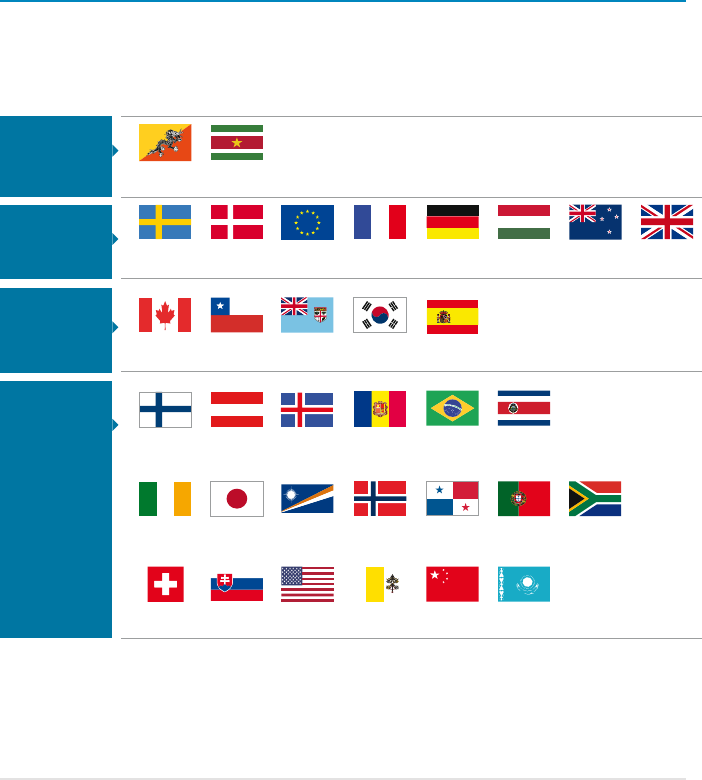
135
CHAPTER 4
TABLE 4.2 Jurisdictions with net zero targets as of the first quarter of 2021
Achieved
In law
Proposed
legislation
In policy
document
Juristiction (by target year)Juristiction (by target year)Juristiction (by target year)
Bhutan Suriname
Sweden
2045
Denmark
2050
France
2050
Hungary
2050
New Zealand
2050
United Kingdom
2050
Canada
2050
Chile
2050
European Union
2050
Fiji
2050
Republic of Korea
2050
Spain
2050
Austria
2040
Iceland
2040
Germany
2045
Brazil
2050
Costa Rica
2050
Andorra
2050
Finland
2035
Ireland
2050
Japan
2050
Marshall Islands
2050
Norway
2050
Panama
2050
Portugal
2050
Switzerland
2050
Slovenia
2050
United States
2050
Vatican City
2050
Kazakhstan
2060
China
2060
South Africa
2050
4.1.1 Raise the ambition of commitments
to the energy transition
The past two years have been significant for the energy transition with a number of countries raising
net zero commitments. More than 12 countries and the European Union passed or proposed laws
around net zero emissions and have earmarked significant financial resources for green recovery
plans with renewables as a key pillar, and around 20 countries have placed net zero targets in policy
documents (Table 4.2). In April 2021, the United States hosted a Leaders’ Summit on Climate ahead
of the 26
th
UN Climate Change Conference of the Parties (COP26) and vowed to reduce emissions
by at least 50% by 2030, more than doubling its prior commitment under the Paris Agreement
(The White House, 2021). Brazil, Canada and Japan followed with their own commitments.
Source: ECIU, 2021.
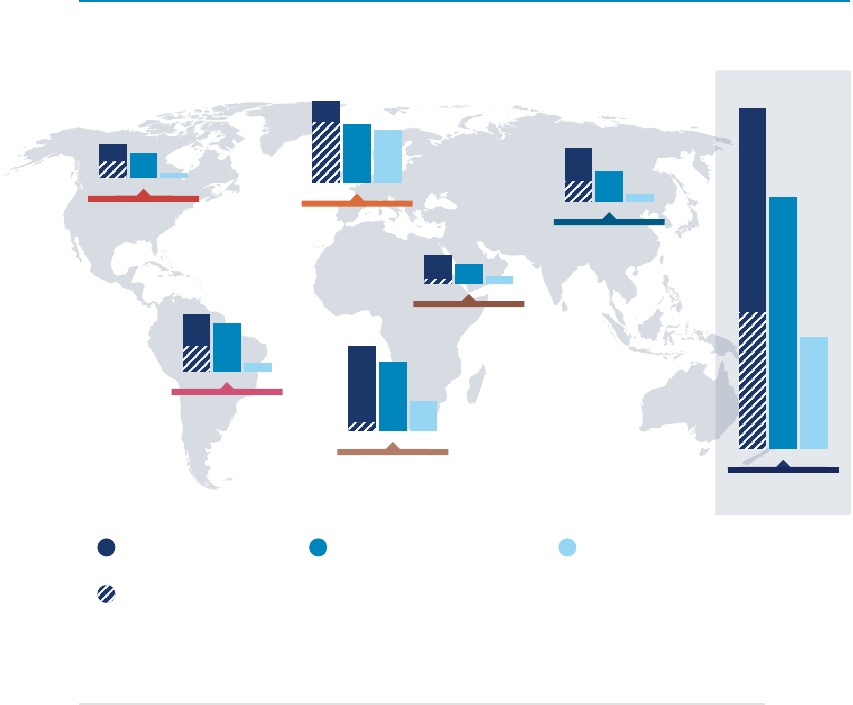
136
WORLD ENERGY
TRANSITIONS OUTLOOK
FIGURE 4.2 Renewable energy components of NDCs, as of the first quarter of 2021
3030
1717
44
Asia
4646
3333
3030
Europe
3232
2727
55
Latin
America and
Caribbean
1616
1111
44
Middle East
and North
Africa
1919
1414
33
North
America and
Oceania
4848
3939
1717
Sub-Saharan
Africa
191191
141141
7575
6363
World
Number of parties
having submitted NDCs
Number of parties with
quantified renewable power
targets in their NDCs
Number of parties with quantified
renewable energy targets for direct
heat and/or transport in their NDCs
Number of parties having
submitted revised NDCs
3434
99
1111
22
1414
55
Countries around the world need to be increasingly ambitious in their pledges to scale up
renewables and cut energy-related carbon dioxide (CO
2
) emissions while also reaping significant
socio-economic benefits. But net zero and ambitious targets are not immediately feasible for all
economies. Nationally Determined Contributions (NDCs) are being revised more than five years after
the signing of the Paris Agreement. As of the first quarter of 2021, 75 parties to the Paris Agreement
had already submitted their revised NDCs. Of the total 191 parties having submitted NDCs, 141 (or 74%
of the total) included quantified renewable energy targets for the power sector, while only 63 parties
(33%) included targets for direct heat and transport, thus leaving the potential of renewables in
end uses largely untapped (Figure 4.2). The NDCs, while representing vital national focus on the
energy transition and climate action, are collectively insufficient to achieve the 1.5°C Pathway.
Renewable energy targets are key drivers of policies, investment and development, as they provide clear
indications of the intended deployment and timeline envisioned, which are important signals to investors.
As of October 2020, 160 countries had national-level targets for renewables in the power sector,
compared to 49 countries with targets for heating and cooling and 46 for transport (REN 21, 2020).
Source: Updated from IRENA (2020l).
Note: NDCs = Nationally Determined Contributions.
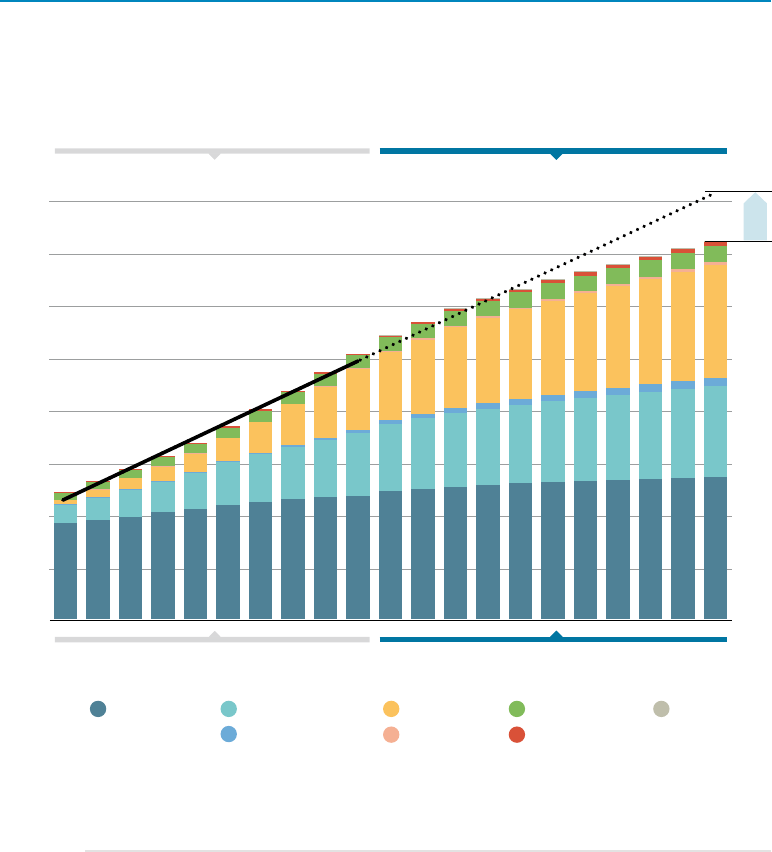
137
CHAPTER 4
FIGURE 4.3 Global installed capacity of renewable power: historical trends and
future projections based on targets
4 0914 091
2 537 2 537
Hydropower Onshore wind
Oshore wind
Solar PV
CSP
Bioenergy
Geothermal
Other
2010-2019
Historical
2020-2030
Projected based on targets
Historical Projected based on targets
Deployment trend
over 2010-2019
0
500
1 000
1 500
2 000
2 500
3 000
3 500
4 000
GW
3 608 3 608
+13%
Over 60% of renewable energy targets for the power sector were already achieved at the end of
2019, leaving about 1 TW of renewables yet to be installed globally. As shown in Figure 4.3, existing
renewable power targets fall short of actual deployment trends observed over the past decade.
If renewable power installed capacity were to grow at the same pace as during 2010–2019, global
renewable power capacity would reach 4 091 GW in 2030 – 13% higher than the level expected
through target implementation (IRENA, forthcoming-a). But under IRENA’s 1.5°C Pathway, the
installed capacity of renewable power would need to reach 10 771 GW by 2030 (see Chapter 2) –
more than double the amount installed to meet the targets noted.
Source: IRENA, forthcoming-a.
Note: CSP = concentrating solar power; GW = gigawatt; PV = photovoltaic.

138
WORLD ENERGY
TRANSITIONS OUTLOOK
FIGURE 4.4 Solutions and enabling infrastructure for the energy transition in
heating and cooling
Renewables-
based
electrification
Renewables-
based
electrification
Renewable
gases
Renewable
gases
Sustainable
biomass
Sustainable
biomass
Solar thermal
heat
Solar thermal
heat
Geothermal
heat
Geothermal
heat
District heating
and cooling
District heating
and cooling
As noted earlier, national renewable energy targets have so far focused mainly on the power sector.
Policy makers need to define more holistic targets covering all end-use sectors, including heating
and cooling and transport, as well as specific solutions such as green hydrogen (Section 4.2.4). These
targets form the basis to establish long-term integrated energy planning strategies discussed in the
following section.
4.1.2 Develop a long-term energy transition plan
Accelerating the energy transition and maximising its benefits require an integrated energy planning
approach that combines targets and commitments with holistic and long-term plans including the
deployment of energy transition technologies, the phasing out of fossil fuels and the thorough
consideration of their socio-economic impacts. An integrated long-term plan should be developed
in coordination between different ministries (e.g., energy and environment or climate change).
For heating and cooling, for example, cross-sectoral planning should integrate the transition with
plans for other sectors (e.g., power and industry). The energy plan must consider the different
transition pathways including electrification, the deployment of green gases, sustainable
biomass, solar thermal and geothermal heat, and district heating and cooling among key enabling
infrastructure (Figure 4.4). The plan must be based on specific needs, macroeconomic conditions,
availability of resources, the infrastructure already in place, and the level of development, accessibility
and cost of technologies. Developing and implementing an integrated long-term plan require
strong co-ordination and a robust institutional structure. This is especially the case when it comes
to electrification with renewables, as it calls for the synchronisation of the deployment of renewable
power plants with measures to deploy electricity-powered technologies in the transport and
heating sectors in a timely fashion (Section 4.2.3).

139
CHAPTER 4
A long-term, integrated energy plan is also necessary to co-ordinate the deployment of renewables-
based solutions with measures to raise energy efficiency and develop the needed infrastructure,
while minimising stranded assets. For example, district energy networks are long-term investments
and they are affected by changes in heating and cooling demand resulting from efficiency gains.
Therefore, to align the strategies of district heating infrastructure and buildings is a must (IRENA,
IEA and REN21, 2020). This was underlined by the European Union’s modification to the Energy
Performance of Buildings Directive, requiring synergies between renovation of buildings and
investments in district heating systems (European Commission, 2021b) (Box 4.1).
BOX 4.1 Integrating innovation in buildings with district energy networks in the
European Union
Buildings account for the largest share of energy consumption (40%) in the European Union (EU) and
contribute to over a third of greenhouse gas emissions. The majority of buildings are over 50 years old
and energy inefficient, and much of this stock will continue to exist in 2050 – the target year for the EU
to become climate neutral. While the renovation of buildings has been a priority of EU climate actions,
progress remains slow with only about 1% of the stock being renovated annually.
All EU member countries are required to publish a long-term building renovation strategy for 2050,
as part of the “renovation wave” initiative of the Green New Deal. The renovation strategy supports
greater energy efficiency and the integration of renewables in the building stock. The long-term nature
of the strategy provides signals regarding the potential for investments in district heating and cooling
networks, by outlining the expected demand in buildings after renovation.
Source: European Commission, 2020a, 2021b.
Based on the long-term energy plans, investments are needed to upgrade existing and develop new
infrastructure, often as a pre-requisite to attracting private investments in energy-transition-related
solutions. Those are discussed in this chapter, in sections dedicated to each of the technological
avenues of the energy transition. An integrated energy plan can help minimise stranded assets for
a given climate ambition by developing national strategies that leverage existing infrastructure.
Examples include utilising existing district heating and cooling networks to deploy renewables-based
solutions in cities, and repurposing parts of existing gas grids to transport green hydrogen. Synergies
with the oil and gas industry can be leveraged. The offshore wind energy sector, for instance, can
build on existing assets in the offshore oil and gas sector in different value chain segments, including
foundations, array cables, substation structures, steelwork and cables (IRENA, 2018a).

140
WORLD ENERGY
TRANSITIONS OUTLOOK
* This designation is without prejudice to positions on status and in line with the United Nations Security Council
Resolution 1244 (1999).
4.1.3 Phase out fossil fuels
Phasing out fossil fuels represents an important component of the energy transition as discussed in
Chapter 1. To reduce stranded assets, governments should halt the development of planned or new
fossil fuel infrastructure. This can also send positive signals to other countries with similar contexts.
The Government of Montenegro’s announcement that it would stop the development of the second
block of the coal power plant of Pljevlja, for example, drove the cancellation of a reconstruction plan
for a coal power plant in North Macedonia and a new project in Kosovo* (CAN, 2020).
Some assets will need to be phased out, including fossil fuel upstream supply infrastructure, power
plants, and fossil-based heating and cooling appliances or transport modes that need to be replaced.
Many European Union countries (including Denmark, France, Finland, Hungary, Italy, Portugal and
Slovenia) and the United Kingdom have announced a plan to phase out coal power plants by 2030;
Austria and Sweden successfully phased them out by 2020 (Beyond Coal, 2021). Some Chinese
cities including Suzhou city aim to replace all inefficient coal boilers with electric alternatives; and
European cities including Athens and Madrid have announced plans to phase out petrol and diesel
cars by 2025 (IRENA, 2021e, 2021f). As such plans are implemented, provisions should be made to
ensure a just and fair transition and specifically to protect workers and communities. A dialogue
involving all key stakeholders should be undertaken to decide how to address stranded assets.
A holistic policy framework is necessary to address the issue of fossil fuels as stranded assets and
its socio-economic implications, requiring a series of measures further discussed in Sections 4.3 and
4.4. One among them is the compensation approach followed as countries seek to phase out fossil
fuel assets earlier than foreseen, and to ascertain support needed for operators and communities,
such as in Germany (Box 4.2).
Phasing out fossil fuels represents
an important component of the
energy transition.

141
CHAPTER 4
FIGURE 4.5 Phase-out of coal in Germany by 2038
0
10
20
30
40
50
zerozero
2020
Anthracite
(hard coal)
Capacity
(GW)
Lignite
(brown coal)
2022 2030 2038
Source: Bundesnetzagentur, 2021.
Note: GW = gigawatt.
BOX 4.2 Germany’s tender for coal being phased out by 2038 as part of its green
recovery plan
In 2020, the Coal Phase-Out Act (the Act to Reduce and End Coal-Powered Energy and Amend Other
Laws) entered into force as part of Germany’s green recovery plan. The act aims to gradually reduce and
eventually phase out the use of coal-based power generation by 2038. It stipulates that no new coal-based
plants may begin operations after August 2020, apart from those that already hold licenses. The phase-out
is expected to be carried out in three stages (Figure 4.5).
The act offers financial compensation to operators of coal-fired plants for early retirement. The reduction
of hard-coal power is to be achieved first by voluntary reductions offered by the plant operators and,
after 2027, by legally mandating the reduction. To keep compensation to the minimum needed, the act
set up competitive tenders where operators may offer capacity volume reductions and receive financial
compensation in return. The plan was to auction 4 GW in 2020 and 1.5 GW in 2021 with non-awarded
capacities in 2020 added to auctions in 2021. The auction is also designed to avoid the closure of power
plants that are essential for network stability.

142
WORLD ENERGY
TRANSITIONS OUTLOOK
The first auction was held in September 2020 with a pre-determined cap on the compensation
set at EUR165 000/MW (about USD194 000/MW) net nominal capacity. The available financial
compensation decreases each year to offer an incentive to decommission a plant earlier. After
2027, no financial compensation will be paid to plant operators that will all be forced to shut
down. The German Federal Network Agency determines a maximum tender volume for each
auction and uses a procedure set out in the act in case there are too many bids. Table 4.3
presents details of the first two rounds.
In addition, the Structural Support for Coal Regions Act provides lignite-coal regions with
financial aid of up to EUR 14 billion (about USD 11.86 billion) and hard-coal regions up to
EUR 1.09 billion (about USD 923 million) to deal with structural changes and to secure
employment. The act also provides up to EUR26billion (about USD22.02billion) for highway
and rail infrastructure improvement or expansion and creation of up to 5 000 additional jobs
in federal agencies in the coal regions.
Sources: Gesley, 2020; European Commission, 2020b.
TABLE 4.3 Results of auctions for coal plant phase-out in Germany
Sources: Shumkov, 2020; Petrova, 2021.
Note: MW = megawatt.
ROUND CAPACITY
AUCTIONED
CAP ON
PRICE
CAPACITY
AWARDED
WINNING BIDS REQUIREMENTS
2020 4 000 MW 165 000
EUR/MW
4 788 MW 11 bids accepted (the
largest for 875MW)
with a total of
EUR317million
(USD385.6million).
Volume-weighted
average award of
EUR66 259/MW
with bids ranging
from 6 047 to
150 000EUR/MW
Plants retire from
the wholesale
market beginning
2021 and the units
remain available
only to transmission
system operators
for balancing until
June-end.
Operators cease
coal-based power
generation from July.
2021
1 500 MW 155 000
EUR/MW
1 514 MW Three bids for
757MW, 690MW
and 67MW.
Bids ranged from
0 to 59 000EUR/
MW
Operators to
cease coal-based
generation by
December 2021.
Auction open to
installations in the
south of Germany
(not eligible in first
round).

143
CHAPTER 4
4.1. 4 Eliminate distortions and incentivise
energy transition solutions
Distortions that favour the uptake of fossil fuels by market structures need to be eliminated and a
fiscal system established that actively supports the adoption of energy transition solutions, while
disincentivising new and existing traditional solutions not aligned with climate ambitions. This
involves phasing out existing fossil fuel subsidies, and levying the environmental, health and social
negative externalities of fossil fuels to remove market distortions as well as existing support for the
fossil fuel industry (see Chapter 5).
Fiscal policies, including carbon pricing policies, should be implemented and adjusted to enhance
the competitiveness of renewables-based solutions against fossil fuels (discussed further in
Section 5.1). In Sweden, the taxation of fossil fuels has been a major driver for renewable heat,
whereas low natural gas prices (reflecting subsidies to fossil fuel industries and unlevied negative
externalities) hobble the competitiveness of renewable heat options in the United Kingdom and
the United States (IEA, 2018).
However, as with the phasing out of fossil fuel subsidies, such interventions should be preceded by
a careful assessment of their social and equity dimensions, particularly their effects on low-income
populations, to ensure that they do not worsen energy poverty (Box 4.3) or have other socially
regressive effects. Allaying these concerns by exempting certain household groups or energy-
intensive industries can compromise the viability of schemes. Instead, it may be more in line with
long-term de-carbonisation objectives to provide dedicated support for low-income consumers
or other highly affected parties to help them shift towards low-carbon solutions (see Section 4.5).
As with the phasing out of fossil
fuel subsidies, carbon pricing
policies should be preceded by
a careful assessment of their
social and equity dimensions.

144
WORLD ENERGY
TRANSITIONS OUTLOOK
BOX 4.3 Addressing energy poverty
The term “energy poverty” covers a broad spectrum of negative effects on well-being, due to
affordability challenges, or a lack of or insufficient access to modern energy solutions. In a
situation of energy poverty, a household is physically and/or financially unable to secure a level
and quality of domestic energy services sufficient for its social and material needs. This situation
is often accompanied by the use of dirty fuels (e.g., kerosene, traditional fuelwood), excessive time
spent collecting them and low consumption of energy.
A definition of energy poverty accepted worldwide is still missing. Without a unified definition, the
number of households living in this situation cannot be properly quantified. Yet, statistical data that
describe some of the effects of energy poverty can help clarify the issue.
Energy poverty exists in every part of the world. In the Western Balkans, for instance, one out of
three households is unable to keep adequately warm. Households with an income below 60% of
the national median are particularly at risk (Figure 4.6). As a comparison, fewer than one out of
ten households in the European Union faces the same challenge (but up to two out of ten among
poor households).
Estimates indicate that 3 million households (out of 5 million) in the Western Balkans use outdated
woodburning devices, a main indicator of energy poverty. The high dependence on biomass and
poor regulatory mechanisms also endangers local forest resources, which are subject to illegal
logging and black-market sales. The use of traditional biomass substantially increases indoor air
pollution levels, which in Southeast Europe caused around 23 000 preventable deaths in 2016.
Governments in the region have taken steps to address energy vulnerability. They have adopted
definitions of “vulnerable customers”, and many provide some form of assistance to this
population, mainly in the forms of cross-subsidisation, discounts on energy bills and protection
from disconnection.
Source: Energy Poverty Observatory, 2020; IRENA, 2019e.

145
CHAPTER 4
FIGURE 4.6 Share of households unable to keep home adequately warm,
by income level, in selected countries, 2019 (%)
Source: Energy Poverty Observatory, 2020.
* This designation is without prejudice to positions on status and in line with the United Nations Security Council
Resolution 1244 (1999). Data for Kosovo are for 2018.
Below 60% of median equivalised income Total
Above 60% of median equivalised income
0
10
20
30
40
50
60
Share of population (%)
Albania Kosovo* Bulgaria North
Macedonia
Turkey Greece Monte-
negro
Romania Serbia Croatia EU-27 Slovenia
Energy poverty exists in
every part of the world.

146
WORLD ENERGY
TRANSITIONS OUTLOOK
4.1.5 Facilitate access to finance
Public financing will play a crucial role in facilitating the adoption of energy transition technologies
and solutions. Depending on local contexts, its role could vary from public ownership of transition-
related assets, to unlocking private sector investments in energy transition technologies. This is
especially needed in contexts with high risks where attracting private investments is challenging.
Relevant risks include country risks (related to politics, policy and currency), contractual risks
(liquidity, counterparty and refinancing risks) and technical risks. As discussed in Chapter 3, risk
mitigation instruments can be an effective tool to improve the risk-return profile of projects and
increase their attractiveness among private investors.
Public funding is also needed to reduce technical risks associated with specific technologies,
project performance, resources and infrastructure. To reduce the risk of geothermal exploration, for
example, government support measures include collecting and sharing geothermal data on public
platforms, providing insurance against exploration risks and offering loan guarantees and grants to
reduce the risk represented by the sunk cost of well drilling. The Government of the Netherlands, for
instance, provides funds for geothermal heat projects set out by the Geothermal Heat Action Plan.
Government funds are used to support risk insurance for the drilling of geothermal heat, to invest
in software (ThermalGIS) for geothermal exploration, as well as grants and other financial schemes
(Government of the Netherlands, 2021).
Bioenergy projects could face additional difficulties securing financing due to supply chain
risks (e.g., unstable feedstock supply, potential negative impacts on forestry or food prices).
Specific public funds are needed to facilitate investment from commercial entities. For example,
the Brazilian Development Bank provides loan support for biomass cogeneration projects, also
allowing commercial banks and capital markets to step in (IRENA, forthcoming-b).
In the access context, significant investments are needed mainly to accelerate the adoption of
decentralised renewable energy solutions to meet electricity and clean cooking needs. Tailored
financing instruments are required to meet end-user and enterprise needs, along with investments
(primarily public) in an enabling ecosystem featuring appropriate policies and regulations, capacity
building and market linkages. IRENA analysis finds that investments in the off-grid sector, although
growing, are heavily concentrated in certain regions, countries and technologies (IRENA and
CPI, 2020). Greater public and private financing needs to be mobilised and made more equitably
accessible to end-users and enterprises through local financing institutions.
Greater public and private financing
needs to be mobilised and made more
equitably accessible to end-users
and enterprises.

147
CHAPTER 4
4.1.6 Foster innovation
As indicated in Chapter 2, systemic innovation will play a central role to drive down costs and ramp
up the pace of the energy transition. A number of enabling policies can strengthen the innovation
process across its various dimensions of technology, infrastructure, financing, business models,
market design and regulation, as well as governance and institutional frameworks. The scope of
innovation extends far beyond technology supply.
Research, development and demonstration policies relate to direct funding of research and
development across a wide range of energy transition technologies (e.g., fast-charging infrastructure,
green hydrogen linkages with industrial use) that are at different stages of market maturity, as well as
support of demonstrations and piloting to create commercial-scale solutions.
A deployment-oriented innovation approach is needed for the success of the energy transition,
particularly as the pathway from invention to mainstream technology may take long. The Innovation
Toolbox (www.irena.org/innovation/Toolbox) developed by IRENA shows how 30 concrete
innovations in technology, market design, business models and system operation can be used to
transform country power systems by increasing flexibility. Power systems’ flexibility is a priority
for this decade, as an enabler of large shares of solar and wind. In terms of enabling technologies,
battery storage is at the centre of present energy transition efforts.
Policies can also help to deploy enabling infrastructure (e.g., charging infrastructure for electric
vehicles) faster. This highlights another priority for this decade – streamlining infrastructure
planning and permitting. New business models come into play, including aggregators and peer-
to-peer trading platforms supported by digital technologies that enable small players to reap the
full benefits of their rooftop solar systems, while system operators can benefit from the services
of distributed energy resources (IRENA, 2020k). Such new business models are now widely
deployed. In some jurisdictions, laws and regulatory regimes need to be adjusted to allow such
innovations to be scaled.
Innovation in market design has proven critical to accelerate the transition (IRENA, 2017c). New
technologies come with new types of services that can be provided to energy systems, but those
services need to be properly monetised via adjustments to market design (e.g., greater time or
geographic resolution of energy prices).
For sectors that cannot be directly electrified, green hydrogen can play a key role, if electrolysers can
be operated flexibly and their cost falls enough to warrant flexible operation. This is an example of an
emerging technology option that can help to revolutionise the way we produce and consume energy.
Meanwhile, innovations are required across the full production, shipment and deployment chain.
Finally, policies can facilitate innovation through the deployment of new standards and certification
processes, as well as through international collaboration by promoting sectoral agreements that
accelerate deployment of new technologies.

148
WORLD ENERGY
TRANSITIONS OUTLOOK
4.1.7 Raise awareness among consumers
and citizens
Consumers and citizens play a big role in the energy transition. On one hand, they can influence
governments and corporations to move faster in their decarbonisation plans. For example, customer,
shareholder and staff demand has been identified as one of the main drivers for corporate sourcing
of renewable heat (IRENA Coalition for Action, 2020a). On the other hand, citizens make proactive
choices regarding their energy consumption and sources.
Sharing information and raising awareness through public campaigns are vital for citizens to adopt
clean solutions and behavioural changes in line with reducing energy consumption (Section 4.2.2).
In heating and cooling, for example, government actions – at the national and city levels – to raise
awareness regarding the potential and benefits of renewable solutions are essential to stimulate
interest and strengthen confidence among potential consumers and relevant actors. South Africa
launched the Solar Water Heater Campaign to increase public awareness while similar policies helped
Barcelona (Spain), Rizhao (China) and Cape Town (South Africa), among other cities, to promote
solar thermal solutions (IRENA, IEA and REN21, 2020).
Active engagement of consumers and citizens is important to integrate the complex dynamics
of social systems within the energy transition. Holistic policies that address social feedback and
concerns – for instance, those arising from the implementation of regressive policies (discussed
further in Section 4.4) – are better perceived by society at large and contribute to improved energy
transition outcomes for the society, economy and planet.
Active engagement of consumers and
citizens is important to integrate the
complex dynamics of social systems
within the energy transition.

149
While cross-cutting policies provide an enabling environment for the energy transition to move
forward seamlessly, specific policies and measures are needed as well to increase the deployment
of renewables, both in power and direct uses; promote energy conservation and efficiency; enable
the electrification of end uses and support the development of green hydrogen and sustainable bio-
energy. These are discussed further in this section and summarised in Table 4.4.
POLICIES TO SUPPORT THE
TECHNOLOGICAL AVENUES
OF THE ENERGY TRANSITION
4.2
WORLD ENERGY
TRANSITIONS OUTLOOK
Specific policies and measures are needed
to increase the deployment of renewables,
promote energy conservation and efficiency,
enable the electrification of end uses, and
support the development of green hydrogen
and the sustainable use of bioenergy.

150
WORLD ENERGY
TRANSITIONS OUTLOOK
TABLE 4.4 Overview of policies to support energy transition solutions
TECHNO-
LOGICAL
AVENUE
OBJECTIVE EXAMPLES OF MEASURES COMMENTS
Renewables
(power and
direct uses)
Deploy
renewable
energy in end
uses
Subsidies for solar water
heaters in China, Tunisia and
Lebanon.
These policies include regulatory
measures that create a market, as well
as fiscal and financial incentives to make
them more affordable and increase
their cost competitiveness compared to
fossil-fuel-based solutions.
Deploy
renewable
energy in the
power sector
Dedicated regulations for
mini-grids in Nigeria, Kenya,
Uganda, Zambia, Sierra Leone
and Senegal.
The choice of instrument and its design
should consider the nature of the solution
(e.g., utility scale, distributed, off-grid),
the sector’s level of development, the
power system’s organisational structure
and broader policy objectives.
Energy
conservation
and efficiency
Increase energy
conservation
and efficiency
in heating and
cooling
In the United States, China,
Canada and Japan, almost all
space cooling activities need
to meet mandatory Minimum
Energy Performance Standards.
Energy efficiency policies such as strict
building codes, support for building
retrofits and appliance standards are
critical for the energy transition in
buildings and industrial processes.
Increase
energy
conservation
in transport
Vancouver (Canada), launched
a city campaign to encourage
cycling and reduce private car
use.
Decarbonising the transport sector,
among other measures, requires a shift
from energy-intensive modes to low-
carbon modes.
Electrification
of end uses
Electrify
heating and
cooling
Denmark reduced the tax paid
on electricity-based heat as
part of the country’s plan to
be fossil fuel free by 2050.
Targets for renewable power should
consider the rising demand from the
electrification of end uses, in line with
long-term decarbonisation objectives.
Moreover, policies and power system
design are needed to support
electrification in achieving its potential
for providing system flexibility.
Electrify
transport
Costa Rica set a target for
100% of vehicle sales to be zero
emission by 2050, and Japan
aims to have all cars be electric
by 2050.
Green
hydrogen
Support the
development
of green
hydrogen
By 2020, 12 countries and
the European Union had
implemented green hydrogen
policies.
An enabling policy framework should
consider four key pillars: a national
green hydrogen strategy, priority
setting, guarantees of origin and
enabling policies.
Sustainable
bioenergy
Ensure the
sustainable use
of bioenergy
The EU’s revised Renewable
Energy Directive (EU REDII)
enhanced the sustainability
criteria for bioenergy
Renewable energy is not exempt from
sustainability concerns. Some of these
concerns include greenhouse gas
emissions related to land-use change,
and impacts on air and water quality
and biodiversity.

151
CHAPTER 4
Accelerating the pace and depth of the
energy transition will require a continuing
focus on the power sector, along with
much greater policy efforts in the heating
and cooling, and transport sectors.
4.2.1 Deploy renewables (for power and direct uses)
Policy options supporting the deployment of renewable energy technologies and solutions vary
according to the level of development of the sector. Instruments to deploy renewables have pre-
dominantly focused on the power sector since the early 2000s. With evolving market conditions
and the changing maturity of technologies and markets, the instruments have adapted over time.
For instance, the developments made to date have enabled many countries to transition from
administratively set to competitively set pricing mechanisms for renewable power. As the share of
renewable electricity has grown, integration, flexibility and power market design aspects have also
come to the fore in policy making.
Instruments to support the direct use of renewables in heating and cooling and transport have so
far not received the same level of policy attention, as is evident in target setting and deployment
trends. Accelerating the pace and depth of the energy transition will require a continuing focus on
the power sector, along with much greater policy efforts in the heating and cooling, and transport
sectors. This section discusses policies to accelerate renewables’ adoption across end-use sectors.
For both power and direct uses, deploying renewables at the scale needed for the 1.5°C Pathway
will require policies to integrate impacts across society and planet, and minimise any potential
negative impacts. This issue is further discussed in Section 4.2.5 for bioenergy and Section 4.3.4 for
solar photovoltaic (PV) and other transition technologies.

152
Deploy renewable energy in end uses
Policies supporting the deployment of renewable energy for heating and cooling and transport
include regulatory measures that create a market for these technologies, as well as fiscal and
financial incentives, such as subsidies, grants and tax credits, to facilitate adoption and make them
more equitably accessible for all types of users.
Measures to create a market for renewable energy solutions
Policy makers need to establish dedicated, clear and long-term frameworks for the development
of solutions such as solar water heaters and sustainable biofuels. Such frameworks can include
roadmaps, industrial strategies and specific targets. For example, India is targeting 20 million
square metres (m
2
) of solar thermal collectors by 2022. Targets can also be set at the regional level.
The Economic Community of West African States adopted the target to deploy solar thermal heating
for around 50% of all health centres and schools, 25% of hotels and 25% of the agri-food industry by
2030 (ECREEE, 2015). The EU’s revised Renewable Energy Directive to 2030 (RED II) aims for 14%
of renewables in final energy demand of transport, including 3.5% from advanced biofuels produced
from waste, residues and other cellulosic feedstocks (IRENA, forthcoming-b).
Targets for green gases are also emerging, especially with the increased interest in green hydrogen.
France set a target to make 10% of the gas consumed in the country renewable by 2030; Denmark
aims to make 100% of the gas injected into its grid renewable by 2035. Spain wants 25% of hydrogen
consumed to be green by 2030. Section 4.2.4 presents a dedicated analysis of policies for green
hydrogen.
Targets and roadmaps can be supported by mandates, such as for biofuel blending in Brazil, China,
the European Union and the United States; or requiring the installation of solar thermal systems in
new or existing buildings as in Kenya or Spain. Such mandates, like targets, can also be implemented
at the city level (see Box 4.4).
City-level policies play a key role in creating a market for district heating and cooling and green gas
services where guaranteed anchor loads are crucial for the development of the needed infrastructure.
Mandating connections to district heating and cooling networks or renewable gas grids (where
these exist) in new urban developments, public buildings and other opportune locations ensure a
stable demand for the network and reduce investment risk. Such mandates have been introduced in
Amsterdam (the Netherlands), Oslo (Norway), Belgrade (Serbia) and Abu Dhabi and Dubai (United
Arab Emirates).
WORLD ENERGY
TRANSITIONS OUTLOOK
Policies to support renewables include
regulatory measures that create a market for
their adoption, and financial incentives to make
them more equitably accessible for all users.

153
CHAPTER 4
BOX 4.4 The role of cities in the energy transition in end uses
Cities play a major role in advancing the global energy transition. They account for around three quarters
of global primary energy and contribute to 70% of greenhouse gas emissions. At the same time, residents
of urban areas face higher rates of air pollution, mainly resulting from the use of fossil fuels – a key and
urgent driver of the energy transition.
The energy transition in cities is a story of urban transformation. Renewables have far-reaching effects
that go beyond the energy sector; they influence transportation, buildings, land use and a slew of other
vital city sectors. The energy transition presents an opportunity to reimagine cities in a number of ways
that benefit both people and the environment.
There are several roles cities can play in accelerating the deployment of renewables in end uses (Figure
4.7). Actions focus mainly on measures to promote the electrification of public transit and to curb the use
of internal combustion engine vehicles in urban areas, solar thermal ordinances, and renewable heating
and cooling mandates.
FIGURE 4.7 Roles of municipal governments in the energy transition
Sources: IRENA, 2021e, 2021f, 2021g, 2021h.
Conveners
and
facilitators
Awareness
builders
Financiers
Operators
Demand
aggregators
Target
setters and
planners
Regulators

154
WORLD ENERGY
TRANSITIONS OUTLOOK
Financial and fiscal incentives for the increased adoption of renewables in end uses
Financial incentives are still required to increase the adoption of renewables in many jurisdictions.
For heating and cooling, centralised solutions such as renewables-based district heating and cooling
and decentralised solutions such as domestic solar water heaters are not always cost competitive
compared to fossil fuels. Financial incentives can be provided as single-payment subsidies, grants or
loans. France’s Fonds Chaleur (Heat Fund), for example, offers subsidies for residential, commercial
and industrial renewable heat, including small-scale biomass applications (EurObserv’ER, 2020).
On a local level, Grenoble increased the Fonds Chaleur by adding local financial aid to small-scale
projects (REN21, 2019). China, Tunisia and Lebanon provide subsidies for solar water heaters (IRENA,
forthcoming-c). Germany’s Market Incentive Programme provides low-interest loans for large-scale
projects for district heating and industries and grants for small-scale renewable heat solutions
(IRENA, IEA and REN21, 2020).
Fiscal incentives such as tax credits, reductions and accelerated depreciation are commonly
used to support the energy transition in end uses. For heating and cooling, residents in the United
States could receive up to USD 500 in tax credits for the installation of geothermal heat pumps,
solar water heaters and other energy efficiency technologies (United States DoE, 2021). In transport,
such incentives are needed to promote biofuel production, distribution and consumption, as well as
research and development. In 2016, Argentina put in place tax exemptions for biodiesel production
and Sweden reintroduced tax cuts for ethanol and biodiesel (REN21, 2017).
Fiscal and financial incentives typically benefit individuals and corporations that have the financial
capacity to invest in such solutions (with some financial support), with the risk of leaving behind
low-income households locked in traditional and less efficient solutions (e.g., traditional biomass
for heating and cooking or inefficient combustion engine vehicles) thus contributing to further
energy poverty (Box 4.3). It is crucial that a holistic policy approach be adopted that considers and
addresses the aggregate socio-economic implications of various energy transition policy actions.
Provisions should be made to ensure that direct support reaches the lowest-income households. For
example, the Government of New Zealand provides grants to cover 90% of the cost of heat pumps or
efficient pellet/wood burners and insulation improvement for low-income homeowners through the
“Warmer Wiki Homes” programme (EECA, 2021).
Regarding access, fiscal and financial incentives have played a crucial role in facilitating the adoption
of renewables-based clean cooking solutions. Household biogas digestor programmes have
benefited from an appropriate mix of grants, increasingly deployed as results-based financing and
concessional loans. The Africa Biogas Partnership Programme, for instance, deployed over 70 000
biogas digestors across six countries in Sub-Saharan Africa through tailored financial incentives.
Similarly, Viet Nam’s national biogas digestor programme facilitated the deployment of over
250 000 domestic systems initially through household subsidies followed by a transition to results-
based financing for suppliers to support long-term market development (IRENA, 2018b). Other clean
cooking solutions, including improved cookstoves, benefit from tax exemptions and rebates thus
improving affordability for households (WHO, n.d.).

155
CHAPTER 4
2 IRENA (2021b) analysis presented in Renewable Power Generation Costs in 2020 finds that more than 60% of the
renewable capacity added in 2020 achieved lower power costs than the cheapest new fossil-fuel plants.
3 IRENA provides capacity building and policy advice to countries looking to design renewable energy auctions
through the Policy Framework for the Energy Transition (PFET).
Auction design should be tailored
to country-specific conditions and
broader policy objectives.
Deploy renewable energy in the power sector
Regulations and pricing instruments, together with fiscal and financial incentives, support the
deployment of renewables-based power, while at the same time support measures are required to
enable the electrification of end uses (see Section 4.2.3).
Regulatory and pricing instruments to support renewable power generation
Scaling up renewable energy adoption in the power sector requires regulatory and pricing
instruments, which adapt as renewables become cost competitive compared to fossil-fuel-based
electricity
2
in many more jurisdictions. The choice of instrument and its design should consider the
nature of the solution (e.g., utility scale, distributed, off-grid), the sector’s level of development and
the power system’s organisational structure and broader policy objectives. Each instrument should
be adopted with specific considerations.
Pricing policies such as feed-in tariffs and premiums can be administratively set, in which case they
need to continuously adapt to changing market conditions. Regular tariff-level adjustment, such as
through degression mechanisms, can help reflect the falling costs of a technology and its growing
deployment. Otherwise, prices can be set through competition.
Auctions are being increasingly adopted to keep pace with falling technology costs and to deliver
renewable electricity at competitive prices globally. By 2020, around 209 countries had adopted
auctions (REN21, 2020), and by 2018, the global average prices from solar PV and onshore
wind auctions had decreased by 77% and 36%, respectively, compared to 2010 (IRENA, 2019c).
In addition to procuring renewable electricity cost-effectively, auctions can be designed to
pursue broader policy objectives (Box 4.5). However, if not designed well, auctions can lead
to underbidding and projects not being completed on time or at all, and in some cases, they risk
favouring large players, and leaving the small and new players behind. To take advantage of the
strengths of auctions and minimise the risks associated with their weaknesses, auction design
should be tailored to country-specific conditions and broader objectives.
3

156
WORLD ENERGY
TRANSITIONS OUTLOOK
BOX 4.5 Auction design to support policy objectives beyond price
Auctions are flexible in their design and they can serve objectives beyond price as trade-offs
are studied and choices are made regarding the design elements (Figure 4.8). Auctions can be
designed to maximise socio-economic benefits, through the inclusion of small and new players,
job creation, regional development and community benefits, and the development of local
industries. South Africa was a pioneer in promoting economic development, especially in under-
served regions, through qualification requirements and winner selection criteria that consider
socio-economic development objectives.
Innovative auction design can also help address some of the challenges related to system
integration as shares of variable renewable energy generation increase. Mexico has considered
geographical allocation signals according to network integration feasibility and costs. India
and South Africa have sought to concentrate renewable project developments in specific
geographical areas, while hybrid technologies have been auctioned in Jordan (PV with storage),
India (wind and PV) and Morocco (concentrating solar power and PV).
FIGURE 4.8 Auction design for objectives beyond price discovery
Source: IRENA, 2019c.
Note: VRE = variable renewable energy.
Auction
demand
Auction
demand
Winner
selection
and contract
award process
Winner
selection
and contract
award process
Risk allocation
and re-
muneration
of sellers
Risk allocation
and re-
muneration
of sellers
Qualification
requirements
and docu-
mentation
Qualification
requirements
and docu-
mentation
Ensure winning projects are
completed on time and
delivered as per the bid
Ensure winning projects are
completed on time and
delivered as per the bid
As more projects get completed
and as the share of VRE increases,
support integration into the system
As more projects get completed
and as the share of VRE increases,
support integration into the system
Make sure the projects align with
the strategy to achieve a just and
inclusive energy transition
Make sure the projects align with
the strategy to achieve a just and
inclusive energy transition
Choice of the auctioned
volume, how it is divided
among dierent
technologies and project
sizes, and the auction
category
How bids are collected,
winners selected, and
contracts awarded
Allocation of risk among
stakeholders and specific
rules to ensure timely
implementation of
awarded projects
Minimum requirement
for participants in the
auction and necessary
documentation

157
CHAPTER 4
BOX 4.6 Policies for o-grid renewable energy solutions
Facilitating the deployment of off-grid renewable energy solutions, such as mini-grids and stand-alone
systems, to improve modern energy access requires dedicated policies and regulations.
In the specific case of stand-alone systems, policies can strongly influence the accessibility and
sustainability of such solutions for rural communities. Fiscal incentives, such as import duty and value-
added tax exemptions, are often introduced to incentivise market development; these directly improve
the affordability of stand-alone systems (IRENA, 2019f). Other supportive measures include levelling the
playing field, introducing quality standards and establishing dedicated consumer/enterprise financing
channels as part of a broader programme.
Scaling up renewable energy mini-grids requires dedicated regulations to address key areas such as
licensing and permitting requirements, tariff-setting frameworks and the implications of the arrival of
the main grid (IRENA, 2018c). A growing number of countries have introduced dedicated regulations
meant to scale up mini-grids, including Kenya, Nigeria, Senegal, Sierra Leone, Uganda, and Zambia
(UNIDO, 2020). Moving beyond addressing deployment and investment risks, policies also need to
address aspects related to capacity building and linkages between the sector and productive end uses
(see Section 4.3). All of these have a strong bearing on the scalability of off-grid solutions and the socio-
economic outcomes of deployment policies.
Competitive procurement is also adopted in corporate purchase programmes for renewable power,
enabling the buy-in of industry into renewables and accelerating investment in the energy transition.
Next to supporting an effective system for the issuing and tracking of energy attribute certificates,
energy market structures that allow for direct contracting between companies and renewable
energy suppliers support the further uptake of corporate sourcing of renewables.
For non-utility-scale projects, such as off-grid systems (Box 4.6) and grid-connected distributed
solutions, tailored regulatory and pricing instruments are needed. Distributed generation can be
supported through net metering and net billing. However, careful consideration is needed to avoid
jeopardising the system’s cost recovery and prevent cross-subsidisation among customers who
self-consume and those who do not. Indeed, these and other kinds of misalignments between the
expected and the actual outcome of power system policies and regulation are bound to increase
as the energy transition progresses, if no measures are taken to redesign the power system’s
organisational structure (see In focus section).

158
WORLD ENERGY
TRANSITIONS OUTLOOK
Fiscal and financial incentives for renewables-based solutions
Fiscal and financial incentives such as tax incentives, subsidies and grants complement regulatory
and pricing mechanisms and are needed to improve access to capital, lower financing costs and
make energy transition solutions more equitably accessible for all potential end users.
Reductions in sales, energy, value-added or other taxes on renewable electricity technologies
have been instrumental in kick-starting deployment in some countries in Southeast Asia and sub-
Saharan Africa (IRENA, IEA and REN21, 2018), mainly in the access context (Box 4.6). Production and
investment tax credits were instrumental in driving the development of solar and wind in the United
States. But since their initial inception, federal renewable tax credits have expired, been extended,
modified or renewed numerous times, creating uncertainty and multiple boom-and-bust cycles in
the industry. When implemented, tax credits should be long term to reduce uncertainty and attract
stable investments.
Capital subsidies for renewable electricity technologies are needed to reduce upfront capital costs
in early stages of deployment (or when targeting low-income end-users), after which they may be
replaced by other forms of incentives, including performance-based subsidies. In Nepal, capital
subsidies offered in 2013 covering 40% of project capital costs – along with a soft loan covering
another 40% – were phased out to give way for generation-based support in 2016, thereby increasing
the efficiency of systems (Climatescope, 2016). Grants are needed to fund research and development,
demonstration projects and feasibility studies to support the wider deployment of technologies and
the integration of variable renewable energy into the power system (see Section 4.1).
Fiscal and financial incentives complement
regulatory and pricing mechanisms.
They improve access to capital, lower
financing costs and make energy transition
solutions more equitably accessible for
all potential end users.

159
Public investments in enabling infrastructure and flexibility mechanisms
Depending on local contexts, public investments will play a fundamental role in upgrading and
expanding power grids and deploying power system flexibility to enable the integration of greater
shares of variable renewable energy (VRE).
4
In liberalised power market settings, private investments
particularly in flexibility options may still be attracted where appropriate organisational structures
exist within the power sector (see In focus section). The flexibility options include the deployment of
short- and long-term storage solutions (pumped hydropower, chemical batteries, hydrogen storage
and thermal storage), demand-side resources (such as industrial loads, or residential ones, managed
by aggregators), interconnections among different power pools and dispatchable renewable power
plants. Electrification will require strategies for the adoption of digital solutions to unlock the hidden
flexibility of electric loads, control the grids remotely and provide a more granular visibility over grid
status to power system participants. The new, flexible, decentralised power system will need an
organisational structure fit for the renewable energy era.
CHAPTER 4
4 For an exhaustive discussion of flexibility and the role of governments in creating the enabling frameworks for
power sector transformation, see IRENA (2019a) Innovation Landscape for a Renewable Powered Future: Solutions
to Integrate Variable Renewables, and the related innovation toolbox: www.irena.org/innovation/Toolbox.
The new, flexible, decentralised
power system will need an
organisational structure fit for the
renewable energy era.

160
WORLD ENERGY
TRANSITIONS OUTLOOK
In focus – the organisational structure of power systems for the
renewable energy era
A smooth energy transition comprises a technological transition, systemic changes and the
reorganisation of the power system. While the technological transition and systemic changes are
relatively well understood, the reorganisation of the power system lags behind (Figure 4.9), held
back by implicit assumptions that current organisational structures are appropriate for the renewable
energy era. Power system organisational structures were designed with the blueprint of fossil fuel
technologies. But the energy transition is transforming how electricity is produced, transmitted and
consumed. Consequently, the interactions between the different elements of the power system
(organisational structures, technologies and policies) and with the wider energy, socio-economic
and planetary systems are also changing.
FIGURE 4.9 Unequal advance in dierent transition layers, with
organisational structures lagging behind
• non-integrated
•
few stakeholders
• centralised
• unidirectional
• non-integrated
•
few stakeholders
• centralised
• unidirectional
Fossil fuelsFossil fuels
Organisational
structures of the
fossil fuel era
Organisational
structures of the
fossil fuel era
• integration
• participation
• bidirectional
• distributed
• democratised
• integration
• participation
• bidirectional
• distributed
• democratised
Earth and
Climate
Earth and
Climate
SocietySociety EconomyEconomy
Renewable energy
Energy efficiency
Energy flexibility
Renewable energy
Energy efficiency
Energy flexibility
Organisational
structures of
the renewable
energy era
Organisational
structures of
the renewable
energy era
Technological transition
Systemic changes
Organisational structures
Energy Transition
Wider systemic
links and feedbacks

161
CHAPTER 4
Both regulated and liberalised power systems face similar transition-related challenges. Merely
adjusting and fixing, bit by bit, the organisational structures of current power systems will not suffice,
and might in fact lead to additional misalignments producing unwanted effects able to derail the
energy transition (see Box 4.7).
This is not new. Energy systems are set up to provide energy services to society, but in delivering
those services, undesirable impacts on societies have been produced. Important misalignments
have, for instance, led to climate change and air pollution. This results from organisational structures
of the fossil fuel era not properly aligning the costs, price and value dimensions of energy. While
the energy transition itself is expected to mitigate both climate change and air pollution, as the
transition progresses, new fundamental misalignments arise (IRENA, 2020d), with potentially
severe consequences, if unaddressed.
BOX 4.7 Definitions of power system organisational structure and
misalignments
Power system organisational structure
refers to the structural elements of both
liberalised and centrally-planned power
systems that guide the interactions
between all agents in the procurement
and cost allocation of electricity and power
services. Structural elements encompass
regulations, markets and ownership
regimes.
Organisational structures should be
properly informed and guided by value,
costs and prices considerations. The term
“power market” is equivalent to “power
system organisational structure” for a
liberalised power system.
Misalignment: represents any conflicting
interaction of different components
within the power system (be they related
to technology, policies, organisational
structures, or others) with each other
or with elements in the wider energy,
socioeconomic and planetary systems,
producing undesired effects in the pursue
of a just and ambitious energy transition.
Energy systems are set up to provide
energy services to society, but in
delivering those services, undesirable
impacts on societies have been produced.

162
WORLD ENERGY
TRANSITIONS OUTLOOK
The misalignments
Understanding misalignments requires simultaneously considering the concepts of cost, price and
value, as well as their alignments or lack thereof. The ultimate role of the organisational structure
is setting up pricing mechanisms that allow cost recovery while reflecting the value of the power
system and fostering social value creation.
Pricing mechanisms deal with part of the challenge and are complemented by additional pricing
components such as subsidies and regulated payments. The cost and price dimensions often have
hidden components (such as externalities) that may result in misalignments (IRENA, 2020d). The value
dimension is the most often overlooked, while in fact it should be the powerhouse for socio-economic
activity. It comprises both power system value and additional social value. Even for renewable energy
technologies the contribution to the value dimension differs depending on how and where these
technologies are developed, deployed and operated. Price minimisation is often adopted as the main
or sole goal. However, minimising price is likely to produce significant misalignments.
The most known and discussed misalignment (see Figure 4.10) is that related to incumbent marginal
pricing and the deployment of renewable generation (also known as cannibalisation effects or the
missing money problem), although its wider implications for the energy transition are still not being
properly addressed. Indeed, today’s prevalent marginal-price-based organisational structures are
misaligned with the requirements of generation technologies with low operating expenditure and
limited dispatchability (and therefore low marginal costs), making them unfit for the renewable
energy era. The increasing penetration of renewable energy generation with low marginal costs,
under marginal pricing mechanisms, results in a compression of clearing prices. This has often been
celebrated as good news, with the promise of dramatically lowering electricity prices for everyone
as soon as support mechanisms for renewable energy are phased out. But this misses the point
about the dynamics at play, since retiring support mechanisms would collapse the system operating
under the current organisational structure. In life-cycle terms, the total costs of providing renewable
The ultimate role of the organisational
structure is setting up pricing mechanisms
that allow cost recovery while reflecting the
value of the power system and fostering
social value creation.
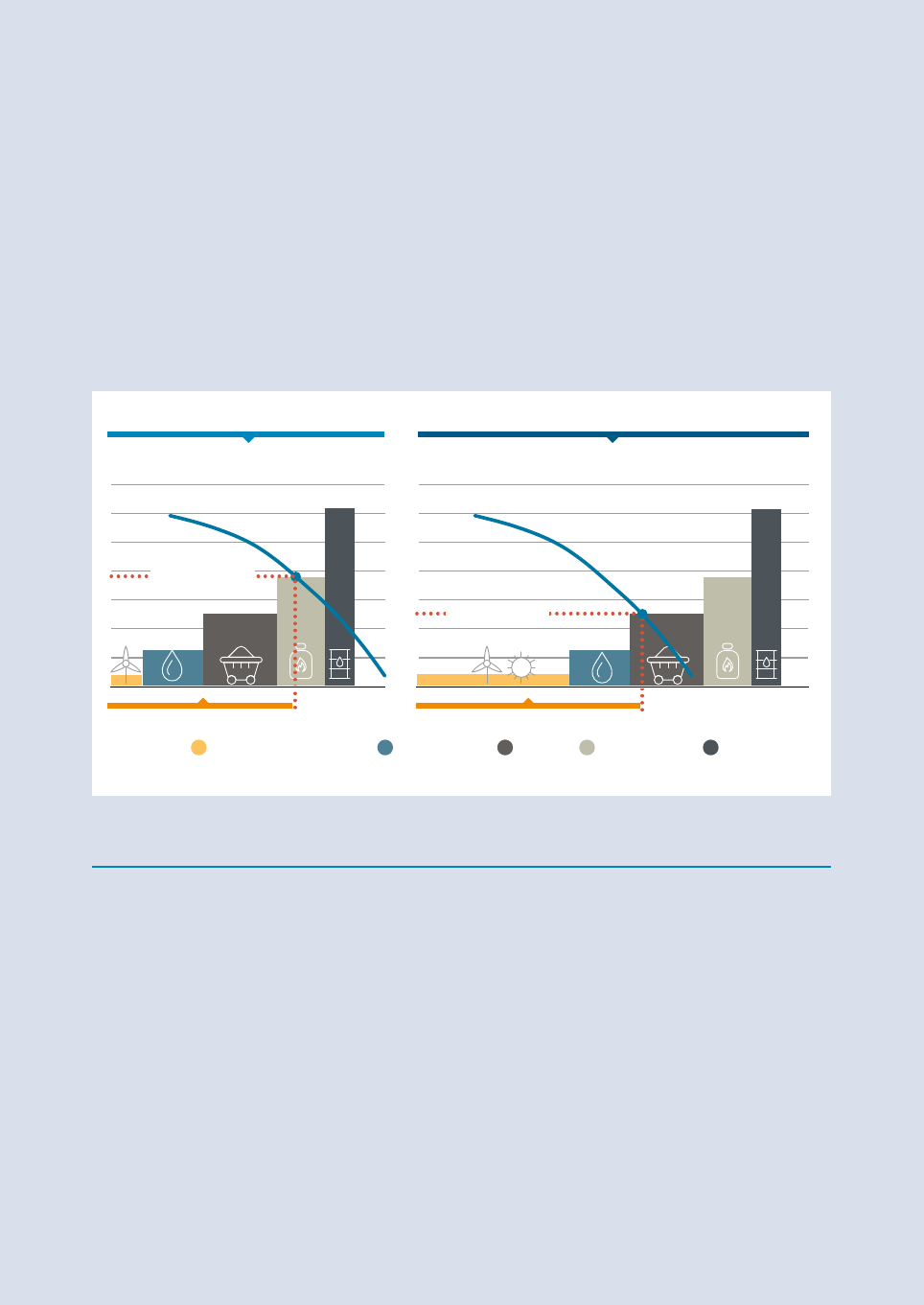
163
CHAPTER 4
FIGURE 4.10 Misalignments in marginal pricing allocation mechanisms:
Missing money and cannibalisation eects
electricity are lower than for fossil fuels, but in the absence of the right organisational structure these
potential benefits cannot be materialised. Given the high ratio of capital expenditure to operating
expenditure in the renewable energy generation cost structure, the almost unlimited compression
of clearing prices brought about by renewable energy deployment under marginal pricing
mechanisms is a recipe for failure. The more renewable energy enters the system, the lower its
remuneration becomes, reducing prospects for cost recovery and paralysing new investments, even
when renewable energy is completely cost competitive. Moreover, the deployment of renewable
energy under this paradigm is unlikely to properly address the value dimension, with the deployed
renewable energy capacity not contributing to social value creation as much as it could and not even
adequately contributing to power system value. Effects from this misalignment ripple out beyond
renewable energy generation to affect the needed flexibility mechanisms being procured under the
same marginal pricing mechanism. Hence, an organisational structure based on marginal pricing
cannot support a power system based on renewable energy generation.
Capacity
(MW)
Capacity
(MW)
Demand
Demand
Wholesale
price
Wholesale
price
Dispatched capacity
Dispatched capacity
Low renewable penetration
High renewable penetration
Marginal Cost
($/MWh)
Marginal Cost
($/MWh)
Low OPEX/Regulated
renewable power
Hydro Coal Natural Gas Oil
Capacity
(MW)
Capacity
(MW)
Demand
Demand
Dispatched capacity Dispatched capacity
Low renewable penetration High renewable penetration
Marginal Cost
($/MWh)
Marginal Cost
($/MWh)
Low OPEX/Regulated
renewable power
Hydro Coal Natural Gas Oil
Wholesale price
Wholesale price
Note: OPEX = operating expenditure; MW = megawatt; MWh = megawatt hour.

164
WORLD ENERGY
TRANSITIONS OUTLOOK
The way forward
The time has come for a new power system organisational structure that can support the energy
transition and the power systems of the future. Until now, efforts to encourage this evolution have
involved adjustments to current power system structures, which have contributed to some of
the misalignments. Without a more comprehensive rethinking of power system structures, those
misalignments will create barriers that could delay or even endanger the energy transition.
The good news is that instruments that have proved capable to support the energy transition, if
properly integrated, are already available: power purchase agreements have proven suitable for
supporting the deployment of capital-intensive renewable power plants, minimising the cost of
procuring renewable power by keeping finance costs low. Wholesale markets featuring temporal
and spatial granularity have proven able to elicit investments in flexible resources.
The “dual procurement” approach takes into consideration these experiences and integrates them
into a holistic vision of how a power system’s structure could be made fit for the transition. In the
dual procurement approach, the procurement of electricity is divided into two complementary
mechanisms, each one fit for the product it procures: long-term renewable energy (LT-RE)
procurement and short-term flexibility (ST-flex) procurement. Auctions or public ownership
become the backbone of the LT-RE, through long-term procurement mechanisms that address the
requirements of capital-intensive technologies. The ST-Flex addresses the procurement of flexible
resources needed for the reliable operation of a renewable-energy-based power system, and
is based on marginal prices, with a granular bidding format and without scarcity price caps that
could limit the economic feasibility of investments in flexibility. Essential characteristics of the two
procurement mechanisms are described in Table 4.5.
Without a rethinking of power
system structures, misalignments
will create barriers that could delay or
even endanger the energy transition.

165
CHAPTER 4
TABLE 4.5 Overview of policies to support energy transition solutions
Source: IRENA, forthcoming-d.
Note: CAPEX = capital expenditure; DER = distributed energy resources; DSM = demand-side management;
LT-Flex = long-term flexibility; LT-RE = long-term renewable energy; P2X = Power-to-X; RE = renewable energy;
ST-flex = short-term flexibility; V2G = vehicle to grid; VRE = variable renewable energy
LT-RE PROCUREMENT ST-FLEX PROCUREMENT
Based on periodic long-term product-based
allocation mechanisms (auctions, direct
public investment…)
Based on the short-term dimension of current
dispatch mechanisms (balancing markets,
regulated dispatch, …)
Procures renewable electricity (VRE and
dispatchable RE) and enables RE supply
adequacy with the adequate anticipation
Procures flexibility (DSM, DER, storage,
dispatchable RE, P2X, V2G, …) and enables
flexibility supply adequacy
Designed to match supply and demand as
much as possible on the long-term (capturing
temporal and locational value to the power
system)
Matching supply and demand on the short
and very short term (capturing temporal and
locational value to the power system)
Driven by long-term load forecast within
integrated energy planning
Driven by the short- and very short-term
deviations between the scheduled load/REs
production and real demand/production
Provides a safe investment environment that
minimises finance costs for CAPEX-intensive
technologies
Liberalised systems: allowing prices to vary
from very high to low and even negative.
Additional regulated payments if needed
(especially during the transition period:
LT-Flex)
Regulated systems: enabling framework
for deploying and operating the required
flexibility capacity
The dual procurement economic signals should reach the retail rates (or prices) of all users to
promote their participation in system operation, while simultaneously addressing distributional
issues so that collaborative engagement is achieved in a just transition.
Socially-wide collaborative governance (public or private): Enabling effective social and users
participation in planning and operation, fostering the required collaborative framework for social
value creation

166
WORLD ENERGY
TRANSITIONS OUTLOOK
4.2.2 Increase energy conservation and efficiency
As noted in Chapter 2, energy conservation and efficiency will deliver around a quarter of the
emissions reductions needed in the energy sector under the 1.5°C Pathway. Energy efficiency
includes measures related to reducing demand and improving efficiency across industry, buildings
and transport sectors.
Increase energy conservation and efficiency in heating and cooling
Critical for the energy transition in buildings and industrial processes are energy efficiency policies
such as building codes, support for building retrofits, labelling policies and appliance standards. Most
are cost efficient in the medium term and can improve the cost competitiveness of renewable heating
and cooling applications. It is, however, important to address prevailing challenges associated with
ownership structures, equitable access and benefits sharing of energy efficiency investments and
policies, as well as potentially extended payback periods. Campaigns to raise the awareness of
end users also play an important role in the adoption of energy efficiency measures. This section
discusses a portfolio of policy measures to accelerate the adoption of energy efficiency measures
across sectors.
Minimum Energy Performance Standards
Minimum Energy Performance Standards (MEPS) could support industrial, commercial and
residential users to procure and switch to more energy-efficient appliances or equipment such as
electric heating and cooling technologies. MEPS have been widely used by countries to regulate the
cooling appliance market, covering more than 80% of space-cooling appliances in the commercial
sector and 65% for residential uses. In the United States, China, Canada and Japan, almost all the
space-cooling activities need to meet the mandatory MEPS (see Figure 4.11) (IRENA, IEA and REN21,
2020). However, the MEPS need to be adjusted according to technology and market conditions to
ensure that mandates are optimally set.
Energy efficiency policies
are critical for the energy
transition.

167
CHAPTER 4
In Australia and New Zealand, the Energy Label Policy (since 1987) and MEPS (since 2004), as the
major pillars of the Equipment Energy Efficiency (E3) Programme, have significantly improved the
efficiency performance of space-cooling equipment in the market. In 2018, Australia amended the
energy labelling policy to cover more technologies and revised the efficiency metrics. New regulation
also requires labelling the demand-response capacity which could be aggregated and provide
system flexibility. Japan’s Top Runner Programme provides another successful example. It targets
energy-intensive equipment, which is regulated by a set of energy efficiency standards and targets.
The Top Runner Programme labels the most energy-efficient products on the market to encourage
competition among manufacturers. This is complemented by disclosing and fining companies that
are failing to achieve the energy efficiency targets (IRENA, IEA and REN21, 2020).
FIGURE 4.11 Global energy use for space cooling covered by MEPS in selected juristictions,
2018
Source: IRENA, IEA and REN21, 2020.
Mandatory policy coverage (%)Mandatory policy coverage (%)
2020
4040
6060
100100
8080
00
Australia
Brazil
Canada
China
France
Germany
India
Indonesia
Italy
Japan
Republic of Korea
Mexico
Middle East
South Africa
United Kingdom
United States

168
WORLD ENERGY
TRANSITIONS OUTLOOK
Building codes
Building codes represent a set of regulations and requirements introduced by national or sub-national
governments to guide buildings’ construction, operation, renovation and repair activities. Building
codes can be mandatory or voluntary and may cover only new buildings or also existing buildings
and structures. The building codes can set requirements for the energy efficiency of buildings by
specifying insulation standards and therefore reduce the heating and cooling needs. They can also
set greenhouse gas emission targets and parameters for carbon footprints. In 2019, only 41 countries
had building codes in place to mandate energy efficiency and renewable energy.
In France, the building codes include requirements for the carbon intensity of buildings’ heat supply.
In Scandinavian countries, building codes are widely adopted to set energy efficiency standards
and encourage renewable heat. In Finland, the carbon intensity of heating is required by building
codes. Sub-national governments including municipalities could play pioneering roles by adopting
ambitious targets and standards in local building codes and related policies. The member cities of
the Global Covenant of Mayors for Climate & Energy have committed to adopt and improve local
building codes to be more ambitious than national standards. The European Union has required all
new buildings to be nearly zero-energy by 2021. Singapore has also set zero-energy standards for
new and existing buildings.
Policies for building retrofitting and renovation
Building retrofitting and renovation could improve energy performance through improved insulation
and structure, introducing more energy-efficient technologies (such as district heating and cooling)
and other solutions. Policies to support retrofitting and renovation for reduced emissions and
consumption could be included in the building codes, including financial incentives and standards
for buildings’ retrofitting, refurbishment and renovation.
Policies and measures for district heating and cooling
Investments are also needed to upgrade ageing district heating and cooling networks with low
efficiency and high operating temperatures (designed initially for fossil-fuel-based heat), which
are not compatible with many renewable technologies, and to develop new ones. In this context,
financial incentives, fiscal measures and guarantees can offset the high capital costs and financial
risks. Measures include subsidies, grants or energy-related tax incentives for private-sector utility
providers based on decarbonisation impacts. Debt guarantees to minimise risks for potential
investors and concessional finance from multilateral development banks may be needed where it
is difficult to secure financing locally or obtain interest-rate buydowns for more accessible finance
(IRENA, 2017d). Kazakhstan is using development bank loans to refurbish its district heating systems
and Denmark, Germany, Iceland, Norway and Sweden all offer financial incentives for investment in
district heating and cooling infrastructure (IRENA, IEA and REN21, 2020). The Canton of Sarajevo
(Bosnia and Herzegovina) developed a feasibility study for the improvement and decarbonisation of
its urban district heating network, with the co-operation of the Italian Ministry of Environment, Land
and Sea Protection and the United Nations Development Programme (IRENA, 2019e).
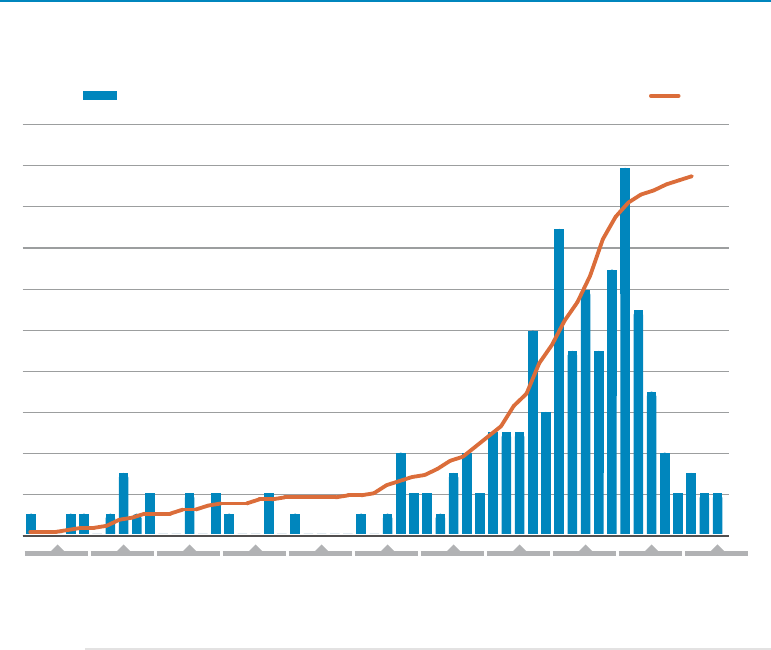
169
CHAPTER 4
Increase energy conservation in transport
Policies for a modal shift in urban transport
Decarbonising the transport sector, among other measures, requires a shift from energy-intensive
to low-carbon modes. A modal shift could significantly improve the energy efficiency of transport,
especially in the urban context. This could be achieved by promoting energy-efficient mobility modes
(e.g., public transit, rail-based transit systems, car sharing) including non-motorised ones such as
cycling and walking. Public transit and non-motorised mobility are complementary and work well
together. A growing number of cities are introducing bus rapid transit (BRT) systems (Figure 4.12).
Public campaigns are often undertaken by local governments to encourage green mobility modes. For
example, Vancouver (Canada) launched a city campaign to encourage cycling and reduce private car
use. Other polices, such as preferred parking fees, highway tolls and dedicated driving lanes for shared
driving and public transit, could encourage the shift from private ownership to public transit.
Public transportation fleets also offer the opportunity to utilise renewable fuels. For instance, many
cities in emerging countries, such as China and India, are promoting electric buses. Santiago (Chile)
had 800 electric buses out of a total bus fleet of 6 700 buses by the end of 2020. In Europe, Oslo
(Norway) and Gothenburg (Sweden) are operating fleets of electric buses.
FIGURE 4.12 Cities with bus rapid transit systems, per year and cumulative,
1968–2020
Source: IRENA, 2021e.
0
4
2
8
6
12
10
14
16
18
20 200
180
160
140
120
100
80
60
40
20
0
20201970 1975 1980 1985 19951990 2000 2005 2010 2015
CumulativeNew Cities

170
WORLD ENERGY
TRANSITIONS OUTLOOK
Policies to avoid and reduce transport needs
Structural changes and behavioural policies in the transport sector can have a multi-faceted effect by
promoting the use of public transportation and other mobility services, and also reducing avoidable
travel through improved planning (e.g., transit-oriented development) and activity pattern changes
(e.g., promotion of remote working). A reduction in traffic volume further reduces the demand for
renewable fuels including biofuels and electricity for charging electric vehicles.
Well-designed land use policies can significantly reduce or even eliminate unnecessary transport needs,
for instance, by improving access to the cities’ commercial districts. Transit-oriented development in
the urban context maximises the residential and business centres within range of public transport and
walking distance. In this way, most commercial activities could rely on public transit and reduce the
use of private cars. Policies to encourage mixed urban development, with housing, commercial outlets,
institutions and entertainment activities together in a specific urban area, can make new developments
more sustainable from a transport needs perspective. In dense cities with high numbers of residents
and jobs per square kilometre, travel distances would be shortened.
Encouraging new activity patterns can be achieved through, for instance, telecommuting and
e-learning. While recognising that this may not be an option for a significant share of the workforce,
telecommuting allows employees to work at home, or from a remote location for all or part of their
workweek. In 2019, the city of San Antonio (United States) included telecommuting in its strategy
to reduce car trips and related air pollution. Following the outbreak of the COVID-19 pandemic in
early 2020, many employers permitted or even required office workers to work remotely, giving an
unplanned and involuntary boost to forms of telecommuting enabled by video conferencing software.
Although it is too early to judge how entrenched such forms of work will become in the long run,
expectations are that the role of centralised offices has been altered fundamentally (IRENA, 2021e).
Structural changes and behavioural
policies are needed to reduce avoidable
travel through improved planning and
activity pattern changes, while promoting
the use of public transportation.

171
CHAPTER 4
4.2.3 Electrify end-use sectors
Electrification of end uses represents an important pillar of the energy transition. Targets for
renewable power should consider the rising demand from the electrification of end uses, in line
with long-term decarbonisation objectives. Policies and measures are needed to support the
electrification of heating and cooling and transport, and also to support electrification in achieving
its potential for providing system flexibility.
Electrification of heating and cooling
For heating and cooling, heat pumps are two to four times more efficient than conventional heating
systems. Their uptake has been supported mostly through fiscal and financial incentives. Denmark,
for instance, reduced the tax paid on electricity-based heat as part of the country’s plan to be
fossil fuel free by 2050 (McLaughlin, 2019). Germany’s Market Incentive Programme has dedicated
around USD 360 million per year in grants and loans for small-scale renewable heat systems like heat
pumps. China provided government subsidies equal to around 10% of the retail price of heat pumps,
depending on their rated heating capacity and efficiency.
Electrification of transport
In the transport sector, the adoption of electric vehicles continues to grow aided by enabling policies.
Targets for electric vehicles are increasingly being adopted at the national and sub-national levels.
Costa Rica, for instance, is targeting 100% of vehicle sales to be zero emission by 2050 and Japan
aims to have all cars be electric by 2050 (SLoCAT, 2020). On a sub-national level, Shenzhen (China)
aims for 60% of new registered vehicles to be electric from 2021 to 2025 and to deploy 1 million
electric vehicles by 2025 (Shenzhen DRC, 2021).
Financial incentives are often provided to support the uptake of electric vehicles. Germany has recently
doubled the bonus provided to buyers of electric cars to EUR 3 000, and EUR 2 250 for hybrids costing
less than EUR 40 000. The bonus for electric vehicles will be lowered in two steps until 2025 and that for
hybrids could be removed altogether from 2022 (Reuters, 2020). In fact, support policies for transition-
related technologies are often temporary, ending when these technologies achieve price parity and
further evolve to ensure deployment at levels consistent with broader energy transition ambitions.
Norway, the world leader in electric vehicles, incentivises their deployment by offering exemptions
from registration tax and value-added tax (EAFO, 2021), among other policy instruments. An
alternate approach also followed is to tax vehicles according to their emissions. In the United States,
buyers of electric cars receive a federal tax credit of up to USD 7 500 for the first 200 000 units
sold by each manufacturer (United States DoE, n.d.). As discussed further in Section 4.4, financial
incentives, such as tax credits, to facilitate adoption must also consider aspects related to equity,
i.e., support is accessible to, and benefits, all end users in a just manner.
The electrification of transport also requires significant investments in enabling infrastructure,
particularly for charging. With electric vehicles accounting for more than 80% of all road transport
activity by 2050, their market entry will be contingent upon co-ordinated investments in charging
infrastructure and power grids. Smart charging solutions can significantly facilitate the integration
of variable renewable energy by leveraging storage capacity and the flexibility potential of the
demand side (IRENA, 2019e). Heavy vehicles such as long-haul freight trucks, marine ships and
airplanes that are unlikely to be fully electrified will require investments in infrastructure to deliver
renewable solutions such as biofuels and green hydrogen-based fuels.

172
WORLD ENERGY
TRANSITIONS OUTLOOK
Electrification as a source of flexibility
Heat pumps and electric vehicles have the potential to become sources of system flexibility,
facilitating the integration of larger shares of variable renewable energy. Exploiting the potential will
require proactive policies for the upgrade of power networks, supported by digital technologies for
monitoring and controlling the consumption profiles, as well as an increasing participation of new
stakeholders such as aggregators of demand and distributed resources. As discussed in the In focus
section, power systems’ organisational structures need to be redesigned to support the integration
of greater shares of variable renewable energy, for example, by removing barriers to the participation
of renewables in ancillary services markets.
Moreover, electricity tariff structures need to be redesigned to meet the growing need for flexibility.
Demand-side flexibility can be increased through time-of-use tariffs and other smart rate-setting
options, thus facilitating the system-friendly integration of additional loads from heating and cooling
and transport. Policies can also enable new actors and business models that bring flexibility services.
Finally, forward-looking plans should be developed to integrate the additional renewable electricity
and address the load imposed by the electrification of end uses through grid expansion and
strengthening. In fact, sector coupling with the direct and indirect electrification of end uses (e.g.,
through green hydrogen) offers opportunities to enhance the flexibility of the energy system
facilitating integration of larger shares of renewables.
4.2.4 Support the development of green hydrogen
In recognition of the important role green hydrogen will play in advancing the energy transition,
several countries have introduced dedicated policies to support adoption. By 2019, 15 countries
and the European Union had implemented green hydrogen policies, about two-thirds focusing on
the transport sector (IRENA, 2020l). Transport is, however, only one target end-use sector for the
hydrogen value chain (Figure 4.13).
Demand-side flexibility can be increased through
time-of-use tariffs and other smart rate-setting
options, to accommodate for additional loads
from heating and cooling and transport.
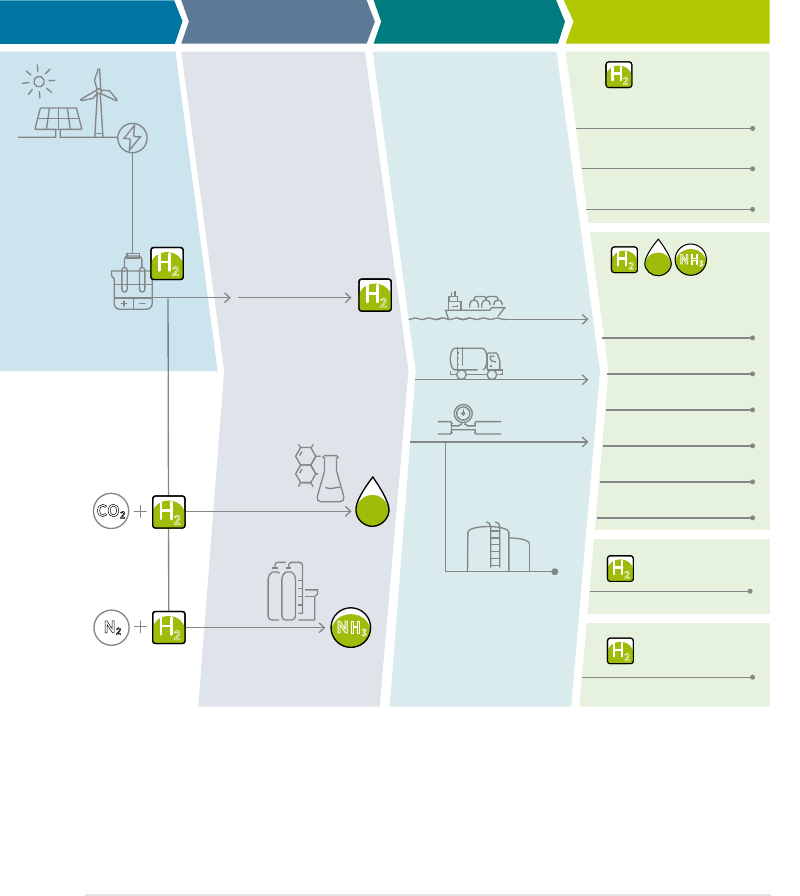
173
CHAPTER 4
FIGURE 4.13 Green hydrogen value chain
Note: CO
2
= carbon dioxide; H
2
= molecular hydrogen; N
2
= dinitrogen; NH
3
= ammonia.
Renewable
energy
Electrolysis
Sustainable
CO
2
capture
Storage
Pipeline
Steel
Chemical
Refineries
Trucks
Shipping
2
2
2
2
2
2
CO
2
N
2
2
INDUSTRY
POWER
GENERATION
HEATING
Shipping
Aviation
Cars
Rail
Trucks
Buses
TRANSPORT
PRODUCTION END USE
NO TRANSFORMATION
FURTHER
PROCESSING
TRANSFORMATION
TRANSPORT
NH
3
Synthetic
fuels
2
TRANSFORMATION
NH
3

174
WORLD ENERGY
TRANSITIONS OUTLOOK
Each part of the hydrogen value chain – including electrolysis, transport, storage, conversion in other
energy carriers and feedstocks (ammonia, methanol, synthetic fuels) and end uses – necessitates
support to scale up to the level needed for the energy transition. The installed capacity of electrolysers
needs to be raised from 200 MW today to 5 TW installed by 2050 in order to produce the 400 Mt.
This calls for policy action, with dedicated measures for each part of the value chain. Given the fact
that green hydrogen touches many different parts of the energy sector, an enabling policy framework
should consider the following four key pillars, as identified in IRENA (2020l).
• National green hydrogen strategy: This defines the level of ambition for hydrogen across end-
use sectors and the support required and provisioned for. A national hydrogen strategy can
serve as a reference point for attracting the private sector and investments. A growing number
of countries are adopting national hydrogen strategies to position themselves in a sector that is
gaining traction. Hydrogen strategies typically are preceded by vision documents and roadmaps.
Figure 4.14 illustrates government hydrogen-related initiatives announced between June 2018
and February 2021. The strategy development phase also offers the opportunity to engage civil
society through open consultations and in setting priorities.
Each part of the green hydrogen
value chain needs support to
scale up to the level needed for
the energy transition.
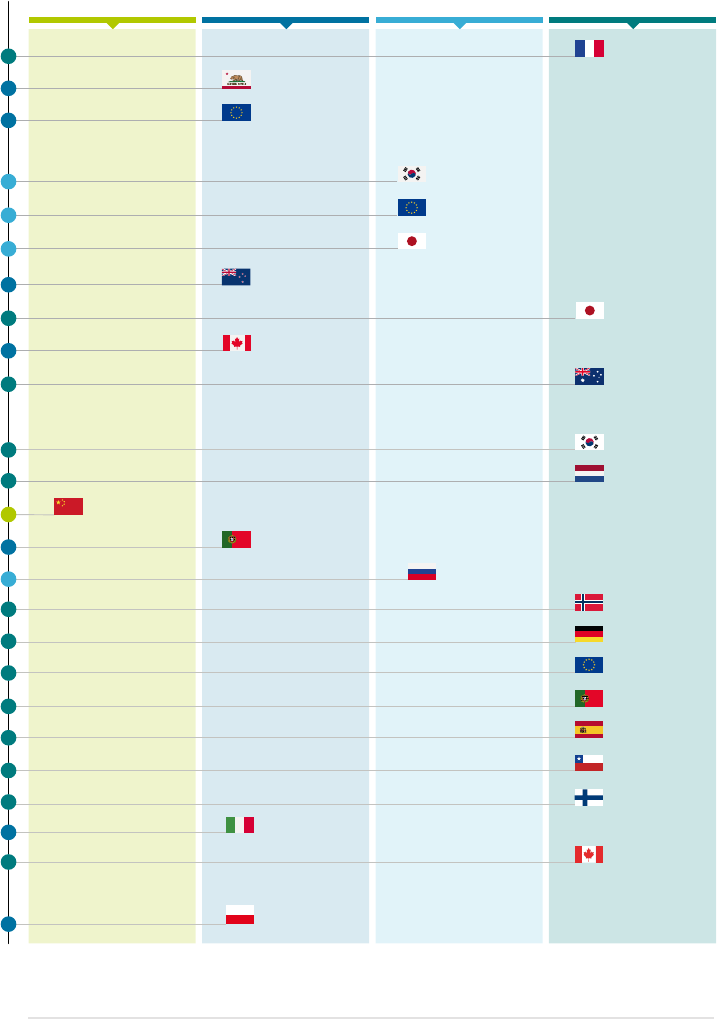
175
CHAPTER 4
FIGURE 4.14 Government hydrogen-related initiatives announced between
June 2018 and February 2021
Based on IRENA, 2020l.
Note: R&D = research and development.
R&D PROGRAMMES ROADMAPVISION DOCUMENT
STRATEGY
California
France
Canada
2018
2019
2020
2021
European Union
Republic
of Korea
European
Union
New Zealand
Republic of
Korea
China
Portugal
Spain
Japan
Japan
Australia
Norway
Germany
European
Union
Chile
Finland
Canada
Italy
Russia
Netherlands
Portugal
Poland
Upcoming strategies: Austria, Colombia,
Denmark, India, Morocco, Oman, Paraguay,
United Kingdom, Uruguay, among others

176
WORLD ENERGY
TRANSITIONS OUTLOOK
• Priority setting: Green hydrogen can be utilised in a wide range of end uses. In order to avoid
diluting efforts, policy makers are encouraged to consider three key principles when selecting
priority end uses to be developed:
First, despite the great promise of green hydrogen and its suitability to replace fossil gases, it is
not a complete substitute for fossil fuels. Instead, it is just one of several possible decarbonisation
alternatives that should be carefully weighed when setting priorities.
Second, policy decisions should include what applications should be prioritised and how quickly
to make the shift from fossil fuels to green hydrogen. Policy makers should identify the highest-
value applications for a given amount of green hydrogen, in order to focus their efforts where
they could provide the most immediate advantages and enable economies of scale.
Finally, the principle of additionality is crucial for the renewable energy used for green hydrogen
production. In other words, if there are other productive uses for the electricity being generated
from renewable sources, that electricity should not be diverted from those uses to produce green
hydrogen. Instead, green hydrogen should be produced only from additional renewable energy
capacity that would not otherwise be commissioned and electricity that would not otherwise be
consumed.
• Guarantees of origin: Since the molecules of green hydrogen are identical to those of grey
hydrogen, a certification system – referred to as “guarantee of origin” (GO) – is needed to track
the origin and to account for the life-cycle emissions of hydrogen (Figure 4.15). To be useful for
producers, policy makers and end users, GO schemes should provide a label for the hydrogen
product that clearly indicates its “shade”. GO schemes will be a key element of a green hydrogen
system, at least until carbon-intensive hydrogen is no longer produced.
Green hydrogen is just one of
several possible decarbonisation
alternatives that should be carefully
weighed when setting priorities.

177
CHAPTER 4
FIGURE 4.15 Guarantees of origin and life-cycle emissions
Note: CO
2
= carbon dioxide.
PRODUCTION
INFRASTRUCTURE END USE
Grid electricity Electrolysis TruckPipeline
Steel
industry
Guarantee
of origin
Emissions
• Enabling policies: The final pillar is the adoption of enabling policies and measures to create the
socio-economic space that would allow green hydrogen to become a part of the energy system
(see also Section 4.1). Economywide policies that affect the sustainability and pace of the transition
can create the ecosystem for green hydrogen to develop industrial, economic and social value,
including jobs. Examples of such measures are those that maintain industrial competitiveness
and create export opportunities and the identification and leveraging of economic growth and
job creation opportunities. Another important cross-cutting action is the collection of statistics.
Hydrogen is not currently included in national energy balances, because it is considered a chemical
product. Including hydrogen supply and demand as a separate category in national energy
balances (similar to electricity, fossil fuels or bioenergy) allows better identification of energy
flows and provides a solid basis for further analysis. Maintaining a central repository of data on
hydrogen deployment across different sectors (such as megawatts of electrolysis or number of
fuel cell electric vehicles) can make market information (such as prices, traded volumes and share
of green and low-carbon hydrogen) openly available to promote transparency. This action will
require international co-operation to align methodologies and ensure mutual comprehension.
These policy pillars represent the framework necessary for green hydrogen policy making. In
addition, some of the barriers faced by the green hydrogen sector must be tackled with dedicated
measures, focused on specific parts of the value chain, for example, the supply side (see Box 4.7).
Policies will also be needed to support adoption of hydrogen-based solutions on the demand side, in
particular in the industrial and long-haul transport sectors.

178
WORLD ENERGY
TRANSITIONS OUTLOOK
BOX 4.8 Policies supporting the supply of green hydrogen
In any energy system, policies can support the demand side, by supporting or mandating the
adoption of renewable energy solutions by consumers, or the supply side, by supporting the
production and transportation of clean energy or clean energy carriers. In the power sector,
supply-side policies were generally preferred and policy support for green hydrogen could draw
on the experiences from the power sector with appropriate adaptations.
Policy makers can set targets for the growth of electrolyser capacity and provide support for
each stage of deployment, supporting electrolysers and electrolyser manufacturing capacity
and ensuring a sufficient supply of renewable electricity. There are a wide range of possible
support schemes, including direct grants, feed-in tariffs and premiums, tax incentives and
funding for research and development. Regulation and planning will also play an important role.
A more detailed analysis is available in IRENA (2021i).
Regarding infrastructure, it is important to standardise the regulation of hydrogen infrastructure
in line with international best practice, plan infrastructure step by step (prioritising industrial
demand) and assist gas transmission system operators by financing the infrastructure to store
and transport hydrogen.
Source: IRENA, 2021i.
4.2.5 Ensure the sustainable use of bioenergy
Sustainable bioenergy is an important technology for the energy transition and its greater use
will play a significant role to meet decarbonisation objectives across power, heating/cooling and
transport end-use sectors. As noted in Chapter 2, in IRENA’s 1.5°C Pathway, bioenergy will be needed
to provide heat in industrial processes, cooking and space and water heating in buildings and fuels
for transport. It will also be needed as feedstock in the petrochemical industry to produce chemicals
and plastics. The energy transition will also involve phasing out the traditional use of bioenergy and
replacing it with a combination of modern fuels, including biogas.
Policies to support sustainable bioenergy adoption across the power and end-use sectors were
discussed in Section 4.2.1 along with other renewable energy technologies. Broadly, an enabling
policy framework for sustainable bioenergy must consider aspects related to a clear long-term
strategy, financing support, market access, support for innovation, enabling measures and
sustainability governance. This section will specifically discuss the sustainability governance
aspect which is critical to ensure the strongest compliance to standards relating to social,
economic and environmental impacts. Box 4.8 discusses policies and measures to ensure the
sustainable use of bioenergy.

179
CHAPTER 4
BOX 4.9 Policies and measures for the sustainable use of bioenergy
The transition to renewables addresses many of the challenges posed by incumbent energy technologies
at the intersection of society and the planet (e.g., climate change, local air pollution). However, even with
a renewables-based energy system there is potential for negative environmental and social impacts if
they are not adequately factored into the transition process and its policies.
Among the main sustainability concerns are those that relate to bioenergy production and consumption.
Some of these concerns relate to environmental aspects, including greenhouse gas emissions related
to direct or indirect land-use change, impacts on air and water quality and biodiversity, among others.
Comprehensive guidelines and tools are needed to support policy makers in defining rules for
sustainable biomass. The Food and Agriculture Organization of the United Nations has developed such
guidelines. Another international platform, the Global Bioenergy Partnership, has also produced a set
of indicators, including those to assess environmental impacts, to help stakeholders better understand
ways to ensure the sustainability of bioenergy.
Government legislation and independent voluntary certification schemes can also be introduced to
demonstrate the sustainable practice of bioenergy industries. For example, the EU’s Renewable Energy
Directive to 2030 introduces enhanced sustainability criteria for bioenergy production. It excludes
biofuels based on raw materials produced on land with high carbon stocks or large effects on biodiversity,
and requires minimum greenhouse gas savings for bioenergy production. Some independent certificate
schemes such as the Forest Stewardship Council and Sustainable Forestry Initiative are also widely
recognised by related industry players to demonstrate sustainable bioenergy practices and reduce the
negative impacts of bioenergy production on the planet (IRENA, forthcoming-b).
The energy transition’s planning should prioritise the use of bioenergy for those applications that
do not have other renewable-based alternatives (this would rule out the use of bio energy for low-
temperature applications like heating buildings or producing domestic hot water, for example), and
accelerate the development of alternatives for hard-to-abate sectors, like hydrogen and hydrogen-
based synthetic fuels, so that the use of biomass is reduced as much as possible and can be secured
from sustainable sources.

180
WORLD ENERGY
TRANSITIONS OUTLOOK
POLICIES FOR
STRUCTURAL CHANGE
AND A JUST TRANSITION
4.3
The transition under the 1.5°C Pathway will influence how we consume, produce, travel and
commute, and thus transform global, regional and local economies. Chapter 5 goes deeper
into estimates of the impact of the transition on global economic growth, employment
and welfare. Even as, globally, the benefits are large, impacts vary across regions and
countries that feature markedly different contexts and challenges. If misalignments are
not well managed through targeted policies, inequitable outcomes could result. This
section discusses a portfolio of policies related to structural change and just transition
(summarised in Table 4.6).
Even as globally the benefits of the energy
transition are large, impacts vary across regions
and countries that feature markedly different
contexts and challenges. If misalignments are
not well managed through targeted policies,
inequitable outcomes could result.

181
CHAPTER 4
TABLE 4.6 Overview of structural change and just transition policies
OBJECTIVE EXAMPLES OF MEASURES COMMENTS
Address potential
misalignments in
labour markets
Scotland’s “Transition Training
Fund” offers grants for the
retraining of oil and gas workers.
Ensuring a just and fair transition will require
an in-depth understanding of how structural
changes will affect labour markets as well as
measures to mitigate negative impacts and
foster benefits.
Develop local value
chains
India has launched a Production
Linked Incentive scheme to
promote manufacturing of high-
efficiency solar photovoltaic (PV)
modules and to reduce import
dependency.
Enhancing and leveraging domestic
capabilities requires carefully crafted
incentives and rules, business incubation
initiatives, supplier-development programmes,
support for small and medium enterprises and
promotion of key industrial clusters.
Provide education
and build capacity
The Ethiopian Electric Utility plans
to increase opportunities for
women in the electricity sector.
Early exposure to renewable-energy-related
topics and careers is vital for sparking young
people’s interests in pursuing a career in the
sector, and also to increase social acceptance
by a knowledgeable citizenry.
Support a circular
economy
The European Waste Electrical
and Electronic Equipment
Directive sets ambitious rules and
regulations for recycling solar PV
panels.
Policies and measures are needed to ensure
the sustainability of energy transition-related
solutions and their smooth integration in
existing ecosystems in terms of sustainability,
circular economy principles and reduced
environmental impacts.
Support community
and citizen
engagement
Countries such as Germany,
Denmark and Japan encourage
direct citizen participation in
renewable energy projects.
Community energy can play an important
role in accelerating renewables deployment
while generating local socio-economic
benefits and increasing public
support for local energy transitions.

182
WORLD ENERGY
TRANSITIONS OUTLOOK
4.3.1 Address potential misalignments in
labour markets
Economic structures and labour market policies are intricately intertwined. The challenges lie in
reducing the dominance of fossil fuels (reflected in institutional fabrics, sectoral structures and
investment priorities); altering patterns of commodity, technological and trade dependence and
strengthening the supply chain structures necessary for supporting the energy transition. Ensuring
a just and fair transition will require an in-depth understanding of how structural changes will affect
different areas and populations as well as measures to mitigate impacts and foster benefits.
Labour market interventions could encompass adequate employment services (matching jobs
with qualified applicants; promoting employee well-being; facilitating on- and off-job training and
implementing job safety nets), along with measures to facilitate labour mobility, such as relocation
grants. Facilitating collaboration between industry and educational institutions will also contribute
to more co-ordinated skill-matching efforts. The future and the present labour force may not always
be properly aligned (IRENA, 2019h), the main challenges being:
• Temporal misalignments: Job losses and gains will likely take place at different points in time
rather than in parallel.
• Spatial misalignments: New jobs may be created in different communities, regions or countries
than those where the principal job losses occur.
• Educational misalignments: Although retraining efforts can help to some extent, the skills
associated with vanishing jobs do not necessarily match the profiles and occupational patterns
required in emerging and growing industries.
• Sectoral misalignments: The relative changes in employment across economic sectors may
vary, hence requiring a migration of labour force from some economic sectors to others. Rising
industries may draw more heavily on raw materials or intermediate inputs from sectors that are
quite different from those that supply declining industries. The indirect effects will thus vary.
Ensuring a just and fair transition will require an
in-depth understanding of how structural changes
will affect different areas and populations as well as
measures to mitigate impacts and foster benefits.

183
CHAPTER 4
In parallel to targeting young people for new careers in the renewable energy sector, the existing
workforce also presents a potential talent pool, besides the justice considerations of not leaving them
behind. Reskilling and upskilling measures will be vital for extending the employment benefits of
the transition along the value chain and in the wider economy to workers.
Skills synergies between the offshore wind and oil and gas industries can be utilised, such as expertise
in surveying and offshore installation; design and manufacturing of support structures; large-scale
installation and operation and maintenance of offshore assets. Similarly, coal sector workers can
also find new opportunities in renewables, and recent years have seen many instances of targeted
recruiting of coal miners for work in the solar and wind sectors (Marston, 2018). For example, a United
States-based study of synergies between coal and solar PV skills found that 43% of coal-fired power
plant workers could be transitioned to the PV sector without additional training while in the coal mining
industry 30–35% of jobs are specific to the industry and would require reskilling (Louie and Pearce,
2016). It is necessary to ensure that vulnerable workers and their communities do not shoulder an
unfairly large burden due to the energy transition. Related efforts include measures to support income
stability through unemployment insurance and other programmes, policy incentives for employers to
retain (and retrain) workers where possible and flexible, longer-term employment contracts to promote
job stability. Proactive strategies designed to minimise socio-economic disruption may also encompass
public investments and economic diversification measures for affected regions and communities.
In addition to the identification of transferable skills, governments will also need to dedicate funds
to the reorientation and reskilling of the workforce. An example of this is the Scottish government’s
Transition Training Fund which offers grants for the retraining of oil and gas workers who have lost
their jobs or are at risk of redundancy (Skills Development Scotland, 2019). Partnerships between
governments, industry and trade unions will play an important role in facilitating the shift for workers
and securing safety standards and social benefits.
Reskilling and upskilling measures
will be vital for extending the
employment benefits of the
transition along the value chain and
in the wider economy to workers.

184
WORLD ENERGY
TRANSITIONS OUTLOOK
4.3.2 Develop local value chains
Bolstering efforts to strengthen local value chains will result in not only the creation of new
renewable energy jobs but also the generation of income by leveraging existing and new economic
activities. The current momentum for a green recovery offers a historic opportunity to pursue the
ambitious measures that would lead to this much-needed structural change. These measures must
be targeted towards all sectors and inputs along the value chain. The energy transition provides
many opportunities for localisation and structural reform. Stocktaking of regional and local strengths
is a pre-requisite, as well as analysing the potential of creating regional hubs for the manifold
technologies necessary for the transition along a 1.5°C trajectory.
The use of industrial policy can support the development of internationally competitive local or
regional suppliers, particularly in developing economies. Thus far, barriers to entry lie in the capital
intensity of starting new production lines, or exclusive consolidation of supply chains. In India, for
instance, a key feature of the recovery plan has been to encourage manufacturing across sectors
such as solar PV, automobiles, textile, medical devices and electronics. A Production Linked Incentive
scheme has been launched to promote manufacturing of high-efficiency solar PV modules and
reduce import dependency. The incentive offered is designed to increase as the value addition grows
(MNRE, 2021).
The availability of the materials and equipment, as well as skills, required along the value chain
will also be an important factor in determining where local value creation can be maximised. For
instance, as illustrated in Figure 4.16, a 50MW wind farm would require 22 836tonnes of concrete,
5 860tonnes of steel and iron as well as other materials such as polymers, fibreglass and aluminium
that are necessary for the local manufacture of components (IRENA, 2018d). This in turn would
create 144 420person-days of employment, primarily in operation and maintenance (43%) followed
by installation and grid connection (30%).
Bolstering efforts to strengthen local value
chains will result in not only the creation of new
renewable energy jobs but also the generation
of income by leveraging existing and new
economic activities.

185
CHAPTER 4
FIGURE 4.16 Distribution of material and human resource requirements for
the development of a 50 MW wind farm
Source: IRENA, 2018d.
7%
Decommissioning
2%
Project planning
Concrete
Steel and iron
5 860 tonnes
Polymer materials
681 tonnes
Fiberglass
370 tonnes
Aluminium
and alloys
168 tonnes
Copper and alloys
87 tonnes
Electronics
and electrics
46 tonnes
Oil and coolant
37 tonnes
Concrete
22 836 tonnes
Steel
and Iron
5 860
tonnes
681 tonnes
144 420
person-days
144 420
person-days
17%
Manufacturing and
procurement
30%
Installation and
grid connection
1% Transport
43%
Operation and
maintenance
22 836
tonnes

186
WORLD ENERGY
TRANSITIONS OUTLOOK
Quality assurance is key for a successful energy transition but should be turned into an entry point
and not a barrier to the respective markets. Easy access to standardisation procedures, including
training and skill formation (see Section 4.3.3), can reduce entry barriers for local firms seeking
access to value chains. Promoting the shift to regional value chains will also foster global resilience to
exogenous shocks, such as the interruptions seen during the COVID-19 pandemic.
Enhancing and leveraging domestic capabilities require carefully crafted incentives and rules,
business incubation initiatives, supplier-development programmes, support for small and medium
enterprises and promotion of key industrial clusters.
A key objective is to harness, enhance and leverage the capabilities of domestic companies (either
home-grown firms or local subsidiaries of international companies) so they can support the energy
transition. Suitable policies encompass initiatives and programmes to incubate new businesses
and develop the capabilities of existing firms in the supply chain, with the help of low-cost loans or
access to land, dedicated supplier capacity-building programmes and regional industrial clusters.
Governments can take a direct role by:
• Designing renewable-energy-focused research and development strategies and ensuring uptake
in the public and private sectors;
• Facilitating learning effects, spill-overs and technological transfers in renewables and energy
efficiency through carefully designed incentives;
• Incentivising supply chain participation in renewable energy sectors by local firms, and actively
supporting the creation of partnerships; and
• Establishing direct links to labour policy to translate targets and support measures into
employment creation.
Small and medium enterprises play an important role in any attempt to maximise local benefits
and diversify economies. It is important to incentivise small and medium enterprises, ease access
to information, support the digitalisation of small firms and open up access to finance to support
start-ups and, in the long run, innovation and economic opportunity. Start-ups benefit from the
promotion of key industrial clusters, as do firms of any size along the value chain of a technology.
The proximity of manufacturers, services and designers of a certain technology to a relevant
market has additional benefits.

187
CHAPTER 4
4.3.3 Provide education and build capacity
The renewable energy sector offers employment opportunities for people coming from a range of
occupational profiles and backgrounds. Leveraging existing local capacities needs country-specific
understanding of skill demand and supply, and of which relevant skills are readily available and which
need to be developed or strengthened.
A thorough understanding of the jobs that will emerge domestically and the existing knowledge and
skills that can be leveraged either from other industries or with skilling policies must go hand in hand
with measures to increase renewable energy deployment.
The renewable energy sector offers employment prospects for people with a wide range of
experiences and backgrounds, and many of the required skills are typically available in most
countries. While there is a demand for professionals with training in fields such as science,
technology, engineering and mathematics (STEM), as well as other highly qualified individuals (such
as lawyers, logistics experts, marketing professionals, financial analysts and experts in regulation
and standardisation), most jobs do not require a university degree, but high manual dexterity and
on-the-job experience. The greatest demand from the renewable energy sector will be for factory
workers, construction workers, technicians and tradespeople like plumbers and electricians. The low
threshold of skills for many of these jobs opens doors to employment for many people, particularly
where on-the-job training is available. Furthermore, some skill sets can be leveraged from other
domestic industries, with some retraining.
Analysis of PV (IRENA, 2017e) and onshore wind industries (IRENA, 2018d) shows that a diverse
set of jobs will be created, including jobs that require “lower” or less formalised skills. In fact, over
60% of jobs can be filled by people without university degrees (see Figure 4.17). Individuals with
advanced STEM degrees represent around 30% (PV) and 27% (onshore wind) of the workforce,
non-STEM professionals account for roughly 5%, while administrative personnel account for the
smallest share (1.4%). A similar trend is seen in offshore wind where the largest share of employment
(47%) is held by those with non-university skills and training.
A thorough understanding of the jobs that will emerge
domestically and the existing knowledge and skills that
can be leveraged either from other industries or with
skilling policies must go hand in hand with measures
to increase renewable energy deployment.

188
WORLD ENERGY
TRANSITIONS OUTLOOK
FIGURE 4.17 Human resource requirements in the solar PV and wind industries
Source: IRENA, 2017e, 2018a, 2018d, 2020b.
Note: PV = photovoltaic; STEM = science, technology, engineering and mathematics.
1%
4%
30%
5%
27%
64%
4%
63%
8%
19%
22%
4%
47%
Oshore WindOnshore WindSolar PV
Administrative
Technical Non-STEM
STEMMid-qualified
Low-qualified
When it comes to the manufacturing of solar water heaters, as shown in Figure 4.18, 67% of the
human resources required are for factory workers and technicians, and their installation also draws on
several trades (plumbers, electricians, bricklayers, mechanical technicians) (IRENA, forthcoming -c).
Measures to safeguard the quality of renewable energy jobs are as necessary as those undertaken to
increase their quantity. The notion of decent work encompasses many dimensions including fair income,
workplace security, social protections, personal development prospects, freedom of organisation,
equality of opportunities and equal treatment (ILO, n.d.-a). Given the diversity of the renewable energy
sector in terms of industries, companies and supply chains, job quality and workplace practices can and
do vary widely. National regulations, company policies and labour representation all play a vital role in
areas such as wage levels and workplace protections. It is critical that workers and communities have a
full voice in the decision making that drives the transition.
Realising the potential of the energy transition requires making use of all of the available talent pool
as well as equitably distributing benefits. As such, targeted measures are required to train, recruit and
retain women and other under-represented or marginalised groups (including older workers, ethnic
and religious minorities, people with disabilities and those on a low income), and offer opportunities
for career advancement.
Women, for instance, account for only 32% of the renewable energy workforce which, while
higher than the 22% in the oil and gas industry, is still significantly less than their overall workforce
participation (IRENA, 2019i). Also, parts of the renewable energy sector are far less open to women
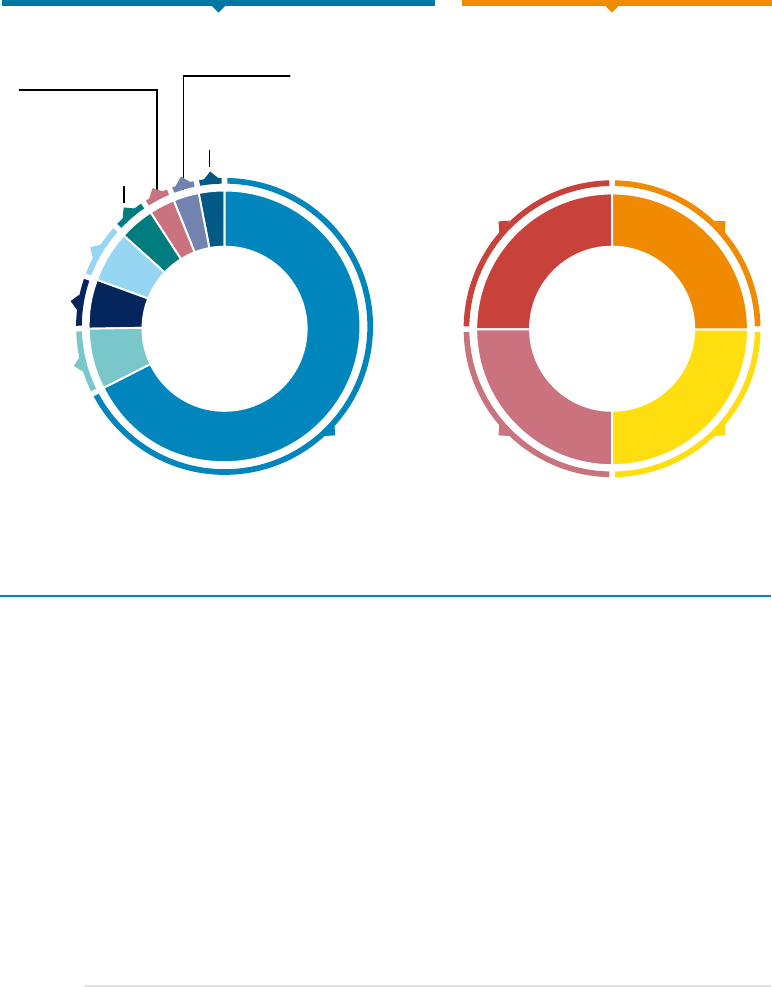
189
CHAPTER 4
3%
Regulation and
standardisation experts
3%
Management
3%
Administrative and
accountant personnel
4%
Marketing and
sales personnel
7%
Logistic
experts
6%
Engineers
6%
Quality and
safety experts
Factory workers
and technicians
67%
Bricklayers
25%
Mechanical
technicians
25%
Plumbers
25%
Electricians
25%
Manufacturing Installation
41 280
person-days
TOTAL
130 560
person-days
TOTAL
FIGURE 4.18 Human resource requirements for the manufacturing and installation of
solar water heaters
Source: IRENA, forthcoming-c.
than the average would suggest. This is true of the wind sector, where women represent only 21% of
the workforce. When it comes to STEM-related roles the disparity widens further with women holding
only 28% of STEM jobs across all renewables (14% in wind), compared to 45% of administrative roles
(35% in wind) (IRENA, 2020m).
Ensuring the inclusion of under-represented groups requires a range of both educational and
workplace measures. Early exposure to renewable energy careers, targeted scholarships and funded
training opportunities, mentorships and apprenticeship schemes can all play a role in building the talent
pipeline. In the workplace, attracting and retaining talent will require policies and practices that address
the challenges faced by under-represented groups. For example, many women would benefit from
policies that allow for work-life balance as well as equal opportunities for professional development (as
shown in Box 4.9). People with disabilities, who make up an estimated 15% of the world’s population
(ILO, n.d.-b), may also benefit from workplace accommodations and adaptations. Such measures
would often not only benefit the targeted group but also the workforce and society as a whole.

190
WORLD ENERGY
TRANSITIONS OUTLOOK
BOX 4.10 Fostering women’s employment at the Ethiopian Electric Utility
The Ethiopian Electric Utility (EEU) is working towards increasing opportunities for women
in the country’s male-dominated electricity sector. As of late 2019, women represented only
19.2% of the EEU workforce and just 9% of managerial and leadership positions. To address
this imbalance the EEU has set a target to increase this share to 30% women employees by
2023. To achieve this goal the EEU has built partnerships with the Ministry of Science and Higher
Education and 12 universities to deliver science, technology, engineering and mathematics
(STEM) courses. They are also offering scholarships to female staff for graduate studies and
technical training. To increase the number of women in managerial positions, leadership training
is also being developed. Targeted internships to female STEM graduate students have also been
used to provide practical experience, with the opportunity for a permanent job if requirements
are met. These efforts are being funded by an earmarked allocation for gender equity and citizen
engagement within the budget of the Ethiopia Electrification Program.
Source: WRI, 2021.
Building a skilled energy transition workforce requires measures to both increase the talent pipeline
as well as enhance the quality of education and training provisions.
Early exposure to renewable-energy-related topics and careers is vital for sparking young people’s
interests in pursuing a career in the sector, but also to increase social acceptance by a knowledgeable
citizenry. The curriculums at higher education and vocational training institutions need to reflect the
skills and competences needed under the energy transition. Certifications and national standards can
play an important role in ensuring quality and performance. Professional and supplementary education
and training are also important for upskilling the current workforce, ensuring that workers’ skills evolve
along with the demands of the sector. Targeted skill building is also needed in the energy access
context (as shown in Box 4.10). In addition to strengthening the content of education and training
programmes, it is also important to enhance the instructional methods used. For example, experiential
learning methods by which students are encouraged to develop problem-solving strategies can help
to prepare learners for jobs in the constantly evolving renewable energy sector where independent
knowledge seeking will often be necessary.
Public-private partnerships can also play a crucial role in improving overall training quality while
meeting sectoral labour requirements, promoting national skill standards and providing workplace
training. In addition to training content, public-private partnerships can also play a role in the financing
of training provisions through a shift from fees being the primary vehicle to a more integrated approach
that incorporates multiple funding mechanisms including payroll-based training levies, tax incentives,
scholarships and donations, vouchers and student loans (Dunbar, 2013).

191
CHAPTER 4
BOX 4.11 Energy access skills
Building the skills necessary for scaling up the use of renewable energy is especially crucial in the
energy access context. Projects shortlisted for the Ashden Award for Energy Access Skills feature a
range of innovative solutions for addressing skills shortages (Ashden, 2021).
Sendea Academy in Uganda, which is made up of a collective of locally owned small and medium
enterprises, aims to address skills shortages in the solar industry by providing training for technicians,
entrepreneurs and sales, management and finance professionals (Sendea, 2021).
Other projects selected include the Bharatiya Bikas Trust in India which has provided professional
development training to 14 000 bank workers to enable them to offer renewable energy loans; the
Strathmore Energy Research Centre in Kenya which has developed innovative solar curricula; and the
African Management Institute’s Off-Grid Talent Initiative which trains companies and middle managers
working in the off-grid sector.
4.3.4 Support a circular economy
Policies and measures are also needed to ensure the sustainability of energy transition-related
solutions and their smooth integration within the planet and existing ecosystems, featuring circular
economy principles and reduced environmental impacts. Potential impacts to mitigate include, for
example, those on land and biodiversity in the case of bioenergy and large hydro, and on migratory
species in the case of wind. Social and environmental impacts of mining activities and the use of
relatively scarce components should also be considered and mitigated through provision for a
circular economy including end-of-life management.
Together with industry and other stakeholders, governments need to prepare for the anticipated
waste volumes of equipment – such as solar PV panels and batteries – by adopting eco-design
requirements and sustainable end-of-life management policies, including waste legislation
(Box 4.11). More data and analyses will be needed at the national level to support the establishment
of suitable policy and regulatory frameworks. Information should be gathered through regular
monitoring of amounts of waste produced by country and technology, the composition of waste
streams, installed system performance and the causes and frequency of system failures. To further
stimulate innovation in end-of-life management, research and development programmes across
energy and waste sectors and industrial clusters can be effective. Tackling increasing waste streams
will also lead to the expansion of existing waste management infrastructure, including regional
markets in the absence of sufficient national waste volumes or country-specific technical know-how
(IRENA and IEA-PVPS, 2016).

192
WORLD ENERGY
TRANSITIONS OUTLOOK
BOX 4.12
European Waste Electrical and Electronic Equipment Directive (WEEE) for
end-of-life management of PV
Established in 2003 and with its latest recast in 2012, the EU WEEE Directive sets ambitious rules and
regulations for recycling solar PV panels. More specifically, the directive prescribes as of early 2014 minimum
collection and recovery targets for electric and electronical equipment under a legislative framework for
extended producer responsibility.
To date, the European Union has reached average PV recycling rates of over 70%, with an objective of
achieving 85% recovery and 80% reuse and recycling. Between 2011 and 2020, almost 45 000 tonnes of
waste were collected and treated by PV CYCLE, a not-for-profit-association created by the European PV
industry to organise a collective take-back and recycling scheme for PV panels (Figure 4.19) (PV CYCLE, 2021).
However, some challenges remain in the end-of-life management of photovoltaics. These involve among
other (1) collection (volumes need to reach certain levels to be profitable), (2) logistics (distance to recycling
facilities, access to remote areas) and (3) financial costs (cost-benefit ratio of material value recovery vs.
end-of-life management costs) (Deutsche Umwelthilfe, 2021; PV CYCLE, 2021; IRENA and IEA-PVPS, 2016).
End-of-life management offers significant employment opportunities, particularly in the waste industry.
Currently, the European waste sector accounts for less than 1 million employees and 0.4% of the EU’s
employment and GDP (European Commission, 2018). Labour market growth in this sector is expected
to be boosted by additional circular economy policies under the EU's Green New Deal.
United Kingdom
The Netherlands
Poland
Other European
countries
36 870
tonnes
36 870
tonnes
0 10 000 tonnes5 0002 500 7 500
2011
2012
2013
2014
2015
2016
2017
2018
2019
11733
Italy
10 455 Germany
10 188
France
Belgium
1288
Spain
1117
Evolution of PV panel waste streams in Europe, 2011-2019
Share of collected PV panel and battery waste
by country, 2015-2019
FIGURE 4.19 Overview of EU PV recycling operations, by year and by country, 2019
Note: Other European countries include Austria, Bulgaria, Czechia, Denmark, Greece, Hungary, Luxembourg, Romania, Slovakia
and Switzerland.
Source: PV CYCLE, 2021.

193
CHAPTER 4
4.3.5 Support community and citizen engagement
Community energy, the “economic and operational participation and ownership by citizens or
members of a defined community in a renewable energy project”, can play an important role in
accelerating renewables deployment while generating local socio-economic benefits and increasing
public support for local energy transitions (IRENA Coalition for Action, 2018). A diverse range of
community energy ownership models can already be found throughout the world, such as in Europe,
North America and increasingly in developing countries such as Costa Rica, Mali and the Philippines
(IRENA Coalition for Action, 2020b).
Policy makers can stimulate community energy deployment by implementing enabling frameworks
that help promote market entry for community energy projects and putting financial measures in
place to de-risk early-stage activities, offset capital costs and provide communities with access to
affordable and low-cost financing. Further, administrative measures like one-stop shops can support
communities in navigating the complex process of developing a renewable energy project as well as
help with skills development and capacity building (IRENA Coalition for Action, 2020b).
Governments are adopting policies that value direct citizen participation in renewable energy
projects. In countries such as Germany, Denmark and Japan, different forms of community energy
have emerged that encourage citizen ownership of renewable energy projects next to accelerating
local socio-economic development (IRENA Coalition for Action, 2020b). Renewable Energy
Communities are now enshrined in EU law, and need to be considered by Member States in support
schemes.
Community energy can play an important
role in accelerating renewables deployment
while generating local socio-economic
benefits and increasing public support for
local energy transitions.

194
HOLISTIC GLOBAL
POLICY FRAMEWORK
4.4
Policies to advance the energy transition closely interact with one another and have
implications for the energy system, economy, society and planet. An integrated policy
approach would account for feedback among the policies, and across systems, to ensure
a timely, just and fair energy transition trajectory.
A holistic global policy framework is, necessary to guide climate action under the
1.5°C Pathway and reinforce the energy transition at a national level. Climate policies,
including fiscal policy aligned with climate objectives, represent an important component
of such a framework. A diverse portfolio of measures and instruments focused on
enabling and supporting the transition must be integrated into a wider and transparent
policy strategy that accounts for the fact that policies introduce strong links and
feedback between energy, economic and social systems.
Policies, such as carbon pricing and taxes on transport fuels, that intend to reduce
consumption-related emissions could disproportionately affect low-income groups
(Andersson and Atkinson, 2020). Government revenues from the implementation of
climate policies can offset the regressive effects through measures such as targeted
low-income household subsidies and lump sum payments. In the Canadian province of
British Columbia, for instance, low-income households are provided with direct transfers
to reduce the burden imposed by a carbon tax (Canada’s Ecofiscal Commission, 2016; Beck
et al., 2015). A focused effort is needed to not just design policies with a view to scale
up deployment of energy transition solutions, but also consider their feedback across
the energy sector, economy and society and introduce a holistic policy basket to address
concerns.
To this end, the macroeconomic analysis presented in Chapter 5 incorporates a climate
policy basket that accounts for the need for an integrated approach to address equity
concerns and integrates a host of measures, for instance, earmarking part of the
increased government revenue to transition-related investments (discussed further in
Section 5.1).
WORLD ENERGY
TRANSITIONS OUTLOOK

195
CHAPTER 4
Public investment will play a crucial role in the energy transition, including in the implementation of
policy portfolios. Beyond direct investments in technology deployment (where private capital is hard
to attract or requires de-risking), including infrastructure development (e.g., networks, charging
infrastructure), public investments will be crucial to implement enabling and just transition policies
(e.g., capacity building, social protection measures, education and retraining) as well as fossil fuels’
phase-out. The American Jobs Plan aims to strengthen public investments to the tune of 1% of GDP
annually over eight years focusing on key areas advancing the energy transition, including incentives
for the roll-out of a national network of electric vehicles charging infrastructure and policies to
promote equitable access (The White House, 2021). As discussed earlier, in Germany, a series of
auctions have been conducted to seek bids from coal operators to prematurely close down power
plants in exchange for awarded compensation (Appunn, 2021).
Public financing is needed to shape and guide the energy transition’s trajectory, ensuring positive
impacts across key socio-economic indicators. Public funding requirements for energy-transition-
related policies are not always included in traditional assessments of energy transition pathways but
must be accounted for and planned. While advanced economies are best positioned to mobilise public
financing, global policy frameworks are necessary to mobilise such funding to reinforce the energy
transition in the rest of the world. Emerging economies can benefit from international co-operation to
support closure of plants, communities in transition, repurposing/rehabilitation, retraining and skilling,
among other priorities. Several development finance institutions have introduced programmes to
fund a just transition, such as the Energy Transition and Coal Phase-Out Programme in Asia and the
Support to Energy Transition in Coal Regions in the Western Balkans, Ukraine, among other countries
(Brookings, 2021).
Global policy frameworks are necessary
to mobilise public financing to reinforce
the energy transition across all regions
of the world.

Justice and equity are the pillars
underpinning the global collaborative
framework that an ambitious energy
transition requires.
WORLD ENERGY
TRANSITIONS OUTLOOK
196
International climate finance has a key role to play in providing public financing necessary for a just and
fair energy transition. Its function will vary from context to context – fossil-fuel-dependent communities
and countries will require targeted efforts to unwind lock-ins to the fossil fuel economy and plan an
alternative development trajectory based on new energy sources and economic activities (CPR, 2021).
Countries where mitigation requirements consistent with climate targets go beyond their fair share of
the global mitigation burden will require support to trigger the needed collaborative framework and
leapfrog to climate-consistent energy systems and reap their share of the transition’s benefits.
Now more than ever, public policies and investment decisions must align with the vision of a sustainable
and just future. Making this happen requires a broad policy package – one that tackles energy and
climate goals hand in hand with socio-economic challenges at every level. A just and fair transition
leaves no one behind. Moreover, justice and equity are the pillars underpinning the global collaborative
framework that an ambitious transition requires.
Ultimately, the success of the energy transition in mitigating the climate crisis will depend on the
policies adopted, the speed of their implementation and the level of resources committed. In our
interconnected world, international co-operation and solidarity are not only desirable, they are
also vital for addressing climate change, economic inequality and social injustice. Moving forward,
investment decisions should be evaluated on the extent to which they accelerate the shift towards
an inclusive low-carbon economy. Anything short of that can seriously hamper progress towards
a transformative decarbonisation of our societies (IRENA, 2020n).

CONCLUSION4.5
WORLD ENERGY
TRANSITIONS OUTLOOK
197
Delivering on ambitions aligned with a 1.5°C Pathway will require a comprehensive set of policies
to ensure a just, smooth and timely energy transition. As outlined in this chapter, such policies
must consider deployment, integration, cross-cutting enabling conditions, structural and just
transition aspects. The most appropriate mix will vary from country-to-country, and the policy
needs are likely to evolve as markets mature, the share of renewables in the energy mix grows, and
energy transition advances.
The policies strongly interact with one another with far-reaching implications for the energy system,
society, economy and planet. As governments embark on defining and implementing the optimum
policy mix to advance the energy transition, the feedbacks and interactions between policies must
be closely considered. A fundamental change in the energy system will require policy-making that
effectively accounts for these interactions and addresses potential misalignments and regressive
outcomes that are likely to disrupt the pace of the transition.
A better understanding of the implications of energy transition ambitions and policies across
society, economy and environment systems offers valuable design feedback to maximise benefits
and reduce risks of disruption. The next chapter presents insights into the impact of the energy
transition on key indicators such as GDP, employment and welfare, and highlights key climate
policy conditions that can reduce potential regressive effects of energy transition policies.

05 SOCIO-ECONOMIC
IMPACTS OF THE ENERGY
TRANSITION

199
The energy transition goes well beyond the technological solutions required and involves deep
structural changes that will affect economies and societies at large. An improved understanding
of these effects is crucial for policy making and for ensuring that the transition is just and inclusive.
To this end, IRENA’s socio-economic footprint analysis (IRENA, 2016b, 2019d, 2020o) continues to
capture an increasingly comprehensive picture of the transition’s socio-economic impacts.
IRENA adopts a comprehensive approach that links the world’s energy systems and economies
within one consistent quantitative framework, analysing impacts of the energy transition on variables
such as gross domestic product (GDP), employment and welfare. The results presented in this
chapter demonstrate that steps towards the 1.5°C Scenario will positively affect economic activity,
jobs and welfare compared to the Planned Energy Scenario (PES), so long as an appropriately
holistic policy framework is in place. Box5.1 provides an overview of the results.
Over the course of the entire transition period, the gains will vary. Over the next decade (2021-
2030), overall GDP would be 2.4% higher on average on the 1.5°C Pathway compared to the PES.
Economy wide, the 1.5°C Pathway yields an average of 1.4% more jobs in the first decade while jobs
in the energy sector reach around 137million by 2030, 78% of them related to the energy transition.
Renewables account for 38million. By 2050, the Energy Transition Welfare Index is 11% higher under
the 1.5°C Scenario compared with the PES.
For energy and investment roadmaps to materialise, their links with society must be well understood,
clear and transparent. Effective climate policy that integrates energy and investment roadmaps
with wider socio-economic policies and values is important for the energy transition. This includes
measures to explicitly address the regressive effects of climate change itself, as well as the effects
of other policies such as carbon pricing. Together with the comprehensive policy mix discussed in
Chapter 4, this more holistic climate policy framework is imperative for a 1.5°C Pathway. Only if all
stakeholders – citizens, politicians, institutions – are convinced of the need to transition the energy
sector, can the collaborative effort needed to address the climate challenge arise. This is all the more
important since, beyond what is being modelled, countries are moving along the pathway towards
1.5°C at various speeds, and societies and economies respond in complex ways to transitions.
Education, good governance and credible policy are key ingredients to an inclusive and just energy
transition. When people and communities can see the benefits of the transition, political acceptance
and support will be much stronger.
For IRENA’s socio-economic footprint analysis, countries’ existing policies are complemented with a
climate policy basket to reach energy transition targets, while addressing distributional challenges
with the aim to achieve just and inclusive outcomes. Government fiscal balances are the main link
between policy (including climate policy) and social systems.
CHAPTER 5
Energy transition involves
systemic changes affecting
economies and societies.

200
WORLD ENERGY
TRANSITIONS OUTLOOK
This chapter begins with an overview of the climate policy basket applied in IRENA’s macroeconometric
model and the channels through which climate policy affects economic and social systems
(Section5.1). It then discusses the impacts of the energy transition on GDP, jobs (economy wide
and energy sector specific) and welfare (Section 5.2). The chapter concludes with a brief outlook
on the way forward.
BOX 5.1 Socio-economic footprint of the 1.5°C Scenario, 2030 and 2050:
A snapshot
The 1.5°C Scenario is estimated to deliver positive outcomes across all socio-economic indicators
analysed (i.e., GDP, jobs and welfare):
• GDP: Additional GDP growth is spurred by investment across the many dimensions of the
energy transition, leading to multiple adjustments between interdependent economic sectors.
Prices respond to the different cost structures of the 1.5°C Scenario and the Planned Energy
Scenario (PES), respectively, and react to investment and demand; more jobs translate into
higher incomes and more consumption. The 1.5°C Scenario provides an initial boost to GDP
of 2.4% on average over the next decade (over the PES) that is well aligned with the needs of
a post-COVID recovery. Over the entire transition period to 2050, the average improvement
of GDP is estimated at 1.2% over the PES. The reduced demand for fossil fuels leads to lower
revenues for mining and fuel refining industries, as well as for governments through fossil fuel
rents, thus resulting in negative GDP impacts in some countries. This highlights the need for a
holistic policy framework that addresses structural changes reducing fossil fuel dependency.
• Jobs: The global effect on jobs from the energy transition is positive. In the energy sector,
jobs exceed the PES by 26million in 2030 and are still 8million higher in 2050 despite the
decrease in fossil fuel jobs. Specifically, in the renewables sector, jobs could reach 43million
by 2050 under the 1.5°C Scenario – a 93% increase from the PES. Qualifications, skills and
occupations under the more ambitious 1.5°C Scenario increasingly pertain to construction
and operation and maintenance. Training for such occupations is relatively easier and offers
more opportunities for fossil fuel workers. The educational requirements of the labour force
evolve during the transition with a continuous increase in the share and number of workers
with a primary education and a peak by 2030 of workers with a tertiary education.
• Welfare: The Energy Transition Welfare Index used in this report covers five dimensions
(economic, social, environmental, distributional and energy access) and for the first time
reports the distributional and energy access dimensions which are often overlooked in other
analyses. The 1.5°C Scenario performs better than the PES along all welfare dimensions.
By 2050, the 1.5°C Scenario provides a 11% improvement in the overall Energy Transition
Welfare Index over the PES, with improvements of 30%, 23% and 7% in the environmental,
social and energy access dimensions, respectively. On average from 2021 to 2050, the 1.5°C
Scenario provides a 37% improvement in the distributional dimension over the PES.

201
Climate policy plays a pivotal role in the success of energy transitions. In IRENA’s macroeconometric
model, a diverse portfolio of measures addresses transition and social challenges. This approach
adds emphasis on how the energy transition benefits people, and on leaving no one behind.
In addition to policies focused on deployment, integration and enabling factors, presented in
Chapter 4, this climate policy basket includes a diverse set of fiscal policy measures, such as
adequate carbon pricing applied to emissions across sectors, subsidies and public investment in
infrastructure and expenditure on efforts to ensure a just transition.
This climate policy basket includes the measures necessary to move towards the 1.5°C target. Yet it
leaves ample room for countries to develop their own respective policy approaches, an aspect that
increases trust and acceptance by building on established local policies. The climate policy basket
also manages fiscal balances in a manner that addresses the potentially regressive impact of other
climate policies. Fiscal surpluses are redistributed by recycling them into the economy through
lump-sum payments in a progressive way. In case of fiscal deficits beyond historical trends, the
additional deficit burden is shared between citizens (additional income taxes) and government
deficit spending.
THE CLIMATE POLICY BASKET5.1
WORLD ENERGY
TRANSITIONS OUTLOOK
Climate policy plays a
pivotal role in the success
of energy transitions.

202
In its socio-economic footprint analysis, IRENA uses a macroeconometric modelling framework
that captures the effects of the different climate policies and their feedback loops. This chapter
discusses the resulting structure of the cumulative global government balances for the 1.5°C
Scenario, both in terms of revenues and spending, with a focus on the main elements directly
affected by the transition.
1
Table 5.1 shows the revenue and spending flows included in the
modeling of government fiscal balances, providing its shares in cumulative terms (2021-2050) at
the global level.
Government revenue streams stand to change, through direct and induced macroeconomic effects
on general taxation and declining fossil fuel export revenues, while carbon pricing will in turn provide
additional resources. Revenues from public energy transition-related investment may also provide
positive contributions, as does international climate finance. Carbon pricing plays a significant role,
though still relatively small compared to the general revenue streams
2
(income, value added tax
and social security contributions). The direct burden of carbon pricing on citizens is kept as low as
possible by implementing a differentiated carbon pricing structure with lower prices for the use of
fossil fuels in households and road transport (see Box5.2). As fossil fuel use is phased out in the
1.5°C Scenario, the revenue stream for governments from fossil fuel exports (oil rent) declines, while
revenues from public energy transition-related investment, such as renewable power generation,
power grids and flexibility, electric vehicle (EV) charging and hydrogen infrastructure, grow. Financial
flows from international climate co-operation also provide significant revenues.
WORLD ENERGY
TRANSITIONS OUTLOOK
1 The main standard fiscal balance components are indirectly aected by the transition, with the modelling
framework used by IRENA also capturing these eects.
2 Note that general revenue streams are still higher than those presented, since the macroeconometric model
captures only those revenue streams with macroeconomic implications.
Fiscal measures can address
potentially regressive impacts
of the energy transition.

203
CHAPTER 5
GOVERNMENT REVENUE % SHARE GOVERNMENT SPENDING % SHARE
Regular income tax 84.6 General government spending 85.9
Value added tax Benefit payments
Social security contributions
Carbon tax 7.8 Lump-sum subsidies for
households
7.6
Household fuel tax 0.4 Cost of early power plant
closures
0.1
Transport fuel and vehicle
registration tax
3.0 Subsidies to support the
transition
2.5
Oil rents 1.3 Fossil fuel subsidy payments 0.2
Additional income tax for
revenue neutrality
0.2 Contribution to international
co-operation
0.9
Receipts from international co-
operation
1.0 Energy-related investment by
government and loans
2.4
Revenues from public-energy-
related investment
1.7
Additional social spending
0.4
TABLE 5.1 Elements included in the modeling for government fiscal balances,
(% of global cumulative fiscal balances 2021-2050)
Note: Since the model only tracks the fiscal flows that have a macroeconomic impact for the energy transition, the
shares presented in the table do not reflect the shares corresponding to the full government revenues and spending.
More specifically, the following fiscal flows are not fully represented: regular income tax, value added tax, social
security contributions, general government spending, and benefit payments.

204
WORLD ENERGY
TRANSITIONS OUTLOOK
BOX 5.2 Carbon pricing in IRENA’s modelling exercise
Carbon pricing aligned with climate goals helps level the playing field, as outlined in Chapter4.
More ambitious mitigation goals require higher carbon prices, while greater policy diversity can
allow for lower prices. IRENA’s modelling exercise uses carbon pricing at levels consistent with
mitigation goals in combination with a diverse climate policy basket.
While carbon pricing is an important component of climate policies, its potentially negative
impacts on consumers make it a complex policy tool. Social, and hence political, acceptance
rests on clear and transparent communication of potential impacts, real and perceived, and
on a convincing alignment with transition and social needs. Policy makers must devise ways to
harmonise new fiscal instruments like a dedicated carbon tax with existing taxes on fuel use.
More broadly, they also must manage and address the direct impact of such policy changes on
citizens, including any regressive effects.
The policy basket for the 1.5°C Scenario, as outlined in this chapter, addresses these issues by:
• Alleviating direct impacts on citizens through lower carbon prices applied to household
consumption and road transport, using already established fiscal policy instruments (fuel and
registration taxes);
• Distinguishing between current operating expenses and expenditure on new equipment
(e.g., vehicles); and
• Earmarking revenues from carbon pricing for transition-related public investment, as well as
for subsidies to support lower-income groups.
Positive government fiscal balances are re-circulated to citizens in the form of lump-sum
payments to mitigate negative socio-economic impacts. Where fiscal balances are negative,
3
the burden of addressing them is distributed between an increase of fiscal deficits and higher
income taxation. Finding the right level of carbon pricing is difficult. Annex 5.1 discusses the
implications of carbon pricing levels set lower or above the optimum. Integrated energy-
economy models can inform the balance between positive and negative impacts, but due to
modelling limitations and the complexity of socio-economic systems, these estimates must be
interpreted with caution and further refined through a holistic approach to policy making.
3 Always in accordance with econometrically estimated boundaries based on past data.

205
Government spending plays a crucial role in the energy transition, including in addressing
social challenges associated with a change from the status quo. General spending and benefits
(such as for infrastructure, health, education, social security and subsidies for a wide variety of
purposes) are regularly paid out by governments. The energy transition will involve additional
expenditure with long-term socio-economic dividends as presented in this chapter. Several
government spending streams may significantly change: fossil fuel subsidies will be reduced while
transition-related subsidies and public investment will need to increase; covering the losses from
stranded assets may also increase government spending; and addressing the justice and fairness
requirements of the transition and existing social challenges (including distributional aspects) will
require additional expenditures. Last but not least, how fiscal balances are managed may also play
a significant role during the transition, with important synergies with stimulus packages to address
the COVID-19 crisis. The spending needs are likely to grow the longer action towards the energy
transition is delayed.
Earmarking public funds for the transition is an important part of the fiscal policy implemented in the
1.5°C Scenario. Public expenditure is used for direct public investment and loans (for infrastructure,
facilities and equipment) in support of energy efficiency, end-use renewables, heat pumps and
electric or fuel cell vehicles, as well as for addressing stranded assets. Different purposes require
public investment to different degrees, for instance, the building sector will require greater public
participation than renewable energy for power generation, while the electrification of public
transport requires more than the electrification of private vehicles.
CHAPTER 5
4 The G7 environment ministers have recently agreed to stop funding coal-fired power stations in developing
countries by the end of 2021, signalling increasing commitment to a 1.5°C Pathway.
5 Transition-related subsidies include: energy eciency, renewables in end-uses, green hydrogen, heat pumps,
EV and EV charging infrastructure, and energy storage.
6 Such as the German Coal Phase-out Act, for example.
Government intervention is
required for an inclusive transition.

206
In the policy basket introduced in IRENA’s socio-economic modelling for the 1.5°C Scenario,
public expenditures are also used to address the requirements of a just and fair energy transition,
covering both domestic and international needs, based on international co-operation. Countries
contribute to the joint effort according to their respective capability and responsibility. The financial
flows from international co-operation are earmarked for three purposes in the IRENA analysis:
• Enabling the energy transition and addressing social challenges. This includes addressing
potential misalignments from the energy transition, such as educational and skills requirements
to accommodate the transition, retraining of workers from industries that are phased-out, social
policies to address economic restructuration and legacy dependencies on the fossil fuel economy.
• Ensuring a just transition across the globe. This includes providing support for countries with high
socio-economic dependence on fossil fuel activity.
• International fair transition elements. Developing countries will need particular attention, based
on the acknowledgement that fair emissions in many cases exceed necessary global emission
reductions. Countries whose climate mitigation requirements surpass their fair share of the global
mitigation burden require support to leapfrog to climate-consistent energy systems and reap
their share of the transition benefits.
Under the energy transition scenarios, the revenue components of government fiscal balances are
responding to economic developments (e.g., changes in aggregated economic activity impacting
taxes, shifting away from fossil fuels reducing rents). Investment in the energy transition also
creates flows and feedback loops in the real economy. Additional demand leads to additional output
and employment, in those sectors critical to the energy transition and along the value chain. This
manifests in additional GDP and differences in employment between the PES and the 1.5°C Scenario.
IRENA’s socio-economic modelling captures the implications of all these factors while envisioning
an international collaborative framework to address climate change.
WORLD ENERGY
TRANSITIONS OUTLOOK
International co-operation
is an essential piece of the
global energy transition.

207
Renewable energy and energy efficiency represent key technological avenues of the energy
transition with significant interactions and feedbacks with wider economic, social and planetary
systems. Underpinned by a comprehensive policy framework (as elaborated in Chapter 4), the
energy transition can lay the foundations for building more resilient societies.
IRENA’s cost-benefit analysis shows that when the reduced externalities from lower air pollution
and avoided climate change are combined, the overall benefit of the energy transition is valued
at between USD 2 and USD 5.5 saved for every additional USD 1 spent (see Box 5.3). The
sub-sections that follow consider the socio-economic footprint of the energy transition analysed
in terms of GDP, employment and welfare.
SOCIO-ECONOMIC
FOOTPRINT RESULTS
5.2
WORLD ENERGY
TRANSITIONS OUTLOOK
The energy transition can
lay the foundations for building
more resilient societies.

208
WORLD ENERGY
TRANSITIONS OUTLOOK
BOX 5.3 Transition cost-benefit analyses
A broad view of the balance between the costs and benefits of the energy transition can be
obtained by using estimates of externalities related to pollution and climate change and
comparing them with transition costs, including investments, operation and maintenance
expenditures and subsidies.
The overall balance of the energy transition is positive, with benefits greatly exceeding costs.
IRENA estimates that in the 1.5°C Scenario every USD1 spent on the energy transition would
yield benefits from reduced externalities valued at between USD2 and USD5.5. It should be
noted that exogenous estimates of externality costs have a significant uncertainty, as reflected
in the range of benefits expected from the transition (Figure5.1). In cumulative terms, the 1.5°C
Scenario would have an additional energy-system cost (net effect of increased investment and
reduced operation and maintenance costs) of USD30trillion over the period to 2050 but would
result in a payback through reduced externalities from human health and the environment of
between USD61trillion and USD164trillion.
The savings from reduced externalities fall into three broad categories: outdoor air pollution,
indoor air pollution and climate change. Two externalities are included in this cost-benefit
analysis:
• Air pollution externalities are the largest component, making up roughly two-thirds of
the total. (Indoor pollution largely results from using traditional biomass.) The reduced
externalities from lower levels of air pollution alone range from USD 37 trillion to
USD106trillion over the period. These savings are at minimum slightly above the additional
cost required for the 1.5°C Scenario, but are potentially as high as three times that amount.
• The other significant source of reduced externalities is related to climate change. These
externalities are quantified using the social cost of carbon approach (Intergovernmental Panel
on Climate Change estimates) to put a value on each tonne of CO
2
that is avoided through
the measures outlined in the 1.5°C Scenario. The reduced externalities from avoided climate
change impacts account for savings ranging from USD24trillion to USD58trillion over the
period.

209
CHAPTER 5
58
58
49
49
57
57
Up to
5.5x
savings
Up to
5.5x
savings
2424
1717
2020
Up to
2x
savings
Up to
2x
savings
-30-30
CostsCosts
Savings from reduced
externalities (high)
Savings from reduced
externalities (low)
Costs – 1.5-S
0
50
100
150
200
Incremental
energy system
cost
Reduced
externalities -
climate change
Reduced
externalities -
outdoor air
pollution
Reduced
externalities -
indoor air
pollution
-50
USD trillion
2015
FIGURE 5.1 Cumulative dierence between costs and savings of 1.5°C Scenario
compared to the PES, 2021-2050
Based on IRENA's analysis.
In the 1.5°C Scenario, every USD 1 spent
on the energy transition would yield
benefits from reduced externalities
valued at between USD 2 and USD 5.5.

210
5. 2 .1 Economic growth as measured by gross
domestic product
Under the PES, real GDP (following a short period of recovery from the impacts of COVID-19
in 2020) is expected to rise at a compound annual growth rate (CAGR)
7
of 2.9% between 2021
and 2050. While this may be interpreted as moderate growth, it should be noted that it implies
significant stress on the planet’s resources and ecosystems. In fact, in the PES the energy and
carbon intensity of the economy is reduced substantially compared to today, but not enough
to address climate change. Table 5.2 summarises key trends under the PES over the next three
decades. Global population is assumed to grow at a CAGR of 0.8% in the first decade and 0.3% in
the second decade. Global labour force development reflects past and future population growth
and a projection of participation rates.
WORLD ENERGY
TRANSITIONS OUTLOOK
VARIABLE 2021-2030 2030-2040 2040-2050
Real GDP 2.7% 2.9% 2.5%
Labour force 0.6% 0.4% 0.2%
Total population 0.8% 0.4% 0.3%
TABLE 5.2 Key economic and demographic trends of the PES (compound annual
growth rates)
Source: The projections are constructed using a comprehensive set of international data sources. The main source
for population data is the United Nations (World Population Prospects) and for GDP forecasts it is the World
Bank’s World Economic Outlook. These are supplemented with data from the International Labour Organization,
Organisation for Economic Co-operation and Development (STAN), World Bank and Asian Development Bank
databases and the European Commission (AMECO, Eurostat, EC Annual Ageing Report, EU Reference Scenario
reports).
7 The CAGR is a measure of growth over a given period – in this instance 2021-2050. It can be thought of as the
constant annual growth rate needed to move from an initial to a final value over a specified period.

211
The energy roadmap presented in this report includes the policies outlined in Chapter 4 and
leads to investments in the energy transition substitute by: as documented in Chapter 3. All
these are used as inputs to the macro-econometric model. Changes in prices (of energy and
general goods and services) and global and regional trade impacts are evaluated in a macro-
econometric model that tracks economy-wide feedback loops and dynamics with high sectoral
and geographical granularity.
Under the 1.5°C Scenario, global impacts
8
on aggregated economic activity are positive.
Compared with the PES, from 2021 to 2030, the level of GDP is on average 2.4% higher in the
1.5°C Scenario. Figure 5.2 offers a detailed view of the various drivers
9
that cause the difference
between the two scenarios. Investment in the energy transition is the largest driver of the positive
GDP effect over time.
With a growing consensus on the need for a green recovery from the COVID-19 crisis, much-
needed investments to boost economies must be in sync with a 1.5°C Pathway. IRENA’s 1.5°C
Scenario reflects this by putting a large share of the necessary investment in the first decade of
the period considered. IRENA’s modelling approach allows trends in GDP and other economic
or welfare indicators to be traced over time, and is thus capable of showing how front-loaded
investments in the first decade can yield the desired post-COVID stimulus effects and how these
economic impacts evolve over the long term.
Given front-loaded investment in a 1.5°C Scenario, the difference to the PES scenario with
its delayed plans of action is the largest at the beginning, reaching over 3% (see Figure 5.2).
Infrastructure investment in the energy transition will boost domestic economies directly and
along the respective value chains. The overall economy picks up this positive impulse and spill-
over effects (i.e., indirect effects along the value chain) and induced effects contribute positively.
CHAPTER 5
8 Country and regional results may dier significantly from global aggregates, with some countries/regions
showing still more positive impacts of the energy transition on economic activity and vice versa.
9 IRENA’s analysis uses a more nuanced description of drivers and their eects, but here drivers have been
grouped for clarity.
1.5°C Scenario sees a
boost in global GDP.
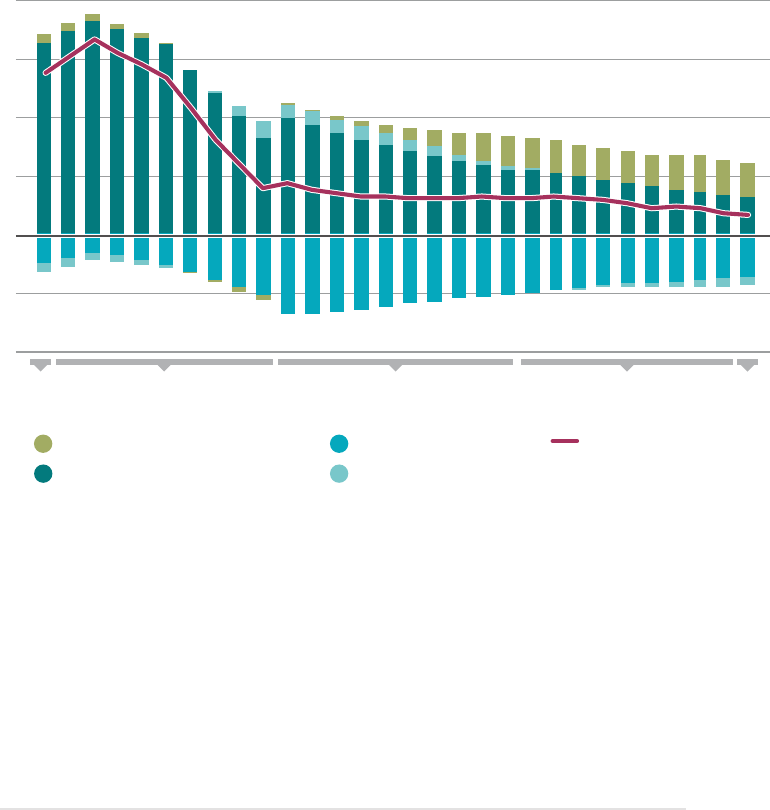
212
WORLD ENERGY
TRANSITIONS OUTLOOK
2021 2022-2030 2031-2040 2041-2049 2050
4
3
2
1
-1
-2
Dierence in GDP from PES (%)
Trade
Induced and indirect
Investment: transition-related
Investment: other
Dierence in GDP
0
FIGURE 5.2 GDP dierence between the 1.5°C Scenario and PES, with GDP drivers
Note: Transition-related investment includes the eects of changes in investments on transition-related categories
such as renewables for power generation and end uses, energy eciency, power grids and flexibility, electrification
and hydrogen and electric vehicle infrastructure. Government transition-related spending is also included here.
Other investment includes fossil fuel supply, crowding out and any endogenous responses in investment (for
example, to changes in prices of production). Trade includes net trade in fuels and any endogenous responses to
other trade (for instance, as a response to price and wage changes). Induced and indirect eects include the eects
of changes in taxes (income, value added tax) such as those due to oil rent losses, revenue recycling through
lump-sum payments, aggregate prices and other changes in consumer expenditure (including reallocations and
indirect eects).

213
Investment impacts on GDP
The investment driver, which includes both transition-related and “other” investments, has an
overall positive effect on GDP during most of the transition, particularly during the ongoing decade.
Transition-related investment covers any investment in renewable energy in the power sector and
in the end-use sectors, as well as investment in energy efficiency, in the grid and EV infrastructure,
energy flexibility and energy system integration (including hydrogen). This investment leads to
additional demand across economic sectors, such as the manufacturing of equipment, construction
and service sectors such as retail, business services or IT. The overall effect is positive and represents
the largest contribution to GDP. It should be noted that government spending to support the energy
transition significantly contributes to these improvements as it focuses on transition-related needs,
facilitates investments by the private sector and allocates expenditure to support a just and fair
transition. Governments’ involvement in the transition is underpinned by international co-operation
to ensure that the burdens and benefits of the transition can be more equitably shared.
Other investment includes that in fossil fuel supply, crowding out and any endogenous responses
(e.g., to changes in prices of output). The shift away from a fossil-fuel-based energy system in
the 1.5°C Scenario implies a sharp reduction of investment in fossil fuel supply compared with the
PES. The additional energy sector investment needs of the energy transition (USD[2019]33trillion
more in 1.5°C Scenario than in the PES in cumulative terms) will partially crowd out
10
investment
from other economic sectors that would have taken place under the PES, thereby contributing
to the negative impact on GDP.
Induced and indirect impacts on GDP
The overall impact of induced and indirect effects on GDP is positive. This impact includes: (1) the
positive contribution of increased consumer expenditure due to changes in general taxation (e.g.,
income and VAT), revenue recycling though lump-sum payments, reallocations and other indirect
effects; and (2) the negative impact of aggregate price effects and loss in government oil rents.
Revenue recycling through lump-sum payments (besides addressing the regressive impacts
of climate change and other transition policies) provides stimulus for consumption in the lower
segment of the income distribution. Also, increased government revenues from higher GDP allows
for reduced general taxation, thereby further inducing private consumption.
The resulting overall price levels put downward pressure on GDP throughout the period, especially
in this decade. Carbon prices, technology costs, fossil fuel subsidies, wage responses (affecting
labour costs) and the domestic response to changes in prices all play a role.
Losses from oil rents also have a negative impact as they may need to be compensated by
governments to maintain budgets and governmental services. At the global level, the negative
impact is relatively small but significant,
11
and higher between 2030 and 2050. The loss of value in
the oil and gas sector is attributable to both lower global oil prices in the 1.5°C Scenario and lower
extraction volumes.
CHAPTER 5
10 Crowding out investment at the level of industries and governments reflects that investment in the energy transition is
not fully additional. Some portion replaces investment that would have otherwise taken place under the PES scenario.
11 For countries with high dependence on fossil fuels the negative impact of lost oil rents is much higher, with a
stronger influence on GDP.

214
Trade impacts on GDP
Trade effects encompass changes in net trade in fuels and any endogenous responses to other
trade (for instance, as a response to price and wage changes). At the global level such effects are
relatively small, since their aggregate represents the balance between some countries/regions
having positive effects and others negative effects. At the country or regional level, however, trade
effects may have a significant impact.
Net fuel trade globally has a positive effect for much of the forecast period before nearing a zero
balance by 2050. Consumption of manufactured fuels is much lower in the 1.5°C Scenario than in
the PES throughout. Some countries lose revenues from fuel exports throughout the period to
2050, while others experience a strong reduction in fossil fuel imports, with its associated positive
effect on GDP. By 2050, the net trade balance in fuels becomes a negligible proportion of the
positive GDP impact. The impact of the 1.5°C Scenario on different countries’ prices introduces
changes both in the relative competitiveness and import/export dynamics of non-energy products,
which alters the non-fuel trade balance. Net changes in other trade are negative at the global level
throughout the considered time frame.
Changes in economic structure
Figure 5.3 shows the difference in output between the 1.5°C Scenario and PES for different economic
sectors, and thus gives an indication of how the overall economic structure is affected by the energy
transition. Most impacts are amplified over time, independent of the direction (i.e., as negative effects
become more negative and positive effects become more positive). The oil and gas and manufactured
fuels sector experiences the most negative impacts, with a difference in output between the 1.5°C
Scenario and PES that reaches USD (2019) -5.7 trillion by 2050. Manufacturing sectors gain over
time, mainly providing the equipment and technologies for the energy transition. Between 2030
and 2050 the difference in output between the 1.5°C Scenario and PES is about USD(2019)1.1trillion
per year. The agriculture sector (including forestry) benefits from the higher demand for biomass
and biofuel inputs under the 1.5°C Scenario, reaching a difference in annual output between the
1.5°C Scenario and PES of USD(2019)0.6trillion by 2050. The largest benefits accrue in the three
aggregated categories of services, where the total difference in output between the two scenarios
is USD(2019)3.3trillion by 2050. Compared to PES, the 1.5°C Scenario features more demand for
consulting, planning, financial, legal and administrative services, while higher consumption pathways
lead to additional demand for leisure activities and respective services.
WORLD ENERGY
TRANSITIONS OUTLOOK
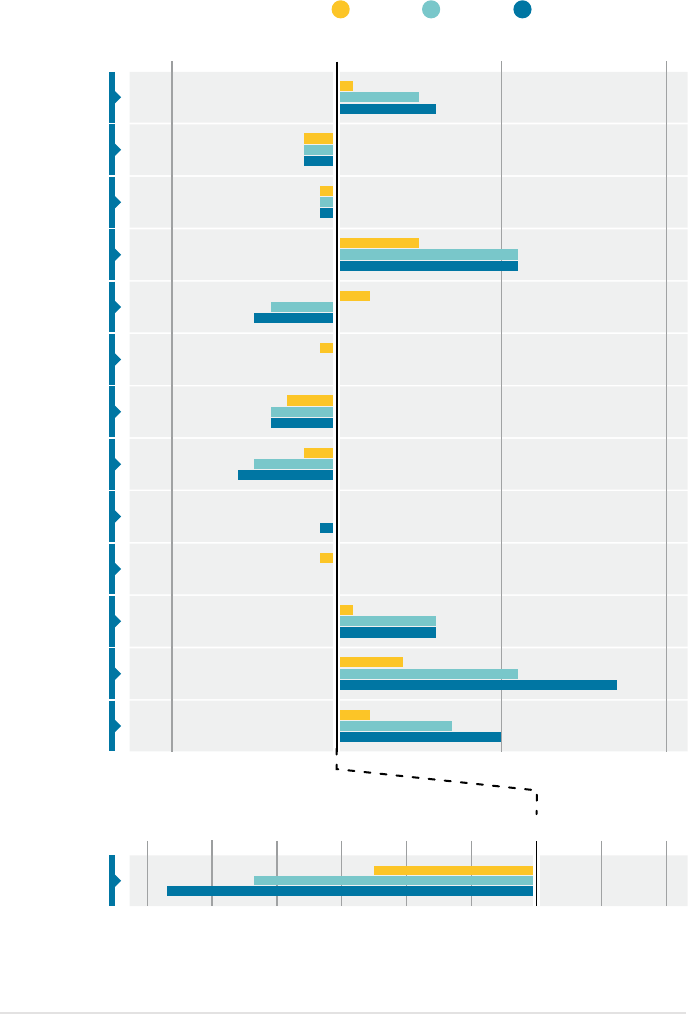
215
CHAPTER 5
FIGURE 5.3 Dierences in economic output between 1.5°C Scenario and PES,
by sector
Based on IRENA's analysis.
-6 -4 -2 2
2-1 10
0
Agriculture
2019 USD trillion
Coal
Other extraction industries
Basic manufacturing
Engineering and
transport equipment
Electricity supply
Other utilities
Construction
Distribution and retail
Transport
Hotels and catering;
Communications,
publishing and television
Business services
Public and
personal services
2030
2040 2050
2019 USD trillion
Oil, gas and
manufactured fuels

216
Impact of climate change on GDP
The GDP results presented above do not include the effects of climate change for either the PES or
the 1.5°C Scenario. However, climate change is already affecting economic activity, and will continue
to do so to varying degrees depending on the region and emission pathway.
IRENA started exploring the implications of climate damages on overall economic activity in the
Global Energy Transformation report (IRENA, 2019d), using a recently updated
12
methodology
13
that includes additional data on the impact of temperature changes on economic growth rates. The
resulting estimate can still be considered conservative, since some climate change effects are not
yet prominent or measurable, such as the intensification of extreme weather events (i.e., wildfires,
flooding and tropical storms), sea level rise, the crossing of climate tipping points, and resulting trade
disruptions, and the potential knock-on effects of complex political and social processes hastened
by the stresses of climate change (e.g., mass migration; IRENA, 2019d).
Climate change damages aggregate economic activity in both the 1.5°C Scenario and PES, but to a
differing degree according to cumulative CO
2
emissions during this century. Figure 5.4 outlines effects
on GDP in both scenarios,
14
compared with GDP results (presented above) under the assumption
of no climate damage effects. While both scenarios entail negative impacts, the significantly lower
cumulative emissions of the 1.5°C Scenario compared to the PES scenario imply less climate-related
damages, supporting the benefits of transitioning swiftly to a clean energy future. In 2050, the
difference in GDP between the two scenarios rises to 3.9% as compared with 0.3% when climate
damages are not factored in (Figure 5.4).
The results presented in this sub-section show how, globally, GDP responds positively to the
energy transition, with better performance in the 1.5°C Scenario than in the PES. Moreover, GDP
improvements are particularly high during the on-going decade as the global economy looks to
recover from the COVID-19 crisis. The positive impacts on GDP of the 1.5°C Pathway are further
amplified when climate damages are factored in due to lower cumulative emissions.
WORLD ENERGY
TRANSITIONS OUTLOOK
12 Based on work informed by an extended dataset at a sub-national level involving over 11 000 districts (Burke
and Tanutama, 2019).
13 The methodology is based on a statistical analysis to derive a non-linear damage function that maps temperature
changes to economic losses, as a function of the temperature level, providing geographical details of climate
damages (Burke, Davis and Dienbaugh, 2018; Burke, Hsiang and Miguel, 2015).
14 Climate damages unfold across dierent time scales. Some take decades to be felt but are already in the pipeline
once greenhouse gas emissions have been released to the atmosphere. This report focuses on the transition
period up to 2050, when the 1.5°C Scenario reaches net zero and hence has completed its cumulative emissions.
However, some of the climate damages associated to these cumulative emissions will unfold during the
2050-2100 period. The goals for global warming (like the 1.5°C Scenario) make reference to the increase in
global temperature by the end of the century.
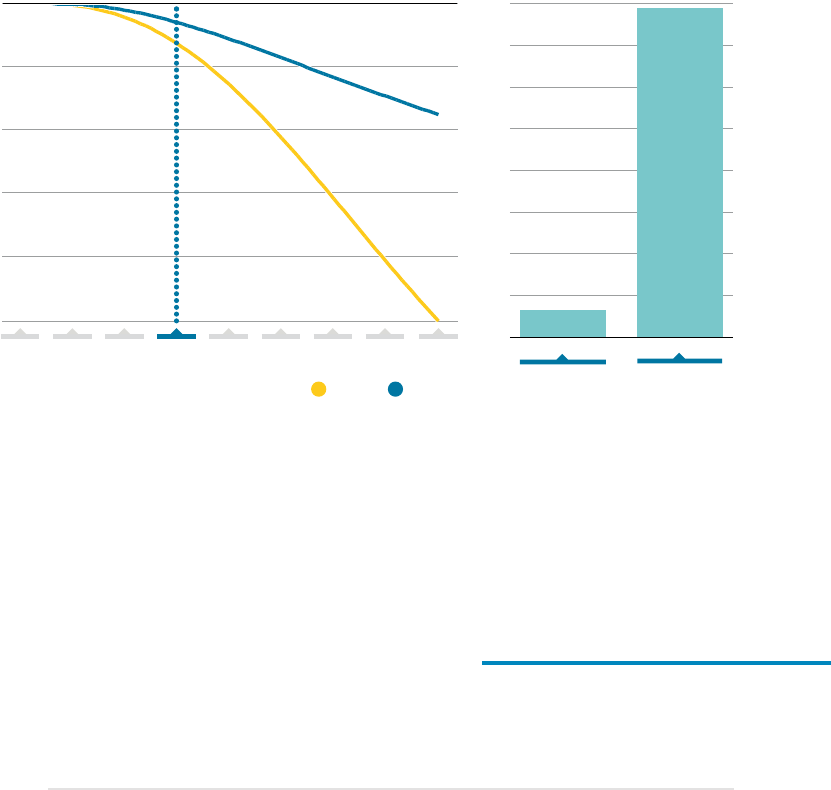
217
CHAPTER 5
FIGURE 5.4 Eects of climate damages on global GDP under the 1.5°C Scenario and PES, for
each scenario (left) and for the dierence between both scenarios (right)
Based on IRENA's analysis
Dierence in GDP between 1.5°C-S
and PES by 2050 in %
4.0
3.5
3.0
2.5
2.0
1.5
1.0
0.5
0
Relative dierence of GDP for each scenario
when climate damages are factored in
-50%
-40%
-30%
-20%
-10%
0
2020 2030 2040 2050 2060 2070 2080 2090 2100
PES 1.5°C-S
Without climate
damages
With climate
damages
1.5°C Scenario implies
lower impact of climate
damages on GDP.

218
5.2.2 Jobs in the energy transition
The employment dimension of the energy transition is particularly relevant as governments look to
increase economy-wide job creation and manage misalignments in labour markets across sectors
in transition. The analysis finds that the energy transition has net positive effects on job creation.
The investment stimulus associated with the 1.5°C Scenario helps generate an economy-wide gain
of jobs compared to the PES. The additional jobs peak around 2030 at 51million, and by 2050 still
run to 20million. In the energy sector itself, the 1.5°C Scenario sees the number of jobs peaking by
2030 at 137million jobs, or 26 million more than the PES. By 2050, the sector supports 122million
jobs under the 1.5°C Scenario, still surpassing the PES by 8 million jobs. The 43 million jobs in
renewable energy by 2050 under the 1.5°C Scenario will be almost double the number in the PES.
This section first presents impacts on economy-wide jobs, followed by those in the energy sector as a
whole and finally those most directly affected by the energy transition. The analysis provides insights
on the evolution of conventional and energy-transition-related jobs as well as on the structure of
renewable energy employment, its distribution across the value chain and the skills or occupational
requirements needed to support this shift in the labour market.
The impacts of the energy transition on economy-wide jobs
Additional economic activity leads to more jobs under the 1.5°C Scenario compared to the PES.
Figure 5.5 presents the evolution of the difference in economy-wide employment between the
scenarios over time, as well as its drivers. Jobs are not linearly related to increases in output, but
are influenced by increases in productivity, regional shifts in manufacturing and services, and wage
trends. Moreover, the labour market does not respond instantaneously to stimulus in economic
activity but progresses with sluggish responses, while increases in aggregate economic activity do
not all translate into additional jobs, since part of it is captured by increased wages. Employment
benefits peak before 2030, with a difference of 1.44% (51.3million jobs) over the PES. As the transition
progresses beyond 2030, these differences in employment over the PES gradually reduce until
they reach 0.55% (20.2million jobs) by 2050 (Table5.3).
WORLD ENERGY
TRANSITIONS OUTLOOK
The energy transition
has net positive effects
on job creation.

219
Investment effects on economy-wide jobs. Throughout the transition period, overall employment
is 0.9% higher on average in the 1.5°C Scenario than in the PES. One of the main positive impacts
on employment comes from investment in the energy transition (“investment: transition related” in
Figure 5.5), including grid enhancement, efficiency and, of course, renewable energy. Investment
shifting from fossil fuels (extraction and power generation) and other sectors towards the energy
transition (“investment: other” in Figure5.5) leads to less labour demand in fossil fuel activities and in
non-energy sectors and along their value chains. Overall, the net impact of investment on employment
is positive during the first decade and becomes negative thereafter. This is a consequence of reduced
investment in sectors with greater employment intensity.
Trade effects on economy-wide jobs. Trade effects on employment are negative during the
entire transition, being relatively small during the first two decades but increasing thereafter. This
is mainly driven by the change in trade in fossil fuels, but non-energy trade also contributes to
this negative result.
Induced and indirect effects on economy-wide jobs. Induced and indirect effects have a positive
impact on employment throughout the transition. Wage effects, consumer expenditure and dynamic
labour market responses all contribute to this positive impact on economy-wide employment,
which ultimately is the principal driver that tilts the balance towards positive employment impacts
throughout the transition.
CHAPTER 5
IMPROVEMENT IN THE 1.5°C
SCENARIO OVER PES
2021 2027 2030 2040 2050
Relative % 0.80 1.44 1.09 0.73 0.55
Absolute million jobs 28.3 51.3 39.3 27.0 20.2
TABLE 5.3 Improvement in jobs in the 1.5°C Scenario over the PES, both in relative
and absolute terms, global results
Based on IRENA's analysis.
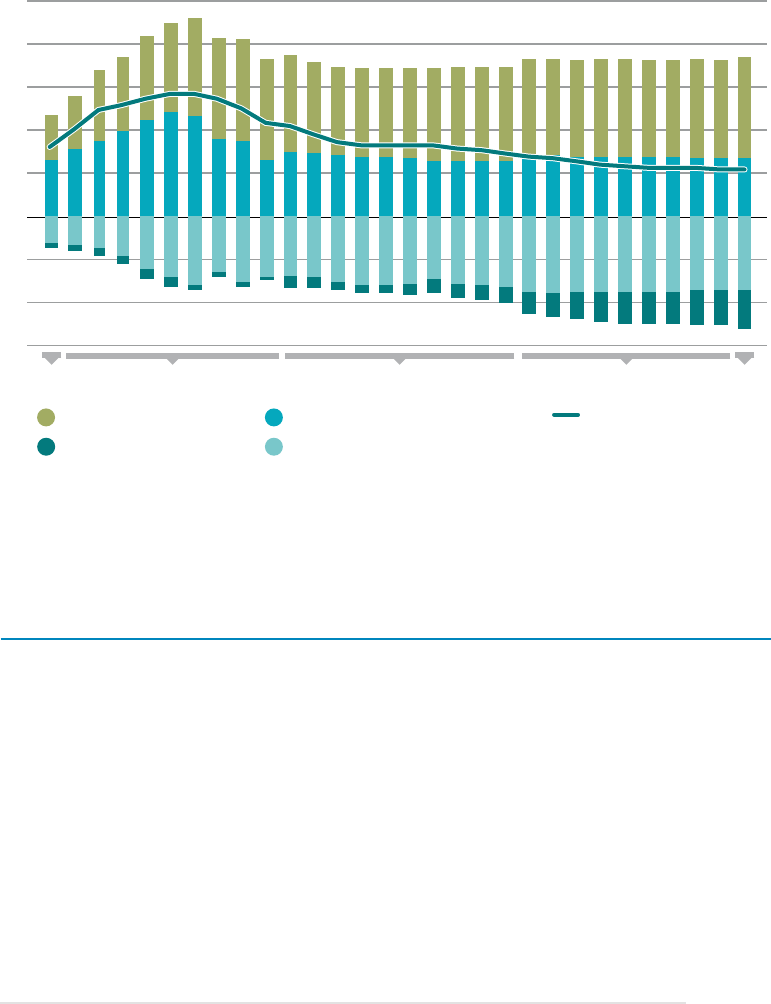
220
At the sectoral level, the notable shift away from mining and manufactured fuels towards services,
manufacturing and agriculture is shown in Figure5.6, which presents the difference in jobs between the
1.5°C Scenario and PES across different economic sectors for 2030, 2040 and 2050. Manufacturing sees
a boost in jobs required to deploy the infrastructure and equipment for the transition. The differential
is more than 13million jobs by 2030, and by 2050 still runs to more than 9million jobs. The agriculture
sector (the classification includes forestry) fares well especially during the first decades of the transition
(when more than 11million jobs are created by 2030 than under the PES), benefitting in particular from the
provision of biomass feedstock. Services are needed at each stage of renewable energy deployment, grid
stabilisation or increase in energy efficiency. Planning projects, licensing and carrying out audits, issuing
permits, supporting financing, conducting operation and maintenance (O&M) and decommissioning are
examples of these activities. Overall business services provide above 8 million jobs more than under the
PES by 2050. The enhanced aggregated economic activity also contributes to the increase in service
jobs, with public and personal services providing about 14 million jobs more than under the PES by 2050.
WORLD ENERGY
TRANSITIONS OUTLOOK
2021 2022-2030 2031-2040 2041-2049 2050
2.5
2.0
1.5
1.0
0.5
-0.5
-1.0
-1.5
Dierence in Employment from PES (%), by driver
0
Investment: other
Induced and indirect
Trade
Investment: transition-related
Dierence in employment
FIGURE 5.5 Employment dierence between the 1.5°C Scenario and PES, by driver
Note: Transition-related investment includes the eects of changes in investments on transition-related categories such as renewables
for power generation and end uses, energy eciency, power grids and flexibility, electrification and hydrogen and electric vehicle
infrastructure. Government transition-related spending is also included here. Other investment includes fossil fuel supply, crowding
out and any endogenous responses in investment (for example, to changes in prices of production). Trade includes net trade in fuels
and any endogenous responses to other trade (for instance, as a response to price and wage changes). Induced and indirect eects
include the eects of changes in taxes (income, value added tax) such as those due to oil rent losses, revenue recirculation through
lump-sum payments, aggregate prices and other changes in consumer expenditure (including reallocations and indirect eects).
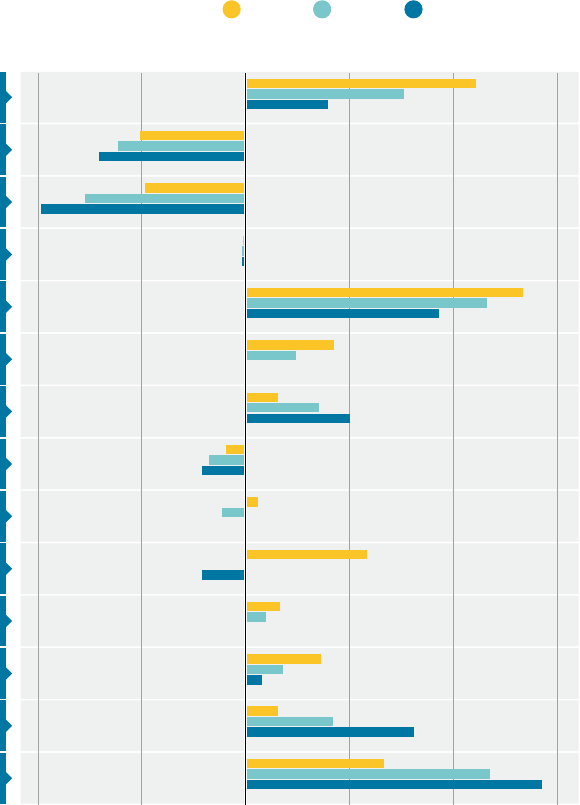
221
CHAPTER 5
FIGURE 5.6 Employment dierence by sector between the baseline and
1.5°C Scenario, thousand jobs
Based on IRENA's analysis.
15 00010 0005 000-5 000-10 000
Agriculture
World Employment,
thousand persons
Coal
Oil, gas and
manufactured fuels
Other extraction Industries
Basic manufacturing
Engineering and
transport equipment
Electricity supply
Other Utilities
Construction
Distribution and retail
Transport
Hotels and catering;
Communications,
publishing and television
Business services
Public and
personal services
2030 2040 2050
0

222
The energy transition offers significant employment opportunities. Leveraging existing skills and
qualifications helps to reap these benefits, and the scope for action is wide. The energy transition
requires equipment, materials and services across all economic sectors, in particular when including
the value chain in the analysis – i.e., those materials and activities required to produce wind turbines,
photovoltaic (PV) modules, insulation or DC cables needed for the transition. The distribution of
the potential positive effects differs between countries and regions depending on their economic
structure. Each must identify areas with the greatest potential for local value creation, and carefully
plan alignment with the energy transition requirements. Planning of a wind farm, for instance,
involves legal, energy regulation, real estate and taxation experts, financial analysts, logistics
experts, environmental experts, health and safety experts, geotechnical experts and engineers
(IRENA, 2017f). The transport equipment sector benefits from the need for cranes, buses to bring
workers or trucks to bring materials. Economy-wide jobs also include those in sectors not related
to the energy transition value chain, but where additional economic activity from higher incomes
triggers higher consumption.
However, if the success of the energy transition rides solely on the diverging capabilities of individual
countries across the world, unequal outcomes will likely follow. For more equitable results, transition
strategies could aim to support the evolution of countries’ economic structures aided by international
co-operation within a global collaborative framework.
Jobs in the energy sector
The energy sector presently contributes just above 7% of global output and accounts for about 1%
of all jobs. This includes, among others, all people working in coal mining, oil and gas extraction,
processing of fossil fuels as well as electricity generation, be it fossil or renewable, and O&M of
electricity grids. This sub-section first discusses jobs in the energy sector as a whole and then takes
a detailed look at the picture in the renewable energy sector.
Jobs in the overall energy sector
Fundamentally, the impact of the energy transition on energy employment is positive under both
scenarios, but more so in the period to 2030 than in the later decades, reflecting the front-loading
of investment and changes in labour intensity. Figure 5.7 gives an overview of employment in
the energy sector under the two scenarios, the PES and 1.5°C Scenario, in absolute values over
time. By 2030 the energy sector would have 137million jobs under the 1.5°C Scenario, as compared
with 111million under the PES. By 2050 this difference shrinks from 26million to 8million. In both
cases, the loss of fossil fuel jobs is lower than the increase in transition-related jobs.
Of the 137million energy sector jobs in the 1.5°C Scenario by 2030, 107million jobs (about 78%) are
transition related. Energy efficiency is an important pillar of employment, particularly in the first
decade, reaching above 45million jobs by 2030. Renewables contribute about 39million jobs. As
the transition progresses beyond 2030, the further decrease of fossil fuel jobs in the 1.5°C Scenario
is more than compensated by gains in renewables, power grids and flexibility, and hydrogen jobs.
WORLD ENERGY
TRANSITIONS OUTLOOK

223
It should be noted that following a 2030 peak, a subsequent reduction in energy efficiency jobs
brings the total number of energy sector jobs in the 1.5°C Scenario to 122 million by 2050. The
2030 peak has two main reasons: first, given the urgency to get on a more sustainable pathway,
the 1.5°C Scenario begins with high investment in the first decade; second, as costs come down
and technologies mature, the labour intensity decreases (i.e., labour input requirements per unit of
investment go down).
15
Qualifications, skills and occupations under the ambitious 1.5°C Scenario are
increasingly concentrated in manufacturing, followed by fuel supply (Figure 5.7).
CHAPTER 5
FIGURE 5.7 Energy sector jobs by technology (left) and segment of value chain
(right) under the PES and 1.5°C Scenario (million), global results
Note: 2021 estimates are obtained through a calibrated macroeconometric model based on investments
associated with the PES. It should be noted that the jobs reported here for the energy sector go beyond the
traditional categories (fossil fuels, electricity generation, bioenergy and nuclear) to include energy eciency,
energy flexibility, power grids, the hydrogen value chain and heat pumps.
Based on IRENA's analysis.
Hydrogen
Power grids and energy flexibility
Energy eciency and heat pumps
Renewables
Fossil fuels
Nuclear
Fuel supply
Operation and maintenance
Manufacturing
Construction and installation
2021 2030
PESPES 1.5-S
2050
PES 1.5-S
0
50
100
150
Jobs (million)
2021 2030
PESPES 1.5-S
2050
PES 1.5-S
0
50
100
150
Jobs (million)
15 The expected improvements in labour productivity dier from technology to technology, depending on both
the current degree of maturity and potential for benefiting from economies of scale.
Hydrogen
Power grids and energy flexibility
Energy eciency and heat pumps
Renewables
Fossil fuels
Nuclear
Fuel supply
Operation and maintenance
Manufacturing
Construction and installation
2021 2030
PESPES 1.5-S
2050
PES 1.5-S
0
50
100
150
Jobs (million)
2021
2030
PESPES 1.5-S
2050
PES 1.5-S
0
50
100
150
Jobs (million)

224
The employment implications of the energy transition reach beyond its direct effects on the energy
sector (presented in Figure5.7). For instance, the road transport sector will also experience a shift from
internal combustion engine vehicles to electric vehicles with important labour implications (Box5.4).
WORLD ENERGY
TRANSITIONS OUTLOOK
BOX 5.4 The energy transition’s implications for jobs in road transport
The energy transition has impacts on employment far beyond the energy sector (as presented
in Figure5.7). A case in point is road transport vehicles and the associated infrastructure. The
energy transition involves a shift from internal combustion engine vehicles to electric vehicles
(EVs) and fuel cell vehicles. This has deep implications for employment along all segments
of the value chains producing and maintaining related equipment, given that mechanical
components will be substituted by electrical ones and that the new vehicles have fewer parts.
Labour intensity may be significantly lower, and there will be changes in needed skills and
qualifications.
But this shift also has implications for infrastructure jobs, given the need to deploy, operate
and maintain an extensive EV-charging infrastructure. The learning rates of the new vehicle
technologies, the evolution of labour intensity and the room for behavioural change affecting
the number of vehicles on the roads will all influence the labour market structure associated
with this transition.
Figure5.8 presents the evolution of overall energy sector jobs including vehicles and vehicle
infrastructure requirements, complementing the values in Figure5.7. By adding overall jobs
across vehicle types (internal combustion engine, electric and fuel cell vehicles) and the jobs
linked to EV-charging infrastructure, the total number of energy sector jobs increases from 137
to 177million by 2030, an increase of 29%. From 2030 to 2050 the number of jobs in vehicles
decreases due to the shift from internal combustion to electric vehicles and improvements in
labour productivity.
The employment implications
of the energy transition reach
beyond its direct effects on the
energy sector.

225
Hydrogen jobs presented in Figure 5.7 include both electrolysers and hydrogen infrastructure.
In the 1.5°C Scenario they remain stable at around 2million jobs from 2030 to 2050, while in the
PES they decline because of decreasing investment after 2030. In relative terms they represent
a small share of all energy jobs, but the introduction of hydrogen in the energy system can have
ripple effects throughout supply chains (see Box5.5).
CHAPTER 5
2021 2030 2050
PESPES 1.5-S
0
50
100
150
200
Jobs (million)
PES 1.5-S
Vehicles and
charging
infrastructure
Hydrogen
Power grids and
energy flexibility
Energy eciency
and heat pumps
Renewables
Fossil fuels
Nuclear
FIGURE 5.8 Evolution of energy sector jobs by technology under the PES and 1.5°C Scenario,
including vehicles and associated recharging infrastructure
Based on IRENA's analysis.

226
Jobs in renewables
Looking specifically at the renewable energy segment of the energy sector, we find that the energy
transition leads to significant jobs growth by 2030 and 2050, with the 1.5°C Pathway having a
significant advantage over the PES.
In the PES renewable energy jobs increase slightly (9%) from 2021 values to reach 18million jobs by
2030. After 2030, under the PES the deployment of renewables intensifies with a delayed response
to the climate change challenge, resulting in 23million jobs by 2050. By contrast, the 1.5°C Scenario
leads to a much bigger gain, with jobs in renewables reaching 38million by 2030 (a 130% increase
from 2021 values). Thereafter, a reduced rate of deployment and increasing labour productivity
attenuate the growth of renewable energy jobs, which by 2050 reach 43 million (a 15% increase
from 2030 values). Comparing the two pathways, there are about 20 million additional jobs in
renewables under the 1.5°C Scenario by 2050 (see Table 5.4).
WORLD ENERGY
TRANSITIONS OUTLOOK
BOX 5.5 The hydrogen supply chain
By 2050, as pointed out in chapter 2, 30% of electricity use will be dedicated to produce green
hydrogen and its derivatives such as e-ammonia, e-methanol and synthetic kerosene, and almost
5 000 gigawatts of hydrogen electrolyser capacity will be needed, up from just 0.3 gigawatts
today. Such upscaling of the green hydrogen sector will lead to new supply chains, as seen
before with other renewable energy technologies. For example, pipelines will need to connect
hydrogen production points with the steel and chemical industry. Repurposing thousands of
kilometres of fossil gas pipelines or building new hydrogen-ready ones will need trained piping
system professionals. Hydrogen-related jobs linked to electrolysers and hydrogen infrastructure
are included in Figure 5.7.
The employment impacts of the introduction of hydrogen as an important vector in the energy
system has ripple effects in the supply chains of different economic sectors. The shipping
industry will need professionals to repurpose ships able to consume ammonia and to build ships
to transport liquid hydrogen (like the recently launched “Suiso Frontier”) or e-fuels worldwide
(IRENA, 2021i). The air transport industry and its supply chains will also be affected as engines
are required to work with increasing shares of hydrogen. Expected actions include introducing
fuel-cell-based airplanes, producing synthetic hydrogen-derived airplane fuels and managing
hydrogen-derived fuels in airports. Fuel cell vehicles and their supply chains will also provide
new job opportunities, in the manufacturing of equipment and its maintenance, as well as in
the supporting infrastructure. Hence, the total number of jobs linked to the introduction of
hydrogen in the energy system goes beyond those displayed in Figure 5.7.

227
For a deeper understanding of the job opportunities under both scenarios, detailed results for
renewable energy jobs by technology are shown in Figure5.9.
Of the 20million solar jobs shown in the figure for the 1.5°C Scenario by 2050, 77% are PV, 15% solar
water heaters (SWHs)
16
and 8% concentrating solar power. Solar PV is the single-largest source of
jobs in renewables in both scenarios, but reaching a more significant number in the 1.5°C Scenario
than under the PES. First, large investment sums go towards solar PV in that scenario, and second, it
has a relatively high labour intensity. Labour intensity varies depending on the region where capacity
is installed and the scale of the installation. Large-scale installations require less labour per megawatt
than off-grid, rooftop or any other small-scale installation.
Bioenergy comprising all forms of biomass is the second-largest contributor given its high labour
intensity for biofuels supply. It does not differ largely over time in the 1.5°C Scenario, due to the
sustainability boundary for biomass use. By 2050 bioenergy employs 6 million people in the PES and
14million people in the 1.5°C Scenario.
Wind turbine blades are labour intensive to manufacture, but other parts of turbines are less so.
Installation resembles the labour intensity of other large construction heavy-infrastructure works.
By 2030, the PES creates 2.5 million jobs in wind energy (a 27% increase from 2021), while the
1.5°C Scenario creates 5.6million jobs (a 182% increase from 2021). Thereafter, the PES maintains
similar growth rates in wind energy jobs until reaching 3.4 million jobs by 2050, while the 1.5°C
Scenario maintains a rather stable workforce in wind energy through these two decades. By 2050
the 1.5°C Scenario has 2.1million more wind energy jobs than the PES.
CHAPTER 5
2021 2030 2050
Renewable energy Absolute
million jobs
16.5 37.8 43.3
Difference with
the PES
million jobs
- 19.8 20.8
relative - 110% 92.6%
TABLE 5.4 Overall renewable energy jobs in the 1.5°C Scenario and dierences with
the PES, global results
Note: IRENA has been monitoring renewable energy jobs annually since 2011, which are used to calibrate the
macroeconometric model to the 2019 monitored jobs. Once calibrated, the model allows data gaps to be filled for
places and technologies where no employment data are available, providing a full picture of renewable energy
employment in the calibration year (2019). The calibrated model is used to provide a full picture of renewable energy
jobs for the dierent scenarios over time. The job numbers for 2021 are those forecasted under the PES.
16 SWHs include applications in industry and buildings.

228
Under the 1.5°C Scenario, jobs relating to SWHs are more prominent in the first decade than in
later decades. By 2030 the 1.5°C Scenario has 4.2 million jobs in SWHs; however, by 2050 they
decrease to 2.9 million, a consequence of increased electrification of end uses and decreasing
labour intensity in the SWH industry. On the other hand, the PES has a lower and stable number of
SWH jobs throughout the scenario (around 0.9million).
Hydropower is one of the oldest renewable energy sources and has grown much less in recent
years than other renewables such as wind and solar. Also, new hydro installations increasingly have
to be aligned with efforts to protect natural habitats and to minimise social impacts and conflicts
surrounding the use of water resources among different communities and countries that share
watersheds. Altogether, jobs in hydropower are expected to remain stable at around 3.5 million
across the transition.
WORLD ENERGY
TRANSITIONS OUTLOOK
2021 2030 2050
PESPES 1.5-S
0
10
20
30
50
40
Jobs (million)
PES 1.5-S
Tidal/Wave
Geothermal
Wind
Hydro
Solar
Bioenergy
FIGURE 5.9 Jobs in renewable energy, by technology, in the 1.5°C Scenario and
PES (million)
Note: IRENA has been monitoring renewable energy jobs annually since 2011, and resulting data are used to
calibrate the macroeconometric model. Once calibrated, the model allows gaps to be filled for places not covered
in the annual reviews. This provides a full picture of initial renewable energy employment and its forecasted
evolution.
Based on IRENA's analysis.

229
IRENA’s analysis of the different segments of the value chain of renewable energy technologies
provides further insights. Jobs in O&M, for instance, are long term and often very stable, increasing
in number gradually as capacities expand. Jobs in planning as well as in installation, however, require
a consistent, long-term pipeline of projects.
Figure5.10 presents the evolution of renewable energy jobs for both the PES and 1.5°C Scenario in
terms of value chain segments. Construction, installation and manufacturing boost renewable jobs
during the next decade in the 1.5°C Scenario, with O&M gaining relative weight as the transition
advances. Biofuel feedstock supply jobs also provide an important contribution to 1.5°C Scenario
jobs. By 2050, the 43 million jobs in renewable energy under the 1.5°C Scenario are distributed
across the value chain with 33% in construction and installation, 26% in biofuel supply, 21% in O&M
and 20% in manufacturing.
CHAPTER 5
2021 2030 2050
PESPES 1.5-S
10
20
30
50
40
Jobs (million)
PES
1.5-S
0
Biofuel supply
Operation and
maintenance
Manufacturing
Construction
and installation
FIGURE 5.10 Renewable energy jobs, by segment of value chain,
in the 1.5°C Scenario and PES
Based on IRENA's analysis.

230
Jobs by skill level and occupation
Skills matching is an important objective in leveraging the employment benefits from the energy
transition. The transition needs skills at all educational levels – primary, secondary and tertiary
(Box 5.6). The 1.5°C Scenario involves the following trends: a steady increase of jobs requiring
primary education, an initial contraction and later recovery of the number of jobs requiring a
secondary education and a sharp peak by 2030 in jobs requiring a tertiary education, which by 2050
decrease to lower numbers than today. Due to inertia in the dynamics of the education system,
insights into the future evolution of the labour force’s occupational patterns need to be carefully
considered to ensure that the appropriate skills are developed as discussed in Chapter 4.
WORLD ENERGY
TRANSITIONS OUTLOOK
BOX 5.6 Evolution of education levels necessary to support energy transition
The required skills by economic sector are presented to reflect three groups based on
aggregations of the ISCED 2011 classifications per education level:
17
the primary education
level comprises ISCED levels 0-2 (childhood, primary and lower secondary education); the
secondary education level includes ISCED levels 3-4 (upper secondary, post-secondary non-
tertiary education), such as vocational qualifications and specialisations; and the tertiary
education level comprises ISCED levels 5-8 (short-cycle tertiary education, bachelor’s,
master’s and doctoral levels). It should be noted however that the level of education and skills
are not necessarily correlated: high skills are required by some professional occupations linked
to the primary education level, and low skills are sometimes linked to professional occupations
associated to the tertiary education level.
Figure 5.11 shows the evolution of education levels necessary to support the energy sector in
the PES and 1.5°C Scenario. From 2021, when jobs requiring secondary education dominate
(42% of the 91million energy sector jobs), the first decade sees an increase in the shares of
jobs requiring tertiary and primary education. The increase in jobs requiring these education
levels is significantly higher in the 1.5°C Scenario than in the PES. In the 1.5°C Scenario, of
137 million energy sector jobs, 40% require tertiary education and 35% primary education
by 2030. This shift is driven by the deployment of new energy infrastructure and systems,
which mainly takes place in the first decade in the 1.5°C Scenario. On the other hand, by 2030
the number of jobs requiring secondary education declines from current values in both the
PES and 1.5°C Scenario. Beyond 2030, there is another significant shift in the structure of the
educational requirements needed to support the energy sector: a very sharp reduction in the
number of jobs requiring tertiary education, an increase in jobs requiring secondary education
and a continuing increase in jobs requiring primary education. In the 1.5°C Scenario, among
122million energy sector jobs, 13% require tertiary education, 37% secondary education and
50% primary education by 2050.
17 International Standard Classification of Education (ISCED): https://ec.europa.eu/eurostat/statistics-
explained/index.php?title=International_Standard_Classification_of_Education_(ISCED).

231
CHAPTER 5
2021 2030 2050
PESPES 1.5-S
30
60
90
150
120
Jobs (million)
PES
1.5-S
Tertiary
Secondary
Primary
0
FIGURE 5.11 Evolution of the distribution of jobs in the energy sector, by education level,
in the PES and 1.5°C Scenario
Based on IRENA's analysis.
Education requirements
will evolve through
the energy transition.

232
The trends in the educational requirements of the energy sector call for better co-ordination
between the sector and educational institutions. The 2030 boom in tertiary education requirements,
as discussed above, is likely to encourage people to continue to seek such qualifications even though
jobs requiring their educational profiles will materialise in lower numbers. An integrated approach
to labour and educational policy and planning will be needed to address this challenge, and also
to better integrate the educational requirements in the energy sector with those of other sectors.
Part of the answer will lie with efforts to better anticipate emerging trends that influence education
levels and specialisations. Another aspect concerns identifying transversal skills, i.e., skills that are
not exclusively related to a particular job or task but rather are applicable to a wide variety of work
settings and roles. For example, organisational or inter-personal skills fall under this category.
18
In addition to future educational requirements of the workforce needed to support the transition,
analysis of specific occupations is essential. To illustrate this point, Figure 5.12 provides insights
for a subset
19
of renewable technologies by 2050, showing the structure of the required jobs
by technology, segment of value chain and occupational requirements. Construction and
installation dominate the segments of the value chain accounting for 45% of the jobs. In terms
of occupational requirements, workers and technicians represent the largest share with 76%
of the total.
The results presented in this section show that the energy transition offers significantly more job
opportunities than those that are lost. Indeed, by 2030 when moving from the PES to the 1.5°C
Scenario 14million jobs are lost in fossil fuels, but 40 million jobs are gained in transition-related
technologies. By 2050 the difference between the PES and 1.5°C Scenario is a loss of 20 million jobs
in fossil fuels and a gain of 28 million jobs in transition-related technologies.
WORLD ENERGY
TRANSITIONS OUTLOOK
18 Ideally, this is done in such a way that people with different educational levels can more readily acquire the
skills needed for the occupations that society requires, while finding satisfaction in their professional life. This
requires increased flexibility in the way in which the links between education and work life are organised and
understood by society.
19 These technologies are PV, SWH, onshore wind, oshore wind and geothermal. The analysis draws from IRENA’s
work on leveraging local capacities (IRENA, forthcoming-c, 2018d, 2017e, 2017f). The skill structure for additional
technologies can be fleshed out as the leveraging analysis for those technologies becomes available.
Coordination between the energy
and educations sector is required
to fulfill future skills demand.

233
IRENA’s analysis offers insights into the types of jobs needed to support the transition by technology,
segment of the value chain and educational and occupational requirements. These are crucial
elements to inform the transition’s policy framework. But beyond that, policy needs to address
upfront the potential job misalignments (temporal, educational, geographic) that may arise. Job
opportunities due to the energy transition occur where installations of renewable energy systems
are located, where relevant technologies (and their inputs along the supply chain) are produced and
where related infrastructure is enhanced. Fossil fuel jobs are often located in other parts of a country
and workers may be reluctant to move or face barriers to do so. Skills and qualifications needed
for the energy transition are not readily available; even where they are, additional licensing is often
required. These misalignments need to be addressed by a policy framework as outlined in Chapter 4.
CHAPTER 5
Experts
Engineers and
higher degrees
Marketing and
administrative
personnel
Workers and
technicians
Manufacturing
Operations and
maintenance
Construction
and installation
Solar water
heater
Onshore
wind
Oshore
wind
Geothermal
Solar PV
Jobs by
technology
Segment of the
value chain
Occupational
pattern
Jobs (million)
0
5
10
15
20
25
FIGURE 5.12 Structure of jobs in the 1.5°C Scenario by 2050 for a subset of renewable technologies
by technology, segment of value chain and occupational requirements
Note: O&M = operation and maintenance; PV = photovoltaic; SWH = solar water heater.
Based on IRENA's analysis.

234
5.2.3 Energy Transition Welfare Index
This sub-section first presents IRENA’s Energy Transition Welfare Index and discusses the welfare
results for both the PES and 1.5°C Scenario.
Prosperity and people’s well-being have many aspects and dimensions. IRENA’s Energy Transition
Welfare Index captures five dimensions, namely, economic, social, environmental, distributional and
energy access (see Figure 5.13). Measuring the energy transition’s impact across these dimensions
provides a quantitative basis to inform transition roadmaps to reaping all the potential socio-
economic and environmental benefits. The Energy Transition Welfare Index allows a comparison
between scenarios both in overall terms and along each of the five different dimensions.
The Energy Transition Welfare Index and its dimensional indexes are defined in absolute and
normalised terms for each scenario, which allows for direct comparison between scenarios. However,
as for other socio-economic footprint results (GDP, employment), the relative performance of one
scenario against another (1.5°C Scenario relative to the PES) may also be of interest. This section
presents both absolute and relative welfare results.
WORLD ENERGY
TRANSITIONS OUTLOOK
20 IRENA’s Energy Transition Welfare Index includes five dimensions which provide an adequate balance between the
multi-dimensional characteristics of prosperity/well-being and synthesise requirements for useful insights. Each
dimension of IRENA’s Energy Transition Welfare Index includes two indicators. These indicators are combined into
a dimension’s index, and the dierent dimensional indexes are finally combined into the overall welfare index (see
Figure 5.13 and Annex 5.2) that allows an overall welfare rating of each transition roadmap. All indexes are normalised
so that they score between 0 and 1. The higher the value of an index, the greater its contribution to welfare. Indexes
are combined by using a modified geometric mean (see Annex 5.2 for methodology).
Environmental Distributional AccessEconomic Social
E
c
o
n
o
m
i
c
S
o
c
i
a
l
E
n
v
i
r
o
n
-
m
e
n
t
a
l
I
n
d
e
x
I
n
d
e
x
I
n
d
e
x
I
n
d
e
x
I
n
d
e
x
D
i
s
t
r
i
-
b
u
t
i
o
n
a
l
A
c
c
e
s
s
Welfare
Index
CO
2
emissions
Within
country/region
Social
expenditure
Health impact
(pollution)
Materials
consumption
Across
countries/regions
Suciency
Basic energy
access
Consumption
and investment
Dimensions
Indicators
Employment
FIGURE 5.13 Structure of IRENA’s Energy Transition Welfare Index

235
Welfare results for PES and 1.5°C Scenario: Global
There are two ways of presenting IRENA’s Energy Transition Welfare Index: a multi-dimensional
representation of welfare gains in its different dimensions, and a unidimensional representation that
groups together the contributions from each of the dimensions. For all indexes, values range from
zero (the worst possible outcome) to one (the best outcome).
Figures 5.14 and 5.15 present global results for the year 2050. Welfare improves over time in both
scenarios but is higher under the 1.5°C Scenario than under the PES. By 2030, the Energy Transition
Welfare Index value is 0.25 for the PES and 0.34 for the 1.5°C Scenario; by 2050, it is 0.40 and
0.44, respectively. The Difference between the 1.5°C Scenario and PES is mostly due to the
environmental, access and social dimensions, in decreasing order. The dimensions with the highest
index values are access (with full access to modern energy already reached by 2030 for the
1.5°C Scenario), economic and environmental, while the social and distributional dimensions have
low index values in both the PES and 1.5°C Scenario. See Annex 5.3 for data tables.
In both scenarios, the low values of the social and distributional dimensions drag the overall Energy
Transition Welfare Index down. These two dimensions have not received much attention in policy circles
to date, though awareness of the crucial role they can play as enablers or barriers is now increasing.
CHAPTER 5
11
0
0
0.5
0.5
1
1
0
0
0.5
0.5
0.44
0.270.27
0.160.16
0.610.61
1.001.00
0.660.66
0.220.22
0.160.16
0.470.47
0.930.93
0.650.65
Environmental
EconomicDistributional
Social
Access
Environmental
EconomicDistributional
Social
Access
0.400.40
1.5°C Scenario (1.5-S)Planned Energy Scenario (PES)
Welfare Index
FIGURE 5.14 Overall welfare (centre) and dimensional (blades) indices for the PES and
1.5°C Scenario by 2050, global results, multi-dimensional representation
Note: In the multi-dimensional representation of the Energy Transition Welfare Index that resembles a wind turbine rotor
(nacelle and blades), the nacelle documents the overall welfare index with a concentric circle. Each of the five rotor blades
represents one of the dimensional indices, indicating the respective index values.

236
Relative welfare results of 1.5°C Scenario and the PES
As was done for the other socio-economic indicators (GDP, employment), the relative welfare
index measures the difference between the 1.5°C Scenario and PES results. By 2050, the overall
welfare index improves by 11% with the environmental, social and access dimensions being the main
contributors to this improvement, as illustrated in Figure 16.
It is worth noting how the role of the social and access dimensions is reversed compared to the
absolute index values: The access dimension is the main contributor to the absolute welfare index
because it reaches very high dimensional index values (1 for 1.5°C Scenario). However, since its
improvement from the PES to 1.5°C Scenario is not very high
21
at the global level, in relative terms it
makes a modest contribution. Conversely, the social dimension makes a modest contribution to the
absolute welfare index, but in comparative terms between the two scenarios is the second-most
important after the environmental dimension (Figure 5.16).
WORLD ENERGY
TRANSITIONS OUTLOOK
FIGURE 5.15 Overall Energy Transition Welfare Index and dimensional contributions
of the PES and 1.5°C Scenario by 2050, global results, unidimensional
representation
Note: In the unidimensional representation of the Energy Transition Welfare Index, the total height of the stacked
bar represents the overall welfare index (the same value as shown in the nacelles of Figure 5.14), and each of the
segments represents the contribution to the total value from the dierent welfare dimensions.
Based on IRENA's analysis.
Environmental
Economic
Distributional
Social
Access
PES 1.5-S
0
0.1
0.2
0.3
0.4
0.5
Welfare Index
21 Under both the PES and 1.5°C Scenario, the energy suciency threshold is achieved at the global level.

237
Welfare results: By dimension
As explained earlier, each dimension of the Energy Transition Welfare Index is informed by two
indicators.
22
This section discusses how the respective indicators influence the dimensional index
during the transition.
Economic dimension
The economic index is very similar for both the PES and 1.5°C Scenario (0.65 and 0.66, respectively,
by 2050), reflecting the energy sector’s relatively small share of the overall economy and labour
force. Both indicators in this dimension contribute similarly to the dimension’s index (Figure 5.17),
with the energy transition leading to slight improvements in both consumption and investment and
in non-employment.
CHAPTER 5
FIGURE 5.16 Relative improvement of the Energy Transition Welfare Index
and its dimensional contributions by 2050, global results
Environmental
Economic
Distributional
Social
Access
-2
0
2
4
6
8
10
12
Dierence in welfare index between 1.5-S and PES (%)
Based on IRENA's analysis.
22 The distributional dimension includes four indicators, combined into two sub-indexes by taking the average of
the income and wealth components.

238
That said, the improvement between the PES and 1.5°C Scenario is more pronounced during
the first decade (reaching a 1% difference around 2025), mainly due to front-loaded investments
in the 1.5°C Scenario.
The economic index, for both the PES and 1.5°C Scenario, presents a minimum value shortly after
2030, resulting from the balance of two opposing trends: the consumption and investment index
steadily increases with aggregated economic activity (GDP) while the non-employment index
decreases with time, resulting from the balance of demographic and labour dynamics, including
productivity improvements.
23
WORLD ENERGY
TRANSITIONS OUTLOOK
FIGURE 5.17 Economic index under the 1.5°C Scenario and PES by 2050, by indicator,
global results
Non-employment
Consumption
and investment
Economic Index
0.8
0.7
0.6
0.5
0.4
0.3
0.2
0.1
0
PES 1.5-S
Based on IRENA's analysis.
23 It should be noted here that although the socio-economic modelling captures econometric labour productivity
improvements, it does not fully address current megatrends such as the disruptive impacts of artificial
intelligence and automation. Hence, the decrease of the non-employment index (increase of non-employment)
could be steeper than the analysis shows.

239
At the global level, per capita consumption and investment evolves from about USD (2019) 8 500 per
annum by 2021 to around USD (2019) 17 000 per annum by 2050, still far from the sufficiency limit
introduced in this indicator’s index (USD [2019] 45 000 per annum). Of course, country and regional
disparities in this indicator are substantial, as partly documented by the distributional dimension below.
Global non-employment
24
changes from around 17% by 2021 to 31% by 2050, for both the PES and
1.5°C Scenario. This growing non-employment, due to the demographic and labour dynamics, is
not a consequence of the transition, but of the context within which the transition is currently
progressing. It highlights the need to holistically address contextual elements that go well beyond
the technical aspects of the energy transition as noted in Chapter 4.
Social dimension
The social index improves with time in both the PES and 1.5°C Scenario. By 2050 it reaches a value
of 0.22 for the PES and 0.27 for the 1.5°C Scenario (a 23% improvement of the 1.5°C Scenario
over the PES) (Figure 5.18). However, these values are low even to 2050, indicating that there is
significant room for improving welfare outcomes by addressing the social dimension. The health
impact indicator dominates as outdoor and indoor air pollution improves, with the social expenditure
indicator providing a much smaller contribution. Hence, there is significant room to improve the
Energy Transition Welfare Index by increasing social spending.
IRENA’s 1.5°C Scenario leads to improvements in both social indicators. Health improvements are
a direct consequence of phasing out the combustion of fossil fuels and transitioning away from
traditional fuels for cooking. The policy basket implemented with the 1.5°C Scenario also addresses
the improvement of the social spending indicator through different channels, including increased
public participation by earmarking public fiscal resources to energy transition requirements through
both direct investment and subsidies, public spending for a just and equitable transition (including
international co-operation) and an increase in general social spending over the PES.
CHAPTER 5
24 Share of working age population (age group from 15 to 64 years) without paid employment and not belonging
to youth (14-24 age group) undertaking education.

240
Environmental dimension
The environmental index by 2050 is 0.47 for the PES and 0.61 for the 1.5°C Scenario (a 30%
improvement of the 1.5°C Scenario over the PES). Both indicators contribute significantly to the
environmental index in both the PES and 1.5°C Scenario, but the CO
2
emissions indicator is the one
that drives the improvement of the 1.5°C Scenario over the PES (Figure 5.19). The index deteriorates
over time as a consequence of the increase in materials consumption.
Both scenarios have similar values of the materials consumption indicator (per capita materials
consumption)
25
evolving from 5.7tonnes/person-year by 2021 to 7.5tonnes/person-year by 2050.
This reflects that the energy transition alone cannot resolve significant, parallel challenges, such as
bringing global material consumption down to sustainable levels – neither for materials used by the
energy industry, nor for materials used for non-energy value chain production.
WORLD ENERGY
TRANSITIONS OUTLOOK
FIGURE 5.18 Social index under the 1.5°C Scenario and PES by 2050, by indicator,
global results
Health impact
Social expenditure
Social Index
0.3
0.25
0.2
0.15
0.1
0.05
0
PES 1.5-S
Based on IRENA's analysis.
25 This makes reference to domestic material consumption excluding fossil fuels, and hence includes the aggregate
consumption of non-metallic minerals, metal ores and biomass. It should be noted that this aggregate measure of
materials consumption, although an adequate proxy for the sustainability implications of materials use, does not
provide the resolution needed to track the consumption of potentially scarce materials in relation to available resources.

241
Distributional dimension
The distributional dimension is increasingly recognised as key to enabling the energy transition.
IRENA has for the first time introduced this dimension in its welfare indicator, with the goal of
generating insights that contribute to fostering a just and inclusive energy transition. While GDP
grows and the implemented policy basket leads to an improved distribution, the index itself remains
low, indicating potential barriers to the energy transition from an equity point of view. The distribution
of benefits is not uniform across countries and income groups, implying the transition does not by
itself resolve income and wealth inequalities. Distributional results are presented here as a global
aggregate.
IRENA’s future work will further examine regional differences.
CHAPTER 5
FIGURE 5.19 Environmental index under the 1.5°C Scenario and PES by 2050,
by indicator, global results
Materials
consumption
CO
2
emissons
Environmental Index
0.8
0.7
0.6
0.5
0.4
0.3
0.2
0.1
0
PES
1.5-S
Based on IRENA's analysis.
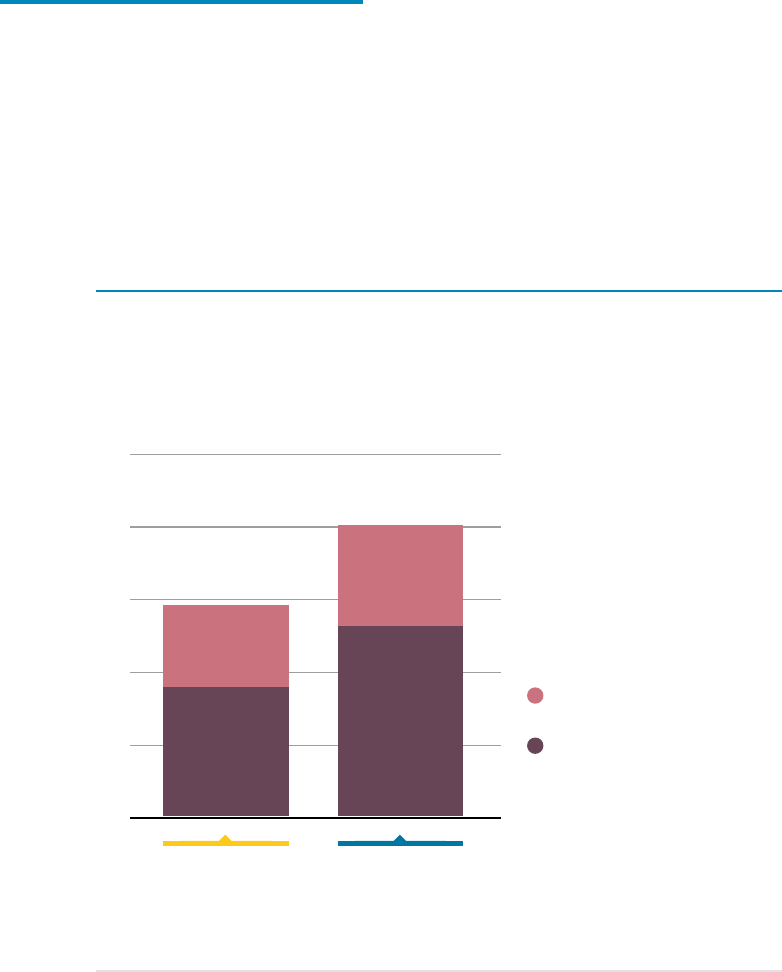
242
The distributional impact of the energy transition depends on the energy transition roadmaps and
the policy baskets used to implement them. Dedicated policies are, therefore, needed to address
distributional challenges. The climate policy basket implemented under the 1.5°C Scenario includes
progressive government revenue recycling through lump-sum payments, direct public involvement
in more equitable distribution of benefits from the transition, increased social expenditure,
differentiated carbon pricing that limits the direct burden on citizens and international collaboration
with a focus on justice and equity.
WORLD ENERGY
TRANSITIONS OUTLOOK
FIGURE 5.20 Distributional index under the 1.5°C Scenario and PES
Average 2021-2050, by indicator, global results
Inter-distributional
Intra-distributional
PES 1.5-S
0
0.03
0.06
0.09
0.12
0.15
Distributional Index
Based on IRENA's analysis.
Dedicated policies are
needed to address
distributional challenges.

243
The combination of the 1.5°C Scenario energy transition roadmap and the accompanying policy
framework brings about a 37% improvement in the average distributional index over the PES
during the transition period, with both the intra- and inter-distributional components contributing
(Figure 5.20). The 1.5°C Scenario produces an average improvement of 44% in the intra-distributional
sub-dimension
26
and 20% in the inter-distributional sub-dimension.
The inter-distributional indicator, which measures changes to inequalities between countries,
significantly improves over time, moving from an almost zero index by 2021 to reach about 0.16
by 2050, with both its wealth and income components improving over time (with wealth reaching
an index of about 0.14 and income of about 0.20). However, these values indicate that inequality
between countries is still very high by 2050.
27
There are many dynamics at play influencing the inter-distributional indicator, making it more
complex to explore than the aggregate impacts on economic activity (GDP). International
co-operation as included in the 1.5°C Scenario climate policy basket
28
significantly reduces inter-
inequality during the first years of the transition but its impact fades with time because of the
underlying aggregated economic growth.
29
Raising the sums mobilised through international
climate co-operation beyond the USD300billion/year assumed on average for the 1.5°C Scenario
could achieve greater distributional benefits.
CHAPTER 5
26 For the global results herewith presented, the intra-distributional component measures inequality in the
distribution of income and wealth across the global population (global citizens).
27 The corresponding indicator values, wealth quintile ratios (WQR) and income quintile ratios (IQR), are about
WQR = 35 and IQR = 16 by 2050.
28 In cumulative terms, the assumed international co-operation policies amount to a cumulative spending of
USD 8.6 trillion, representing an average of just below USD 300 billion/year. All countries contribute to these
funds as per their capabilities and responsibilities, and the funds are distributed as per the country’s human
development, fossil fuel vulnerability and equity in the distribution of the mitigation eort.
29 Note that the underlying aggregated economic activity (GDP) for the 1.5°C Scenario has a compound annual
growth rate of 3% between 2021 and 2050. Hence, the weight of the international co-operation monetary flows
relative to aggregated economic activity significantly reduces with time.
The 1.5°C Scenario has
positive distributional impacts
with targeted measures.

244
The transition process itself can, if not properly addressed with a focused policy framework, trigger
inequality increases in several ways. While the economic benefits of the transition are rather
distributed, its negative impacts associated to fossil fuel dependence and vulnerability are far more
concentrated. Further, a front-loaded transition investment meant to speed up mitigation while
addressing the recovery needs from the COVID-19 crisis may trigger inflationary and price effects
30
that could have a stronger impact in poor countries. Advanced economies, due to their structure,
diversity and international positioning, are able to reap more benefits from the energy transition
investment stimulus. Properly addressing these challenges and redirecting the transition so that
it improves the distributional dimension requires a holistic policy framework with a clear focus on
distributional issues.
The intra-distributional indicator presented here makes reference to the global population. The
intra-distribution index improves significantly over time, evolving from 0.01 in 2020 to 0.16 by 2050.
The lump-sum payments to recirculate government revenue surplus play a significant role in the
1.5°C Scenario over the PES improvement for this index, with the difference between both scenarios
reaching a maximum of about 100% around 2030. The two components from this index (income
and wealth) have very different contributions: the income component for the 1.5°C Scenario reaches
index values as high as 0.40 from 2030 onwards, while the PES barely reaches 0.30 towards the end
of the transition.
31
But it is the wealth component that drags the intra-distributional indicator down,
with extremely high wealth quintile ratios (WQRs) producing a zero value of the associated index.
Access dimension
A discussion of welfare under the energy transition would be incomplete without addressing the
energy access deficit faced by a significant proportion of the world’s population. Over 755million
people lived without electricity access in 2019 (IEA et al., 2021), and 3.5billion received unreliable
supply (Ayaburi et al., 2020). Further, 2.6billion relied on traditional fuels for cooking (IEA et al.,
2021). The lack of access to modern energy services significantly affects households’ access to
resources and income-generating opportunities and constrains economic and industrial activity.
Access to modern energy services is closely linked to access to essential public services such as
health care and education, and improves overall well-being and safety, particularly for women and
children. Energy equity and distributive justice – i.e., the right to affordable and accessible energy –
is increasingly recognised as a critical pillar of a just energy transition (Sovacool and Dworkin, 2015;
World Energy Council, 2020; Müller et al., 2020).
WORLD ENERGY
TRANSITIONS OUTLOOK
30 Inflationary eects may stem from the investment stimulus triggering an increase in general prices. Interest
rates could also increase if there is an increase in demand for loans to address the transition’s investment needs.
Energy prices could increase because of the costs of deploying the new generating and flexibility capacity and
infrastructure, with direct and indirect eects on general prices. From 2030 onwards, the 1.5°C Scenario inflationary
eects fade in many countries and there is a marked trend to reduce income inequality in both the PES and 1.5°C
Scenario. However, the 1.5°C Scenario reduction is slower because rich countries keep on being able to reap more
economic benefits from the transition than poor countries.
31 Income quintile ratios are still high at the end of the transition (IQR = 55), indicating room for further improvement
in this indicator.

245
Estimates suggest that by 2030 – the target year to reach universal modern energy access under
Sustainable Development Goal 7 – 660 million people will still be without electricity access and
2.3 billion will continue to rely on traditional fuels (Müller et al., 2020). Stepping up to the 1.5°C
Pathway must thus happen in tandem with efforts to scale up sustainable modern energy access.
Tackling inequalities in energy access and consumption also provides the foundation for a more
resilient and inclusive society by catalysing economies, creating jobs, strengthening livelihoods and
improving well-being for all.
The socio-economic impacts of gaining access to modern energy can be transformative in many
respects for communities and enterprises. Energy access has cross-cutting impacts across several
welfare dimensions discussed earlier in this chapter, namely economic (through higher incomes,
consumption and employment), social (through lower health impacts of traditional fuels) and
distributional. However, its effects across other dimensions are strongly diluted by scale effects.
For instance, the increase of consumption and investment brought about by energy access affects
the lower region of the income distribution, and hence will have a negligible impact on average
consumption and investment triggered by the energy transition.
Within the access dimension of the Energy Transition Welfare Index, the access itself counts (i.e., share
of the population with access) as well as its sufficiency over time (i.e., progression along the energy
ladder). The use of both indicators concurrently enables a discussion beyond the achievement of
universal access by 2030 (defined usually in binary terms) and addresses inequalities in consumption
across regions and accounts for opportunities to link energy access with income-generating services
that generate strong socio-economic dividends over the long term (see Box5.7).
Sufficiency is measured as per capita total final energy consumption to capture all energy needs
holistically. A limit is set based on distributional and convergence considerations, energy sufficiency
literature and energy efficiency (see Annex5.2 for detailed methodology). Once universal access
and sufficiency limits are reached, the dimension becomes neutral for the Energy Transition Welfare
Index with impacts now fully captured within other dimensions.
At the global level, by 2050, the access index is 0.93 for the PES and 1 for the 1.5°C Scenario
(a 7% improvement of the 1.5°C Scenario over the PES) (Figure5.21). This improvement is driven
by the basic energy access indicator, whose index is 0.87 for the PES and 1 for the 1.5°C Scenario
(a 14.6% improvement of the 1.5°C Scenario over the PES).
32
The energy sufficiency indicator is,
at a global level, 1 for both the 1.5°C Scenario and PES along the scenarios’ time span.
CHAPTER 5
Tackling inequalities in energy access and
consumption advances a more resilient society.
32 The 1.5°C Scenario reaches full basic energy access by 2030, in line with the Sustainable Development Goals. By 2030
the improvement of the 1.5°C Scenario over the PES in the basic energy access index is 36.1%, and in the overall access
index 16.6%. From 2030 onwards the dierence between the 1.5°C Scenario and PES diminishes with time since the
1.5°C Scenario has already reached full access and the PES is still progressing in the basic access dimension.

246
At a global level, both the 1.5°C Scenario and PES are above the sufficiency level of per capita total
final energy consumption (20 kilowatt hour per day, kWh/p-d). Hence, both scenarios reach the
highest possible value for the sub-index of energy access sufficiency. However, global averages
hide large country and regional inequalities in terms of total final energy consumption, with some
countries reaching per capita consumption levels nearly ten times higher than the sufficiency level.
WORLD ENERGY
TRANSITIONS OUTLOOK
FIGURE 5.21 Contributions to two access index indicators under the 1.5°C Scenario
and PES by 2050, global results
Energy suciency
Basic access
Energy Access Index
PES
1.5-S
0
0.2
0.4
0.6
0.8
1.0
Based on IRENA's analysis.

User and
livelihood
needs
Financing
solutions
Technology
innovation
Training &
capacity
building
Policy
Channels/
linkages
• Access to finance
•
Cost of capital
•
Ownership models
• Ecient technology
•
Cater to specific needs
•
Last mile supply chain
• Cross-sector assessments
•
Dedicated policies
•
De-risking tools
• Awareness of solutions
•
Training
•
Knowledge transfer
•
Access to new or existing
markets to sell products
•
Stable input sources
•
Access to information
PartnershipPartnership GenderGender KnowledgeKnowledge
247
CHAPTER 5
BOX 5.7 Linking energy supply with livelihood services
Traditional approaches to energy access have focused on achieving a certain number of connections or
deploying a given number of systems. The need to encourage productive end uses and to link them with
livelihoods is often an afterthought. An alternative approach is to identify energy needs that, if met, are likely
to transform people’s livelihoods across sectors by increasing productivity and incomes, enhancing value
creation and access to markets, reducing drudgery and offering a pathway towards long-term social security.
Decentralised renewable energy solutions are particularly well equipped to provide tailored energy services
for livelihood activities across sectors. There are critical differences between an approach that is technology
centric (i.e., it aims to accelerate the deployment of specific solutions such as mini-grids and solar home
systems) and one that is end-user/livelihood centric (defines technology solutions based on identified energy
needs across value chains). The ecosystem for livelihoods assumes additional dimensions (market linkages,
sector-specific skills upgrades, couplings of energy technology with efficient livelihood equipment), which in
turn maximise the value of improved energy access (Figure 5.22).
FIGURE 5.22 Ecosystem needs for supporting livelihoods with distributed renewable energy
solutions
Source: SELCO Foundation and IRENA

CONCLUSION5.3
WORLD ENERGY
TRANSITIONS OUTLOOK
248
The analysis of global socio-economic impacts presented in this chapter indicates that
the world will be better off – in multiple dimensions – if societies take the 1.5°C Scenario
route. Spurred by investments across the many avenues of the energy transition, global
GDP will receive a boost of an average of 1.2% to 2050 over PES. Even in the case of
negative impact on GDP due to climate damages, the 1.5°C Scenario is a compelling
option as the counterfactual would be much worse. Throughout the transition period,
economy-wide employment is 0.9% higher on average in the 1.5°C Scenario compared
to PES. The energy sector will have at least 122 million jobs in 2050, with renewable
energy jobs rising from more than 11.5million today to 43million in 2050. Meanwhile,
all welfare dimensions analysed – economic, social, environmental, distributional and
access – fare better under the 1.5°C Scenario, offering a 11% improvement in the overall
Energy Transition Welfare Index over the PES.

249
Socio-economic impacts may vary at the regional or country level compared to the global
results presented here. Future IRENA work will document the socio-economic footprint of the
1.5°C Scenario at the regional and country level. The socio-economic footprint analysis highlights
how energy transition roadmaps are closely linked with the holistic policy framework, with links
becoming stronger as ambitions align with the 1.5°C Pathway. Still navigating the COVID-19
pandemic and with increasing climate change impacts already being felt all over the world,
the current situation calls for a holistic analysis that explores transition roadmaps and policy
frameworks on an integrated and equal basis. In this report IRENA has advanced such analyses
by closely integrating the policy dimension in the macroeconometric modelling with a focus on
addressing social challenges.

A WAY FORWARD
Less than a decade is left to achieve the 2030 Agenda for Sustainable Development and secure
a fighting chance for a 1.5-degree world. The stakes cannot be higher, and how the energy
system evolves in the coming years will define our shared future. IRENA's World Energy
Transitions Outlook provides a realistic pathway that can make a difference in the limited
time available. It draws on the existing technology solutions to rapidly progress and offers
transparent choices for a different energy future.

251
A WAY FORWARD
The Outlook emphasises that investment in a comprehensive transformation involves not just a mix
of technologies but also investment in the policy package to put them in place and optimise their
economic and social impact. It clearly shows that a 1.5-degree world requires wide-reaching action
across multiple dimensions to maximise benefits and carefully manage adverse effects. But it also
indicates that a renewables-based energy transition can be a powerful equaliser in the world where
disparities and gaps between communities, nations and regions continue to widen.
While ambitious climate and energy targets continue to be set, many are yet to be translated into
effective policy and regulatory frameworks. Renewable technologies have yet to make sufficient
inroads into the end-use sectors, such as direct heat, buildings and transport. And countries
are grappling with multiple priorities, many of which cannot be solved in isolation. The need for
international cooperation is evident as the world looks for solutions to meet energy and economic
demands, rectify systemic inequalities, and reverse the climate change trends.
The technology avenues, investments and policies proposed in this Outlook can take us closer to
where we need to be. There will be innovations, developments, and breakthroughs on the way, but
we must not wait. Because we have no time to lose.

252
WORLD ENERGY
TRANSITIONS OUTLOOK
References
Ambrose, J. (2019), “World’s biggest sovereign wealth fund to ditch fossil fuels”, 12 June, The
Guardian, www.theguardian.com/business/2019/jun/12/worlds-biggest-sovereign-wealth-fund-
to-ditch-fossil-fuels.
Andersson, J. and G. Atkinson (2020), “The distributional effects of a carbon tax: The role of
income inequality”, Centre for Climate Change Economics and Policy, Working Paper 378, and
Grantham Research Institute on Climate Change and the Environment, Working Paper 349, London
School of Economics and Political Science, London.
Appunn, K. (2021), “Three more German coal power plants to go offline in December 2021”, www.
cleanenergywire.org/news/three-more-german-coal-power-plants-go-offline-december-2021#
:~:text=Two%20German%20hard%20coal%20power,the%20second%20round%20of%20auctions.
Ashden (2021), “Ashden awards longlist highlights global climate solutions”, https://ashden.org/
news/ashden-awards-longlists-highlight-global-climate-solutions/.
Ayaburi, J., M. Bazilian, J. Kincer and T. Moss (2020), “Measuring ‘reasonably reliable’ access
to electricity services”, The Electricity Journal, Vol. 33, no. 7, 106828, https://doi.org/10.1016/j.
tej.2020.106828.
Beck, M.R., N. Rivers, R. Wigle, H. Yonezawa, (2015), “Carbon tax and revenue recycling: Impacts
on households in British Columbia”, Resource and Energy Economics, Vol. 41, pp. 40–69.
Bellini, E. (2020), “Portugal’s second PV auction draws world record low bid of $0.0132/kWh”,
PV Magazine, 24 August, www.pv-magazine.com/2020/08/24/portugals-second-pv-auction-
draws-world-record-low-bid-of-0-0132-kwh/ (accessed 26 June 2021).
Beyond Coal (2021), “Coal exit tracker”, https://beyond-coal.eu/coal-exit-tracker/
(accessed 26 June 2021).
BNEF (2021a), Energy Transition Investment Trends, Bloomberg New Energy Finance, London.
BNEF (2021b), Corporate clean energy buying grew 18% in 2020, despite mountain of adversity,
https://about.bnef.com/blog/corporate-clean-energy-buying-grew-18-in-2020-despite-mountain-
of-adversity/ (accessed 26 June 2021).
BP (2018), “Energy Outlook: 2020 edition”, BP – British Petroleum, www.bp.com/content/dam/
bp/business-sites/en/global/corporate/pdfs/energy-economics/energy-outlook/bp-energy-
outlook-2020.pdf.
Brookings (2021), “The case for US cooperation with India on a just transition away from coal”, www.
brookings.edu/research/the-case-for-us-cooperation-with-india-on-a-just-transition-away-from-coal/.
Bundesnetzagentur (German Federal Network Agency) (2021), “Power plant list
of the Federal Network Agency – as of January 19, 2021”, www.bundesnetzagentur.
de/SharedDocs/Downloads/DE/Sachgebiete/Energie/Unternehmen_Institutionen/
Versorgungssicherheit/Erzeugungskapazitaeten/Kraftwerksliste/Kraftwerksliste_2021_1.
html;jsessionid=B825E015134CF318D6E1B2B956C7A9EF?nn=320094.
Burke, M. and V. Tanutama (2019), “Climatic constraints on aggregate economic output”, Working
paper no. 25779, National Bureau of Economic Research, Cambridge, www.nber.org/papers/w25779.
Burke, M., S.M. Hsiang and E. Miguel (2015), “Global non-linear effect of temperature on
economic production”, Nature, Vol. 527, pp. 235–239.
Burke M., W.M. Davis and N.S. Diffenbaugh (2018), “Large potential reduction in economic
damages under UN mitigation targets”, Nature, Vol. 557, pp. 549–553.
Business Day (2020), “Denmark gets nearly 50% of its electricity from wind power”, Business Day,
2 January 2020, www.businesslive.co.za/bd/world/europe/2020-01-02-denmark-gets-nearly-50-
of-its-electricity-from-wind-power/ (accessed 26 June 2021).
CAN (2020), “Energy transition in the Western Balkans: 2020 missed opportunities”, Climate Action
Network, https://caneurope.org/energy-transition-western-balkans-2020-missed-opportunities/.

253
REFERENCES
Canada’s Ecofiscal Commission (2016), Choose Wisely: Options and Trade-Offs in Recycling
Carbon Pricing Revenues, Canada’s Ecofiscal Commission, Montreal, https://ecofiscal.ca/wp-
content/uploads/2016/04/Ecofiscal-Commission-Choose-Wisely-Carbon-Pricing-Revenue-
Recycling-Report-April-2016.pdf.
CBI (2020), Sustainable debt: Global state of the market 2020, Climate Bonds Initiative, London,
www.climatebonds.net/resources/reports/sustainable-debt-global-state-market-2020.
CBI (2019), Green bonds: The state of the market 2018, Climate Bonds Initiative, London,
www.climatebonds.net/resources/reports/green-bonds-state-market-2018.
Ceres (2020), “New York State Common Retirement Fund becomes first US pension fund to
commit to net-zero by 2040”, 9 December, Ceres, Boston, www.ceres.org/news-center/press-
releases/new-york-state-common-retirement-fund-becomes-first-us-pension-fund.
CFLI (2019), Financing the low-carbon future: A private-sector view on mobilizing climate finance,
Climate Finance Leadership Initiative, www.assets.bbhub.io/company/sites/55/2019/09/Financing-
the-Low-Carbon-Future_CFLI-Full-Report_September-2019.pdf.
Climatescope (2016), Nepal Renewable Energy Subsidy Policy, 2073 BS, Climatescope, https://
aepc.gov.np/uploads/docs/2018-06-19_RE%20Subsidy%20Policy,%202073%20(English).pdf
CPR (2021), “Managing a fair transition away from coal in India”, Centre for Policy Research,
New Delhi, www.cprindia.org/managing-fair-transition-away-coal-india.
Deutsche Umwelthilfe (2021), Strengthening circularity in photovoltaics: Challenges and opportunities
along the lifecycle, www.duh.de/fileadmin/user_upload/download/Pressemitteilungen/
Kreislaufwirtschaft/210310_White_Paper_Strengthening_Circularity_in_Photovoltaics_ENG_FINAL.pdf.
DNV GL (2020), “Energy transition outlook 2020: A global and regional forecast to 2050”,
https://eto.dnv.com/2020#ETO2019-top (accessed 26 June 2021).
Dunbar, M. (2013), Engaging the Private Sector in Skills Development, Health & Education Advice
and Resource Team (HEART), Oxford Policy Management, Oxford, https://assets.publishing.
service.gov.uk/government/uploads/system/uploads/attachment_data/file/213937/engaging-
private-sector-skills-development.pdf.
EAFO (2021), “Norway”, European Alternative Fuels Observatory, www.eafo.eu/countries/
norway/1747/incentives.
ECIU (2021), “Net zero tracker”, Energy & Climate Intelligence Unit, https://eciu.net/netzerotracker
(accessed 26 June 2021).
ECREEE (2015), ECOWAS Renewable Energy Policy, ECOWAS (Economic Community of West
African States) Centre for Renewable Energy and Energy Efficiency, Praia, www.ecreee.org/sites/
default/files/documents/ecowas_renewable_energy_policy.pdf.
EECA (2021), “Funding for heaters and insulation”, Energy Efficiency & Conservation Authority, www.
eeca.govt.nz/our-work/programmes-and-funding/efficient-homes/funding-for-heaters-and-insulation/.
EIB (2017), CAB Newsletter 10th anniversary, European Investment Bank, Luxembourg, www.eib.
org/en/investor_relations/documents/eib-cab-10-years-newsletter.htm# (accessed 26 June 2021).
Energy Poverty Observatory (2020), “Inability to keep home adequately warm”,
www.energypoverty.eu/indicator?primaryId=1461.
Environmental Finance (2020), “Environmental finance bond database”, www.bonddata.org/
(subscription required).
EurObserv’ER (2020), “Policy and statistic reports: France”, www.eurobserv-er.org/eurobserver-
policy-files-for-all-eu-28-member-states/.
European Commission (2021a), “EU taxonomy for sustainable activities”, European Commission,
www.ec.europa.eu/info/business-economy-euro/banking-and-finance/sustainable-finance/eu-
taxonomy-sustainable-activities_en.
European Commission (2021b), “Renovation wave”, https://ec.europa.eu/energy/topics/energy-
efficiency/energy-efficient-buildings/renovation-wave_en.

254
WORLD ENERGY
TRANSITIONS OUTLOOK
European Commission (2020a), “A renovation wave for Europe – Greening our buildings, creating
jobs, improving lives”, EUR-Lex, COM(2020) 662 final, https://eur-lex.europa.eu/legal-content/EN/
TXT/?qid=1603122220757&uri=CELEX:52020DC0662.
European Commission (2020b), “State aid: Commission approves competitive tender mechanism
to compensate for early closure of hard coal-fired power plants in Germany”, https://ec.europa.eu/
commission/presscorner/detail/en/IP_20_2208.
European Commission (2018), Impacts of circular economy policies on the labour market – Final
report and Annexes, Cambridge Econometrics, Directorate-General for Environment, ICF and
Trinomics, https://op.europa.eu/en/publication-detail/-/publication/fc373862-704d-11e8-9483-
01aa75ed71a1/language-en.
Equinor (2020), Energy perspectives 2020: Long-term macro and market outlook,
www.equinor.com/en/sustainability/energy-perspectives/EP-2020.html.
Faaij (2018), Securing sustainable resource availability of biomass for energy applications in
Europe; review of recent literature, University of Groningen, Groningen.
FBI (2020), Virtual Power Plant Market Size, Fortune Business Insights, Pune.
Frankfurt School–UNEP Centre and BNEF (2020), Global trends in renewable energy investment
2020, Frankfurt School-United Nations Environment Programme Centre and Bloomberg New
Energy Finance BNEF.
Gesley, J. (2020), “Germany: Law on phasing-out coal-powered energy by 2038 enters into force”,
www.loc.gov/law/foreign-news/article/germany-law-on-phasing-out-coal-powered-energy-by-
2038-enters-into-force/.
Greenpeace (2015), Energy [r]evolution: A Sustainable World Energy Outlook 2015, Greenpeace
international. www.duesseldorf.greenpeace.de/sites/www.duesseldorf.greenpeace.de/files/
greenpeace_energy-revolution_erneuerbare_2050_20150921.pdf.
Government of the Netherlands (2021), “Government stimulates geothermal heat”,
www.government.nl/topics/renewable-energy/government-stimulates-geothermal-heat.
Government of United Kingdom (2019), “Green Finance Strategy: Transforming Finance for a
Greener Future”, Crown Publishing, London, www.assets.publishing.service.gov.uk/government/
uploads/system/uploads/attachment_data/file/820284/190716_BEIS_Green_Finance_Strategy_
Accessible_Final.pdf.
HYBRIT (2021), “Research project 1”, Hybrit, LKAB-SSAB-Vattenfall, www.hybritdevelopment.se/
en/research-project-1/.
ICEF (2018), “Direct Air Capture of Carbon Dioxide – ICEF Roadmap 2018”, ICEF – Innovation for
Cool Earth Forum, Tokyo, December, www.icef-forum.org/pdf/2018/roadmap/ICEF2018_DAC_
Roadmap_20181210.pdf.
IEA (2021a), “Global energy review: CO
2
emissions in 2020: Understanding the impacts of Covid-19
on global CO
2
emissions”, International Energy Agency, Paris, www.iea.org/articles/global-energy-
review-co2-emissions-in-2020.
IEA, (2021b), "Net Zero by 2050: A Roadmap for the Global Energy Sector", IEA, Paris.
IEA (2020a), World Energy Investment 2020, IEA, Paris.
IEA (2020b), Global Energy Review 2020, IEA, Paris.
IEA (2020c), “Energy Technology Perspectives 2020 - Special Report on Carbon Capture,
Utilisation and Storage”, IEA, Paris, September, https://iea.blob.core.windows.net/
assets/181b48b4-323f-454d-96fb-0bb1889d96a9/CCUS_in_clean_energy_transitions.pdf.
IEA (2018), Renewable Heat Policies, IEA, Paris.
IEA, IRENA, UN, WBG and WHO (2021), Tracking SDG7: The Energy Progress Report 2021,
IEA, International Renewable Energy Agency, United Nations, World Bank Group, World Health
Organisation, World Bank, Washington, D.C.

255
REFERENCES
IEEFA (2020a), “Dutch asset manager Robeco to divest thermal coal, oil sands holdings by year’s
end”, 25 September, Institute for Energy Economics and Financial Analysis, www.ieefa.org/dutch-
asset-manager-robeco-to-divest-thermal-coal-oil-sands-holdings-by-years-end/.
IEEFA (2020b), “U.K.’s biggest pension fund to divest from fossil fuels”, 29 July, IEEFA,
www.ieefa.org/u-k-s-biggest-pension-fund-to-divest-from-fossil-fuels/#:~:text=The%20
Guardian%3A,landmark%20move%20for%20the%20industry.
ILO (n.d.-a), “Decent work”, International Labour Organization, Genève www.ilo.org/global/topics/
decent-work/lang--en/index.htm.
ILO (n.d.-b), “Disability and work”, ILO, Genève, www.ilo.org/global/topics/disability-and-work/
lang--en/index.htm.
IMO (2015), Third IMO greenhouse gas study 2014, International Maritime Organization, London,
Inês, C. et al. (2020), “Regulatory challenges and opportunities for collective renewable energy
prosumers in the EU”, Energy Policy, Vol. 138, 111212, https://doi.org/10.1016/j.enpol.2019.111212.
IPCC (2018), Global Warming of 1.5°C: An IPCC Special Report on the Impacts of Global Warming
of 1.5°C above Pre-Industrial Levels and Related Global Greenhouse Gas Emission Pathways, in the
Context of Strengthening the Global Response to the Threat of Climate Change, Intergovernmental
Panel on Climate Change, Geneva.
IRENA (forthcoming-a), Renewable Energy Targets: A Guide to Design, International Renewable
Energy Agency, Abu Dhabi.
IRENA (forthcoming-b), Sustainable Bioenergy: A Guide to Policy Making, IRENA, Abu Dhabi.
IRENA (forthcoming-c), Renewable Energy Benefits: Leveraging Local Capacity for Solar Water
Heaters, IRENA, Abu Dhabi.
IRENA (forthcoming-d), RE-organising power systems for the transition: The dual procurement of
electricity for liberalized and public systems, IRENA, Abu Dhabi.
IRENA (2021a), Renewable Capacity Statistics 2021, IRENA, Abu Dhabi.
IRENA (2021b), Renewable Power Generation Costs in 2020, IRENA, Abu Dhabi.
IRENA (2021c), “Renewable energy finance flows,” (database), www.irena.org/Statistics/View-Data-
by-Topic/Finance-and-Investment/Renewable-Energy-Finance-Flows, (accessed 25 May 2021).
IRENA (2021d), “Leaders summit: The energy transition priorities needed for a 1.5°C future”,
IRENA, Abu Dhabi, 25 April, www.irena.org/newsroom/expertinsights/2021/April/Leaders-Summit-
The-Energy-Transition-Priorities-Needed-for-a-1-5C-Future.
IRENA (2021e), Renewable energy policies for cities: Transport, IRENA, Abu Dhabi.
IRENA (2021f), Renewable Energy Policies for Cities: Experiences in China, Uganda and Costa Rica,
IRENA, Abu Dhabi.
IRENA (2021g), Renewable energy policies for cities: Power sector, IRENA, Abu Dhabi.
IRENA (2021h), Renewable energy policies for cities: Buildings, IRENA, Abu Dhabi.
IRENA (2021i), Green Hydrogen Supply: A Guide to Policy Making, IRENA, Abu Dhabi.
IRENA (2020a), Renewable Energy and Jobs – Annual Review 2020, IRENA , Abu Dhabi.
IRENA (2020b), The Post-COVID Recovery: An Agenda for Resilience, Development and Equality,
IRENA, Abu Dhabi.
IRENA (2020c), Renewable Energy Policies in a Time of Transition: Heating and Cooling, IRENA,
Abu Dhabi,
IRENA (2020d), Power System Organisational Structures for the Renewable Energy Era, IRENA,
Abu Dhabi.
IRENA (2020e), Electricity Storage Valuation Framework: Assessing system value and ensuring
project viability, IRENA, Abu Dhabi.

256
WORLD ENERGY
TRANSITIONS OUTLOOK
IRENA (2020f), Green Hydrogen Cost Reduction: Scaling up Electrolysers to Meet the 1.5°C Climate
Goal, IRENA, Abu Dhabi.
IRENA (2020g), Mobilising institutional capital for renewable energy, IRENA, Abu Dhabi.
IRENA (2020h), Renewable energy finance: Sovereign guarantees, IRENA, Abu Dhabi
IRENA (2020i), Renewable energy statistics 2020, IRENA, Abu Dhabi
IRENA (2020j), Renewable energy finance: Green bonds, IRENA, Abu Dhabi
IRENA (2020k), Business Models: Innovation Landscape Briefs, IRENA, Abu Dhabi.
IRENA (2020l), Green Hydrogen: A Guide to Policy Making, IRENA, Abu Dhabi.
IRENA (2020m), Wind Energy: A Gender Perspective, IRENA, Abu Dhabi.
IRENA (2020n), Measuring the Socio-Economics of Transition: Focus on Jobs, IRENA, Abu Dhabi.
IRENA (2020o), Global Renewables Outlook: Energy transformation 2050, IRENA, Abu Dhabi.
IRENA (2019a), Innovation landscape for a renewable-powered future: Solutions to integrate
variable renewables, IRENA, Abu Dhabi.
IRENA (2019b), A new world: The geopolitics of the energy transformation, IRENA, Abu Dhabi.
IRENA (2019c), Renewable energy auctions: Status and trends beyond price, IRENA, Abu Dhabi.
IRENA (2019d), Global energy transformation: A roadmap to 2050, IRENA, Abu Dhabi.
IRENA (2019e), Renewable Energy Market Analysis: Southeast Europe, IRENA, Abu Dhabi.
IRENA (2019f), Off-grid renewable energy solutions to expand electricity access: An opportunity
not to be missed, IRENA, Abu Dhabi.
IRENA (2019g), Innovation Outlook: Smart Charging for Electric Vehicles, IRENA, Abu Dhabi.
IRENA (2019h), Transforming the Energy System – and Holding the Line on Rising Global
Temperatures, IRENA, Abu Dhabi.
IRENA (2019i), Renewable Energy: A Gender Perspective, IRENA, Abu Dhabi.
IRENA (2018a), Renewable Energy Benefits: Leveraging Local Capacity for Offshore Wind, IRENA,
Abu Dhabi.
IRENA (2018b), Southeast Asia case studies: Biogas programme in Viet Nam, IRENA, Abu Dhabi.
IRENA (2018c), Policies and Regulations for Renewable Energy Mini-Grids, IRENA, Abu Dhabi.
IRENA (2018d), Renewable Energy Benefits: Leveraging Local Capacity for Onshore Wind, IRENA,
Abu Dhabi.
IRENA (2017a), Synergies between renewable energy and energy efficiency, IRENA, Abu Dhabi,
IRENA (2017b), Stranded assets and renewables: how the energy transition affects the value of
energy reserves, buildings and capital stock, IRENA, Abu Dhabi.
IRENA (2017c), Adapting Market Design to High Shares of Variable Renewable Energy, IRENA,
Abu Dhabi.
IRENA (2017d), Renewable Energy in District Heating and Cooling: A Sector Roadmap for REmap,
IRENA, Abu Dhabi.
IRENA (2017e), Renewable Energy Benefits: Leveraging Local Capacity for Solar PV, IRENA, Abu Dhabi.
IRENA (2017f), Renewable Energy Benefits: Leveraging Local Capacity for Onshore Wind, IRENA,
Abu Dhabi.
IRENA (2016a), Unlocking Renewable Energy Investment: The role of risk mitigation and structured
finance, IRENA, Abu Dhabi.
IRENA (2016b), Renewable Energy Benefits: Measuring the Economics, IRENA, Abu Dhabi.
IRENA (2014),
Global bioenergy supply and demand projections: A working paper for REmap 2030,
working paper, IRENA, Abu Dhabi.

257
REFERENCES
IRENA Coalition for Action (2020a), Companies in transition towards 100% renewable energy: Focus
on heating and cooling, white paper, IRENA, Abu Dhabi.
IRENA Coalition for Action (2020b), Stimulating investment in community energy: Broadening
the ownership of renewables, white paper, IRENA, Abu Dhabi.
IRENA Coalition for Action (2018), Community Energy: Broadening the Ownership of Renewables,
IRENA, Abu Dhabi.
IRENA and CPI (2020), Global Landscape of Renewable Energy Finance 2020, IRENA, Climate
Policy Initiative, Abu Dhabi and London.
IRENA and CPI (2018), Global Landscape of Renewable Energy Finance 2018, IRENA, CPI, Abu Dhabi
and London.
IRENA and IEA-PVPS (2016), End-of-Life Management: Solar Photovoltaic Panels, IRENA,
International Energy Agency - Photovoltaic Power Systems, Abu Dhabi and Paris.
IRENA, IEA and REN21 (2020), Renewable Energy Policies in a Time of Transition: Heating and
Cooling, IRENA, OECD/IEA and Renewable Energy Policy Network for the 21st Century, Abu Dhabi
and Paris.
IRENA, IEA and REN21 (2018), Renewable Energy Policies in a Time of Transition, IRENA, OECD/
IEA and REN21, Abu Dhabi and Paris.
Jolly, J. (2021), “Major UK pension funds worth nearly GBP 900 bn commit to net zero?”, 10 March,
The Guardian, www.theguardian.com/business/2021/mar/10/major-uk-pension-funds-worth-
nearly-900bn-commit-to-net-zero.
Lederman, J. and D. Chow. (2021), “Biden commits to cutting U.S. emissions in half by 2030 as
part of Paris climate pact”, NBC news, 22 April, www.nbcnews.com/politics/white-house/biden-
will-commit-halving-u-s-emissions-2030-part-paris-n1264892.
Li S. and Yu R. (2021), “China reveals co-operation with EU on green investment standards”,
7 April, Financial Times, www.ft.com/content/cddd464f-9a37-41a0-8f35-62d98fa0cca0.
Louie, E. and Pearce, J. (2016), “Retraining investment for U.S. transition from coal to solar
photovoltaic employment”, Energy Economics, Volume 57, Pages 295-302, ISSN 0140-9883,
https://doi.org/10.1016/j.eneco.2016.05.016.
Mao, X. D. Rutherford, L. Osipova, and B. Comer (2020), “Refueling assessment of a zero-
emission container corridor between China and the United States: Could hydrogen replace fossil
fuels?”, International Council for Clean Transportation, Working Paper 2020-05, https://theicct.org/
sites/default/files/publications/Zero-emission-container-corridor-hydrogen-3.5.2020.pdf.
Marston J. (2018), “Why these companies turn to coal country for skilled workers”, www.edf.org/
blog/2018/05/08/why-these-companies-turn-coal-country-skilled-workers.
Mazzacurati, E. (2017), “Art. 173: France’s Groundbreaking Climate Risk Reporting Law”,
16 January, Four Twenty Seven, www.427mt.com/2017/01/16/impact-french-law-article-173/
(accessed 26 June 2021).
McLaughlin, C. (2019), “Denmark ends district heating heat pump grants”, Ammonia21,
10 January, www.ammonia21.com/articles/8776/denmark_ends_district_heating_heat_pump_
grants#:~:text=Denmark%20has%20ended%20its%20support,for%20district%20heating%20
heat%20pumps.
MNRE (2021), “Production linked incentive scheme ‘National Programme on High Efficiency Solar
PV Modules’”, F. No. 283/62/2020-grid solar, Ministry of New & Renewable Energy, Government of
India, https://mnre.gov.in/img/documents/uploads/file_f-1619672166750.pdf.
Müller, F., S. Claar, M. Neumann and C. Elsner (2020), “Is green a Pan-African colour? Mapping
African renewable energy policies and transitions in 34 countries”, Energy Research & Social
Science, Vol. 68, 101551, https://doi.org/10.1016/j.erss.2020.101551.

258
WORLD ENERGY
TRANSITIONS OUTLOOK
OECD (2016), Effective Carbon Rates: Pricing CO
2
through Taxes and Emissions Trading Systems,
Organisation for Economic Co-operation and Development, Paris, www.oecd.org/tax/effective-
carbon-rates-9789264260115-en.htm.
OECD and Milken Institute (2018), Guaranteeing the Goals: Adapting public sector guarantees to
unlock blended financing for the U.N. Sustainable Development Goals, OECD and Milken Institute,
www.milkeninstitute.org/sites/default/files/reports-pdf/Guaranteeing-the-Goals-FINAL-4_2.pdf.
OTPP (2021), “Ontario Teachers’ Pension Plan commits to net zero emissions by 2050”, 21 January,
Ontario Teachers’ Pension Plan, www.otpp.com/news/article/a/ontario-teachers-pension-plan-
commits-to-net-zero-emissions-by-2050, (accessed 26 June 2021).
Ombello, C. (2020), “1.35 cents/KWh: Record Abu Dhabi solar bid is a sober reminder to upbeat
fossil fuel pundits”, Clean Technica, 8 June, https://cleantechnica.com/2020/06/08/1-35-cents-
kwh-record-abu-dhabi-solar-bid-is-a-sober-reminder-to-upbeat-fossil-fuel-pundits/.
Perez, C. (2002), Technology revolutions and financial capital: The Dynamics of Bubbles and
Golden Ages, Edward Elgar Publishing, ISBN: 978 1 84064 922 2.
Petrova, V. (2021), “Germany’s 2nd coal phase-out tender ends with 1,514 MW of successful bids”,
5 April, https://renewablesnow.com/news/germanys-2nd-coal-phase-out-tender-ends-with-1514-
mw-of-successful-bids-736871/.
REN21 (2020), Renewables 2020 Global Status Report, Renewable Energy Policy Network for the
21st Century Secretariat, Paris.
REN21 (2019), Renewables in Cities 2019 Global Status Report, REN21 Secretariat, Paris.
REN21 (2018), Renewables 2018 Global Status Report, REN21 Secretariat, Paris.
REN21 (2017), Renewables 2017 Global Status Report, REN21 Secretariat, Paris.
Renew Economy (2019), “Renewables deliver 47% of total generation in Germany so far in 2019”,
Renew Economy, 4 October, https://reneweconomy.com.au/renewables-deliver-47-of-total-
generation-in-germany-so-far-in-2019/.
Reuters (2021), “New Zealand introduces climate change law for financial firms in world first”, 13
April, Reuters, www.reuters.com/business/sustainable-business/new-zealand-introduces-climate-
change-law-financial-firms-world-first-2021-04-12/.
Reuters (2020), “Germany to extend electric car subsidies to 2025”, www.reuters.com/article/uk-
germany-autos-subsidy-idUKKBN27W2FT.
Ripke, J. (2017), “Innovative uses of Hydrogen in Steelmaking”, U.S. Department of Energy, www.
energy.gov/sites/prod/files/2017/05/f34/fcto_may_2017_h2_scale_wkshp_ripke.pdf.
S&P Dow Jones Indices LLC (2021), “S&P 500”, www.spglobal.com/spdji/en/indices/equity/sp-
500/#overview (accessed 25 May 2021).
Sendea (2021), Sendea Uganda: Solar Entrepreneuers Network for Decentralized Energy Access,
www.sendea.org/.
Congressional Research Service (2019), The value of tax incentives for different types of energy
resources, CRS Reports R44852, www.fas.org/sgp/crs/misc/R44852.pdf.
Shell (2021), “The Energy Transformation Scenarios”, www.shell.com/energy-and-innovation/the-
energy-future/scenarios/the-energy-transformation-scenarios.html.
Shenzhen DRC (2021), Plan for Promoting New Energy Vehicles in Shenzhen City 2021–2025
(深圳市新能源汽车推广应用方案 2021–2025), Shenzhen Development and Reform Commission
of Shenzhen Municipality, 31 March, http://fgw.sz.gov.cn/zwgk/zcfgjzcjd/zcfg/content/
post_8667568.html.
Shumkov, I. (2020), “Germany accepts bids for 4,788 MW in first coal phase-out tender”, 4 Dec.
https://renewablesnow.com/news/germany-accepts-bids-for-4788-mw-in-first-coal-phase-out-
tender-723394/ (accessed 27 June 2021).
SIFMA (2020), Capital Markets Fact Book 2020, Securities Industry and Financial Markets
Association, www.sifma.org/resources/research/fact-book/.

259
REFERENCES
Skills Development Scotland (2019), “Energy sector training fund helps 4272 people”, Skills
Development Scotland. www.skillsdevelopmentscotland.co.uk/news-events/2019/may/energy-
sector-training-fund-helps-4272-people/.
SLoCAT (2020), “E-mobility trends and targets”, January 2020, Partnership on Sustainable Low Carbon
Transport, https://slocat.net/wp-content/uploads/2020/02/SLOCAT_2020_e-mobility-overview.pdf.
Sovacool, B.K. and M.H. Dworkin (2015), “Energy justice: conceptual insights and practical
applications”, Applied Energy, Vol. 142, pp.435–444.
TCFD (2019), Task Force on Climate-related Financial Disclosures: 2019 Status Report, Task Force
on Climate-Related Financial Disclosures, www.fsb.org/2019/06/task-force-on-climate-related-
financial-disclosures-2019-status-report.
Teske S. (ed.) (2019), Achieving the Paris Climate Agreement Goals: Global and Regional 100%
Renewable Energy Scenarios with Non-energy GHG Pathways for +1.5°C and +2°C, Springer
International Publishing, www.springer.com/gp/book/9783030058425.
The White House (2021), “Fact sheet: President Biden’s leaders summit on climate”, Briefing
room, 23 April, www.whitehouse.gov/briefing-room/statements-releases/2021/04/23/fact-sheet-
president-bidens-leaders-summit-on-climate/.
The Motorship (2020), “MAN ES targets 2024 for delivery of first ammonia engine”, 2 June, www.
motorship.com/news101/alternative-fuels/man-es-targets-2024-for-delivery-of-first-ammonia-engine.
Tuck, N. (2020), “Sweden’s AP1 to divest fully from fossil fuels”, 16 March, European Pensions,
www.europeanpensions.net/ep/Sweden-AP1-to-divest-fully-from-fossil-fuel.php.
UNIDO (2020), Clean Energy Mini-Grid Policy Development Guide, United Nations Industrial
Development Organization, Vienna, www.unido.org/sites/default/files/files/2021-03/CEMG_
Development_Guide_EN.pdf.
United States DoE (2021), “Renewable energy tax credits”, United States Department of Energy,
www.energy.gov/articles/renewable-energy-tax-credits.
United States DoE (n.d.), “Federal tax credits for new all-electric and plug-in hybrid vehicles”,
www.fueleconomy.gov/feg/taxevb.shtml.
VDE FNN (2018), “Technical Connection Rules for Extra High-Voltage (VDE-AR-N 4130)”,
www.vde.com/en/fnn/topics/technical-connection-rules/tcr-extra-high-voltage
World Energy Council (2020), World Energy Trilemma Index 2020, World Energy Council, London,
https://trilemma.worldenergy.org/reports/main/2020/World%20Energy%20Trilemma%20
Index%202020.pdf.
WHO (World Health Organization) (n.d.), “Policies enabling the adoption of clean household
energy”, www.who.int/airpollution/household/interventions/policy/en/.
Wood Mackenzie (2020), “Off-grid renewable investment” (database), https://datahub.woodmac.
com/app/main#/dashboards/5d3a1511d249d18c0f001758, (subscription required).
World Bank (2019a), “GDP (current, US$)”, World Bank, Washington D.C., www.data.worldbank.
org/indicator/NY.GDP.MKTP.CD.
World Bank (2019b), “10 years of green bonds: Creating the blueprint for sustainability across
capital markets”, World Bank, Washington D.C., www.worldbank.org/en/news/immersive-
story/2019/03/18/10-years-of-green-bonds-creating-the-blueprint-for-sustainability-across-
capital-markets.
WRI (2021), “Ethiopia: Expanding opportunities for women in the electricity sector”, World
Resources Institute, www.wri.org/just-transitions/ethiopia.

ANNEXES
ANNEX A
SECTOR-SPECIFIC
TRANSITION STRATEGIES
A1 Transport
A2 Industry
A3 Buildings
ANNEX B
SOCIO-ECONOMIC FOOTPRINT
OF THE TRANSITION

261
ANNEX A
The energy transition requires changes on the supply side (discussed in Chapter 2) and on the
demand side (discussed here). This annex provides sector- and technology-specific details of the
transition, looking ahead at the years until 2030 and 2050.
The analysis shows that a range of technologies and strategies need to be deployed. Renewables
will play a dominant role in all end-use sectors such as electricity, green hydrogen or synthetic fuels
produced from green hydrogen. Bioenergy and biomass feedstocks will also play an increasing role
notably in industry and the transport sector.
In industry, renewable electricity and bioenergy, clean hydrogen and carbon dioxide (CO
2
)
management solutions such as carbon capture and storage (CCS) and bioenergy with CCS
(BECCS) play an important role. Energy-intensive industries may relocate to sites with access
to low-cost renewable energy. The total share of renewables in industry grows to 66% of final
consumption by 2050 (including non-energy uses).
In the transport sector, direct electrification dominates cars and commercial road vehicles
while ammonia from green hydrogen and renewable methanol dominate shipping. In aviation, a
mix of synthetic fuels and biofuels will be needed. Whereas total electricity will account for 49% of
the transport sector’s final demand (90% of which is renewable) and biofuels for 24%, synthetic fuels
raise renewables’ share to 82% of final consumption in transport by 2050.
In the buildings sector, efficiency dominates. This encompasses a major retrofit of buildings as
well as efficient space cooling devices and appliances. These must be combined with heat pumps
for space and water heating. Traditional biomass cooking stoves are largely replaced with electricity,
and to a lesser extent with green gas and modern biomass cooking stoves. The share of electricity
in buildings grows to 73% and the total share of renewables in buildings grows to 89% of final
consumption by 2050.
The shift from fossil fuels to electricity and other forms of modern renewable energy is a major
efficiency driver, resulting in a significant drop in global energy use for transport and buildings while
industrial final consumption increases slightly.
Investment opportunities for end-use sectors are detailed in this annex. These are dominated by
building renovations and enabling infrastructure, such as for vehicle recharging. It should be noted
that the substantial investment needed for renewable energy supply – including renewable power
generation and electricity grids – are accounted for on the supply side. Also, electric cars and their
related battery manufacturing plants, lithium mines and so on are not counted as energy transition
investments. If such investments were included, they would raise the investment needs substantially.
Meanwhile, investment needs for conventional internal combustion engines and related components
will decline dramatically.
Table A.1 outlines key indicators for the changes needed to move the world from where it is today to
where it needs to be in 2050 in the 1.5°C Scenario. The indicators show that significant acceleration is
needed across a range of sectors and technologies, from deeper end-use electrification of transport
and heat powered by renewables, to direct renewable use, energy efficiency and infrastructure
needs. Such a substantial acceleration would be realised by increasing investment in the energy
transition starting today.
SECTOR SPECIFIC TRANSITION
ANNEX A

TABLE A.1 Energy Sector: Indicators of progress – status in 2018 and targets for
2030 and 2050
a. Excludes electricity needs for green hydrogen.
b. Includes battery and plug-in hybrid electric cars.
c. Includes energy, process, non-energy use emissions along with CO
2
captured by CCS, CCU, BECCS and other carbon
removal processes.
d. Energy eciency intensity is measured in terms of primary energy use divided by gross domestic product (GDP).
This shows the amount of energy required to generate one unit of GDP.
Note: TFEC = total final energy consumption; TPES = total primary energy supply.
Energy
transition
component
Key
Indicators
2018 2030 2050
Implications/key actions
Historical Where we need to be
(1.5°C Scenario)
Unit
RENEWABLES
Stabilise primary energy demand with
improved eciency (including circular
economy practices), accelerated
deployment of renewables and other
clean energy technologies.
Emphasise solar and wind
deployment, but also maximise solid
biomass and biogas in the niche
applications where they make sense.
Besides electrification, keep strong
focus on solar thermal heating in
buildings and liquid biofuels in
transport.
Renewable
energy share
of TPES (%)
Renewable
energy share
of power
generation (%)
Renewable
energy share
of TFEC (%)
Bioenergy should be obtained in
ways that are environmentally,
socially and economically
sustainable.
Biomass -
supply
(EJ/yr)
Promote eciency standards and
ecient appliances and create
conditions for project developers
that speed the deployment of
energy eciency technologies.
TPES
(EJ/yr)
Energy
intensity
improvement
rate
d
(%)
TFEC
(EJ/yr)
ENERGY
EFFICIENCY
14 %
25 % 65 % 90 %
17 %
1.2 %
38 % 79 %
38 % 74 %
2.9 %2.6 %
54
(EJ/yr)
99
(EJ/yr)
153
(EJ/yr)
598
(EJ/yr)
590
(EJ/yr)
614
(EJ/yr)
378 (EJ/yr) 373 (EJ/yr) 348 (EJ/yr)
262
WORLD ENERGY
TRANSITIONS OUTLOOK

Energy
transition
component
Key
Indicators
2018 2030 2050
Implications/key actions
Historical Where we need to be
(1.5°C Scenario)
Unit
HYDROGEN
AND ITS
DERIVATES
Set up a stable and supportive policy
framework. Promote certification of
hydrogen from renewable power.
Promote hydrogen-based direct
reduced iron furnace for steel
production and for chemical
productions in industry.
Clean
hydrogen
production
(EJ/yr)
Clean
hydrogen
share in TFEC
(%)
CO
2
EMISSIONS
Renewables and energy eciency
measures, combined with deep
electrification of end use applications
can provide over 90% of the
reductions required by 2050.
CO
2
emissions
(net)
c
(GtCO
2
/yr)
CO
2
REMOVALS
Apply CCS to abate remaining energy
and process emissions in cement and
steel sectors. Apply carbon capture
(CCUS) in the production and waste
management phases of chemicals and
plastics and use the carbon for
renewable hydrogen production.
Use biomass with CCS (BECCS) to
produce negative emissions that can
oset the remaining emissions of the
power, cement and chemicals sector
in the lifecycle.
Carbon capture
and storage (CCS)
and carbon capture
and utilisation
(CCU) for process
and fossil fuel
emissions in
industry (GtCO
2
captured/yr)
Biomass with
CCS (BECCS)
(GtCO
2
captured/yr)
Create the conditions for the electric
mobility market to develop. Deploy
and incentivise charging infra-
structure. Promote sector coupling
and circular economy principles.
Focus on electric mobility and
electrifying heat in buildings and
industry, and on synthetic fuels
and feedstocks.
Electricity
share in TFEC
a
(direct) (%)
Electricity
consumption
(direct)
a
(TWh/yr)
Electric cars
stock
b
(million)
Heat pumps
installations
(million)
ELECTRIFI-
CATION OF
END-USES
Promote alternative heating
technologies such as heat pumps.
Heat pumps achieve energy
eciencies three to five times higher
than fossil-fuelled boilers and can be
powered by renewable electricity.
21 % 30 % 51 %
22315
TWh/yr
31070
TWh/yr
49275 TWh/yr
>6 million 381 million 1780 million
38 million 182 million 394 million
36
GtCO
2
/yr
22.9
GtCO
2
/yr
-0.4
GtCO
2
/yr
18.5 EJ/yr0 EJ/yr 73.6 EJ/yr
3 %0 %
12 %
1.3
GtCO
2
captured/yr
0.01
GtCO
2
captured/yr
3.4
GtCO
2
captured/yr
0.8
GtCO
2
captured/yr
4.5
GtCO
2
captured/yr
0.002
GtCO
2
captured/yr
263
ANNEX A

The rate of change in the 1.5°C Scenario is daunting – much of today’s energy infrastructure and
capital stock will need to be replaced in the next three decades to translate this vision into a reality.
Ultimately, the speed and extent of movement in this direction will determine the world’s progress
towards the goals of the Paris Agreement. The world needs to capitalise now on the renewed
commitments by countries to take immediate, collaborative and concrete actions to meet the
challenge of climate change (IRENA, 2021a).
Chapter 2 summarises the technological avenues for the 1.5°C Scenario. The following discussion
provides further details on the end-use sectors of transport, industry and buildings. IRENA will
conduct more studies on these topics and will further engage stakeholders and countries to discuss
the actions needed in each of these sectors.
264
WORLD ENERGY
TRANSITIONS OUTLOOK
Total decarbonisation of all
sectors is challenging but feasible
under the 1.5°C Scenario. Proven
technologies for a net zero energy
system already exist.

TRANSPORTA.1
The mobility of people and goods across the globe plays a vital role in today’s economy and society.
The transport sector is responsible for close to a quarter of global-energy-related CO
2
emissions
due to its heavy reliance on fossil fuels. With the global demand for transport services expected to
increase in future years, it is crucial to sustainably transform the sector and advance towards a zero-
carbon sector.
In IRENA’s 1.5°C Scenario, transport would see a faster and more profound transformation with
accelerated deployment of low-carbon solutions, as compared to current projections. Key shifts in
this scenario include the following:
• Transport would see accelerated electrification and an associated deployment of charging
infrastructure in the coming decades. The share of electricity in final energy consumption would
rise from 1% in 2018 to 49% by 2050. Electric vehicles would account for more than 80% of all road
transport activity by 2050. Such a transition implies that close to a third of all light-duty vehicle
sales and a fifth of truck sales over the current decade to 2030 should be electric.
• Total liquid biofuel production would need to grow almost five fold by 2050, contributing 25% of
the overall energy demand in the transport sector.
• Hydrogen and its derivatives would offer a solution to transport needs that are hard to meet
through direct electrification, mitigating close to 2.2 gigatonnes of CO
2
(GtCO
2
) emissions in the
1.5°C Scenario compared to the Planned Energy Scenario in 2050.
• A combination of energy efficiency measures and low-carbon approaches would reduce transport
consumption from 121 exajoules (EJ) in 2018 to close to 94 EJ by 2050. Adoption of stringent
efficiency standards for new cars and trucks can reduce cumulative emissions in road transport
by an estimated 15 GtCO
2
equivalent until 2050.
• Beyond technologies, innovative mobility services and a modal shift from passenger cars to
public transport (electric railways or trams), and from trucks to electric railways in the case of
freight, would need to be promoted.
The combination of energy transition options adopted in IRENA’s 1.5°C Scenario would lead to a
drastic reduction in transport emissions from 8.2 GtCO
2
in 2018 to 0.4 GtCO
2
in 2050. Such a radical
transition entails scaling up energy transition investments in the transport sector amounting to
USD 11.3 trillion in the period to 2050. In annual terms, USD 375 billion per year on average will be
needed over the next three decades for measures including deploying charging infrastructure for
electric vehicles, liquid biofuels production and greater energy efficiency.
265
ANNEX A

A.1.1 Overview and trends
The transport sector contributed total emissions of almost 8.2 GtCO
2
in 2018. The sector’s energy
consumption was 118 EJ (or around 2 820 million tonnes of oil equivalent [Mtoe]), dominated by
oil (92%) followed by small amounts of natural gas (4%), biofuels (3%) and electricity (1%). Three-
quarters of the sector’s energy consumption occurred in road transport alone.
The electrification of transport is showing signs of disruptive change. Global sales of electric cars in
2020 grew 43% compared to 2019, to reach 3.2 million units, accounting for 4.2% of global new car
sales (Irie, 2020). Meanwhile, global biofuels production and use in the transport sector continue
to rise as more countries commit to higher blending targets, such as in Brazil, India and Indonesia
(REN21, 2020). Recent innovations and pilot projects also point towards the potential to increase
the use of alternative fuels in the form of hydrogen, ammonia, methanol and synthetic kerosene, in
particular for use in aviation and shipping (IRENA, 2021b).
266
WORLD ENERGY
TRANSITIONS OUTLOOK
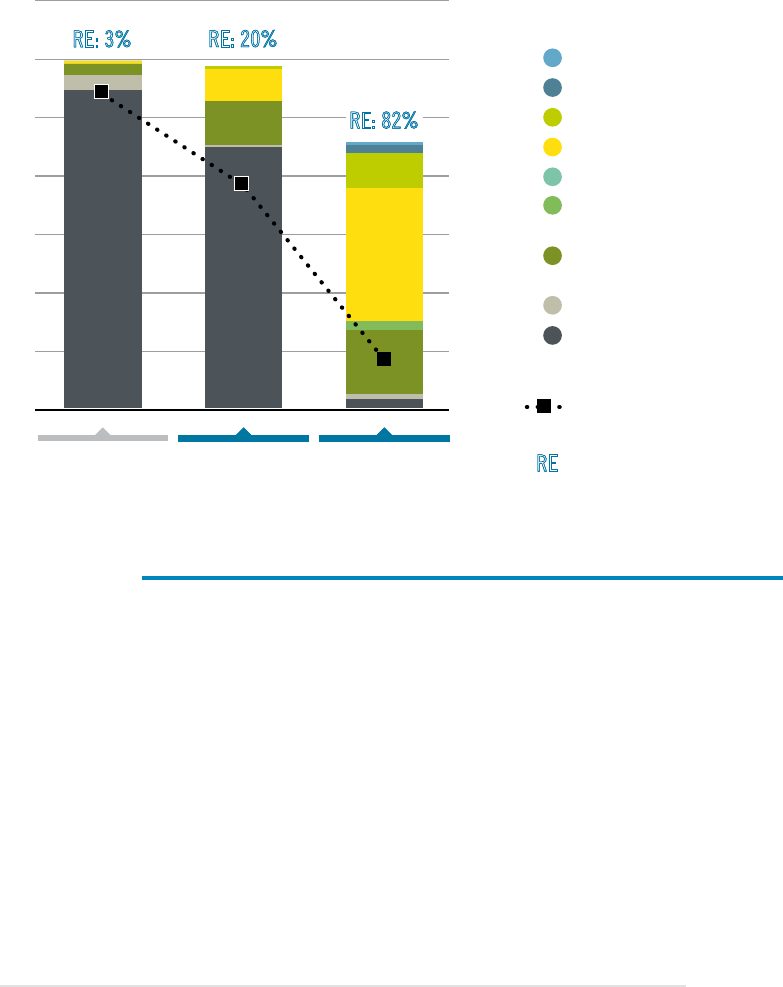
FIGURE A.1 Total energy consumption and CO
2
emissions in transport
Methanol
Ammonia
Hydrogen
Electricity
Biogas
Synthetic
kerosene
Liquid biofuels
(total)
Natural gas
Oil
0
20
40
60
80
100
120
140
0
0.5
1.0
1.5
2.0
2.5
3.0
-0.5
1.5°C Scenario1.5°C Scenario1.5°C Scenario 1.5°C Scenario1.5°C Scenario1.5°C Scenario
2030 2050
2018
Final Consumption (EJ/yr) CO2 emissions (GtCO2/yr)
RE: 3%RE: 3%
RE: 20%RE: 20%
CO2 emissions
(net)
Renewable
energy
RE: 82%RE: 82%
RERE
267
ANNEX A
Under the 1.5°C Scenario, renewable electricity use
could increase significantly, providing 44% of total
transport energy consumption by 2050.
A combination of low-carbon approaches would
cut transport emissions to just 0.4 GtCO
2
annually
by 2050, a 97% reduction compared to 2018.

TABLE A.2a Transport: Indicators of progress – status in 2018 and targets for
2030 and 2050
Energy transition strategy and components
CO
2
emissions
Energy
transition
component
Indicators
2018 2030 2050
Implications/Key actions
Historical Where we need to be
(1.5°C Scenario)
Unit
2017-2019 2021-2050 (1.5°C Scenario)
ENERGY EFFICIENCY
LIQUID BIOFUELS
PRODUCTION
CHARGING
INFRASTRUCTURE FOR
ELECTRIC VEHICLES
Transport
total
(USD billion/
year)
69 USD billion/year 375 USD billion/year
65 USD billion/year 157 USD billion/year
2 USD billion/year 87 USD billion/year
2 USD billion/year 131 USD billion/year
ENERGY
CONSERVATION
AND
EFFICIENCY
• Improve energy eciency through
novel technologies and operational
measures.
• Accelerate modal shift in transport
from road and aviation to rail and
public transport.
• Re duce travel demand.
Transport –
TFEC (EJ)
121
EJ
122
EJ
93
EJ
CO
2
EMISSIONS
Encourage strong commitments from
national, regional and regulatory
bodies to reach net zero emissions in
transport.
Direct
(GtCO
2
/yr)
ELECTRIFICATION
IN END-USE
SECTORS
(DIRECT)
• Promote the rapid electrification
of road transport.
• Support battery and charging
research and development (R&D),
considering both mobility and
grid needs.
Share of
electricity
in TFEC (%)
1 % 9 % 49 %
RENEWABLES
(DIRECT USES)
• Broaden and scale up the
sustainable production and use
of biofuels.
Biofuels
share in
transport
TFEC (%)
3 % 13 % 24 %
HYDROGEN
AND ITS
DERIVATIVES
Clean
hydrogen
share in
transport
TFEC (%)
Ammonia,
methanol,
synthetic
fuels share
in transport
TFEC (%)
12 %0.7 %<0.1 %
8 %0.4 %<0.1 %
• Explore hydrogen as a
potential transport fuel for
road, aviation and
shipping.
• Introduce and scale up the
use of alternative fuels
though measures to
support early demand.
8.2
GtCO
2
/yr
6.7
GtCO
2
/yr
0.4
GtCO
2
/yr
268
WORLD ENERGY
TRANSITIONS OUTLOOK
Note: TFEC = total final energy consumption.

TABLE A.2b Transport: Energy transition investments
Energy transition strategy and components
CO
2
emissions
Energy
transition
component
Indicators
2018 2030 2050
Implications/Key actions
Historical Where we need to be
(1.5°C Scenario)
Unit
2017-2019 2021-2050 (1.5°C Scenario)
ENERGY EFFICIENCY
LIQUID BIOFUELS
PRODUCTION
CHARGING
INFRASTRUCTURE FOR
ELECTRIC VEHICLES
Transport
total
(USD billion/
year)
69 USD billion/year 375 USD billion/year
65 USD billion/year 157 USD billion/year
2 USD billion/year 87 USD billion/year
2 USD billion/year 131 USD billion/year
ENERGY
CONSERVATION
AND
EFFICIENCY
• Improve energy eciency through
novel technologies and operational
measures.
• Accelerate modal shift in transport
from road and aviation to rail and
public transport.
• Re duce travel demand.
Transport –
TFEC (EJ)
121
EJ
122
EJ
93
EJ
CO
2
EMISSIONS
Encourage strong commitments from
national, regional and regulatory
bodies to reach net zero emissions in
transport.
Direct
(GtCO
2
/yr)
ELECTRIFICATION
IN END-USE
SECTORS
(DIRECT)
• Promote the rapid electrification
of road transport.
• Support battery and charging
research and development (R&D),
considering both mobility and
grid needs.
Share of
electricity
in TFEC (%)
1 % 9 % 49 %
RENEWABLES
(DIRECT USES)
• Broaden and scale up the
sustainable production and use
of biofuels.
Biofuels
share in
transport
TFEC (%)
3 % 13 % 24 %
HYDROGEN
AND ITS
DERIVATIVES
Clean
hydrogen
share in
transport
TFEC (%)
Ammonia,
methanol,
synthetic
fuels share
in transport
TFEC (%)
12 %0.7 %<0.1 %
8 %0.4 %<0.1 %
• Explore hydrogen as a
potential transport fuel for
road, aviation and
shipping.
• Introduce and scale up the
use of alternative fuels
though measures to
support early demand.
8.2
GtCO
2
/yr
6.7
GtCO
2
/yr
0.4
GtCO
2
/yr
269
ANNEX A
Note: Electric cars, the related battery manufacturing plant, lithium mines etc. are not
counted as energy transition investments.

270
WORLD ENERGY
TRANSITIONS OUTLOOK
A.1. 2 Transitioning towards decarbonisation
A combination of actions will be needed to achieve the massive reduction in emissions needed in the
transport sector.
• Accelerating the adoption of electric vehicles for road transport, in parallel with
decarbonisation of the power supply, is the single-most important lever for the
decarbonisation of the transport sector. Technological progress – notably, the evolution of
batteries – has greatly improved the economic case for electric vehicles in recent years, and the
scope of application is quickly expanding to a broader set of road vehicle segments and types of
services. If ongoing cost reduction trends consolidate, by 2050 the bulk of global road transport
services could be delivered cost-effectively with electric technology. In IRENA’s 1.5°C Scenario,
electric vehicles account for more than 80% of all road transport activity by 2050 (88% of the
technology mix in light-duty vehicles and 70% in heavy-duty vehicles). To meet these targets,
close to a third of all light-duty vehicle sales and a fifth of truck sales over the current decade to
2030 should be electric.
• Electrification also has a role to play in the deeper decarbonisation of the rail sector.
Electricity already plays an important role in this sector, accounting for 41% of the energy use in
trains worldwide. Electric train technology is mature and has been applied for decades. Further
electrification is technically possible and can be cost-effective in a broad set of circumstances.
• In addition to electrification, a decarbonisation of the transport sector in line with the goals
of the Paris Agreement would require scaling up the adoption of renewable fuels including
sustainable biofuels, hydrogen and synthetic fuels. In IRENA’s 1.5°C Scenario, the production
of sustainable liquid biofuels needs to be scaled up five fold compared to today’s level. Biofuels,
hydrogen and renewable-based synthetic fuels can be used in the remaining stock of combustion
locomotives and for those routes where low-capacity factors make electric systems unattractive.
Renewable power based fuels would account for around 11% of the final energy consumption of
land-based transport by 2050. For the aviation sector, the use of biojet fuels would comprise
47% of the total fuel consumption, or around 204 billion litres of biofuels produced annually in
the 1.5°C Scenario. The use of synthetic kerosene is also introduced in IRENA’s 1.5°C Scenario,
composing up to 23% of fuel use by 2050 with almost 100 billion litres of fuel required. Liquefied
natural gas as a transition fuel in the international shipping sector would comprise 7% in 2030, but
by 2050, investments in low-carbon fuel and ships would see ammonia, methanol and hydrogen
composing almost 60% of the fuel mix.

271
ANNEX A
• The adoption of stringent efficiency standards for these new transport modes, along with
behavioural changes, is crucial. In addition to a drastic shift in the technology mix delivering
energy services, structural changes in how mobility services are delivered in the first place
can help facilitate decarbonisation. Substantial potential exists for a modal shift from private
passenger cars to collective transport (buses and trains), as well as from passenger aviation and
road-based freight torail.
• The introduction of novel aircraft running on hydrogen and electricity (or hybrids) by 2035
for regional short-haul flights will further increase the overall energy efficiency gains for
aviation. Electric aircraft are powered by batteries and offer the advantages of more energy-
efficient motors and being fully carbon neutral if powered by 100% renewable electricity. Electric-
battery-driven aircraft can be up to 1.8 times as energy efficient as conventional aircraft (Gnadt
et al., 2019; Schäfer et al., 2019). Hydrogen aircraft technologies can either combust hydrogen in a
jet engine or use it in fuel cells to produce electricity to drive propellors, with the latter approach
currently favoured by developers. Both systems demand less energy and have greater emission
reduction potential compared to conventional aircraft (Clean Sky 2 JU and FCH 2 JU, 2020).
Airbus’s recently revealed concepts for hydrogen-powered zero-emissions aircraft, which the
company aims to be in service by 2035, is an encouraging sign. In IRENA’s 1.5°C Scenario, electric
and hydrogen aircraft together can replace 35% of short-haul flights of less than 1 100 kilometres.
Together, hydrogen and electricity would comprise around 14% of the aviation sector’s energy
consumption by 2050.
IRENA’s analysis of the 1.5°C Scenario shows that a combination of efficiency measures and low-
carbon approaches, as listed above based on transport mode, would reduce transport consumption
to 93 EJ by 2050. In this scenario, electricity would account for 49% of consumption (90% of which
is supplied by renewables), accompanied by a significant uptake of biofuels (25%) compared to
today’s levels (3%), as well as a mixture of clean hydrogen and its derivatives providing around 21%
of the fuel mix; fossil fuels would provide the remaining consumption (around 5%). At the same
time, with increased environmental awareness and the long-term impacts of the pandemic, a smaller
increase in transport demand is projected compared to the Planned Energy Scenario, especially in
the aviation sector.

272
WORLD ENERGY
TRANSITIONS OUTLOOK
BOX A.1 Status of battery technology
Battery storage is a key building block of the transformation towards net zero emission energy
systems. Inexpensive, mass-produced batteries will enable cost-effective decarbonisation of the
road transport sector – which today accounts for about a fifth of global energy-related CO
2
emissions. Furthermore, batteries can store cheap, carbon-neutral solar and wind generation,
contributing to the safe, reliable operation of power systems with very high shares of renewables.
Batteries can also support a wider range of services in the power sector, including frequency
response, reserve capacity and black-start capability, among others (IRENA, 2017).
Battery technology has experienced impressive progress over the last decade, with costs
declining around 90%. The cost of lithium-ion battery packs, typically used in electric vehicles,
exceeded USD 1 100/kilowatt hour (kWh) in 2010 but has fallen to USD 137/kWh in 2020 (BNEF,
2020). If current trends continue, average costs could soon break the USD 100/kWh mark, a
figure often cited as the threshold for light-duty road vehicles to reach up-front cost parity with
internal combustion vehicles. By 2030, battery pack prices could reach USD 61/kWh (BNEF,
2021), further improving the cost competitiveness of electric vehicles.
At the same time, the global battery production capacity is growing exponentially. Battery
production capacity for electric vehicles reached 180 gigawatt hours (GWh) per year in 2020,
and the pipeline for large battery factories (>1 GWh capacity) now includes 181 plants with a
planned capacity of 3 terawatt hours per year by 2030 (Moores, 2021). Such capacity would
enable the production of 48 million light-duty vehicles annually, more than half of the global
market in recent years.*
Existing battery technology is quickly reaching commercial maturity to enable decarbonisation
of some energy services, for example, road transport, short-term power storage and ancillary
services. Long-duration power storage (tens to hundreds of hours), aviation and maritime
shipping are candidates to benefit from improved battery technology in the future. Each of these
applications requires batteries that are optimised for their specific needs (Trahey et al., 2019).
For example, regional commercial flights of up to 600 nautical miles could be enabled if batteries
reached an energy density of 800 Wh/kg (Schäfer et al., 2019) (about three to four times higher
than today’s technology). Batteries for aviation need to deliver large amounts of power output
to enable safe take-off and landing operations; they also need to charge rapidly to enable
short turn-around times for airlines and to operate under very stringent reliability and safety
standards. Further research and development is needed to expand the scope of battery use in
the energy transformation and to unleash their full decarbonisation potential.
* Assuming 80% of the production is dedicated to light-duty electric vehicles, and an average battery pack size
of 50 kWh.

FIGURE A.2 Emission reductions in transport in 2050
273
ANNEX A
A.1.3 Opportunities for investors
To achieve the transformation envisioned in the transport sector, at least USD 11 trillion will need
to be invested in the sector by 2050. The bulk of investments are needed in energy efficiency
improvements for all transport modes (42% or USD 157 billion annually) and in charging infrastructure
for electric vehicles (35% or USD 131 billion annually). Additional investments will be needed in supply
chain expansion for electric vehicles and battery factories. The implications for mining and mineral
supply chains require attention as well. Although the mining investment will be limited to those
countries that have the natural resources, the need for these resources is global and growing. With
the increasing use of biofuels, as well as hydrogen and its derivatives, additional investments will be
needed for the expansion of production facilities, batteries, electrolysers and logistics. (For an in-
depth discussion of the investment required, see Section A.2.2.)
A.1. 4 Carbon dioxide emissions
As a result of a massive transition in the transport sector, as outlined in the 1.5°C Scenario,
the sector’s annual emissions will be reduced from 8.2 GtCO
2
in 2018 to 6.5 GtCO
2
by 2030 and
0.4 GtCO
2
by 2050. Electrification measures will be responsible for 41% of total CO
2
reductions
in the sector, followed by energy efficiency improvements contributing 27%, hydrogen and its
derivative fuels contributing 26%, and biofuels and biogas contributing the remainder.
In transport, 67% of emission
reductions come from direct
electrification and hydrogen.
6 %
Transport
2050
Where we
need to be
(1.5-S)
-8.4
GtCO
2
/yr
-8.4
GtCO
2
/yr
41%
26 %
27 %
2050
Where current plans
will take us (PES)
Renewables
Energy conservation
and eciency
Electrification in
end use sectors (direct)
BECCS and other carbon
removal measures
Hydrogen and its
derivatives
CCS and CCU industry

The industrial production of key materials is an essential enabler of modern economies.
As countries develop, demand for such material continues to grow. However, many
production processes are carbon intensive, making industry responsible for 12 GtCO
2
per year in 2018, around a third of human-induced CO
2
emissions (excluding land-use
emissions). Of this 12Gt, energy use accounts for 10 Gt annually and the remaining 2Gt
is process-related emissions, which can be particularly difficult to address. In general,
decarbonising industry is challenging due to the complexity of the processes involved,
a relative lack of economically viable technical solutions for reducing CO
2
emissions and
the importance of competitive industries to national economies.
Among industrial sectors, iron and steel, cement, chemicals and petrochemicals
contribute the largest share of emissions (around 70%), and the major economic blocs
of China, the United States and the European Union account for a large share of overall
industrial production. The initial focus of efforts to reduce emissions in industry should
therefore be concentrated on these sectors and countries.
INDUSTRY
Reaching zero emissions
across the industrial sectors
will require radical shifts in
how materials are produced,
consumed and disposed.
A.2
274
WORLD ENERGY
TRANSITIONS OUTLOOK

IRENA’s 1.5°C Scenario proposes a portfolio of clean energy technologies and strategies to
decarbonise industry, built on five pillars:
1 Reduced demand and improved energy and materials efficiency. Along with circular economy
practices and structural changes, this would lead to substantial reductions in industrial energy
consumption by 2050.
2 Direct use of clean electricity produced predominantly from renewable sources. The direct
electrification share in industry would rise from 28% in 2018 to 35% by 2050. For low-temperature
industrial heat needs, heat pump installations would increase to 80 million by 2050.
3 Direct use of renewable heat and biomass – including solar thermal, geothermal, biofuels and
bioenergy feedstocks. For medium- and high-temperature heat requirements, as well as for
chemical feedstocks, biomass will play a significant role, requiring over 36 EJ of biomass by 2050,
up from 8 EJ in 2018.
4 Indirect use of clean electricity via synthetic fuels and feedstocks, predominantly using
renewable electricity. The use of hydrogen and synthetic fuels and feedstocks in industry would
climb to over 38 EJ by 2050.
5 Use of carbon dioxide removal and carbon capture and storage measures – including bio-
energy with carbon capture, utilisation and/or storage (BECCS). Some emissions, particularly
process emissions, cannot be addressed by other means, and the combination of biomass with
CCS could deliver some negative emissions. In 2050, around 4.5 GtCO
2
would be captured by
BECCS and CCS in industry.
To achieve the complete decarbonisation of industry proposed under the 1.5°C Scenario, investment
in energy transition technologies in industry would have to increase significantly, amounting to
USD 14.5 trillion over the period to 2050 or on average USD 486 billion per year. As a result, the
industrial sector would see significant reductions in CO
2
emissions, from 5.4 GtCO
2
in 2018 to
-1 GtCO
2
in 2050 (i.e., net negative). Renewables and energy efficiency contribute close to 40%
of the mitigation needs between the Planned Energy Scenario and the 1.5°C Scenario. Hydrogen
and electricity supplied mostly by renewable power sources would together contribute 27% of
mitigation. CCS would capture one-fifth of the emissions, and the remaining mitigation effort would
be provided by BECCS and other carbon removal measures.
275
ANNEX A
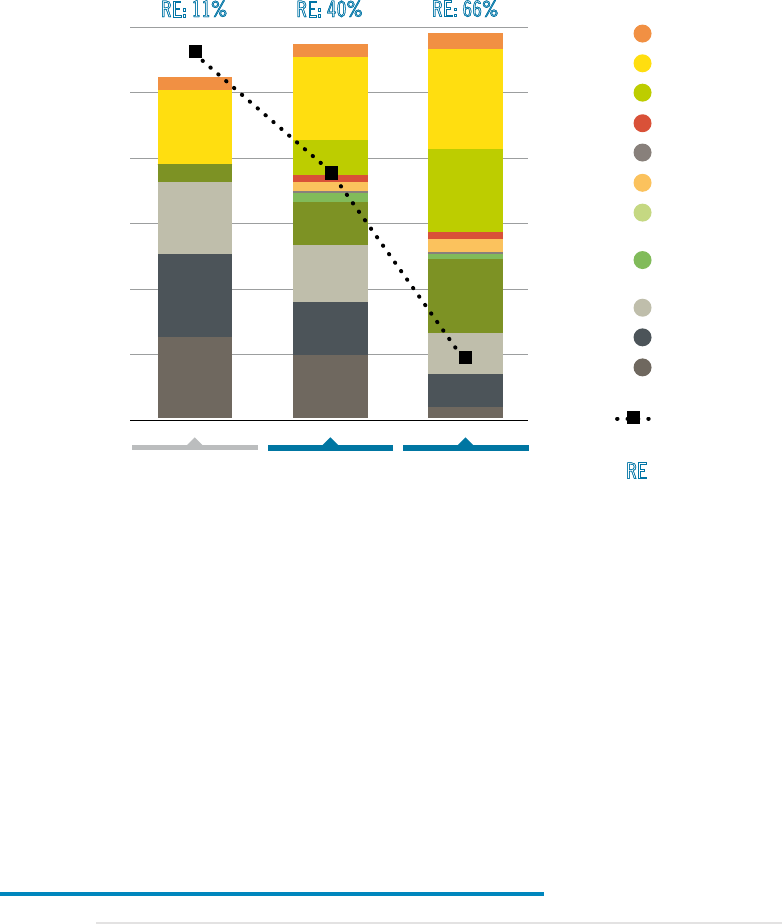
FIGURE A.3 Total energy consumption and CO
2
emissions in industry
Note: The figure includes energy demand for non-energy uses, coke oven, blast furnace, chemicals fuels and
feedstocks along with industry co-generation.
0
30
60
90
120
150
180
-0.5
0
1.0
0.5
1.5
2.0
2.5
2018
Final Consumption (EJ/yr) Net CO2 emissions (GtCO2/yr)
Hydrogen
Other (non-RE)
District heat
Electricity
Geothermal
Solar thermal
Modern biomass
(biogas/liquid)
Modern biomass
(solid)
Gas
Oil
1.5°C Scenario1.5°C Scenario1.5°C Scenario 1.5°C Scenario1.5°C Scenario1.5°C Scenario
2030 2050
Coal
CO
2 emissions
(net)
RE: 11%RE: 11% RE: 40%RE: 40%
RE: 66%RE: 66%
Renewable
energy
RERE
276
WORLD ENERGY
TRANSITIONS OUTLOOK
By 2050 the share of renewables in the
industrial sector needs to grow six fold,
to 66%from 11% in 2018. Electricity would
make up around 26% of the sector’s
energydemand,followed by hydrogen
providing 22%and 20% from bioenergy.

A.2.1 Overview and trends
Modern economies are highly dependent on large-scale production of key materials such as metals,
minerals, chemicals and finished goods, produced by industries around the world. As countries
develop and become wealthier, demand for such materials continues to grow. However, this
production currently comes with high CO
2
emissions. Industry accounts for around 28% of human-
induced CO
2
emissions (excluding land-use emissions), or around 12 GtCO
2
in 2018 (of which 2 Gt
are process related and the rest energy related). Among the industry sub-sectors, the top three
emitters are iron and steel (contributing 28% of industry-related emissions), cement and lime (25%)
and the chemical and petrochemical industries (17%), together representing 70% of industry-related
emissions (IRENA, 2020a).
The majority of energy used in industry is currently sourced from fossil fuels and is concentrated
in key countries and regions. In 2018, China was responsible for more than 30% of global energy
consumption in industry, followed by the United States with 11%, the European Union with 9%
and India with 7%. Only around 11% of all energy consumed in industry was renewable (including
electricity and district heat) in 2018. Energy use is not the only source of emissions in the industrial
sector; CO
2
emissions also must be eliminated from production processes (mainly cement and iron
and steel) and from the life cycle of products. Reducing emissions and eventually reaching zero will
therefore require radical shifts in how materials are produced, consumed and disposed of.
To date, however, the need to drive long-term emission reductions in industry has not received the
required policy attention in most countries. The United Kingdom, being a pioneer in announcing a
2050 net zero energy target, recently launched a detailed industrial decarbonisation strategy aligned
with the net zero goal (Government of the United Kingdom, 2019). A few other industrial economies
are exploring options. However, on a global scale, relatively less attention has been devoted to
decarbonising the industry sector. A number of reasons account for this lack of action, but two in
particular are key. First, only a few economically viable CO
2
emission reduction technical solutions
are currently available for these industrial sectors, and until recently little consensus existed on which
options are most suitable. Second, concerns about competitiveness and the risks of carbon leakage
– that is, the transfer of production to other locations where emission reduction requirements are
lower – is a deterrent in promoting national decarbonising efforts (IRENA, 2020a).
277
ANNEX A

TABLE A.3a Industry: Indicators of progress – status in 2018 and targets for 2030 and 2050
Energy transition strategy and components
Energy
transition
component
Indicators
2018 2030 2050
Implications/Key actions
Historical Where we need to be
(1.5°C Scenario)
Unit
ENERGY
CONSERVATION
AND
EFFICIENCY
• Keep a strong focus on energy
eciency by making processes ever
more ecient and by setting or
mandating minimum standards on
energy eciency and/or on the
carbon intensity of fuels, processes
and products.
• Promote circular economy practices
(material recycling, waste
management, improvements in
materials eciency and structural
changes such as reuse and recycling).
• Incentivise and adopt best available
technologies and eciency
standards.
Industry –
TFEC (EJ)
ELECTRIFICATION
IN END-USE
SECTORS
(DIRECT)
• Promote low-carbon
electricity-based heating
solutions such as heat
pumps and electric
boilers.
Share of
electricity
in TFEC (%)
21 %
22 %
26 %
Heat
pumps
(million
units)
RENEWABLES
(DIRECT USES)
• Develop sustainable bioenergy
supply chains to meet the growing
need for bioenergy in industry to
supply heat demand, especially
high-temperature heat.
• Re fine technologies and processes
for the conversion of industrial
plants to biomass-based heat.
Solar
thermal
consumption
(GW
th
)
Solar
thermal –
flat plate,
evacuated
tube
(million m
2
)
157 EJ
172 EJ
177EJ
0 million 35 million 80 million
8.1 EJ 25 EJ 36 EJ
1272
million m
2
1844
million m
2
5
million m
2
Biomass heat
(including
combined
heat and
power (CHP)
and feed-
stocks (EJ)
• Promote awareness of the
advantages of solar thermal
and create incentives for
project developers that can
disseminate the technology,
especially for low- and
medium-temperature
applications.
4 TWh/yr 890 TWh/yr 1 291 TWh/yr
278
WORLD ENERGY
TRANSITIONS OUTLOOK
a. The dataset in the table includes energy demand for non-energy uses , coke oven, blast furnace, chemicals fuels
and feedstocks along with industry co-generation.

b. Emissions represent net CO
2
emissions including CO
2
removal using CCS, CCU and BECCS along with the life cycle
of petrochemicals.
Note: TFEC = total final energy consumption.
CO
2
emissions
Renewables share
Energy
transition
component
Indicators
2018 2030 2050
Implications/Key actions
Historical Where we need to be
(1.5°C Scenario)
Unit
BECCS AND
OTHERS
• Pilot at scale the use of BECCS in
key sub-sectors such as cement
and chemicals in order to oset
remaining uncaptured emissions
(e.g., from clinker production).
BECCS –
CO
2
captured
(GtCO
2
/yr)
CCS
• Pilot at scale the selective use
of CCS, mainly to capture
process emissions in
energy-intensive industries.
CCS –
CO
2
captured
(GtCO
2
/yr)
HYDROGEN
AND ITS
DERIVATIVES
• Pilot at scale, and in multiple
contexts, the use of renewably
produced hydrogen to replace fossil
fuel-based feedstocks and process
heat (e.g., in iron and steel, methanol
and ammonia production).
• Incentivise demand for low-carbon
products.
Clean
hydrogen
consumption
(EJ)
ENERGY-
INTENSIVE
INDUSTRIES
• Develop a shared vision and
strategy and co-develop practical
roadmaps involving all major
players.
• Collaborate across borders to share
knowledge and build capacity.
Support research, development
and deployment, and systemic
innovation.
RENEWABLES
a
• Maintain a strong focus on
strategies to accelerate energy
eciency improvements, clean
hydrogen use and direct
renewables use such as biomass
and solar thermal.
Renewable
energy share
(including
electricity
and district
heating) (%)
CO
2
EMISSIONS
Implement an appropriate carbon
pricing mechanism in line with
the real costs of the externalities
and eliminate any remaining
subsidies or incentives for the use
of carbon-intensive fuels.
CO
2
emissions
with carbon
capture and
removal
b
(GtCO
2
/yr)
0 EJ
16 EJ
38 EJ
1.1
GtCO
2
captured/yr
0.01
GtCO
2
captured/yr
2.3
GtCO
2
captured/yr
0.6
GtCO
2
captured/yr
0.002
GtCO
2
captured/yr
1.14
GtCO
2
captured/yr
11 % 40 % 66 %
83 %70 %
98 %
6.1
GtCO
2
/
yr
4.7
GtCO
2
/
yr
-1 GtCO
2
/
yr
Iron and steel;
cement; and
chemical and
petrochemical
– share of
industry gross
emissions
(excl. CCS/CDR)
(%)
279
ANNEX A

A.2.2 Transitioning towards decarbonisation
The majority of emission reductions will be achieved through a combination of six emission reduction
measures, three of which rely primarily on renewable energy (IRENA, 2020a):
• Reduced demand and improved energy and materials efficiency. This involves reducing energy
and material demand and intensity of use through a range of actions, including energy efficiency,
behavioural and process changes, relocation and the application of circular economy principles.
For instance, greater efficiency in materials use could reduce the demand for new materials
production, even as interesting opportunities exist for product reuse and materials recycling.
Efforts to deploy low-carbon technologies need to be complemented with strategies and options
to improve material efficiency and create a circular economy.
However, not all options are within the boundaries of the industry sector. An important effort will
be required in the waste management sector, especially related to steel products and plastics.
This is essential to increase recovery rates of materials from products that have reached their
end of life, to ensure cost-effective and efficient logistics, to develop cost-effective recycling
technologies and to develop the global infrastructure to circulate these materials. Structural
changes will have impacts throughout the product life cycle. The material flows across sectors
will be affected by emission reduction efforts elsewhere in the economy, such as the reduced
availability of blast furnace slag and fly ash for cement production, which will require new material
solutions to be developed (Gielen and Saygin, 2018).
2017-2019 2021-2050 (1.5°C Scenario)
ENERGY EFFICIENCY
Industry
total (USD
billion/
year)
95 USD billion/year 486 USD billion/year
45 USD billion/year
354 USD billion/year
RENEWABLES
(DIRECT USES)
45 USD billion/year
HEAT PUMPS
2 USD billion/year
32 USD billion/year
24 USD billion/year
CCS AND BECCS
38 USD billion/year
CIRCULAR ECONOMY
25 USD billion/year
280
WORLD ENERGY
TRANSITIONS OUTLOOK
TABLE A.3b Industry: Energy transition investments
Note: Investments in hydrogen electrolysers, chemicals feedstocks and renewable power
capacity are not included in this table.

• Direct use of clean electricity, produced predominantly from renewable sources. Directly
using clean electricity (sourced mainly from renewables) to provide energy requirements can
both replace existing fossil-fuel-based electricity use and replace other energy demand through
“electrification”. Electricity demand is expected to continue to grow in the manufacturing
industry, due in part to an electrification of production processes but also to production growth
in electricity-intensive industries, such as the non-ferrous metals sector. As renewables’ share in
power generation grows, this increases their share in industry. Locating such industries close to
renewable power plants is one option that would increase the share of renewable energy in the
electricity sector.
Already many electricity-intensive industries such as aluminium smelters are linked with
generation assets that offer cheap electricity from hydropower, and this is likely to increase in the
coming years. Several large manufacturing companies are integrating renewable energy power
generation into their existing manufacturing plants through either solar photovoltaic (PV) panels
on production facilities, wind turbines on site or other sources of renewable energy. Process
technology research and development should also focus on electricity-based alternatives,
ensuring that the electricity sector is decarbonised. An interesting trend is direct corporate
sourcing of renewable power. These and other trends are opening up possibilities for industry and
transport that make zero emissions an achievable objective.
• Direct use of renewable heat and biomass – including solar thermal, geothermal, biofuels
and bioenergy feedstocks. This involves directly utilising renewables for energy and feedstocks,
including the use of solar and geothermal for some heat requirements and the use of sustainable
biomass (including through the direct use of bioenergy) for heat and for the production and
use of biofuels and bioenergy feedstocks. Industry’s use of solar thermal heat will rise steeply
and provide 5% of the sector’s heat demand. Current direct renewable energy use in industry is
predominantly in the form of biofuels and waste. This is mainly due to by-products and waste use,
such as bagasse and rice husk in sugar production and other traditional industries; biogas from
sewage and farms for food processing and black liquor in the pulp and paper sector.
The versatility of biomass also results in competitive uses within and between the industry sector
and other sectors of the economy. Realising cost-effective and sustainable biomass potential
depends on a number of factors, including local feedstock cost and availability as well as biomass
logistics. In addition to biomass, solar heating and geothermal could substitute fossil fuel use.
Today only certain applications of renewable energy are cost-effective, such as low-temperature
process heat generation with solar water heaters and steam production from low-cost biomass
residues. Breweries, dairy industries and textile processing industries are typical settings where
these technologies are applied.
Important economic, technical and logistical barriers remain. Yet in the near future and with
proper policy frameworks in place, renewable energy technologies can provide practical and
cost-effective alternatives for process heat generation and as a renewable carbon source for the
production of chemicals and plastics (Saygin, D. and Gielen, D., 2021). Meanwhile, for medium-
and high-temperature processes, bioenergy would remain critical. As such, bioenergy would
constitute 20% of final energy consumption in 2050.
281
ANNEX A

• Indirect use of clean electricity via synthetic fuels and feedstocks, predominantly using
renewable electricity. This involves sourcing energy and feedstocks from hydrogen or from fuels
or feedstocks produced from hydrogen (synthetic fuels or feedstocks) using CO
2
captured from
non-fossil-fuel sources. The hydrogen should be “clean” and preferably “green” (i.e., sourced from
renewables). Hydrogen would also play an important role in the sector: its use grows to over 38 EJ
by 2050 (two-thirds derived from renewables) in IRENA’s 1.5°C Scenario, driven by declining costs
(IRENA, 2020b).
• Carbon capture, utilisation and/or storage (CCUS/CCS). This involves capturing most
CO
2
emissions from remaining fossil-fuel-based energy production that cannot be credibly
substituted with renewables or other processes and either storing the captured CO
2
permanently
or utilising the CO
2
in ways in which it will not be later released. Especially for industries with
high process emissions such as cement clinker production, this option could play an important
role. While renewables and energy efficiency could make a significant contribution to industrial
emission reductions, their joint potential is not enough to fully decarbonise the industry sector.
CCS will need to be deployed for some manufacturing of iron, ammonia, cement clinker and some
chemicals.
• Biomass coupled with carbon capture and storage BECCS and other carbon removal measures.
Additional effort will be needed to offset emissions using carbon dioxide removal technologies.
These include the use of biomass in combination with CCS (BECCS), and other uses of biomass
such as biomass carbon use (with proper accounting for its storage in synthetic organic materials),
wood materials’ use for construction (with accounting for its carbon storage effects), as well as
carbonation of concrete and direct air carbon capture and storage (DACCS). These technologies
are not currently deployed at any significant scale; if they are to have a meaningful impact, efforts
must be ramped up quickly in the coming decades.
A.2.3 Opportunities for investors
The industrial sector’s technology portfolio, as outlined in IRENA’s 1.5°C Scenario, requires
increasing investments in the order of USD 14.6 trillion between 2021 and 2050 (or, on average,
USD 486 billion per year to 2050). More than 75% of this total investment would be needed
for improving energy efficiency levels and circular economy practices. Around 14% of the total
investments would be needed for deploying renewables for direct use and heat pumps. The
remaining 8% of the investments are attributed to coupling CCS and BECCS units.
A strategic move could be investing in energy-intensive industries in countries with good resources
and large shares of renewables. For example, this could mean coupling iron ore mining and green
ironmaking in places with abundant and low-cost renewable resources, such as Australia, to
create new value and supply chains while also delivering emission reductions. A shift from the
use of the blast furnace–basic oxygen furnace to the green hydrogen direct reduced iron–electric
arc furnace could enable a wider relocation of the sector to places where relatively low-cost and
abundant renewable electricity sources are available. The prospect of wider relocation could trigger
the creation of markets for greener steel, provided there is adequate infrastructure in place for
transporting hydrogen along with proper trade agreements and finance flows.
282
WORLD ENERGY
TRANSITIONS OUTLOOK

Decarbonising the industry sector requires concerted actions by all countries. Yet the actions
of a few key countries and regions are particularly critical. Major economies such as China, the
United States, India, the European Union and the United Kingdom currently account for two-thirds
of global emissions and more than two-thirds of global industrial emissions. Actions and initiatives in
these major economies and economic blocs will determine whether the world’s industrial processes
can get on a pathway consistent with 1.5°C climate targets.
For example, in China, the world’s largest producer of a range of energy-intensive commodities, the
energy consumption of the industry sector accounts for 60% of gross final energy use in industry
(for both energy and non-energy use), with a proportional share of emissions. However, emission
reduction in the industry sector has received relatively little policy attention to date. Decarbonising
China’s energy-intensive industries is important not just in a national context, but also as a key enabler
of the decarbonisation of the global industrial sector. Strategies for decarbonising energy-intensive
industries in China include exploring the targeted use of CCS for cement kilns and outsourcing some
of the energy-intensive industry activities, for example, through imports of hydrogen direct reduced
iron, green ammonia or renewable methanol (Gielen, Chen and Durrant, 2021).
After China, India is the world’s second-largest producer of a range of energy-intensive commodities
and uses coal as a dominant fuel. Industrial activities in the country are expected to surge in the
coming decades driven by rapid urbanisation, economic growth and ongoing initiatives such as
“Make in India” and “Atma Nirbhar Bharat”. Such advancements have significant implications for
India’s emission trajectory and provide a unique opportunity for the country to evolve sustainably
and establish itself as a “global green manufacturing hub”. Decarbonisation strategies for India’s
industrial sector could include: setting short- and long-term targets and goals as part of the country’s
updated Nationally Determined Contributions; planning and approving new greenfield projects with
the best available technologies (supported by high energy efficiency standards), including clean
energy fuels (renewables, clean electricity); promoting circular economy practices; deploying
alternative fuels such as green hydrogen (e.g., for green steel and for chemical/fertiliser production)
and scaling up energy transition investments (Deore, Kukreja and Koti, 2021).
A.2.4 Carbon dioxide emissions
Industry is the second-largest emitter of energy-related CO
2
, after the power sector, and is responsible
for just under one-third of these emissions worldwide (when including process emissions). The
1.5°C Scenario outlines a pathway to deliver more than 100% reductions of the sector’s emissions
by 2050. Renewables, energy efficiency, electrification and hydrogen contribute to almost two-
thirds of the mitigation needs between the Planned Energy Scenario and the 1.5°C Scenario. The
remaining emission reductions would be contributed by CCS (20%) and BECCS and other CO
2
removal measures.
283
ANNEX A

Relatively few of the technical options identified, however, are commercially mature or ready for
wide adoption. Uncertainties remain about their potential and optimum use, and none will be easy
to scale up. The reasons are varied and complex. They include: high costs for new technologies and
processes; the need for enabling infrastructure ahead of demand; highly integrated operations
and long-established practices; uneven, large and long-term investment needs; gaps in carbon
accounting and business risks for first-movers, including added costs and consequent “carbon
leakage” in favour of competitors. This calls for inter-linked sector-level strategies at the local,
national and international levels, built on the five technology pillars of demand reduction and energy
efficiency, renewable electricity, renewable heat and biofuels, green hydrogen and e-fuels, and
carbon-removal technologies.
Renewables and energy
efficiency would contribute 39%
of total mitigation needs in 2050,
while hydrogen and electricity
combined contribute 27%.
284
FIGURE A.4 Emission reductions in industry in 2050
Industry
2050
Where we
need to be
(1.5-S)
-11.9
GtCO
2
/yr
-11.9
GtCO
2
/yr
14 %
15 %
20 %
25 %
14 %
12 %
2050
Where current plans
will take us (PES)
Renewables
Energy conservation
and eciency
Electrification in
end use sectors (direct)
BECCS and other carbon
removal measures
Hydrogen and its
derivatives
CCS and CCU industry
WORLD ENERGY
TRANSITIONS OUTLOOK

The ways that we live and work in our built environment will be transformed over the next decades
under the 1.5°C Scenario. Our buildings will increasingly be smart, inter-connected, highly energy
efficient and powered and heated predominantly by renewable energy. This is not only necessary
to meet global climate goals, but it also presents a strong business opportunity and could be a key
driver in increasing employment and the quality of our air in urban areas.
An effective transition to reach zero emissions in the buildings sector entails multiple strategies:
1 Energy efficiency should take the top priority: all new buildings should be low-energy buildings
starting in 2025 and zero-energy buildings beginning in 2030; meanwhile, for existing buildings
the rate of renovation will need to triple. The buildings sector is a major user of manufactured
products, and the nexus with efficient construction, alternative building materials, low-emission
materials and better design – combined with circular economy principles in the construction and
operation of buildings – will be key in helping to achieve emission reductions in other sectors,
notably in industry.
2 Electricity will be the key energy carrier, with its share of final energy use in buildings increasing
from 32% in 2018 to 56% by 2030 and 73% by 2050. Such a rise implies a doubling of electricity
demand in the sector by 2050 compared to the 2018 level, driven by significant electrification
of heat, growth in cooling demand and electric cooking. In addition, heat pumps are a key and
efficient technology and will grow eight fold by 2050.
3 There remains an important role for direct use of renewables such as biofuels and biomethane
and solar thermal for heating, cooking and, along with clean hydrogen, for greening the gas
system. The number of solar thermal systems will grow more than four fold from 2018. Greening
the gas grid will be important for areas that have existing gas supply infrastructure; a mix of clean
hydrogen and biogas represent around 8% of heating demand by 2050. Finally, traditional uses of
bioenergy (representing around one-quarter of energy demand in 2018, much of it unsustainably
sourced and inefficiently used) will be replaced with a combination of modern biomass cook
stoves, biogas and electric stoves.
In total, this transformation will see the modern renewable energy share in the buildings sector rise
from 15% in 2018 (or 40% if including traditional uses of bioenergy) to 78% in 2030 and 92% in 2050.
To achieve this radical transition, USD 1.1 trillion per year will need to be invested in the sector in
the period to 2050. Of this total, building retrofits, smart home and energy efficiency investments
make up the bulk of the investment needs at over USD 960 billion per year. Reaching this level of
285
ANNEX A
BUILDINGSA.3
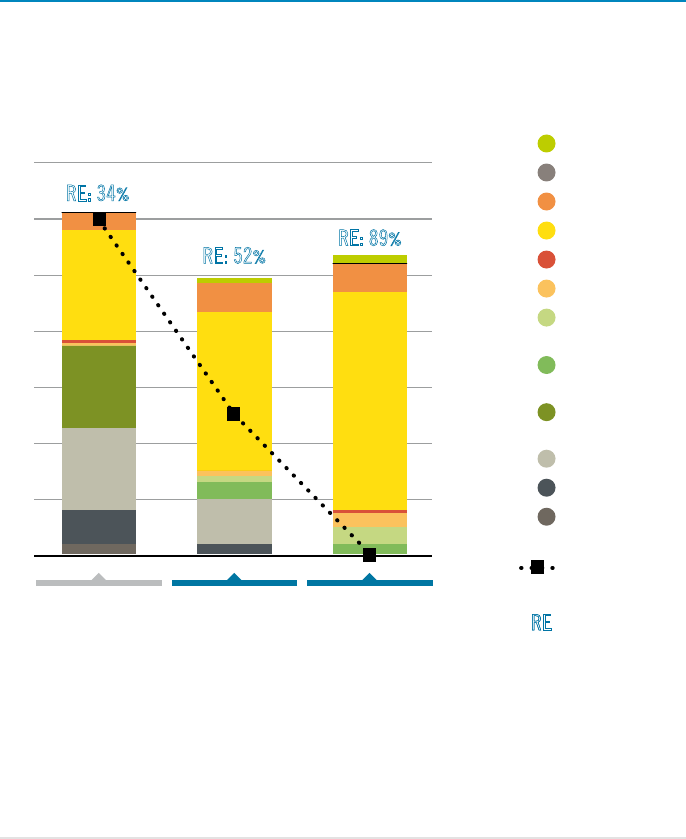
investment will be challenging, since most benefits are felt only in the long term. Thus, new financing
schemes and tax regimes are required to incentivise investments.
Direct CO
2
emissions in the buildings sector accounted for 9% (3 Gt) of total energy-related
CO
2
emissions in 2018. The result of this energy transition in the sector is that by 2050, direct CO
2
emissions in the sector would reach zero. The key components that would mitigate almost 2.3 GtCO
2
when comparing the Planned Energy Scenario to the 1.5 °C Scenario are electrification (46%), energy
efficiency improvements (38%), direct use of renewables (15%) and hydrogen for the remainder.
286
WORLD ENERGY
TRANSITIONS OUTLOOK
FIGURE A.5 Total final energy consumption and CO
2
emissions in buildings
0
20
40
60
80
100
120
140
0
0.5
1.0
1.5
2.0
2.5
3.0
3.5
1.5°C Scenario1.5°C Scenario1.5°C Scenario 1.5°C Scenario1.5°C Scenario1.5°C Scenario
2018 2030 2050
Final Consumption (EJ/yr) CO
2
emissions (GtCO
2
/yr)
Hydrogen
Other (non-RE)
District heat
Electricity
Geothermal
Solar thermal
Modern biomass
(biogas/liquid)
Modern biomass
(solid)
Traditional
biomass
Gas
Oil
Coal
CO
2 emissions
(net)
RE: 52%
RE: 89%
RE: 34%
Renewable
energy
RERE

287
ANNEX A
A.3.1 Overview and trends
The buildings sector includes residential, commercial and public buildings. In 2018, buildings
consumed 122 EJ (around one-third of total final energy consumption), with 30% for heating, 24%
for cooking, 20% for water heating, 18% for lighting and other appliances and 8% for cooling. An
important caveat of the building sector’s energy demand is that in some parts of the world (e.g.,
Africa) the sector is dominated by traditional uses of bioenergy, largely for cooking. This form of
consumption makes up around one-quarter of energy demand in the sector globally. Direct use of
fuels for heating is currently the largest consumer of energy in the sector, with more than two-thirds
coming from fossil fuels, mainly natural gas.
Direct CO
2
emissions in the buildings sector account for 9% (3 Gt) of total energy-related CO
2
emissions. However, when including the emissions associated with electricity supply to the sector,
the share of energy-related emissions applicable to building energy consumption rises to around
30%. Renewables make up a large share of energy demand in buildings, at around 40% in 2018.
However, the largest component of that renewable energy consumption is met by traditional uses of
bioenergy for cooking and heat. When traditional uses are excluded, the modern renewable energy
share in buildings is much lower, around 15%. Modern forms of biomass still represent an important
energy source in some countries, providing around 15% of heating demand (around 4 EJ). Overall,
the sector has the largest share of electricity consumption at around one-third, with bioenergy (both
traditional and modern) and natural gas each supplying around one-quarter of energy supply, and
the remainder roughly half oil and half other sources.
Driven by population growth and rising gross domestic product, the total floor area in the
sector is expected to increase 80% over the next 30 years. This is the equivalent of adding the
entire residential building floor area of Germany every year (around 4 billion square metres [m
2
]) for
the next 30 years. Most of this growth will occur in developing and emerging economies. The sector
is becoming more efficient with energy demand growing slower relative to new floor area added,
compared to the past. This lower relative growth of energy demand is the result of a few key drivers:
reduced traditional uses of bioenergy (which results in significant energy efficiency increases, and
therefore energy savings); higher levels of building and appliance efficiency; a shift to electricity for
energy services (which is more efficient) and greater adoption of other renewable sources.
By 2050 the share of renewables in buildings would
ramp up to 89%, from 34% in 2018. Despite an
additional 1 billion new households by 2050, overall
energy consumption in buildings in 2050 would
decline 14% compared to 2018.

TABLE A.4a Buildings: Indicators of progress – status in 2018 and targets for 2030 and 2050
Energy transition strategy and components
Energy
transition
component
Indicators
2018 2030 2050
Implications/Key actions
Historical Where we need to be
(1.5°C Scenario)
Unit
ENERGY
CONSERVATION
AND
EFFICIENCY
• Establish and improve energy
eciency building codes and
standards, including appliances (e.g.,
air conditioners), lighting (e.g., LED
lights) and equipment (e.g., heat
pumps, ecient boilers).
Buildings –
TFEC (EJ)
• Adopt programmes for
retrofitting/renovation
including financing
schemes, and accelerate
the rate of renovations.
Building
renovation
rate
(% of stock
per year)
1 % 2 % 3 %
Smart
meters
(billion
units)
122
EJ
99
EJ
105
EJ
0.13 billion 1 billion 2 billion
ELECTRIFICATION
IN END-USE
SECTORS
(DIRECT)
• Deploy high-eciency heat
pumps for space heat and
for hot water heaters; use
electric hot water and
cooking.
Electricity
share in
buildings
(%)
32 % 56 % 73 %
Heat pump
installations
(million
units)
38 million 142 million 290 million
Heat pumps
installed
capacity*
(GW)
• Accelerate roll-out of smart
meters.
• Promote energy
management for load
flexibility.
760 GW 2800 GW
5800
GW
• Optimise space heating
and cooling and
incorporate highly ecient
electric systems where
possible (e.g., heat pumps).
288
WORLD ENERGY
TRANSITIONS OUTLOOK

Energy
transition
component
Indicators
2018 2030 2050
Implications/Key actions
Historical Where we need to be
(1.5°C Scenario)
Unit
RENEWABLES
(DIRECT USES)
RENEWABLES
(POWER)
• Phase out traditional uses of
biomass and replace them with
ecient and clean cook stoves.
• Promote renewable-based heating
solutions (e.g., solar thermal).
RE based
district heat
generation
(EJ)
29 EJ 8.3 EJ 9.5 EJ
4.2 EJ 7.3 EJ0.4 EJ
Biomass
(incl.
traditional)
(EJ)
1.8 EJ 2.3 EJ 6.2 EJ
Solar thermal
and geothermal
consumption -
heating
(EJ)
• Promote renewable-based
heating solutions (e.g., modern
biomass and heat pumps).
Distributed
storage
(batteries)
(GJ)
• Promote deployment of distributed
energy resources and improve
regulations for “prosumers”.
• Capitalise on smart homes and
digitalisation to enable demand
management.
2 200 GW99 GW3.3 GW
HYDROGEN
AND ITS
DERIVATIVES
• Do not expand gas infrastructure,
but for some existing systems
prepare them for green gas.
Clean
hydrogen-
consumption
(EJ)
3.2 EJ2 EJ0.0 EJ
CO
2
emissions
CO
2
EMISSIONS
• Mandate all new construction
to be low-energy beginning
by 2025 and zero-energy from
2030 onwards.
Direct
(GtCO
2
/yr)
2.9
GtCO
2
/yr
1.2
GtCO
2
/yr
0.0
GtCO
2
/yr
Note: *Estimated assuming unit capacity of 20 kW/unit.
289
ANNEX A

TABLE A.4b Buildings: Energy transition investments
2017-2019 2021-2050 (1.5°C Scenario)
ENERGY EFFICIENCY
Buildings
total (USD
billion/
year)
151 USD billion/year 1089 USD billion/year
139 USD billion/year
963 USD billion/year
RENEWABLES
(DIRECT USES)
32 USD billion/year
SMART METERS
22 USD billion/year
HEAT PUMPS
2 USD billion/year
7 USD billion/year
72 USD billion/year
290
WORLD ENERGY
TRANSITIONS OUTLOOK
A.3.2 Transitioning towards decarbonisation
Buildings will be central to the energy transition by offering opportunities for energy efficiency
improvements, being a site for energy production through distributed energy resources, providing
energy storage to the power system (both with batteries and with electric vehicles) and by allowing
better grid management through electricity demand response. To realise such a transition, several
different energy transition strategies need to be pursued in parallel:
• Energy efficiency is key to enable the 1.5°C Scenario. The energy intensity of the buildings
sector, which measures the amount of energy consumed in the sector based on floor area, will
decline by half by 2050. This is driven by the requirement that all new building construction
will need to be low energy starting in 2025 and zero energy beginning in 2030. Meanwhile,
for existing buildings the rate of renovation will need to triple, to 3% of the building stock per
year– a significant increase over the historical average of just around 1% per year. Space heating
energy demand decreases by about half in the 1.5°C Scenario, driven by improved efficiency and
significant adoption of forms of electric heat such as heat pumps. In Europe, which has some of
the world’s most stringent building requirements and numerous renovation programmes, around
75% of the existing building stock is still not energy efficient. In this context, an initiative called the
“renovation wave” aimed at accelerating the rate of renovation as part of the European Green Deal
was introduced in 2020 (EC, 2020).

291
ANNEX A
• Electrification will continue to play a critical role in the buildings sector. Electricity is already
the single-largest energy carrier in the sector, making up 32% in 2018, and this share will rise to
73% in 2050 in the 1.5°C Scenario. This is equivalent to 21 300 terawatt hours by 2050, a doubling
of electricity demand in the sector. Driving this increase is not just the wider adoption of electric
appliances, but significant electrification of heat, growth in cooling demand and electric cooking.
• In a future renewable energy system, power-to-heat will shape a significant portion of the
heating sector. Heat pumps achieve rates of energy efficiency two to five times higher than fossil-
fuelled boilers and can be powered by renewable electricity. Under the 1.5°C Scenario, heat pumps will
play a critical role, as their number increases from around 38 million in 2018 to around 290 million by
2050. This implies the need for 8.5 million new units to be installed every year for next three decades.
• Electricity demand for appliances and lighting will increase 40% by 2050 in the 1.5°C
Scenario. Growth is slowed due to higher appliance efficiency and includes widespread use
of smart home systems with advanced controls for lighting and better appliance management
(and separately for heating and cooling). Buildings would also be an important source of load
management and flexibility to the grids, with load shifting enabled by widespread use of smart
home appliances and smart meters (of which more than 2 billion are installed by 2050). Meanwhile,
stationary storage will increase from just 3 GW today to over 2 200 GW by 2050, often built-in
combination with distributed energy supply such as solar PV.
• Heating water with electricity needs to become even more common. Electric water heating
consumes around 3 EJ of electricity today and is a trend that is accelerating, in particular for
systems that provide instantaneous, or tankless, hot water or systems that use heat pump
water heaters. Electric resistance water heating can play a limited yet important role in specific
applications where alternatives, notably heat pump water heaters, are not available. In the 1.5°C
Scenario electricity use for water heating is accelerated, rising 3.5 times. This shift is achieved by
the ease of installation when switching from a fuel-based boiler to an electric boiler.
The direct use of renewables in buildings would grow substantially.
• Solar thermal systems would see significant growth and play an important role in some
regions. Small-scale solar systems are in wide use for domestic hot water and for heating
buildings in temperate climates, and for some other limited applications requiring temperatures
of less than 100°C
1
(Pauschinger, 2016). Large-scale systems are especially suited for integration
with district heating networks due to economies of scale. For example, a centralised 15 megawatt
solar district heating plant inaugurated in 2019 in Salaspils, Latvia, will meet about 20% of the
annual heat demand from the system, with the rest being supplied by a 3 megawatt biomass
boiler; a smaller-scale example consists of the 600 m
2
roof-mounted solar collectors at Wits
University Junction residence in Johannesburg, South Africa (IRENA, 2020c). In 2019, around
690millionm
2
of solar thermal collector area was in place. In the 1.5°C Scenario solar thermal systems
increase considerably, with collector area rising from 690millionm
2
to some 3 000millionm
2
.
This is large growth, but solar thermal hot water systems are mature technologies that are reliable
and cost-effective in places with higher solar irradiance. Even in areas with a less-than-ideal solar
resource, these systems can be built and backed up by an electric boiler.
1 Solar thermal consists of capturing solar radiation to produce heat.

292
WORLD ENERGY
TRANSITIONS OUTLOOK
• Inefficient heating and cooking practices must be replaced with clean, efficient, modern
systems. There are two primary ways of using modern biomass in the buildings sector: for space
heating and for cooking. Buildings can be heated using modern biomass through town-scale
district heating systems or building-scale furnaces, both of which use feedstocks such as wood
chips and pellets very efficiently. Traditionally, biomass has been used for heating and cooking
in open fireplaces or stoves, and today modern biomass is being used in efficient boilers and
furnaces and improved cook stoves. However, more than 2 billion people still rely on inefficient
traditional use of biomass, such as fuelwood and charcoal, for cooking. Inefficient traditional
cook stoves paired with solid fuels and kerosene emit indoor smoke that imperils the health of
mainly women and children and causes nearly 4 million premature deaths every year. The largest
share of biomass consumption in the buildings sector in 2017 was in Sub-Saharan Africa at 91%
(entirely in the form of traditional uses).
These detrimental cooking practices must be replaced with clean, efficient, modern systems that
use improved cook stoves fuelled with sustainably produced bioenergy such as wood, biogas or
ethanol (IRENA, 2020d). Traditional uses of biomass in cooking must be phased out in the next
decade and be replaced with modern fuels and improved and modern cook stoves. Cooking is
significantly transformed in the 1.5°C Energy Scenario, due in part to the complete phase-out
of traditional uses of bioenergy. Demand is further reduced to 10 EJ by 2050, a result of this
modern fuel switch but also significant and widespread electrification of cooking. Around 85%
of cooking needs are met through electricity; the remainder is largely supplied via biomethane.
The transformation will need to go hand in hand with enabling stable electricity access for the
entire population.
• Greening the gas grid will be necessary, and hydrogen and biomethane will play the
predominant role. The use of natural gas use for water and space heating in the buildings sector
would decline to zero by 2050 due to widescale shift electrification, energy-saving renovations
in old buildings and more energy-efficient new buildings, as well as hydrogen and biomethane
taking over natural gas’s role. For the latter, it is foreseen that this will be achieved by gradually
increasing the levels of hydrogen and biomethane blended with natural gas and using the existing
gas grid to deliver the green gases. Gas systems still remain and represent around 8% of sector
energy and can be utilised if their gas is “greened”.
For this, a combination of 70% biomethane and 30% zero-carbon hydrogen is deployed. Demand
for district heat also rises 60%, as people become more urbanised. In Germany, the gas grid is
undergoing a 10-year, EUR 7 billion (USD 7.8 billion) renovation to switch 30% of its customers
from natural gas with lower methane content (L-gas) to gas with higher methane and higher
calorific content (H-gas). This is due to the decline in supplies of L-gas. Although this seems
like a minor shift compared to adding hydrogen into natural gas, it comes at a significant cost
(IRENA, 2019).

293
ANNEX A
Overall, the 1.5°C Scenario sees a significant change in the buildings sector. Energy demand will
decline around 14% to 105 EJ despite the growth in overall floor area. Several factors are attributed
to this drop in demand: a large one is the phase-out of traditional uses of bioenergy, followed by
significantly greater energy efficiency improvements reducing building sector energy intensity 50%
from 2018 levels, and also electrification measures. The mix for energy services will also change,
with 26% consumed for heating, 10% for cooking, 27% for lighting and other appliances, 21% for
cooling and 17% for water heating – the largest increases are found in energy demand for cooling
and appliances/lighting.
Space cooling demand increases the most of any energy service in buildings, with demand tripling.
Due to increases in building envelope and cooling system efficiency, energy demand for cooling
will still more than double by 2050, from 9 EJ to around 21 EJ by 2050. Overall, around 2.4 billion
air conditioner units will be in operation by 2050, an increase from 0.9 billion today. District cooling
grows to around 1 EJ by 2050, providing around 5% of cooling demand. Demand for district heat also
rises 60%, as people become more urbanised. To supply this heat from carbon-free sources, several
routes will need to be taken, from large electric boilers and electric heat pumps to municipal solid
waste and bioenergy.
Coupling heating systems with thermal and seasonal storage offers important flexibility in demand
in regions where winters are particularly harsh. For example, the Drake Landing Solar Community
in Canada is using a long-term thermal energy storage system to store heat from solar collectors
during summer to be used for space heating during winter. In coupling the power and thermal sector,
Siemens-Gamesa is testing a thermal energy storage system that uses wind power to produce heat,
which is stored in over 1 000 tonnes of rock. This system provides a thermal storage capacity of
130 megawatt hours of electric energy at rated charging temperatures of 750°C. IRENA estimates
that around 234 gigawatt hours of thermal energy storage
2
is present across the globe, a crucial
enabler of reliable, secure and flexible energy systems (IRENA, 2020c).
In the 1.5°C Scenario widespread innovation will be necessary. New technologies, materials, design
and business models for net zero buildings’ construction will be required. Smart energy management
systems in buildings and digitalisation (the Internet of Things) will change how buildings consume
energy and even allow them to start to provide grid services through enhanced demand flexibility.
Increasingly, the sector will be shifting to electric vehicles, meaning that charging can be done
at home. Decentralised energy supply will enable local generation of electricity through solar PV
systems or other decentralised energy systems, and increasingly storage, both electric and thermal,
will be found in buildings. To achieve this shift, enabling regulation and permitting will be required,
as will reducing administrative and bureaucratic barriers. Utilities increasingly will need to reinvent
themselves towards energy services and leverage the new markets related to the information from
the grids.
2 The IRENA (2020c) report “Innovation Outlook: Thermal Energy Storage” discusses the dierent thermal
energy storage technologies and user cases for heating and cooling systems, and projects the development and
innovation needs for the next decades.

294
WORLD ENERGY
TRANSITIONS OUTLOOK
A.3.2 Opportunities for investors
To achieve the transformation envisioned in the buildings sector, USD 34 trillion will need to be
invested in the sector and related infrastructure and supply by 2050. The bulk of investments are
needed in building retrofits, smart home and energy efficiency investments, amounting to just under
USD 1 trillion on average invested per year, or USD 29 trillion over the period to 2050. Investments
to decarbonise energy supply for buildings require over USD 100 billion per year, or around
USD 4 trillion to 2050. Meanwhile, key enabling technologies such as storage and smart meters will
require annual investments of around USD 40 billion per year, or USD 1.2 trillion in total to 2050.
A.3.3. Carbon dioxide emissions
As a result of massive transition in the buildings sector, as outlined in the 1.5°C Scenario, energy-
related CO
2
emissions decline 60% by 2030 and reach zero by 2050. Direct CO
2
emissions in the
buildings sector account for 9% (3 Gt) of total energy-related CO
2
emissions in 2018. The result of
this energy transition is that by 2050, CO
2
emissions in the sector would reach zero. Electrification
measures would be responsible for 46% of total CO
2
reductions in the sector followed by energy
efficiency improvements contributing to 38%, direct use of renewables for 15% and hydrogen for the
remainder.
FIGURE A.6 Emission reductions in buildings in 2050
2050
Where current plans
will take us (PES)
Renewables
Energy conservation
and eciency
Electrification in
end use sectors (direct)
BECCS and other carbon
removal measures
Hydrogen and its
derivatives
CCS and CCU industry
15 %
2 %
46 %
38 %
Buildings
2050
Where we
need to be
(1.5-S)
-2.3
GtCO
2
/yr
-2.3
GtCO
2
/yr
In buildings, the key solution is electrification
contributing close to half of the CO
2
reduction
needed, followed by energy efficiency.

295
REFERENCES
References
|
Annex A
BNEF (2021), Electric Vehicle Outlook 2020, BloombergNEF, London, https://about.bnef.com/
electric-vehicle-outlook.
BNEF (2020), “Battery pack prices cited below $100/kWh for the first time in 2020, while market
average sits at $137/kWh”, BloombergNEF, https://about.bnef.com/blog/battery-pack-prices-
cited-below-100-kwh-for-the-first-time-in-2020-while-market-average-sits-at-137-kwh.
Clean Sky 2 JU and FCH 2 JU (2020), Hydrogen-powered aviation: A fact-based study of hydrogen
technology, economics, and climate impact by 2050, Clean Sky 2 Joint Undertaking and Fuel Cells
and Hydrogen 2 JU, Brussels, www.fch.europa.eu/sites/default/files/FCH%20Docs/20200720_
Hydrogen%20Powered%20Aviation%20report_FINAL%20web.pdf.
Deore. M., R. Kukreja and PN. Koti (2021), “OPINION: Why industrial decarbonization is an
opportunity for India to fight climate change”, Economic Times, https://energy.economictimes.
indiatimes.com/news/power/opinion-why-industrial-decarbonization-is-an-opportunity-for-india-
to-fight-climate-change/82052996.
EC (2020), “Renovation wave”, European Commission, https://ec.europa.eu/energy/topics/
energy-efficiency/energy-efficient-buildings/renovation-wave_en.
Gielen D. and D. Saygin (2018), “Global industrial carbon dioxide emissions mitigation:
Investigation of the role of renewable energy and other technologies until 2060”, Working paper,
Payne Institute for Public Policy, Colorado School of Mines, https://ljp6c3tnea61xd0wz1l33nmf-
wpengine.netdna-ssl.com/wp-content/uploads/sites/149/2018/06/20180613_Gielen_
WorkingPaper_web-1.pdf.
Gielen D., Y. Chen and P. Durrant (2021), “Decarbonising Industry is key to China’s net-zero strategy”,
Energy Post, https://energypost.eu/decarbonising-industry-is-key-to-chinas-net-zero-strategy.
Gnadt, A.R. et al. (2019), “Technical and environmental assessment of all-electric 180-passenger
commercial aircraft”, Progress in Aerospace Sciences, Volume 105, pp. 1-30, https://doi.
org/10.1016/j.paerosci.2018.11.002.
Government of the United Kingdom (2019), Industrial decarbonisation strategy, Crown
Publishing, London, https://assets.publishing.service.gov.uk/government/uploads/system/
uploads/attachment_data/file/970229/Industrial_Decarbonisation_Strategy_March_2021.pdf.
IRENA (2021a), “Leaders summit: The energy transition priorities needed for a 1.5°C future”,
Expert Insights, 25 April 2021, International Renewable Energy Agency, Abu Dhabi, www.irena.org/
newsroom/expertinsights/2021/April/Leaders-Summit-The-Energy-Transition-Priorities-Needed-
for-a-1-5C-Future.
IRENA (2021b), Innovation Outlook: Renewable Methanol, IRENA, Abu Dhabi.
IRENA (2020a), Reaching Zero with Renewables, IRENA, Abu Dhabi.
IRENA (2020b), Green Hydrogen Cost Reduction, IRENA, Abu Dhabi.
IRENA (2020c), Innovation Outlook: Thermal Energy Storage, IRENA, Abu Dhabi.
IRENA (2020d), Renewable Energy Policies in a Time of Transition: Heating and Cooling, IRENA,
Abu Dhabi.
IRENA (2019), Hydrogen: A renewable energy perspective, IRENA, Abu Dhabi.
IRENA (2017), Electricity Storage and Renewables: Costs and Markets to 2030, IRENA, Abu Dhabi.

296
WORLD ENERGY
TRANSITIONS OUTLOOK
Irie, R. (2020), “Global plug-in vehicle sales reached over 3.2 million in 2020”, EV-volumes,
Trollhättan, www.ev-volumes.com.
Moores, S. (2021), The global battery arms race: Lithium-ion battery gigafactories and their
supply chain, Oxford Institute of Energy Studies, Oxford, www.oxfordenergy.org/wpcms/
wp-content/uploads/2021/02/THE-GLOBAL-BATTERY-ARMS-RACE-LITHIUM-ION-BATTERY-
GIGAFACTORIES-AND-THEIR-SUPPLY-CHAIN.pdf.
Pauschinger, T. (2016), “5 - Solar thermal energy for district heating”, in Advanced District Heating
and Cooling (DHC) Systems, R. Wiltshire (ed.), pp. 99-120, Woodhead Publishing, Cambridge,
https://doi.org/10.1016/B978-1-78242-374-4.00005-7.
REN21 (2020), Renewables 2020: Global Status Report, Renewable Energy Policy Network for
the 21st Century Secretariat, Paris. www.ren21.net/wp-content/uploads/2019/05/gsr_2020_full_
report_en.pdf.
Saygin, D. and D. Gielen (2021), “Zero-emission pathway for the global chemical and
petrochemical sector”, Energies, Vol. 14, No. 13, pp. 3772, https://doi.org/10.3390/en14133772.
Schäfer, A.W. et al. (2019), “Technological, economic and environmental prospects of all-electric
aircraft”, Nature Energy, Vol. 4, pp. 160-166, www.nature.com/articles/s41560-018-0294-x.
Trahey, L. et al. (2019), “Energy storage emerging: A perspective from the Joint Center for Energy
Storage Research”, Proceedings from the National Academy of Sciences, Vol. 117, No. 23, pp. 12550-57,
www.pnas.org/content/117/23/12550.

297
Annex B.1 Socio-economic implications of varying
carbon pricing from optimum levels
Modifying the level of carbon pricing from its optimal value- through its contribution to government
fiscal balances - for a given climate goal and climate policy basket may have important socio-
economic implications. Increasing carbon pricing above its optimal value will exacerbate its
regressive effects, triggering negative impacts on welfare and economic activity, potentially
creating transition barriers.
Figure x illustrates the potential consequences of reducing carbon pricing from its optimal value.
Not allowing deficit spending can have:
1. a negative impact on GDP, if governments decide to increase general taxation; and/or
2. a negative impact on welfare and exacerbate inequality and/or create energy transition barriers,
if governments decide to reduce social spending.
Alternatively, deficit spending could increase as has been the case historically in response to crises
(most recently demonstrated by the COVID-19 pandemic). However, given fiscal constraints in the
Global South to address social needs and the demands of the energy transition, it would require
strong international collaboration to marshal the necessary resources.
1
Carbon pricing
Carbon pricing
Social spending
General taxation
Public transition investment
lnequality
Equity & justice
Transition subsidies
Fiscal deficit
lntl. equity finance
Social barriers
Welfare
GDP
Welfare
or
General taxation
Social spending
lnequality
Public transition investment
Transition subsidies
Equity & justice
Fiscal deficit
SOCIO-ECONOMIC FOOTPRINT
ANNEX B
ANNEX B
1 Specially those without monetary sovereignty or with high dependence on foreign exchange rates.
FIGURE B.1 Potential transition implications of sub-optimal carbon pricing
Source: Based on IRENA's analysis

298
Annex B.2 Welfare index methodology
IRENA’s Energy Transition Welfare Index captures five dimensions namely, economic, social,
environmental, distributional, and energy access. This section outlines the indicators comprising
each dimension and discusses the methodology followed for the computation of the welfare index.
Indictors of each welfare dimension
Economic dimension
The economic dimension addresses the contribution form sustainable economic activity to
welfare, and it is informed by two indicators: per capita consumption and investment, and non-
employment.
2
1. Consumption reflects disposable income, and hence can be used as a proxy for increases
in current well-being, whereas investment supports future well-being. Acknowledging
the decreasing marginal returns of consumption to welfare, a logarithmic scale is used, and
a sufficiency limit has been introduced,
3
beyond which additional consumption does not
contribute any further. Likewise, an aspirational goal of minimum consumption has been
introduced to account for poverty lines.
2. Employment, as means for income generation, contributes to the welfare of current and future
generations. The economic dimension of the welfare index includes the non-employment
indicator, which tracks the share of the working age population that is neither employed nor
young and in education.
Social dimension
The social dimension addresses the use of public resources to provide social value and address
externalities faced by society. It uses two indicators: per capita public expenditures aimed to
increase social value; and per capita health impacts from pollution.
1. The per capita social public expenditure includes spending on education, health, and social
welfare, together with transition-related public investment and budgets related to climate
policies. The associated index includes a minimum aspirational goal to acknowledge a basic
contribution from public expenditure to welfare.
2. The health impact indicator is the per capita health costs linked to energy system-related
air pollution (indoors and outdoors), which emphasises the relevance of living in a healthy,
unpolluted environment for people’s well-being.
WORLD ENERGY
TRANSITIONS OUTLOOK
2 The state of not having paid work, excluding young people (age group from 15 to 24 years) getting an education.
Non-employment is hence calculated as the share of the working age population (age group from 15 to 64
years) that is neither employed nor under education while belonging to the 14-24 age group. Non-employment
is used instead of the unemployment or employment metrics because its more comprehensive gauging of the
social implications of paid work, which is the main goal of a welfare index. Indeed, while unemployment and
employment are evaluated as shares of the labour force, non-employment is defined on the basis of the whole
working age population (not only the part of it belonging to the labour force), and hence beyond the short-term
lack of paid work also captures the long-term lack of paid work (which is excluded from the labour force).
3 It should be noted that countries/regions exceeding this suciency limit are not penalised in terms of the
welfare index. They just reach the maximum value (100%) of the corresponding indicator’s index.

299
Environmental dimension
The environmental dimension addresses the sustainability of socio-economic activity within
planetary boundaries. It is informed by two indicators: climate change and the use of natural
resources.
1. The impacts from climate change on welfare are captured by vulnerability adjusted cumulative
4
CO
2
emissions.
5
The vulnerability adjustment acknowledges that countries and regions differ
both by multi-sectoral propensity to be negatively impacted by climate change (exposure,
sensitivity, adaptive capacity) and their readiness for adaptation (across all economic,
governance and social dimensions).
2. The resource use indicator is per capita materials consumption
6
(excluding fossil fuels) and
includes a developmental allowance
7
linked to the planetary sustainability boundary.
Distributional dimension
Distributional aspects, receive increasing public attention, and are bound to play an important
role in the transition, either as barriers or enablers. To gain insights into the transition dynamics
affecting inequality and how policy frameworks can address these, IRENA has included a
distributional dimension in its welfare index.
The distributional dimension has two indicators:
1. Within countries/regions (intra) inequality.
2. Between countries/regions (inter) inequality.
Both income and wealth inequality are tracked. Each one of the indexes associated to these
indicators is constructed as the arithmetic average of income and wealth inequality indexes. The
indicator used is the quintile ratio: the ratio of income/wealth from the highest quintile (20% of
population) to the income/wealth from the lowest quintile (20% of population) of the income/
wealth distributions.
The inter-distributional index (between countries) is common for all countries/regions, while the
intra-distributional index (within countries/regions) is specific to each country/region. In the case
of global results, the intra distributional indicator corresponds to the distribution of global citizens.
ANNEX B
4 Cumulative emissions are evaluated from 2021 to 2050 (the scenarios time span)
5 Includes all CO
2
emissions (energy-related, industrial process and LULUCF)
6 Currently evaluated as Domestic Material Consumption (DMC).
7 Such that if the per capita materials consumption is lower than this allowance the Index is 100% and hence the
materials consumption does not negatively impact the IRENA's Energy Transition Welfare Index.
8 Access to clean cooking is used here as a proxy to overall energy access.

300
Access dimension
The access dimension addresses energy access and provides the visibility needed to track progress
in this fundamental dimension, which if not specifically addressed is often overlooked.
The access dimension has two indicators: share of population without basic energy access; and
progress along the energy access ladder.
1. The index associated to the share of population without energy access includes the aspirational
goal of reaching full basic energy access.
2 The indicator used to measure progress along the energy access ladder
9
is per capita total final
energy consumption. The index introduces a sufficiency limit, such that once per capita total
final energy consumption reaches this sufficiency limit, the index achieves a maximal value of 1.
In order to capture the effect of energy efficiency improvements over time, the sufficiency limit
includes an efficiency modulation factor that adjusts it with time.
Methodology for welfare index computation
Welfare index indicators are normalised into indicator indexes using goalposts and include a
directional parameter that aligns indicator index with welfare impact. Hence, indicator indexes
are all bounded by zero and one, and increasing index values have positive impacts on welfare
10
.
Sufficiency thresholds, thresholds on bad performance, minimum aspirational goals and
development allowances are included into the indicator indices’ formulation.
The combination of indicators into dimensional indexes and that of dimensional indexes into the
welfare index uses a modified geometric mean to limit substitutability while addressing zeroing
and masking effects.
Several criteria have been applied for choosing goalposts:
a) Invariance across simulations/analyses: In this case, the MAX and MIN are chosen to remain
invariant across simulations, and hence results from different simulations can be compared. This
could lead to the indexes series for a given analysis, while being within in the {0,1} range, not
occupying this range completely.
WORLD ENERGY
TRANSITIONS OUTLOOK
8 Access to clean cooking is used here as a proxy to overall energy access.
9 Energy poverty is partly addressed by this indicator and complemented by the distributional dimension.
10 To illustrate, decreasing emissions would contribute positively to welfare as would increasing energy access.

301
b) Introducing sufficiency conditions. This applies to the MAX of an indicator that when increasing
improves welfare and acknowledges the fact that beyond a certain value further increases
from this indicator does not improve the considered welfare dimension. An example is in the
energy access dimension for the indicator showing progress through the access ladder: beyond
the sufficiency level, access has been achieved and the indicator does not improve further.
11
Application of the sufficiency criteria requires modifying the index formulation by capping the
indicator at MAX.
12
c) Introducing a threshold on bad performance. This applies to the MAX of an indicator that
when increasing reduces welfare and introduces a bad performance threshold from where a
zero value for the index is obtained. In that way the index does not capture further welfare
implications of bad performance beyond the threshold, but it better captures the differences
between countries performing below the threshold. An example is wealth inequality when
measured through a quintile ratio, where in some regions is so high (infinity) that without
introducing the threshold would completely dilute the index in all other countries/regions. This
applies also to other indicators such as material consumption too high compared with planetary
boundary and health impacts too high for social acceptability.
d) Introducing a minimum aspirational goal. This applies to the MIN of an indicator that when
increasing improves welfare. When the indicator falls below the MIN, the index becomes zero
(not achieving minimum aspirational goal in this dimension). An example is when consumption
and investment falls below the poverty line. Application of the minimum aspirational goal
requires modifying the index formulation by limiting the lower value of the indicator to MIN :
e) Introducing a development allowance. This applies to the MIN of an indicator that when
increasing reduces welfare, but there is a threshold below which it could maintain sustainable
economic activity. An example is materials consumption. If kept enough below a sustainable
limit, it can be used for increasing welfare and hence should not penalise the welfare index.
Application of the development allowance requires modifying the index formulation by limiting
the lower value of the indicator to MIN:
14
ANNEX B
11 Countries are not penalised for going beyond this suciency limit, but no additional credit is provided in the
concerned welfare dimension (index at its maximum value of I=1).
12 Note that for all indexes MAX acts as a cap for the Indicator (avoiding indexes outside the 0 – 1 range). The
dierence here is that MAX is intentionally set to a value lower than the expected maximum in the indicator’s
series range.
13 Note that for all indexes MIN acts as a lower limit for the indicator (avoiding indexes outside the 0 – 1 range). The
dierence here is that MIN is intentionally set to a value higher than the expected minimum in the indicator’s
series range.
14 Note that for all indexes MIN acts as a lower limit for the indicator (avoiding indexes outside the 0 – 1 range). The
dierence here is that MIN is intentionally set to a value higher than the expected minimum in the indicator’s
series range.

302
Indicator’s goalposts
Table B.1 presents the goalposts’ used for each indicator. The table also indicates whether an upper
or lower limit to the possible range has been imposed because of sufficiency, threshold on bad
performance, aspirational goal or development allowance.
WORLD ENERGY
TRANSITIONS OUTLOOK
15 Cumulative until 2050.
16 The quintile ratio (QR), as the ratio from the highet quintile to that of the lowest quintile, is the indicator used to measure
distributional aspects. The indicator is applied to income distribution (IQR) and to wealth distribution (WQR).
17 The MAX in this indicator is also aected by an eciency modulation function which captures the eect of improving eciency
with time.
TABLE B.1 Goalposts for the indicators in IRENA’s Energy Transition Welfare Index
DIMENSION INDICATOR UNITS MIN MAX UPPER
LIMIT
LOWER
LIMIT
DIR.
Economic Consumption and
Investment
USD/
person-year
700 45 000 Yes Yes 0
Non-Employment % 0 70 - -
1
Social Social expenditure USD/
person-year
150
30 000 - Yes 0
Health Impact USD/
person-year
0 1
000 Yes - 1
Environmental CO
2
emissions
15
GtCO
2
0 2361 - - 1
Materials
consumption
Tones/
person-year
2.5 12.5 Yes Yes 1
Distributional
16
Within country/
region
- 1 80 – IQR
160 – WQR
Yes
- 1
Between countries
- 1
20 – IQR
40 – WQR
Yes
- 1
Access Share of population
without access
% 0 100% - - 1
Progress in access
ladder
17
kWh/p-d
0
20 Yes
- 0
Based on IRENA's analysis

303
Producing dimensional and overall welfare index
Combining indicator’s indices to produce a dimensional index, or dimensional indices to produce
the welfare index, requires a methodology to average the different indices.
IRENA’s Energy Transition Welfare Index methodology uses arithmetic or geometric averaging
depending on whether full substitutability between the indices being averaged is considered
appropriate or not for the purpose of measuring overall welfare. Except for the case of combining
income and wealth inequality in the distributional dimension, all other averaging uses a geometric
mean
18
to limit substitutability between different indices.
19
However, the geometric mean presents two inconvenient characteristics for the welfare index:
• Zeroing effect: when one or more dimensional indexes are zero, the geometric mean becomes
zero.
• Masking effect: very low values in one or more dimensions produce a very low geometric mean,
masking the evolution in the other dimensions.
IRENA's welfare index uses a modified geometric mean that addresses the zeroing and masking
effects.
ANNEX B
18 Besides the reduced substitutability, the geometric mean oers other advantages to the welfare index: Ensures
that a 1% decline in the index in any dimension has the same impact on the IRENA's Energy Transition Welfare
Index; Suciency components become neutral once the suciency threshold has been achieved; It is the only
mean for which the mean of a quotient is the quotients of the means, and hence the ranking of the results is
independent on what is used as a reference.
19 Low achievement in one index/dimension is not linearly compensated for by a higher achievement in another
index/dimension.

304
Annex B.3 Data tables
Employment
WORLD ENERGY
TRANSITIONS OUTLOOK
2021
20
2030 2050
Energy sector absolute million jobs 91.0 136.5 121.8
difference with
PES
million jobs - 25.8 8.0
relative - 23.3% 7.0%
Transition-
related
absolute million jobs 52.5 106.5 95.8
difference with
PES
million jobs - 39.8 28.3
relative - 59.6% 42.0%
Fossil fuels absolute million jobs 37.9 29.4 25.8
difference with
PES
million jobs - -13.9 -20.0
relative - -32.1% -43.7%
20 2021 estimates are obtained through a calibrated macroeconomic model based on investments associated
with the PES scenario. It should be noted that the jobs reported here for the energy sector go beyond the
traditional categories for this sector (fossil fuels, electricity generation, bioenergy) and besides nuclear, also
include energy eciency, energy flexibility, power grids, hydrogen value-chain, and heat pumps-related jobs.
TABLE B.2 Energy sector jobs for the 1.5°C Scenario and dierences with PES over
time, global results.

305
Employment
ANNEX B
2021 2030 2050
Solar absolute million jobs 5.52 17.32 19.90
difference with
PES
million jobs - 10.01 9.64
relative - 137% 94%
Bioenergy absolute million jobs 5.34 11.11 13.67
difference with
PES
million jobs - 6.02 7.72
relative - 118% 130%
Wind absolute million jobs 1.98 5.57 5.48
difference with
PES
million jobs - 3.05 2.11
relative - 121% 62%
Hydro absolute million jobs 3.52 3.32 3.70
difference with
PES
million jobs - 0.42 1.05
relative - 14% 40%
Geothermal absolute million jobs 0.14 0.30 0.23
difference with
PES
million jobs - 0.12 0.02
relative - 72% 7%
Tidal/Wave absolute million jobs 0.002 0.18 0.37
difference with
PES
million jobs - 0.18 0.31
relative -
7 907% 472%
TABLE B.3 Renewable energy jobs by technology in the 1.5°C Scenario and
dierences with the PES, global results.
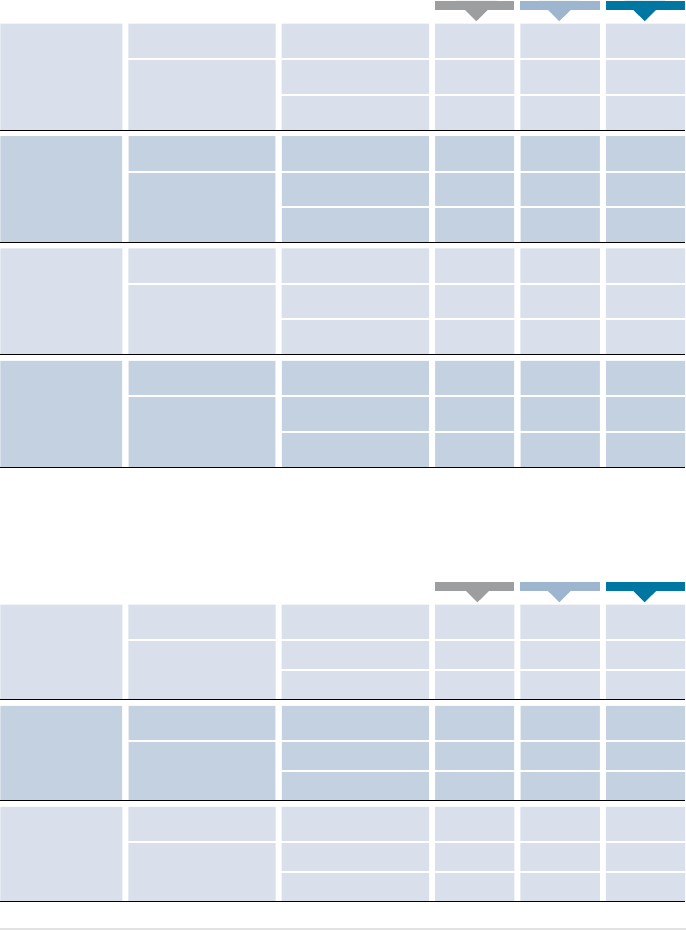
306
Employment
WORLD ENERGY
TRANSITIONS OUTLOOK
2021 2030 2050
Construction &
Installation
absolute million jobs 4.5 12.0 14.2
difference with
PES
million jobs - 6.7 5.1
relative - 126% 57%
Manufacturing absolute million jobs 4.3 11.0 8.7
difference with
PES
million jobs - 6.2 5.6
relative - 131% 178%
O&M absolute million jobs 3.1 5.4 9.3
difference with
PES
million jobs - 1.5 3.0
relative - 38% 48%
Biofuel supply absolute million jobs 4.6 9.4 11.2
difference with
PES
million jobs - 5.4 7.1
relative - 135% 176%
2021 2030 2050
Primary absolute
million jobs 24.1 47.3 60.7
difference with
PES
million jobs - 8.4 1.0
relative - 22% 2%
Secondary absolute
million jobs 37.8 34.8 44.8
difference with
PES
million jobs - 8.6 4.8
relative - 33% 12%
Tertiary absolute
million jobs 29.1 54.5 16.2
difference with
PES
million jobs - 8.8 2.2
relative - 19% 16%
TABLE B.4 Renewable energy jobs by segment of value chain in the 1.5°C Scenario
and dierences with the PES, global results.
TABLE B.5
Energy sector jobs by educational requirement in the 1.5°C Scenario and
dierences with the PES, global results.

307
Welfare
ANNEX B
DIMENSION 2030 2050 COMMENT
PES
INDEX
1.5-S
INDEX
DIFFER-
ENTIAL
PES
INDEX
1.5-S
INDEX
DIFFER-
ENTIAL
Economic 0.642 0.645 +0.4% 0.655 0.656 +0.2% Small improvement aligned with
improvements of 1.5-S over PES in
GDP and employment.
Social 0.153 0.187 +23% 0.218 0.268 +23% Through improved public health,
makes a significant contribution
to the increase from PES to
1.5-S, but remains low and hence
provides significant potential for
improving the overall welfare
index.
Environ-
mental
0.547 0.711 +30% 0.474 0.614 +30% Mainly driven by the mitigation of
CO
2
emissions.
Distribution 0.018 0.052 +186% 0.157
0.154
-2% Low index values in both PES
and 1.5-S reflect the persistence
of high inequalities irrespective
of changes to the global energy
landscape.
Access 0.857 1 +17% 0.934 1 +7% Both scenarios above sufficiency
limit, but PES still without full
basic energy access by 2050.
Welfare 0.253 0.344 +36% 0.399
0.442
+11% Improvements in welfare index
(1.5-S over PES) are higher than
for GDP or employment. But low
index values indicate room for
improvement in welfare.
TABLE B.6 Welfare and dimensional indexes for 1.5-S and PES, as well as the relative
dierence between both, for 2030 and 2050, global results.

308
Welfare
WORLD ENERGY
TRANSITIONS OUTLOOK
INDICATOR 2030 2050 COMMENT
PES
INDEX
1.5-S
INDEX
DIFFER-
ENTIAL
PES
INDEX
1.5-S
INDEX
DIFFER-
ENTIAL
Consumption
and
Investment
0.645 0.643 -0.3% 0.767 0.767 0% Almost neutral role because
of 1.5-S policy to earmark
revenues for transition-related
government spending.
Per capita consumption and
investment increases over time in
both scenarios, almost doubling
per-capita value.
Non-
employment
0.639 0.647 +1% 0.559 0.561 +0.4% Positive impact of the transition
on non-employment.
Non-employment increases
over time in both scenarios.
Economic
Index
0.642 0.645 +0.4% 0.655 0.656 +0.2% Improvement of 1.5-S over
PES mainly driven by non-
employment improvements.
Index reaches a minimum value
around 2030, consequence of
the balance in trends from its
two indicators.
TABLE B.7 Economic index and its indicator’s indexes for 1.5°C Scenario and PES,
for 2030 and 2050, global results.

309
Welfare
ANNEX B
INDICATOR 2030 2050 COMMENT
PES
INDEX
1.5-S
INDEX
DIFFER-
ENTIAL
PES
INDEX
1.5-S
INDEX
DIFFER-
ENTIAL
Social
expenditure
0.047 0.051 +9% 0.081 0.085 4% Social spending improves over
time in both scenarios, almost
doubling in per-capita terms.
However, the social spending
index value remains very low.
Hence, there is significant room
to improve the welfare index by
increasing social spending.
Health
impact
0.483 0.669 +39% 0.571 0.827 +45% Health impacts reduce over time
in both scenarios, but at a much
higher rate in the 1.5-S reflecting
the huge benefits that the
energy transition brings about by
eliminating outdoor and indoor
air pollution.
Under the PES, by 2050, global
average health impacts still
amount to a staggering 2019
USD 430/person-year.
Social Index 0.154 0.189 +23% 0.218 0.268 +23% Improves over time for both
scenarios.
The low index value is
consequence of low social
spending.
TABLE B.8 Social index and its indicators’ indexes for 1.5°C Scenario and PES,
for 2030 and 2050, global results.

310
Welfare
WORLD ENERGY
TRANSITIONS OUTLOOK
INDICATOR 2030 2050 COMMENT
PES
INDEX
1.5-S
INDEX
DIFFER-
ENTIAL
PES
INDEX
1.5-S
INDEX
DIFFER-
ENTIAL
CO
2
emissions 0.446 0.754 +69% 0.446 0.754 +69% Constant over time because the
scenario’s cumulative emissions
is the indicator impacting
climate change.
Strong improvement of 1.5-S
over PES because of ambitious
mitigation effort.
Materials
consumption
0.671 0.671 0% 0.504 0.501 -0.6% Materials consumption
increasing for both scenarios
due to increasing aggregated
economic activity.
During the first decade, the
GDP stimulus in 1.5-S leads to
higher material consumption
than PES.
Environmental
Index
0.547 0.711 +30% 0.474 0.614 +30% The index deteriorates
over time consequence of
the increase in materials
consumption.
The positive improvement of
1.5-S over PES is dominated by
the mitigation of CO
2
emissions.
TABLE B.9 Environmental index and its indicators’ indexes for 1.5°C Scenario and PES,
for 2030 and 2050, global results.

311
Welfare
ANNEX B
INDICATOR AVERAGE 2021 - 2050 COMMENT
PES
INDEX
1.5-S
INDEX
DIFFER-
ENTIAL
Intra-inequality 0.123 0.176 +44% The index improves over time. The wealth component
drags the index down, attenuating the improvements in
income.
Lump-sum payments play a significant role in the 1.5-S
over PES difference.
Inter-inequality 0.076 0.091 +20% The index improves over time, with both its wealth and
income components contributing to this.
International cooperation plays a role in the
improvement of 1.5-S over PES, more strongly felt
during the first decade.
Distributional
Index
0.088 0.121 +37% High improvement of 1.5-S over PES, consequence of
the introduced policy elements addressing inequality.
But index values are very low, indicating a huge room
to improve welfare by strengthening policy action
addressed at improving the distributional dimension.
TABLE B.10 Distributional index and its indicators’ indexes for 1.5°C Scenario and PES,
average 2021-2050, global results.
INDICATOR 2030 2050 COMMENT
PES
INDEX
1.5-S
INDEX
DIFFER-
ENTIAL
PES
INDEX
1.5-S
INDEX
DIFFER-
ENTIAL
Basic access 0.735 1 +36% 0.873 1 +15% The 1.5S reaches universal basic
access by 2030, while the PES is
not there even by 2050.
Energy
sufficiency
1 1 0% 1 1 0% Globally, both scenarios are
above the sufficiency limit.
But this average hide energy
inequalities between countries.
Access index 0.857 1 +17% 0.934 1 +7% Index improves over time
for both scenarios, driven by
progress in universal basic
access.
TABLE B.11 Access index indicator’s contributions for 1.5S and PES by 2050, global results.

ISBN 978-92-9260-334-2
Copyright © IRENA 2021
www.irena.org
